


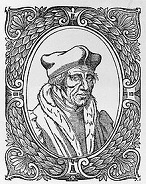











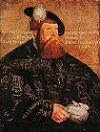

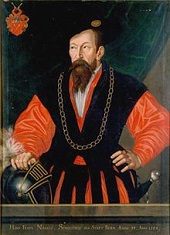


















TLW's Protestantscope™ (Protestant Historyscope) |
By T.L. Winslow (TLW), the Historyscoper™ |
© Copyright by T.L. Winslow. All Rights Reserved. |
Original Pub. Date: Oct. 20, 2016. Last Update: Sept. 29, 2020. |










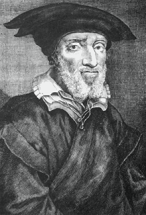
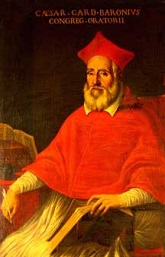

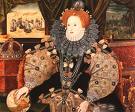




Westerners are not only known as history ignoramuses, but double dumbass history ignoramuses when it comes to Protestantism history, incl. the Protestant Reformation. Since I'm the one-and-only Historyscoper (tm), let me quickly bring you up to speed before you dive into my Master Historyscope.



30-40 Sorry, historyscopers, but? --it happens in the Roman province of Judea; nobody knows for sure, and it depends on whom you want to believe; a riddle wrapped in a mystery inside an enigma, the greatest coverup in history; the Great Track of Time enters not only a Dark Alley but a Black Hole, becoming an endless source of powerful fiction claiming to be fact, with the dividing line very hazy until centuries later - oh my gosh, I smell an Emmy? While visiting the Jewish Temple in Jerusalem, Jesus made a point of attacking the moneychangers (Mt. 21:12, Mk. 11:15, John 2:14-15), I wonder why?


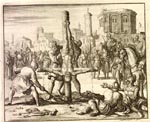
Allegedly the first pope (30-67) was Simon Peter, AKA St. Peter (-1 to 67), a Galilean fisherman recruited by Jesus Christ along with James and John near Capernaum at the Sea of Galilee (Matt. 4:18-22; Mark 1:16-20; Luke 5:1-11). After allegedly being given the Keys to the Kingdom of Heaven (forming the basis of all later claims to papal authority) by Jesus, he was crucified upside-down at his own request, grab your bag it's on. "Behold he received the keys of the Kingdom of Heaven, the power of binding and loosing is committed to him, the care of the whole Church, and its government is given to him." Way later St. Peter's Basilica in Rome (largest Christian church in holding capacity, 60K) was built in the shape of a key.




We come to the big year 325 C.E., the Tribus Unum (From Three, One) Year, which starts off with a shoe-banging Khrushchev type at the Catholic U.N. General Assembly, and turns into the biggest year in the history of Church doctrine. In 325 C.E. after trying in vain to get the warring parties to rise above their bitter Athanasius-Arius (Trinitarian-Unitarian) Controversy over the pre-existence of Christ and the Trinity (ultimately a theological dispute over homoousion vs. heterousion) (a purely Greek thang, which the Latins yawned off?) (an attempt to define levels in the godhead, a partial return to paganism?) (a mainly Egyptian thang, which softened Egypt up for Islam?) by citing the example of the wise Greek philosophers in a Letter to the Catholic Hotheads, Roman Emperor (306-37) Constantine I the Great (272-337), with the official title of pontifex maximus (maximum bridge-builder for the people to God and therefore equal to the apostles, giving him the right) convokes the first ecumenical (universal) (authority second only to Scripture) First Nicene Council (First Council of Nicaea) in Nicaea (modern-day Iznik) in Bithynia (NW Asia across the Bosporus Straits from his under-construction city of New Rome AKA Constantinople) on May 20-June 19, with the #1 goal of establishing the authority of bishops (as long as they are on the govt. dole and call the emperor boss?), presided over by his favorite (pro-Trinity) bishop Hosius (Osius) (Ossius) of Cordova (256-359) to decide the issue, with the Trinity side championed by archdeacon Athanasius (296-373) of Alexandria, and the anti-Trinity side by way older and higher-ranking presbyter Arius (250-336) of Alexandria, and Eusebius of Nicomedia (-341); James of Nisibis and a bishop from Persia attend; only about one-third (318) of the episcopoi (bishops) in the Roman Empire show up, with the attendants and servants beefing up the assembly to 1.5K-2K, which is conducted in Greek and presided over by the emperor, complete with his Roman bodyguard (although he is not a baptized Christian yet); the Church only sends seven official delegates, incl. two presbyters representing the bishop of Rome (pope); the debate goes on for 2 mo., with Arius uttering the immortal soundbyte: "The Son of God was a creature, made from nothing; there was a time when he had no existence; he was capable of his own free will of right and wrong; were he in the truest sense a son, he must have come after the Father, therefore the time obviously was when he was not, and hence he was a finite being", causing many to stick their fingers in their ears and run out, while St. Nicholas of Myra (270-346) hits him in the kisser; Eustathius the Great of Antioch (270-360) gives a great anti-Arian speech; finally Osius gets big-fish-in-a-small-pond layman (still really pagan and faking it?) Constantine in a back room and talks him into backing the T-side, and Der Fuhrer publicly announces that the bishops are free to vote any way their conscience dictates, only face deposition and exile to the butthole of the empire if they vote Arian; no surprise, Arius and his "Ariomanites" (Arians) are condemned by a 316-2 vote, which incl. 15 flip-flopping Arians, and 100+ Semi-Arians (who believe in a "similar" substance, homoiousion, and slide by for the time being under the don't-ask-don't tell policy?); there is actually no official vote, only a document called the Nicene Creed, the first official test of Christian orthodoxy, which makes the Trinity (Consubstantialism) (Homoousion) an official article of faith for good Roman Catholics, and which all bishops must sign or else pack their toothbrush and lose their official govt. position and income and face exile; as there is no Holy Inquisition, Arians aren't burned at the stake but allowed to run loose making converts, incl. Constantine's son and future emperor Constantius II, further fragmenting into 18 different flavors; for not signing the Nicene Creed, Arius and Eusebius of Nicomedia are exiled to a remote province of Illyricum (Illyria), and labeled as Porphyrians, their writings burned, and a death penalty proclaimed for possessing them; meanwhile Constantine's favorite sister secretly supports the Arians and works on his mind, eventually turning him into an Arian; after the council ends, Constantine issues a Letter to the Churches, declaring that all churches are to observe Easter as well as the sabbath on his pet pagan Sunday; the Quartodecimans (14th Day Christians) (observing Easter on the Jewish Passover of Nisan 14, citing Leviticus 23:5) are declared heretical, and their numbers begin to decline; the Council pub. the soundbyte: "For it is unbecoming beyond measure that on this holiest of festivals we should follow the customs of the Jews. Henceforth let us have nothing in common with this odious people... We ought not, therefore, to have anything in common with the Jews... We desire our dearest brethren to separate ourselves from the detestable company of the Jews. How, then, could we follow these Jews, who are almost certainly blinded?"; Canon 17 of the council forbids the clergy from engaging in usury, defined as charging interest higher than 1%/mo.; later the Athanasian Creed, AKA Quicunque vult ("Whoever wishes to be saved") is created; the Nicene Council causes the Paulicians to flee to Armenia in the Taurus Mts., where they practice beliefs resembling primitive 1st cent. Jewish Christianity, rejecting many Catholic dogmas, incl. worship of the cross, the Virgin Mary, the Mass, and confession (the first Protestants?); the pagan majority reacts by staging a pagan revival, with the aristocracy going back to the old prude morality of the Roman Repub., and becoming more monotheistic and mystical, meaning that there is going to be one hell of a civil war to see who takes it all?
Bottom line is Christ must be a god not a man, else how will them fickle polytheist pagans give up all their gods for him, but he can't be just a god, else they might just add him to their list and stay pagan, so he must be the one and only God so that they'll join their Sole Buyer's Club, but at the same time he was a man who worshiped God, get me some headache pills? In practice since Christ the man suffered and died for his faith, the Church has thrived by giving everyone the chance to do ditto, the word Christian means little Christ, no more sacrificing animals to Jehovah or children to Baal, Christ is the only acceptable sacrifice to God, never mind the side issue of whether it was a one-time-for-all thing, or believers must resacrifice him regularly via the Eucharist, or go for the brass ring of self-sacrifice AKA martyrdom, which takes a persecutor since suicide is a sin? Now that the Church is legit, it's no surprise that they immediately urge the emperor to persecute each other? Too bad, they too-eagerly accomodate the ex-pagans' need to worship a multitude of gods by creating a multitude of saints, incl. some recycled pagan gods, creating a dangerous extra layer, not to mention the special case of the Virgin Mary, ask me for a lecture sometime?
In 370 C.E. is the first record of Infant Baptism, which considers that the act of baptism rather than the person's faith is what saves, which spawns a long series of protesters called Anabaptists (Gr. "ana" = re), who face persecution for rebaptizing adults; the Roman Catholic Doctrine of Complete Regeneration and Washing of All Sins by Baptism regards all those who have been washed in the baptismal font as becoming pure as the virgin snow, along with Christ popularly being called the Ichthys (Fish).

In 378 C.E. a watershed is reached in Roman and Catholic history when Rome becomes er, Roman Catholic, after Roman bishop Damasus I is tried, convicted and sentenced to death for adultery by a synod of 44 bishops, but that doesn't phase Roman emperor #66 (367-83) Flavius Gratianus (Gratian) (359-83), who in 379 gives him the recently-abolished pagan title of pontifex maximus (maximum bridgemaker to God), along with its secular powers (immunity from prosecution by the synod?), making him the first real pope, B.A. (bad attitude), virtually an emperor in his own right, able to use the police power to crush religious opponents (thus insuring the complete takeover of the Roman Catholic Church by Satan, who slithers from one set of bridgemaker franchises to the other, taking the masses with him by creating the "man of lawlessness" - 2 Thess. 2:3?); the Roman Senate, starting with the Anician Family speedily announces its conversion, followed by the Roman pop., after which plain old-time paganism became virtually kaput by 395, with the favorite Greek pastime of pederasty punished by burning at the stake; "The ruin of paganism, in the age of Theodosius, is perhaps the only example of the total extirpation of any ancient and popular superstition; and may therefore deserve to be considered as a singular event in the history of the human mind. The edifying example of the Anician family was soon imitated by the rest of the nobility... The citizens who subsisted by their own industry, and the populace who were supported by the public liberalty, filled the churches of the Lateran and Vatican with an incessant throng of devout proselytes. The decrees of the senate, which proscribed the worship of idols, were ratified by the general consent of the Romans; the splendour of the capital was defaced, and and the solitary temples were abandoned to ruin and contempt. Rome submitted to the yoke of the Gospel... The generation that arose in the world, after the promulgation of the Imperial laws, was attracted within the pale of the Catholic Church, and so rapid, yet so gentle was the fall of Paganism, that only twenty-eight years after the death of Theodosius, the faint and minute vestiges were no longer visible to the eye of the legislator." - Gibbon, Ch. 28; too bad, to finish paganism off, the Church sells out to it?; "It must ingenuously be confessed, that the ministers of the Catholic Church imitated the profane model they were so impatient to destroy... As the objects of religion were gradually reduced to the standard of the imagination, the rites and cremonies were introduced that seemed most powerfully to effect the senses of the vulgar. If, in the beginning of the fifth century, Tertullian or Lactantius had been suddenly raised from the dead, to assist at the festival of some popular saint or martyr, he would have gazed with astonishment and indignation on the profane spectacle which had succeeded to the pure and spiritual worship of a Christian congregation. As soon as the doors of the church were thrown open, they must have been offended by the smoke of incense, the perfume of flowers, and the glare of lamps and tapers, which diffused at noon-day a gaudy, superfluous, and in their opinion, sacrilegious light." - Gibbon, Ch. 28; too bad, the few true Christians who don't sell out to the system, such as Jovinian, Vigilantius, and the Waldenses end up fleeing to the mountains, where they can only last so long unless a miracle happens; therefore the Gothic revolt, which starts right at this time and ends up destroying the empire by 476 and keeps the pope from ruling a centrally-run Western world and finishing off the last true Christians fulfills Rev. 12:15-17 ("The dragon poured water like a river out of his mouth after the woman, to sweep her away with the flood. But the Earth came to the help of the woman, and opened its mouth and swallowed up the flood which the dragon cast out of its mouth. Then the dragon was angry with the woman, and went off to make war on the rest of her offspring, on those who keep the commandments of God and bear testimony to Jesus"), and is thus a good thing, or is this just a case of Protestant hindsight being 20-20?; Also in 378 Pope Damasus and a Roman council send a book containing their latest take on true Church doctrine to Constantinople, which later agrees with the 381 Council of Constantinople.

On Feb. 27, 380 C.E. the Edict of Thessalonica (Cunctos Populos) is issued by all three reigning Roman emperors, ordering all Roman subjects to profess Nicene Christianity, making it the state religion; Roman Emperor (379-95) Theodosius ("God's gift") I the Great (347-95) issues the Epistula on the Nicene Creed, declaring Nicene Creed "Catholic Christianity" as the only legal imperial religion, ending state support of paganism; all heretical variations of Christianity, esp. Arianism are to be punished as crimes against the state, reversing Constantine I the Great's 313 Edict of Toleration, and ending the theological debate by fiat; religious freedom and toleration become kaput in Europe for the next thousand years.
In 380 C.E. the First Council of Saragossa in Zaragoza, Spain is convoked to condemn the Priscillianists, an extreme ascetical sect led by Priscillian of Avila (-384) in S Gaul that is gaining ground; Gratian sides with the synod - so often my subjects fail to do what I want and I have to have their heads cut off?
In 380 C.E. concern for the increasing number of Greek-speaking Christian churches causes Latin to be adopted as the official language for the Roman Catholic Mass, whose name comes from the words "Ite, missa est" with which the priest dismisses the congregation.
This is war, this is war, yeah yeah yeah? About 380 C.E. the perpetual virginity of Mary is such a rage with Christians that Tertullian's writings of 208 get mashed, supported mainly by Helvidius (Helvetius), claiming that the references in the Gospels to the "brethren" of Jesus (1 Cor. 9:5, Gal. 1:19, Mark 6:3, Mt. 13:55) refer to later sons of Mary by Joseph; instead bishop Epiphanius of Salamis (310-403) proposes the more PC theory that they are sons of Joseph by a former marriage, and Jerome proposes the even safer theory that they are sons of Alpheus, the husband of Mary's sister, and hence only Jesus' cousins.
In 380 C.E. Bishop St. Ambrose of Milan orders the burning of a synagogue, calling it "an act pleasing to God", and when Theodosius I orders the synagogue rebuilt, Ambrose excommunicates him until he grovels and repents, the incident being used by churchmen to break with obsequious Eusebius of Caesarea and claim separation of church and state as dual authorities.


In 431 C.E. the Third Council of Ephesus, called by Theodosius II and Valentinian III and attended by 250 bishops is convened, presided over by (St.) Cyril of Alexandria (376-444), going on to condemn Chiliasm (Millennialism) (Millennium Fever) (MF) as a dangerous superstition, and condemning Montanus as a heretic, which doesn't stop his sect from surviving until Pope Leo I forcefully exterminates them by 461; the council also condemns the nasty nested heresy of Nestorius (386-451) (which denies the Theotokos, or that Mary is the Mother of God, but allows her the title of Christokos, or Mother of Christ), deposing him as patriarchate of Constantinople on June 22; it also endorses the Hypostatic Union, the doctrine that Jesus had two natures, and was/is truly God and truly man simultaneously, but without mixture (alteration, absorption or confusion) of the two; Celestine I tried to impose himself as the supreme pontiff of Christianity, but was brushed off (leave it to the Church historians to fix up the history books ex post facto)?; of course, the well-nested Nestorians won't change, and split from the Byzantine Church as the Assyrian Church of the East, helping to split the East from the West in conjunction with the struggles over Monophysitism, becoming the early-warning tremors of the East-West Church Schism; meanwhile Bishop Rabbula of Edessa burned the writings of Theodore of Mopsuestia (Antioch), and the Christian School of the Persians in Edessa was closed by the Romans.
In 863 C.E. a synod held in the Lateran sides with Ignatius and condemns Photius, and when Byzantine emperor Michael II refuses to reinstate Ignatius, Pope Nicholas I excommunicates Photius, who refuses to step down, after which Michael II threatens the pope with military action to depose him, beginning the Photian (First Great) Schism of the Catholic Church; the pope sends a reply pointing out that the emperor had submitted to the invading Slavs and Saracens, with the soundbyte "Yet while these pagans with impunity conquer, burn, and lay waste [your territories], we, Catholic Christians, are menaced with the vain terror of your arms. Ye release Barabbas, and kill Christ" - the wizard wars begin?
In 999 the grip of Millennium Fever (MF) in Christendom is at full strength, with the faithful believing that the world will end in the Big Year 1K (Y1K), and many leaving their homes and giving all their belongings to the poor; the hysteria doesn't die down for at least four years; HRE Otto III stays close to the con in Rome; meanwhile China doesn't give a fart - maybe only after China is Christianized will the world have to worry about Christ coming back?
 In Apr. 1139 Pope Innocent II calls the Second Lateran (10th Ecumenical) Council
to end the papal schism; the acts of Antipope Anacletus II are annulled, and Roger II of Sicily is excommunicated; Abelard's pupil,
Italian Augustinian monk Arnold of Brescia (1090-1155),
who calls for the return of Church property to the Roman city govt. and preaches against baptism and the Eucharist is exiled from Italy, and the
Arnoldists (Publicans) (Poplecans) and Anabaptist
Petrobrussians
(who appeared in S France about 1104, led by Peter de Bruys, followed by Henry of Lausanne) are condemned.
In Apr. 1139 Pope Innocent II calls the Second Lateran (10th Ecumenical) Council
to end the papal schism; the acts of Antipope Anacletus II are annulled, and Roger II of Sicily is excommunicated; Abelard's pupil,
Italian Augustinian monk Arnold of Brescia (1090-1155),
who calls for the return of Church property to the Roman city govt. and preaches against baptism and the Eucharist is exiled from Italy, and the
Arnoldists (Publicans) (Poplecans) and Anabaptist
Petrobrussians
(who appeared in S France about 1104, led by Peter de Bruys, followed by Henry of Lausanne) are condemned.
In 1165 a Roman Catholic ecclesiastical council in Albi in Languedoc in SE France condemns the Cathars, which begin to be called Albigensians.
In 1173 the Waldensians (Waldenses) (Vallenses) (Valdesi) (Vaudois) (originally the Poor Men of Lyons/Poverty/God) are founded by by wealthy merchant Peter Waldo (Valdo) (Valdes) (Waides) (Pierre Vaudes or de Vaus) (1140-1205) in Lyons, France, who takes the Bible passage "No man can serve two masters, God and Mammon" (Luke ch. 16) literally and gives away his property and preaches apostolic poverty as the way to perfection, condemning papal corruption and luxury along with Roman Catholic dogmas incl. Purgatory and Transubstation, accusing the Church of being the Harlot in the Book of Revelation ch. 17, disguising themselves as peddlers to spread their teachings and quickly spreading through the Cottian Alps, becoming the first to translate the New Testament into vernacular (Arpitan); in 1184 after visiting Pope Alexander III and the Roman Curia in 1179 to explain his fath, Waldo is excommunicated by Pope Lucius III in the Synod of Verona, and in 1215 the Fourth Lateran Council declares them heretical and begins persecuting them, causing them to flee to the mountains of N Italy; in the 16th cent. they merge into the Protestant Reformation.
On Mar. 5-19, 1179 the Third Lateran (11th Ecumenical) Council, called by Pope Alexander III and attended by 302 bishops condemns the Waldensians and Albigenses for "errors and impieties", and promulgates 27 canons, incl. setting minimum ages for church offices (25 for benefices involving the care of souls, 30 for the episcopate), forbidding clerics to receive women into their houses or to enter a nunnery without a reason, and forbidding tournaments and furnishing Saracens with materials to build galleys, vesting the exclusive right of papal election in a two-thirds majority vote of the College of Cardinals (Lat. "hinges"); it also forbids Christian midwives and nurses from ministering to Jews.
On Jan. 15, 1208 a knight working for Count (since 1194) Raymond VI of Toulouse (1156-1222) kills papal legate Pierre de Castelnau, and Pope Innocent III deposes him for it; the pesky Byzantine heretics seemingly in hand, Pope Innocent III first vainly appeals to Philip II of France, who refuses to get involved, then proclaims a Crusade against #2 on his list, the Cathars (Albigensians) (Catharists of Albi) ("Western Buddhists"), a sect of too loose heretical dualistic vegetarians in S (Provencal) France centered in Toulouse, which started out as a reaction against clerical corruption but was joined by the nobles as a way to appropriate Church lands, becoming fabulously wealthy and getting mixed-up with the Templars; believing that Crist was a prophet of Amor (love), they refused to make a big deal of the Crucifixion, which they regarded as an emblem of Rex Mundi (Lord of the Material World), which has twisted Amor into its opposite, Roma, also denying the sacraments of Baptism and Communion, and practicing birth control and abortion, accepting reincarnation and the female principle, allowing women parfaits (priests), and insisting on direct personal contact with God rather than mere faith; looking for a get-out-of-purgatory-free card, Duke Eudes III of Burgundy steps up to the plate and organizes a campaign against the Cathar strongholds in Languedoc next year, starting the Albigensian Crusade (ends 1229).
On July 22, 1209 after 30K Crusader knights and foot soldiers under Simon de Montfort storm Languedoc in SE France along the Garonne River, the most advanced and civilized section of France, known for religious tolerance along with mass abandonment of Roman Catholic faith, 15K-20K are massacred in Beziers (Béziers) after an officer allegedly asked a papal rep how to distinguish Cathar heretics from true Roman Catholic believers, and was told "Kill them all, God will recognize his own"; they then do ditto to Perpignan, Narbonne, Carcassone, and Toulouse.

It finally happens: an army of real turn-the-other-cheekers get more than their cheeks slapped by the Catholic Reality TV Show of the time? On Sept. 12, 1213 after king (since Apr. 25, 1196) Peter II of Aragon (b. 1178) comes to the aid of his brother-in-law Count Raymond VI Count of Toulouse against Simon IV de Montfort, he is unhorsed, shouts "I'm the king", but is killed anyway by enemy troops at the Battle of Muret, after which his 30K-40K Albigenses panic and are defeated by 1.8K Roman Catholic Crusaders, who split their army into three divs. in honor of the Trinity; the Provencal culture in S France is now systematically wrecked along with the Albigensian heresy in a long series of horrors by disgusting Simon IV de Montfort, and many troubadors flee S France to Aragon and Catalonia; Peter II's son James I (the Conqueror) (1208-76) becomes king of Aragon (until July 27, 1276), going on to expand Aragon into Valencia to the S, Languedoc to the N, and the Balearic Islands to the N, plus get hold of the county of Barcelona from Louis IX, establishing naval supremacy in the W Mediterranean, and making Catalan the official state language.
Start the music, the Catholic Unmagna Charta, or, Oh Hell, you can't stop us now? Perfect opportunity to kick the Eastern Church when it's down? On Nov. 1-30, 1215 the first three Lateran Councils (1123, 1139, 1179) are topped by the Fourth Lateran (12th Ecumenical) (Great) Council, called by Pope Innocent III and attended by two Eastern patriarchs incl. Raoul of Merencourt (-1225), Latin patriarch of Jerusalem (1214-25) (who gives a killer speech on day 1 calling for a new Crusade), new Latin patriarch #2 of Constantinople Gervasius (Gervais) of Heraclea Pontica, plus reps. of many secular princes, 412 bishops, and 800 abbots and priors; it approves 70+ decrees, incl. a condemnation of the Cathari, Waldenses, Albigenses, and other heresies (true Christians?), along with a call to all bishops and princes to be especially vigilant against all heresy (now a combo civil-religious crime), esp. blasphemy of their precious Jesus Christ (the beginning of the horrible Inquisition?), the first confession of faith containing a definition of the new don't-say-cannibal doctrine of Transubstantiation (the turning of the bread and wine of the Lord's Supper into Christ's actual body and blood after a prayer by the priest), a requirement for all church members of the age of discretion to confess their sins to a priest and take Communion at least once a year ("Omnis utriusque sexus") (so they can be checked for heresy?), a decree forbidding priests to take part in ordeals, the command that damned Jews and Muslims in Christian Europe must wear items of clothing distinguishing themselves from saved Christians (color-coding for infidels, usually a 3-in. yellow cloth circle) probably taken from the Muslim World, which did it to Christians and Jews), and are prohibited from holding public office or going out during Holy Week (for their protection, of course), and a decree forbidding new monastic orders (new women have to join the existing ones); the Roman Catholic Church is declared the only true faith, outside which nobody can be saved, although the council recognizes the patriarchs of Constantinople, Alexandria, Antioch, and Jerusalem after the numero uno pope, in that order; Jews are doomed to perpetual servitude for crucifying Jesus; the council bans the teaching of the works of Aristotle except those on logic and ethics; all that remains is to prohibit Bible reading by laymen, which is done in 1229 - it took them over a thousand years to finally make up their minds about all this, and they leave a back door for the Greek Orthodox Church in hopes of reconciling?
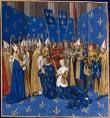
On Apr. 12, 1229 Raymond VII of Toulouse surrenders to 17-y.-o. Louis IX and his regent mother Blanche of Castile, and signs the Treaty of Paris (Meaux), ending the Albigensian Crusade (begun 1209), betrothing his heiress to Louis' brother Alphonse, while Louis IX is betrothed to Margaret of Provence (1221-95), marrying her on May 27, 1234, proceeding to steal Provence from the HRE; Raymond VII cedes over half of his territory to the king, retaining the remainder only during his life and agreeing to dismantle his fortifications in Toulouse et al., causing Occitan political autonomy to be kaput, and Cathars to lose their last political protection, with Raymond required to hunt them down as vassals of the king.
How do you approach the Word of God? You don't? Progresso, what a soup of holy words shouldn't be? In 1229 after the first hand-copied partial translations of the Bible by the pesky Albigensians begin appearing, the (non-ecumenical?) Council of Toulouse forbids lay persons from reading the Bible, to be enforced by the Inquisition (is that a Bible in your pants or are you just happy to see me?); "Search the Scriptures, for in them ye think ye have eternal life, and they are they which testify of me" (John 5:39); "Use of the vernacular [would mean] demolition of a language barrier that safeguarded the clergy's exclusive dominion over religious matters" (Massimo Firpo).
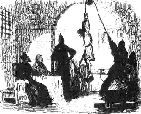

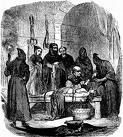


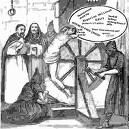
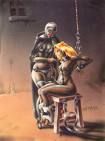
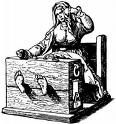
Jesus rolls over in his empty tomb? In 1231 now that Bible reading has been prohibited (1229), and pesky Bible-thumpers continue to read it and point out that the Church's doctrines contradict it, Pope Gregory IX institutes the search-and-destroy Holy Office, AKA the Inquisition, in the hands of the Dominicans, for the apprehension, torture (begun 1252?) and trial of heretics, enacting a law for Rome that heretics condemned by an ecclesiastical court are to be delivered to the secular power to receive their "due punishment", i.e., death by fire, or life in a horrible inhumane prison.
In 1233 in his bulls of Apr. 13, 20, and 22, in order to combat the Albigenses in France, Pope Gregory IX founds the Monastic Inquisition, and appoints the Dominicans as the official Inquisitors for all dioceses of France; the smoke-choked Burning Times in France begin; James I the Conqueror of Aragon, champion of the Catalan language stinks himself up by inviting the Inquisition into his realm to stop the Albigensian troubadours finding refuge from S France in Aragon and Catalonia from making a vernacular trans. of the Bible - ah, ah, I need some help here?
In 1234 the Second Council of Tarragona in Spain is held to regulate the procedure of the Inquisition (begun 1233) and to ratify the 1229 Council of Toulouse, issuing several canons, incl. #2: "No one may possess the books of the Old and New Testaments, and if anyone possesses them he must turn them over to the local bishop within eight days, so that they may be burned."

In 1234 Franciscan monks publicly burn copies of the works of Jewish brain man Maimonides (1135-1204) in Montpellier, France, setting a precedent that makes books too hot to handle in Roman Catholic lands; knowing that if you can get away with books, why not people, on June 13 Pope Gregory IX pub. the 5-vol. Liber Extra (Decretals of Gregory IX), a collection of 2K decretals which he has sent to the univs. of Bologna and Paris, repeating St. Augustine's belief that "every pagan, Jew, heretic, and schismatic will go to the eternal fire prepared for the Devil and his demons", giving the force of canonical law to the doctrine of perpetual servitude of the Jews until Judgment Day, banning them from direct influence over the political process and the life of Christian states until the 19th cent. rise of liberalism; it contains the oldest surviving detailed Description of a Diabolical (Witches') Sabbath, describing the novice having to kiss an enormous toad, then a cold, pale, thin man, which causes him to forget the Catholic faith, then, after a feast, having to kiss a black cat, then the head devil (or devil's head), and finally participate in an orgy; Pope Boniface VIII adds a 6th book in 1298 - dominica, nica, what? This wonderful development in Catholic theology goes on to morph into the Spanish Inquisition in 1478, and the Portuguese Inquisition in 1531, burning its first Protestants in Spain in 1543; it is finally abolished (suspended until future notice?) after 666, er, 603 fun years in 1834. Gregory IX absolves those who violated the ban by the 1215 Fourth Lateran Council on teaching Aristotle, but renews it "provisionally, until the books of the philosopher had been examined and expurgated", appointing three Parisian masters to the job, which they give up on. One good thing: Gregory IX exempts the Jews from the jurisdiction of the Inquisition, except when they attack Christianity, attempt to Judaize Christians, or revert to Judaism after Christian conversion.

The first Jehovah's Witnesses come from Oxford? In 1374 Gray-bearded Oxford U. prof. of divinity ("the Morning Star of the Reformation") John Wycliffe (OE "white cliff") (1324-84), having conquered Oxford and made it the spiritual center of England begins preaching his anti-clerical doctrines from the pulpits of London under the patronage of John of Gaunt, and is employed by the govt. to negotiate with the papacy over provisions, becoming Edward III's chaplain; as a church reformer he gets so impatient to get an English trans. of the Bible into the common man's hands that he begins translating it single-handedly, while pub. tracts decrying the secularization of the Church, and claiming that all religious doctrines should be based on the Bible, not tradition or church synods, and that people should have direct access to God and therefore don't need auricular confession, denying the core concept of the Roman Catholic Church, drawing mojo from the inability of the clergy to deal with or even explain the Black Plague except as God's judgment against them; in ? he pub. De Civili Domino (On Civil Authority or Dominion), proposing the disendowment of church property and the exclusion of the clergy from civil govt.; his itinerant proselytizing Poor Preachers, scornfully known as Lollards (Dutch "babblers") spread throughout England, at first reading portions of Wycliffe's English Bible trans. to eager crowds, then teaching people to read his Bible on their own, successfully making a large number of converts, incl. wealthy townsmen and country gentlemen, and doing so well that it is said that every 4th (3rd) (2nd) man is a Lollard. Pope Gregory XI announces that the Inquisition has the right to intervene in sorcery trials, which hitherto had been considered purely civil matters.
In 1377 the English bishops summon John Wycliffe to appear before them at St. Paul's to answer for his anti-clerical teachings, where John of Gaunt supports him against William of Wykeham; the proceedings are ended by anti-Gaunt demonstrators, who paradoxically save Wycliffe's neck.


On Mar. 27, 1378 Pope (since 1370) Gregory XI (b. 1331) dies, and on Apr. 8 Naples-born Bartolomeo Prignano is elected Pope (#201) Urban VI (1318-89) after a short conclave featuring a lot of kibbutzing by pro-Italian forces, aided by ever-wounded St. Catherine of Siena; he decides to rule in Rome; the cardinals who elected him reconsider and nullify the election, then on Sept. 20 elect Robert of Geneva (Cambrai) as Antipope Clement VII (1342-94) whom they set up in Avignon, becoming the first antipope of the Great (Western) (Papal) Schism (ends 1417), while Pope Urban VI continues in the Vatican, laying back and enjoying the show while these are the days where anything goes and two or even three popes rule the infallible Church at the same time; England backs the Roman pope, while Scotland backs the Avignon antipope.
In 1380 Oxford U. theologian John Wycliffe (1324-84) gives a sermon in which he utters the soundbyte: "How should God approve that you rob Peter, and give this robbery to Paul in the name of Christ?" In 1382 he pub. his English Trans. of the Latin Bible, becoming the first new trans. in a millennium, based on the Latin Vulgate Bible; actually Wycliffe doesn't merely translate but creates the New Testament, writing it originally in English and Latin, and it is actually a code history of 14th cent. Europe, incl. the Avignon papacy?; he also pub. Confession Concerning the Eucharist, which denies that the "substance" of bread and wine are miraculously annihilated during the Eucharist - the secrets that made it taste so good?
On Dec. 31, 1384 English morning star religious reformer John Wycliffe (b. 1324) dies in Lutterworth of paralysis while ministering to his parish church, a rare peaceful death for a heretical celeb in those days; in 1428 the Council of Constance makes up for lost time and has his body dug up and burned, along with 200 of his books, and his ashes cast into the Swift River near Lutterworth (which flows into the Avon River, then into the Severn River, then into the ocean, spreading worldwide, like his doctrines?); his example launches a stream of reformers incl. Jan Huss (1369-1415), Girolamo Savonarola (1452-98), Ulrich Zwingli (1484-1531), Martin Luther (1483-1546), and John Calvin (1509-64).
In Feb. 1395 the Twelve Conclusions of the Lollards is nailed to the doors of Westminster Abbey and St. Paul's Cathedral, and presented to Parliament by the Lollards (Dutch "lollaerd" = singer of psalms) (loller = lazy fellow), criticizing the wealth of the clergy, disputing the real presence of Christ's body and blood in the Eucharist, dissing the worship of images of Christ suffering on the cross, and calling for a form of separation of Church and State, calling for a universal non-celibate priesthood sans confessions to priests and their feigned forgiveness of sins; "If the cross of Christ, the nails, spear, and crown of thorns be honored, then why not honor Judas' lips, if only they could be found?"

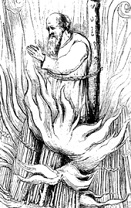
1400 So you're a tick? Light the wick? Early in 1401 to bolster his hold on the throne, English king (since Sept. 30, 1399) Henry IV (1367-1413) sides with the bishops' persecution of the Lollards, beginning with the no-shades-of-grey act of Parliament titled De Haeretico Comburendo ("On the Burning of the Heretic"), providing for the burning of heretics (them), starting with Norfolk priest Sir William Sawtrey, who is carbureted on the herestick in Mar.; "Divers false and perverse people of a certain new sect...they make and write books, they do wickedly instruct and inform people... and commit subversion of the said catholic faith"; "That this wicked sect, preachings, doctrines, and opinions, should from henceforth cease and be utterly destroyed..."; "That all and singular having such books or any writings of such wicked doctrine and opinions, shall really with effect deliver or cause to be delivered all such books and writings to the diocesan of the same place within forty days from the time of the proclamation of this ordinance and statute... And if any person... such books in the form aforesaid do not deliver, then the diocesan of the same place in his diocese such person or persons in this behalf defamed or evidently suspected and every of them may by the authority of the said ordinance and statute cause to be arrested" and "be burnt, that such punishment may strike fear into the minds of others..."; repealed in 1559 and Mar. 1677.

In 1408 the U. of Prague is torn apart by the Great Schism after Wenceslaus IV the Drunkard, fearing that Roman pope Gregory XII might interfere in his plans to be crowned HRE orders his prelates and the univ. faculty to maintain strict neutrality between him and Avignon pope Benedict XIII, after which Prague archbishop (1403-11) Zbynek Zajic of Hasenburg (1376-1411) tells him to stuff it and remains faithful to Gregory XII, while Bohemian preacher Jan Hus (1369-1415), leader of the "Czech nation" avows neutrality; too bad, Hus gets into trouble for railing against Church moose hockey such as indulgences, and is defrocked, but the pop. rises to support him; meanwhile a convocation is held in Lucca, Italy to end the Great Schism - this bud's for you, Lucca?
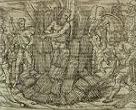
On Jan. 18, 1409 after Jan Hus' preaching at the U. of Prague causes an uproar among the Germans in the faculty and student body, causing the Hussites to send Jerome of Prague (1379-1416) to Wenceslaus IV to ask him to change the constitution of the univ., and Poland, Bavaria, and Saxony oppose the the emperor's request to remain neutral between the two rival popes of the Great Schism, Wenceslaus IV issues the Decree of Kutna (Kutná) Hora (Kuttenberg), giving the Czech nation three votes in the elections to the faculty of Prague U. and the other three only one vote each, after which Hus is voted rector of Prague U., causing deposed rector Johannes of Munsterberg and 5K-25K students and profs. to leap and zigzag out and found Leipzig U. in Saxony, which is backed by a bull issued by new Antipope Alexander V on Sept. 9, and later becomes the alma mater of superbrain Gottfried Wilhelm von Leibniz.

On Mar. 25, 1409 the cardinals of Rome and Avignon meet in the Council of Pisa, called by Rupert III to end the 30-year Great Schism, and depose Roman Pope Gregory XII and Avignon Antipope Benedict XIII, then on June 26 elect compromise candidate Pietro Phillarges (Peter of Candia) as antipope #3 of the Great Schism Antipope Alexander V (1339-1410) (until May 3, 1410); from this year to 1417 there are not one, not two, but three popes, G12, B13, and A5 (sounds like an interesting chess game); Wenceslaus IV and the Hussites approve of the election, but Prague archbishop Zbynek Zjic remains loyal to Gregory XII, and though he had initially supported Jan Hus, he suddenly turns on him and orders him to discontinue preaching from his pulpit at Bethlehem Chapel in Prague, then after Wenceslaus IV pressures him to accept Alexander V, he gets him to condemn Hus in a papal bull on Dec. 20 in exchange for supporting him as da one and only pope.


On May 4, 1410 Antipope (since 1409) Alexander V (b. 1339) dies (poisoned?), and on May 17 Cardinal Baldassare Cosa of Naples (a brutal libertine and former pirate who obtains the position through force of arms and who is made a priest one day before his coronation?) is elected antipope #4 of the Great Schism Antipope John XXIII (1370-1419); his bitchin' backer Giovanni di Bicci de' Medici (1360-1429) hits the jackpot, and the Medicis become "God's bankers".
On July 16, 1410 after supporting them turning on him, Prague archibishop #5 (1403-11) Zbynek Zajic of Hazmburk (Hasenburg) (13671-1411) excommunicates Jan Hus and his followers, and orders their works confiscated and burned at his court, causing Hus to flee a lynch mob, while pro-Hus Prague U. students chant "Illiterate Jajic burns books without knowing what they contain", after which Wenceslaus IV intervenes, ordering him to reverse his edict and replace the burned books, and when Zajic refuses he cuts off his income, then after he still refuses, confiscates all church treasures, after which Wenceslaus IV's brother Sigismund I intervenes and gets them to kiss and make up, after which Zajic gets cold feet and tries to hike to Hungary, falling ill and croaking in Prespurk (Bratislava) next Sept. 28.
Good news in the battle against heretics? In 1410 English Lollard John Budby is burned at the stake.
In Mar. 1411 a new ban is put on Jan Hus, but he keeps on truckin', preaching the disturbing doctrines of John Wycliffe; meanwhile, Antipope John XXIII tries to finance a war through the wholesale selling of indulgences, and Hus' preaching against it gets the city of Prague declared to be under a special curse from God.
In Oct. 1414 Jan Hus (b. 1369) is lured to his death by Antipope John XXIII to the keep-constant Council of Constance (1414-18), ostensibly to settle "causa unionis, reformationis, fidei", but in fact to try and condemn him for heresy after nearly killing him in a stinking dungeon; the council prohibits the cup to the laity during Communion, and confirms the Conciliar Theory that the authority of a gen. church council is superior to the popes, deposing all three current popes and electing a new one, which ups Sigismund I's capital and makes him the most influential monarch in W Europe; former pirate John XXIII is charged with 70 offenses, incl. piracy, murder, rape, sodomy, and incest, after which 16 "of the most indescribable depravity" are dropped in the interest of public decency?; meanwhile proposals to reform and reorganize the corruption and abuses of the rest of the hierarchy are debated, but never attain majority support, although the need for reform is universally recognized.


Don't muss with us Huss? On July 6, 1415 Jan Hus (b. 1369) of Bohemia is burned in the stake in Constance (Konstanz) for heresy after HRE Sigismund I of Luxembourg (1368-1437), who had guaranteed him safe conduct signs his death sentence, earning the everlasting hatred of the Bohemians, and making it impossible to rule Bohemia when he takes it over in 1419, spawning the radical Taborites centered in Tabor, and the less radical Ultraquists (Lat. "sub utraque specie" = in both kinds), who believe that both the wafer and the cup should be administered during the Eucharist; Sigismund I bans Duke Frederick IV of Austria for siding with Antipope John XXIII at the Council of Constance, causing him to lose the Aargau (old homeland of the Hapsburgs) to the Swiss, although with popular support he keeps Tirol, which he stabilizes by beginning silver mining, moving his court from Merano to Innsbruck.

Abraham and Martin and John, Medieval Edition? On July 26, 1417 the Council of Constance deposes antipope (since 1394) Benedict XIII, ending the Great Schism of the West (begun in 1378); on Nov. 11 Oddone (Ottone) Colonna (Eau de Cologne?) (born in Genazzano near Rome) is elected Pope (#205) Martin V (1368-1431); rockhard lunatic Benedict XIII returns to his rockhard fortress near Valencia, Spain, and holds out as a pretender pope until his death in 1423.

I'm your Venus, I'm your Fire of Jordan? On Dec. 14, 1417 Sir John Oldcastle (b. 1378), leader of the Lollard religious sect is hanged and burned (alive?) for heresy along with 36 companions; the persecution of Lollards heats up for the next 10 years, driving them underground until the time of Martin Luther.


On Aug. 16, 1419 Bohemian king (since Nov. 29, 1378) and HRE (1376-1400) Wenceslaus IV the Drunkard (Lazy) (b. 1361) dies, leaving Bohemia in a deep crisis caused by the betrayal of Jan Hus, and guess-who HRE Sigismund I of Luxembourg (1368-1437) succeeds to the throne of Bohemia, being immediately challenged by the growing pissed-off Hussite movement incl. most of the Czech pop. in the Kingdom of Bohemia, whose members hate his huts for what he did to Jan Hus, and on July 30 start the Hussite (Bohemian) Wars (end Jan. 15, 1437), with most of the Czech pop. of the kingdom of Bohemia taking on the Roman Catholic Church and its crusaders, plunging the country into almost 20 years of extreme violence, with hand-held firearms extensively used; Tyn Church (Church of Our Lady Before Tyn) in Prague becomes the Hussite command center; the Hussite Wars hasten the Reformation in Bohemia, while surging Bohemian nationality causes the Bohunks to block any hope of German unification and break off from Germany permanently; meanwhile Sigismund I has trouble getting crowned HRE in Rome, taking until May 31, 1433.
On Feb. 1-14, 1420 the Second Coming of Christ is coming, according to Martinek Hauska of Prague, who gains a group of followers and goes on a rampage "purifying the Earth" of false clergymen, holing up in an abandoned fortress called Tabor for decades, until they are finally quashed by the Bohemians in 1452.

In Mar. 1420 Pope Martin V at the urging of HRE Sigismund I preaches a crusade against the Hussites; in July Roman Catholics led by HRE Sigismund I's secy. (since 1417) Pier Paolo Vergerio the Elder (1370-1445) engage in a disputation with the Hussites in Prague; on Nov. 1 a force of 12K Hussite Bohemian peasants under blind gen. Jan Zizka (Johann Ziska) of Trocnov and the Chalice (1360-1424) of Trocnov defeats Sigismund I's 18K soldiers at the Battle of Vysehrad Castle in Prague, and expels him from Bohemia after he has himself crowned king of Bohemia in Prague.
On June 1, 1421 the Moravian-Czech Diet of Caslav declares Sigismund I deposed as king of Bohemia, and Lithuanian grand duke Witowt is elected anti-king of Bohemia, sending his nephew Duke Sigismund Korybut (1395-1435) to Bohemia as his vicar; Hussite incursions into Germany begin.
In 1422 the Hussites under Jan Zizka rout HRE Sigismund I again at the Battle of Kutna (Kutná) Hora near Prague.
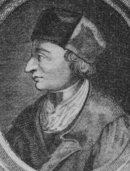
On Jan. 6, 1424 Jan Zizka (b. 1360) defeats the Ultraquist nobles and "Praguers" (Prague militia) at the Battle of Skalice, followed on June 7 at the Battle of Malesov, after which on June 14 a peace is concluded by future Ultraquist archbishop of Prague John of Rokycany (Jan Rokycana) (1396-1471), (who was blamed for the D at Malesov), with the reunited Hussites agreeing to attack Moravia; too bad, on Oct. 11 Zizka dies of plague on the Moravian frontier at Pribyslav after requesting that his skin be used to make drums to lead his troops, who begin calling themselves the Orphans (sirotci) because they lost their father; "The one whom no mortal hand soul could destroy was extinguished by the finger of God."
In 1427 the Hussites overrun the Czech town of Duchcov, home of the Castle of Dux, which Giacomo Casanova later makes famous by spending his last years there.
By 1430 most of the Greek classics have been brought to Italy.
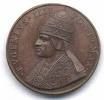
On Feb. 20, 1431 Pope (since 1417) Martin V (b. 1368) dies from eating too many eels after convoking the Council of Basel (ends 1449) to deal with the pesky Hussites and Ottomans, and on Mar. 3 Gabriello (Gabriele) Condulmaro is elected Pope (#206) Eugene (Eugenius) IV (1388-1447), putting the skids on any plans to make the Church a democracy, establishing that the pope is a higher authority than a council, not vice-versa; his servant Poggius pines over the decay of Rome through the cents.
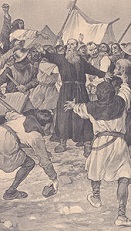
On Aug. 14, 1431 the Roman Catholic Crusaders of the HRE under Frederick of Brandenburg and Cardinal Cesarini are crushed by the Taborites and Hussites under Bohemian Taborite ex-Ultraquist priest-gen. Andreas Prokop the Bald (the Great) (the Holy) (Bald) Shaven) (1380-1434) at the Battle of Domazlice.
On May 30, 1434 Prokop the Great (b. 1380) leads his Taborites at the Battle of Lipany (Lipan) (Cesky Brod) 25 mi. E of Prague, but is defeated and KIA by an army of Ultraquist nobility and Bohemian Roman Catholics called the Bohemian League.
According to U.S. historians Robert Strauss and Neil Howe in their 1997 book The Fourth Turning, 1435 is the first of four 80-to-100-year Saeculums, each with four generations, containing a turning point every 20 years or so.
On July 5, 1436 the Compacts (Compactata) of Basle (Iglau) are ratified in Jihlava by the estates of Bohemia and Moravia, and ratified by the Council of Basel next Jan. 15, ending the Hussite Wars (begun 1419) between Roman Catholic and Hussite Bohemia, confirming the Hussite denomination, recognizing them as true sons of the Church with the right to the cup in Communion, and creating religious dualism for the first time in Roman Catholic Europe; Sigismund I is acknowledged as king of Bohemia, but dies next Dec. 9 while trying to stir up the Catholics again, allowing the communion under both kinds (the wafer and the cup) is acknowledged as not heretical on Dec. 23 - before they have to prove he isn't?

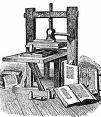
Speaking of wizards, about 1439 German goldsmith Johannes Gutenberg (1398-1468) of Mainz invents a process for mass-producing movable type using a hand mold for a screw-type wooden Printing Press using oil-based ink; the Info. Explosion begins. Too bad, Bill Gates, er, the pope makes use of it to mass-produce indulgences to fill his coffers, fomenting a revolt in Germany led by Martin Luther.


On Jan. 23, 1458 after HRE Frederick III is unable to secure the kingships of Hungary and Bohemia, John Hunyadi's son Matthias Corvinus (1443-90) is elected king of Hungary and Croatia (until Apr. 6, 1490); on Mar. 2 Ultraquist (moderate Hussite) leader George of Podebrad (Podiebrad) (Podebrady) (1420-71) is crowned king of Bohemia (until Mar. 22, 1471) in Prague, trying to pursue a middle course of conciliation with the Roman Catholic Church (which considers him a heretic?), going on to persecute the puritanical anti-papist quasi-democratic Bohemian Brotherhood.

On Aug. 14, 1464 Pope (since Aug. 19, 1458) Pius II (b. 1405) dies of fever in Ancona while sailing to the East still trying to organize a Crusade, and on Aug. 30 Pietro Barbo is elected Pope (#211) Paul II (1417-71) (until July 26, 1471), and all plans for a Crusade are dropped and never renewed. In 1465 Pope Paul II denounces the 1430s Council of Basel and the Compactata, excommunicates and deposes Hussite Bohemian King George of Podebrad, and enlists the aid of the HRE and King Matthias Corvinus of Hungary against him, causing the Roman Catholic nobles of Bohemia to elect Matthias as king, and a civil war to begin.

In 1473 Dutch #1 scholar Johann Wessel Gansfort (Goesport) (1419-89) visits Pope Sixtus IV in Rome, and when told he could have one wish, he asks for a Greek and Hebrew Bible from the Vatican Library, which the pope grants after remarking that he should have asked for a bishopric, showing that he didn't 'get' that Wessel was an early Protestant, condemning the sale of indulgences and questioning papal infallibility, but not loudly enough to get condemned as a heretic?
In 1491 Alsatian-born Roman Catholic priest Johann (Johannes) Burchard (Burchart) (Burkhart) (1450-1506), the pope's master of ceremonies writes in his diary: "From the greatest to the least, they [the church's top officials] took on concubines in the fashion of marriage, and indeed they did this publicly... Unless God provides, this corruption will spread to monks and those in religious orders, although the convents of Rome have almost become all brothels even now, since no one forbids it."
On June 3, 1496 French Roman Catholic priest Jean Langlois, who had travelled in Europe and picked up humanist ideas interrupts a Mass in Notre Dame Cathedral in Paris, pushing the priest aside and scattering the sacred hosts from his chalice before stomping them and declaring that the idea of Christ's real presence in them is a superstition; after Dutch monk Jan Standonck tries to get him to repent, he is defrocked, the hand that offended the sacred chalice lopped off, and ridden backwards on a donkey to the pig market, where he is burned, allgedly repenting to Standonck in the flames, causing the latter to stay on a strict Lenten fast for life; meanwhile on Oct. 26 the Chapter of Notre Dame Cathedral orders all priests in the diocese to give up any women they are living with, which meets with violent opposition.
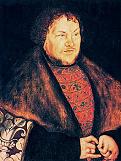
On Jan. 9, 1499 Brandenburg elector (since 1486) John II Cicero (b. 1455) dies, and his eldest son Joachim I Nestor (1484-1535) becomes prince-elector #5 of Brandenburg (until July 11, 1535), becoming known for high-pressure sales tactics for indulgences, causing Roman Catholic priest Martin Luther to launch his first attack against his brother Archbishop Albert first.
In 1500 Pope Alexander VI proclaims a Year of Jubilee, and preaches a Crusade against the Turks, imposing a tithe to pay for it; meanwhile German monk Martin Luther (1483-1546) issues a great proto-Protestant soundbyte: "I persuade myself verily, that the Day of Judgment will not be absent full three hundred years. God will not, cannot, suffer this world much longer... The Great Day is drawing near in which the kingdom of abominations shall be overthrown."
On June 1, 1501 Pope Alexander VI issues a bull instituting religious censorship of all printed books.
In 1502 Aldus Manutius of Venice founds the New Academy for Greek classical scholars, which counts as members Desiderius Erasmus (1466-1536) (in Italy from 1506-9) and Thomas Lincare, with rules written in Greek; the revival of Greek studies in Europe is led by Erasmus, who corresponds with over 500 scholars and politicians, giving advice and unfreezing the gloomy Roman Catholic atmosphere; too bad, Erasmus won't begin publishing his hit books dissing monasticism and scholasticism until he masters Latin later in this decade (around age 40).
In 1502 the U. of Wittenberg is founded in Wittenberg, Saxony-Anhalt by elector Frederick III the Wise, becoming a hotbed of the Protestant Reformation, with alumni incl. Martin Luther and Philipp Melanchthon, and Luther's house the Lutherhaus becoming part of the campus; Shakespeare's Prince Hamlet becomes a student :); in 1817 it merges with the U. of Halle (founded 1691).
On July 2, 1505 (Wed.) German cocksman, er, law student Martin Luther (b. 1483) is struck by lightning in Erfurt (a four in a million chance?), and on July 16 sees the light and enters the St. Augustine Monastery (Augustinekloster) in Erfurt (130 mi. SW of Berlin) (until 1511).

In 1506 the U. of Frankfurt an der Oder (European U. Viadrina Frankfurt), the first state univ. in Brandenburg is founded by Hohenzollern prince-elector (1499-1535) Joachim I Nestor (1484-1536); too bad, he backs the Roman Catholic Church all the way against the pesky Lutherans, then watches his wife Anna of Brandenburg and her hubby king Christian III of Denmark go Protestant, along with Brandenburg, and ends up fleeing to Saxony in 1528; the univ. is transferred to Breslau in 1811.
In 1507 future world shaker Martin Luther is ordained - watch them barkers and colored balloons, brothers?
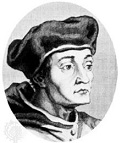
In 1508 Italian Venetian humanist (later cardinal) Girolamo (Hieronymous) (Jerome) Aleandro (Aleander) (1480-1542) begins teaching Greek at the U. of Paris, then becomes Vatican librarian in 1519, later heading the opposition to Martin Luther at the Diet of Worms.

In 1511 Dutch scholar Desiderius Erasmus (1466-1536) becomes prof. of Greek at Cambridge, going on to trans. the New Testament and shake up the Bible-ignorant Roman Catholic world.
On Feb. 6, 1512 John Colet (d. 1519), dean of St. Paul's in London since 1505 gives a Convocation Sermon to the clergy of Canterbury in London Cathedral, in which he calls himself "a man sorrowing for the ruin of the Church", and says that he came "to admonish you with all your minds to deliberate... concerning the reformation of the Church", saying that the four great evils it has fallen into are devilish pride, carnal concupiscence, worldly covetousness, and worldly occupations, which later causes him to be labeled a pseudo-Protestant although he stays loyal to the Roman Catholic Church and dies before the Reformation reaches England (and the Protestants later fall into the same evils themselves?); next year on Good Friday he gives another sermon before the royal court arguing against England's war with France on the grounds that all war is wrong and Christians should fight only for Christ.
On May 3, 1512 the Fifth Council of the Lateran convenes in the Archbasilica of St. John Lateran (until Mar. 16, 1517), attended by 15 cardinals, 10 archbishops, 56 bishops, and the Latin patriarchs of Alexandria and Antioch, becoming the last before the Protestant Reformation, publishing decrees requiring local bishops to give permission before the printing of new books, rejecting the 1511 Conciliabulum of Pisa, and promoting a holy war against the infidel Turks to reclaim the Holy Land; the immortality of the soul becomes Church dogma (what about Ecclesiastes Ch. 9?); Martin Luther pub. his "95 Theses" 7 mo. after the council closes.
On Oct. 21, 1512 Martin Luther is granted a doctorate in theology, and on Oct. 21 he joins the theological faculty of the U. of Wittenberg.



You're very well-read, it's well known, but but but but a sword swallower comes up to you and he kneels, he crosses himself and clicks his high heels, hands you his throat and says thank you for the loan? On Feb. 21, 1513 Pope (since 1503) "Il Pontiface Terribilis" Julius II (b. 1443) dies, and on Mar. 11 Giovanni de' Medici is elected Pope (#217) Leo X (1475-1521), the "elegant pagan Pope" (Thomas Carlyle); the merchant-moneylender Medici family reaches new heights of power; Leo is only 38-y.-o., short, fat, with an effeminate countenance and weak eyes, and sweats a lot, and is a promiscuous homosexual who suffers from ulcerations of the anus so severe he has to be carried to the conclave on a stretcher; he sees the papacy as a big candy store, a way to live the life of Croesus and get women, er, men and boys, causing him to soon bankrupt the papal treasury and resort to selling indulgences on an unprecedented scale, turning the papacy into a virtual Mafia by stacking all the avenues of promotion with his relatives, for a price; the profligate pope bankrupts the treasury within a year of taking office; the Holy League begins to fall apart; cardinal-elector Albert of Brandenburg (1490-1545) gives him 10K (30K?) ducats in return for the archbishopric of Mainz and the privilege of selling indulgences for eight years, half to go to repay him for the loan and the other half straight into the pope's pockets; Albert uses Dominican friar Johann Tetzel (Diezel) (1465-1519) to do the sales job, and the latter uses the sales pitch: "As soon as the coin in the coffer rings, the soul from purgatory springs"; meanwhile duke Francesco Maria I della Rovere of Urbino, who was just created lord of Pesaro only to see his supporter Pope Julius II croak, loses it to Leo X's nephew Lorenzo II de' Medici.

In 1514 Italian satirical writer (first Euro journalist, and inventor of modern literate porno) Pietro Aretino (1492-1556) pub. The Last Will and Testament of the Elephant Hanno on the occasion of the death of Pope Leo X's pet elephant, mocking the leading figures of Rome, incl. Leo X, and launching his career as "the Scourge of Princes". No surprise, on Mar. 3, 1515 the Lateran Council issues the decree De Impressione Librorum, requiring the imprimatur (pr. im-pri-MAT-ur) (Lat. "let it be printed") on all books pub. in Roman Catholic lands under penalty of excommunication of the offenders, along with confiscation and destruction of the books.



On Jan. 1, 1515 king (since 1498) Louis XII (b. 1462) dies, and Francis (Francois) I (1494-1547), son of his first cousin Charles d'Angouleme (1459-96) becomes French Valois king #9, the first French Renaissance monarch, and "the father of France's devotion to culture"; his favorite residence is the Palace of Fontainebleau 35 mi. SE of Paris on 200 acres in the 42K-acre Fontainebleau Forest, where he assembles the Fontainebleau School in the 1530s to decorate it; his well-educated brain babe sister Marguerite d'Angouleme (1492-1549) sets up a salon that becomes known as the "New Parnassus", fostering Francois Rabelais (1494-1553), Clement Marot (1496-1544), , Pierre de Ronsard (1524-85) et al; Francis I signs an alliance with 15-y.-o. Archduke Charles of Hapsburg (Austria) (1500-58) (future HRE Charles V), who becomes gov. of the 17 provinces of the Netherlands; on Mar. 24 Francis I makes his friend and cousin Count Charles III de Montpensier and de Bourbon, Duke of Chatellerault (1490-1527) the (youngest ever?) constable of France (until 1523); Francis I hires German Landsknecht mercenaries,and makes a brilliant crossing of the supposedly impassable Alps, followed by a brilliant military V on Sept. 13-14 over the Swiss and Venetians at the Battle of Marignano, where the superiority of artillery and cavalry over the supposedly superior Swiss infantry tactics is proven, then a few days later defeats Swiss mercenaries and seizes the Italian duchy of Milan, becoming its gov. (until 1519); after conquering Lombardy, the French make peace with the Swiss on Nov. 12 and with Pope Leo X on Dec. 14; the Swiss retain most of the Alpine passes plus a French subsidy in return for the right of the French to enlist mercenaries; Francis I becomes the first French king to appoint port-chaise-d'affaires (royal porta-potty attendants). Too bad, in 1545 Francis I authorizes the first official persecution of the Protestant Huguenots.
In 1516 after serving as chaplain with mercenaries from his Swiss parish of Glarus, Ulrich Zwingli denounces the mercenary system and is forced out by the town officials to Einsiedeln 20 mi. SE of Zurich, where he reads Erasmus' Latin trans. of the New Testament and is so turned on that he memorizes it, becoming a Bible-thumping Protestant.
The infallible Word of God of Protestant Bible-thumpers gets off to a fallible start? In Oct. 1516 Desiderius Erasmus pub. ("rushes out rather than edits") ("praecipitatum verius quam editum") the New Testament (Novum Instrumentum Omne), with side-by-side Greek and Latin text; first Bible divided into verses; the first ed. uses the Latin Vulgate, which the Church considers as "their" Bible, but in later eds. he pisses-off Roman Catholics by using his own Latin trans. of the Greek in its place; he uses a small set of late medieval (12th cent.) mss. found in Basel, plus a ms. of St. John's Revelation borrowed from friend Johannes Reuchlin, which is hard to read and is missing the final six verses, causing him to fill in from the Latin Vulgate, creating a bastard Greek ms., which is later used to prepare the King James version; he pisses-off the Trinitarians by not incl. the Johannine Comma (Comma Johanneum) (Heavenly Witnesses) in 1 John 5:7-8: "There are three that bear witness in heaven: the Father, the Word, and the Spirit, and these three are one; and there are three that bear witness on Earth, the Spirit, the water, and the blood, and these three are one", because it is not found in Greek mss., only "There are three that bear witness: the Spirit, the water, and the blood, and these three are one", but later tickles the Trinitarians pink by incl. it in later eds. after they give him a fake Greek ms. in which they insert it themselves?; he goes on to pub. four more eds. by 1535, which become the "editio princeps" used by W European printers for the next three cents.;
1517 The original Meet the Fuggers? On Mar. 16, 1517 Pope Leo X's Fifth Lateran (18th Ecumenical) Council closes after ending the Pisan Schism (begun 1511) along with the Jewish and Italian monopoly on moneylending, overturning the Church's prohibition on usury; in 1514 the German Fuggers secured the right to sell papal indulgences in Germany.




With Catholic indulgences, crime does pay? The papal quest for filthy lucre finally reaps public reaction, creating the Protestant schism? On Oct. 31, 1517 (Wed.) (Halloween or All Hallows' Eve) German Roman Catholic Augustinian friar Martin Luther (1483-1546), after becoming sick of the indulgences peddled by Dominican friar Johann Teufel, er, Johann Tetzel (1465-1519) et al., and convinced that 1517 marks the end of the Babylonian Captivity of the Congregation, nails his Ninety-Five (95) Theses (Disputation on the Power of Indulgences) (written in Latin) to the door of the Wittenberg Palast (Palace) (Castle) Church in Saxony on the Elbe River (known for housing 5K+ holy relics, which he detests), arguing against indulgences and other Roman Catholic Church abuses, starting out pulling his punches then within a few years claiming that the pope is the Antichrist, "and his seat is that of Satan himself", and that "The treasures of indulgences are nets with which they now fish for the wealth of men", igniting the already-smoldering Protestant Reformation (he could have picked a more PC date than Halloween?); he really just sent them to Mainz archbishop Albert of Brandenburg that day, then posted them on the church door sometime in mid-Nov.?; his offer of a public debate is declined, but his theses are soon translated from Latin to German and pub., causing the German middle and merchant classes, who are already chafing at Italian efforts at domination to rise to his support in reaction to the fugging Fuggers (successor to the Medicis) and other papal bankers who are draining Germany of gold for Rome with this holy racket (the Fuggers are behind the loans made by Albert of Brandenburg to the pope); the big revelation to Luther that gave him strength was from the Bible, incl. the Seven Trumpets in Rev. Ch. 8, and Rev. 13:5, where it says that the Antichrist will rule the world for 42 mo., which he turns into 1260 years instead of days, setting year 1 in 539 C.E., and claiming that Christ will therefore return in the year 1799, thus it's time to get started whipping things up? - the wildlife experience, more than a museum?


In 1518 Martin Luther is summoned by Cardinal (since 1517) Thomas Cajetan (Gaetanus) (Thomas or Tommaso de Vio) (Jacopo Vio) (1469-1534) to the Diet of Augsburg, where he refuses to recant and appeals to Pope Leo X, causing papal nuncio Karl von Miltitz (1490-1529) to mediate; meanwhile Johann Eck pub. Obelesci (Obelisks), attacking Luther, which are answered by Andreas Rudolph Bodenstein von Karlstadt (Carlstadt) (Karolostadt) (AKA Brother Andrew) (1486-1541), who challenges him to a debate, which is held next June.



On Jan. 1, 1519 Ulrich (Huldrych) (Huldreich) Zwingli (1484-1531) is appointed priest of the Great Cathedral (Grossemunster) in Zurich, Switzerland, starting the Protestant Reformation in Switzerland (basis for the later Puritans, Pilgrims, and Huguenots) with popular lectures based on Erasmus' new and improved translations of the Bible, causing an admirer to place his printing press at his disposal; meanwhile Zwingli encounters the writings of Martin Luther, forming a cross-country connection, making the Protestants really dangerous? In June-July Martin Luther's man Andreas Rudolf Bodenstein von Karlstadt (Carlstadt) (Karolostadt) (AKA Brother Andrew) (1486-1541) and Pope Leo X's man (former friend of Luther) Johann Maier von Eck (1486-1543) engage in the Leipzig Debate (Leipziger Disputation) in Pleissenburg Castle, debating about grace, free will, the primacy of the pope and infallibility of papal decisions, and purgatory; after getting pissed-off bigtime, Eck charges Luther with being a Hussite heretic; the judges fail to reach a verdict, but the public allegedly goes with Eck; papal chamberlain Karl von Militz advises Luther to write a letter of submission to Pope Leo X, and Luther acquiesces (better soft paper than cold steel and hot lead?); too bad, when Protestants and Roman Catholics debate, they often use their common but more distant enemy Islam as an escape valve, pretending to praise it for being better than the other in such and such a category, with Luther actually claiming that to make a war on the infidel Ottomans is to rebel against God, who has been sending them to punish the sins of Roman Catholicism, beginning a 500-year appeasement jag that softens the West up for 9/11?; "The Reformation generated more vehement and coherent arguments between Christians, the ultimate effect of which was to favour the Muslims. It became customary amongst Catholics and Protestants for each to censure the 'vices' of the other's religion and to emphasize that the infidel [Muslims] exemplified the corresponding 'virtue,', which naturally would have been much better suited to the Christians... In fact the arguments between Catholics and Protestants frequently led to a competition as to which of the two could hurt the adversary more by heaping praise upon the infidel"; "The Reformation produced one logical if unexpected result: a definite boost to the positive evaluation of Islam, and therefore to the birth and development of an often conventional and mannered pro-Islamic stance." (Bernard Lewis)
Too bad, when Protestants and Roman Catholics debated, they often used their common but more distant enemy Islam as an escape valve, pretending to praise it for being better than the other in such and such a category, with Luther actually claiming that to make a war on the infidel Ottomans is to rebel against God, who has been sending them to punish the sins of Roman Catholicism, beginning a 500-year appeasement jag that softened the West up for 9/11?; "The Reformation generated more vehement and coherent arguments between Christians, the ultimate effect of which was to favour the Muslims. It became customary amongst Catholics and Protestants for each to censure the 'vices' of the other's religion and to emphasize that the infidel [Muslims] exemplified the corresponding 'virtue,', which naturally would have been much better suited to the Christians... In fact the arguments between Catholics and Protestants frequently led to a competition as to which of the two could hurt the adversary more by heaping praise upon the infidel"; "The Reformation produced one logical if unexpected result: a definite boost to the positive evaluation of Islam, and therefore to the birth and development of an often conventional and mannered pro-Islamic stance." (Bernard Lewis)


1520 Roman Catholic Europe has a sugar situation it can't handle? In 1520 Europe is introduced to Protestantism; Martin Luther (1483-1546) pub. 24 bestselling works all in one year, incl. the "big three" pamphlets Address to the Christian Nobility of the German Nation, Of the Liberty of the Christian, and On the Babylonian Captivity of the Christian Church (Oct. 6); which contains the soundbytes: "Whether I will it or not, I become wiser every day, urged on as I am by so many illustrious masters. Two years ago, I attacked indulgences, but with so much indecision and fear, that I am now ashamed of it. It is not, however, to be wondered at, for I was alone when I set this stone rolling"; "I denied that the papacy was of Divine origin, but I granted that it was of human right. Now, after reading all the subtleties on which these gentry have set up their idol, I know that the papacy is none other than the kingdom of Babylon, and the violence of Nimrod the mighty hunter. I therefore beseech all my friends and all the booksellers to burn the books that I have written on this subject, and to substitute this one proposition in their place: The papacy is a general chase led by the Roman bishop, to catch and destroy souls"; they get quickly distributed all over Europe - and the caca soon hits the fan among his loving Catholic brethren down at the Sunset Grill?


In 1520 the Anabaptist ("Re-Baptizer") Movement begins in Germany under pastor Thomas Muntzer (Müntzer) (1489-1525), who preaches that it's the "end of all ages", stirring up the unsuccessful Peasant Revolt in 1524; in this decade Austrian South Tirol reformer Jacob Hutter (1500-36) founds the pacifist communistic Hutterites, a group of Anabaptists in Moravia, who after his execution end up moving to the U.S., settling in the Dakotas, Montana, and Alberta, Canada, and living communally.
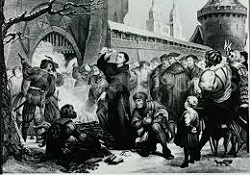

Holy bullshit? On June 15, 1520 Leo X's 41-point papal bull Exsurge Domine condemns pesky freethinker Martin Luther as a heretic, comparing him to a fox and a boar, and orders him to recant his views on that reformation thang within 60 days while calling for the burning of all his writings; after it backfires as a way to pull Luther's support from under his feet, on Dec. 10 Luther defiantly burns the bull, er, papal B.S., er, bull, along with the canon law near the Luther Oak in Wittenberg; the Catholics now begin calling Luther the Antichrist (forgetting the pagan Roman emperors and Muhammad), while the Protestants begin calling the pope the Antichrist; Leo X's main man Johann Maier von Eck (1486-1543) goes to Rome then returns to Germany as papal legate to enforce the bull.



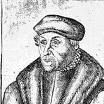
Count to ten then lose your temper like a lion? On Jan. 3, 1521 after Martin Luther refuses to retract 41 of his 95 theses, Pope (since 1513) Leo X (1475-1521) issues the bull Decet Romanum Pontificem, excommunicating him; given safe passage by HRE Charles V, Luther travels to the Imperial Diet of Worms (sounds yummy?) (electors, princes and nobles, and town delegates) to argue his case, arriving on Apr. 16, triumphantly having his say, with the soundbyte: "Since Your Majesty and your lordships desire a simple reply, I will answer without horns and without teeth. Unless I am convicted by Scripture and plain reason, I do not accept the authority of popes and councils, for they have contradicted each other"; after being cross-examined by papal nuncio Cardinal Alexander, he leaves in one piece on Apr. 25, his safe conduct pass good for 21 days; on Apr. 26 after papal rep. (appointed cardinal in 1536) Girolamo (Hieronymous) (Jerome) Aleandro (Aleander) (1480-1542) leads the opposition to him, the Edict of Worms bans Luther and his writings from the Holy Roman Empire, prohibits all new doctrines, and declares Luther an outlaw that anybody can kill after May 14; a bull issued by Pope Leo X follows on June 16, amounting to a death warrant; in an edict to Netherlanders, the pope's man HRE Charles V states: "As it appears that the aforesaid Martin [Luther] is not a man, but a devil under the form of a man, and clothed in the dress of a priest, the better to bring the human race to hell and damnation, therefore all his disciples and converts are to be punished with death and forfeiture of all their goods"; on his way back to Germany Luther is "kidnapped" on May 4 under orders of his protector Elector Friedrich (Frederick) III the Wise (1463-1525) of Ernestine Saxony (whose brother John of Saxony is a Lutheran), and hidden in his castle at Wartburg for a year for safekeeping, pretending to be neutral but consenting to end worship of his 19K+ saints and relics in 1523, along with the Catholic mass; meanwhile Luther's more radical associate Andreas Rudolph Bodenstein von Karlstadt (Carlstadt) (Karolostadt) (AKA Brother Andrew) (1486-1541) continues the Reformation in Wittenberg in Luther's absence, pushing for complete separation from the Church, and showing just what unfettered Bible reading can do to a person brought up Catholic?; Luther's books are burned in Rome, and in retaliation the faculty and students at the U. of Wittenberg burn the papal constitutions, the canon law, and works of scholastic theology outside the Elster Gate; Luther adds the pope's excommunication bull to the burning heap; while in hiding Martin Luther translates the New Testament into his most unwormly German.
On Apr. 15, 1521 the College of Sorbonne in Paris formally condemns the teachings of Martin Luther.

On Oct. 11, 1521 Pope Leo X declares English king Henry VIII the Defender of the Faith (Fidei Defensor) for his June pub. Assertio Septem Sacramentorum (Defense of the Seven Sacraments) refuting Martin Luther, becoming the #1 anti-Lutheran polemic of the cent., going through 20 eds.; meanwhile on Dec. 1 Leo X (b. 1475) dies of a winter chill (after writing sometime in his career "It has served us well, this myth of Christ"?), allowing Francesco Maria I della Rovere to recover his duchy of Urbino; Martin Luther replies to Henry VIII in 1522 with the book Against Henry, King of the English (Contra Henricum Regem Anglie), causing Thomas More to reply to him in 1523 with the book Responsio ad Lutherum; meanwhile Martin Luther takes advantage of this plus Charles V's military diversion to initiate public worship in Germany, with liturgy in vernacular German, and to preach along with Ulrich von Hutten against Jakob Fugger for lobbying the papacy to drop the age-old medieval prohibition against charging interest on loans - a rare natural death for a Medici?
In 1521 HRE Charles V grants his Roman Catholic brother Ferdinand Hapsburg (later HRE Ferdinand I) possessions and rights in Austria, making him gov. of the duchy of Wurttemberg to check the spread of the pesky Reformation; Ferdinand marries Anne of Hungary, sister of Louis II of Bohemia and Hungary, and daughter of Ladislas II of Hungary and Bohemia, while Ladislas II of Hungary marries Mary of Austria.

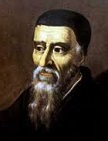
In 1521 the College of Sarbonne in Paris condemns a book by reformer (humanist) Roman Catholic theologian Jacques Lefevre d'Etaples (Jacques Lefčvre d'Étaples) (1455-1536) rejecting the view of the Three Marys of the Gospels being the same person; in 1523 he pub. a French trans. of the New Testament, followed by the whole Bible in 1530, helping launch Protestantism and making a fan of William (Guillaume) (Guilhem) Farel (1489-1565), who becomes an evangelist and founds the Reformed Church in Switzerland; in 1525 the theology faculty of the U. of Paris forbids further translations of the Bible.
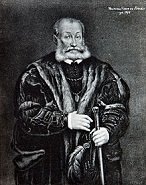
In 1521 Ascanian prince Wolfgang of Anhalt-Kothen (Anhalt-Köthen) (1492-1566) meets Martin Luther at the Diet of Augsburg, claims that "He gained my heart", and goes Lutheran, introducing the Reformation in Anhalt-Kothen in 152, and Anhalt-Bernburg in 1526, becoming the 2nd and 3rd countries after the electorate of Saxony to officially adopt Protestantism.
On Apr. 2, 1522 Swiss ex-Catholic priest Ulrich Zwingli, priest of the Great Church of Zurich celebrates his new freedom by reaching for the sky and marrying widow Anna Reinhard (1487-1538), with whom he had been living openly; too bad, his followers get arrested for taking his advice and eating meat during Lent, but he vigorously defends them, getting them off with a slap on the salami, which pisses off Pope Adrian VI, who bans him from the pulpit and asks the Zurich council to repudiate him as a heretic, esp. for calling on the bishop of Constance to allow allow priests to marry.

In 1522 the First Diet of Nuremberg is visited by Duke Albrecht I of Prussia, who uses the photo opp to lobby for allies in his war against the Poles; too bad for the whole Holy Roman Empire, he meets Lutheran rock-me-through-the-night theologian Andreas Osiander (1498-1552), who gets converted to Protestantism and then converts him, causing Albrecht to travel to Wittenberg to meet Martin Luther, who advises him to junk the Teutonic Order, get married (to awoman instead of his hand?), and convert Prussia into a hereditary Protestant duchy; he goes for it, getting the Teutonic Knights to secularize, repudiate allegiance to Rome, and throw their support behind Luther, but he has to play cagey with Pope Adrian VI at first, pretending he's actually trying to punish knights himself who convert to Protestantism, while having Luther send carpetbagging missionaries all over Prussia to prepare the way by doing the converting?


In 1522 the Knights' War (Revolt) (Poor Barons' Rebellion) (ends May 7, 1523) begins in SW Germany when the Protestant imperial princes, led by "the Last Knight" Franz von Sickingen (1481-1523) and "Humanist Knight" Ulrich von Hutten (1488-1523) form a fraternal assoc. in Franconia and the Rhineland against the bishops of Bamberg and Wurzburg and papal influence in Germany in favor of unification of all German-speaking lands, secularization of all church principalities and estates, and establishment of a "nobleman's democracy headed by a monarch", then attack the lands of the archbishop of Trier; they try to use Martin Luther's name but he declines, then in the fall unsuccessfully siege the archiepiscopal city of Trier, run by archbishop Richard Greiffenklau for seven days before running out of gunpowder, and retreat to Ebernberg, and Sickingen has a ban placed on him on Oct. 22 by the imperial regency council - they can't be a Toys R' Us kid anymore?
In 1522 HRE Charles V doesn't take any chances and introduces the Spanish Inquisition to the Netherlands - I like to chill?
In Jan. 1523 Ulrich Zwingli (1484-1531) appears before the Great Council of Zurich to defend himself against charges of heresy, and he soapboxes bigtime and slams Church dogmas, image, relic, and saint worship, clerical celibacy, and the Mass; the Great Council is impressed, and withdraws the canton of Zurich from the jurisdiction of the bishop of Constance, and confirms its previous ban against preaching not founded on the Bible, which amounts to an official adoption of the Protestant Reformation; Zwingli goes on to turn Zurich into a theocracy ruled by him and a Christian magistrate, converting monasteries into hospitals, and eliminating Catholic Mass and confession, teaching that true Christians don't need some turkey and some mistletoe, er, the pope and the Roman Catholic Church?
In spring 1523 Franz von Sickingen (b. 1481) plunders Kaiserslauten, causing the rulers of Trier, Hesse, and the Palatinate, with help from the Swabian League to march on Landstuhl, sieging him in his castle, which he had thought impregnable until artillery are used (one of the first times in Euro history); on May 6 he is mortally wounded, and croaks on May 7, after which his castle is razed, ending the Knights' War (begun 1522), along with the power of German knighthood, after which most of the rebellion's supporters have their castles confiscated, causing the bankrupt knights to overtax their peasants, and all to quit paying church tithes, fomenting the Peasants' Revolt next year; meanwhile Ulrich von Hutten goes to Zurich to meet with Zwingli, then to Basel to try to talk Erasmus of Rotterdam to side with the Reformation, but he refuses to see him, and he dies of his 15-y.-o. syphilis on Ufenau Isle on Lake Zurich on Aug. 29.
By 1523 four out of every five books pub. in Germany are pro-Reformation.
In 1523 Wurtenburg goes Lutheran, as does Strasbourg, France, known for its pate de foie gras; Martin Luther returns to Wittenberg and introduces public worship with liturgy and communion in German in Electoral Saxony and Hesse; meanwhile the diversion of the HRE by his war with France allows the Protestant movement to spread fast.


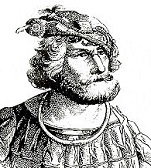

On Jan. 1, 1524 20K abandon their homes in London after Bible Millennium Fever prophets use a 1499 pub. of a Tubingen, Germany mathematician about a planetary alignment to predict a flood which never happens; another prophet predicts Feb. 20 based on another planetary alignment in the constellation Pisces, but it's a no-show also. In 1524 the Great German Peasants' Revolt (War) (ends May 15, 1525) against their lords in Thuringia (Swabia and Franconia in S Germany), led by Thomas Muntzer (Müntzer) (Munzer) (1489-1525), Florian Geyer of Giebelstadt (1490-1525), and Michael Gaismair (1490-1532) begins, fueled by the writings of Martin Luther (1483-1546), who thinks that if he can take on the pope and Church he can also challenge the socioeconomic inequalities of German feudalism, and pub. the Twelve Articles; too bad, he soon turns against them, and pub. the virulent pamphlet Against the Murdering and Thieving Hordes of Peasants, calling for their extermination, and looses on them landgrave Philip I the Magnanimous of Hesse (1504-67), who met Luther at the 1521 Diet of Worms then went Lutheran this year after a personal meeting with Philip Melanchthon (no wonder that the Communists later decide to junk all of Christianity?); meanwhile (well-named?) German bookbinder Hans Nut (-1527) predicts the Second Coming of Christ exactly 3.5 years after the start of the Peasant's Revolt, which will be the start of 1K years of free food, love, and sex, then claims that he is the Messiah and gathers a following; too bad, he is killed during a prison escape in 1527.
In Aug. 1524 after the French under Protestant soldier Gideon Bonnivert invade Italy, and turncoat Frenchman Duke Charles of Bourbon helps HRE Charles V drive them out of Italy, leading the imperial army into Provence, they unsuccessfully siege Marseille; meanwhile Chevalier de Bayard (b. 1473) is mortally wounded, and dies on Apr. 30 in Romagnano Sesia, Italy.
In 1524 the Protestant princes of Germany get together at Ulm and take on HRE Charles V, causing his younger brother Ferdinand of Austria (to whom he entrusted the govt. of Germany in 1522) to form an alliance with the two dukes of Bavaria (William IV and Louis X) and the bishops of S Germany to stop the Satanic Protestant Reformation, which the Bavarian dukes have been suppressing since 1522; older duke William IV becomes a main leader of the Counter-Reformation, but since his younger brother Louis X claims the throne of Bohemia, he opposes the Hapsburgs (until 1534).
In 1524 the Second Diet of Nuremberg convenes to contine the work of the First Diet of 1522; the League of Catholic Princes is formed in Ratisbon.



On May 15, 1525 the Battle of Frankenhausen sees a combined army of Duke George of Saxony, Philip I of Hesse, and Elector Frederick III of Saxony defeat the peasant army of Thomas Munzer (b. 1489), losing six killed and two wounded while killing 3K-10K badly-equipped untrained fleeing peasants; on May 27 Munzer is beheaded, along with 60K of his peasants, ending the Peasants' Revolt (begun 1524); meanwhile the dukes of Bavaria ally with the archbishop of Salzburg to suppress a farmer uprising in S Germany; meanwhile the Mennonite Church is founded in Zurich by ex-Anabaptist (former Catholic priest) Menno Simons (1496-1561), who wisely drops their Antinomian licentiousness in favor of proper biblical prudery to keep his head? Speaking of head? On June 27 Martin Luther marries former nun Katherina von Bora (1499-1552), who bears him six children, becoming known as "die Lutherin" - finally a nun gets some?
In 1525 the Lutheran Reformation reaches Tartu, Estonia; the furnishings of the diocesan cathedral on Toome Hill are destroyed, and the bishop flees the mobs.

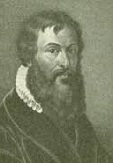
In 1525 English scholar William Tyndale (1495-1536), fulfilling his vow "If God preserves my life, I will cause a boy that driveth a plow to know more of the Scriptures than the pope" (given to a Roman Catholic bishop who told him that he respects the word of the Pope more than the Bible) finishes his trans. of the New Testament into English from the original Greek (instead of the Latin vers. used by John Wycliffe in 1381), then has it printed in "safe" Worms, Germany by Peter Schoeffer (Schöffer) (1425-1503) (apprentice of Johannes Gutenberg) before being smuggled into England; he then begins work on the Old Testament.



In 1526 after possibly fathering two children Henry and Catherine Carey by her lady-in-waiting Mary Boleyn, then hooking up with her sister Anne Boleyn, English Tudor king (1509-47) Henry VIII (1491-1547) begins to petition Pope Clement VII for an annulment of his marriage to sterile wife (since June 1509) Catherine (Katherine) of Aragon (1485-1536) (whose nephew HRE Charles V controls the pope), who petitions back; Henry VIII offers Reginald Pole (1500-58), dean of Exter (a Plantagenet) the archbishopric of York if he will support the divorce, but he refuses and flees to the Continent, then pub. the treatise "Pro Ecclesiasticae Unitatis Defensione", dissing the idea, causing the king to begin persecuting his family, executing his mother Margaret Pole, 8th Countess of Salisbury (1473-1541) (last surviving member of the House of Plantagenet) on May 27, 1541 in a bloody botched beheading (beatified in 1886 by Pope Leo XII); Sir Thomas More (1478-1535) turns against the king on religious principles; Henry revamps the royal library to use it to prove his right to do what he intends to do anyway.
In 1526 the Hanseatic League and Thuringia go Lutheran.
In 1526 Poland-Lithuania wars with the Teutonic Knights, and the Poles invade S Livonia and capture Dorpoat, after which a peace is agreed to in return for a 90 ducat reparation payment; the Lutheran duchy of Courland officially backs its old Roman Catholic ally Poland but luckily doesn't need to send troops.
In 1526 the Moravian Brothers (Anabaptists) settle in Moravia (until 1622).
In 1526 the Jews in Hungary are persecuted.

In 1526 Anabaptists in St. Gallen, Switzerland begin running through the streets shouting that the Last Day will arrive in exactly one week, causing the town to shut down as the pop. gets right with Gawd, only to see the Big Day come and go, after which humanist scholar Joachim Vadian (1484-1551) is elected mayor, leading the conversion of the city to Lutheranism, causing iconoclastic riots; meanwhile the Roman Catholic abbey holds out until 1803 - two balls and a strike, two on, two out, tie game, fifth inning?

In 1526 Swabian furrier Melchior Hoffman (1498-1544), who converted to Lutheranism in 1522 pub. On the Twelfth Chapter of Daniel, a pamphlet predicting the End of Days in Easter, 1533, when Elijah and Enoch will appear and overthrow the pope, then get martyred, beginning a 42-mo. tribulation period, after which Christ will return; of course, he thinks he's Elijah, and ends up in prison in Strasburg.


In 1526 English scholar Myles (Miles) Coverdale (1488-1569), who entered the Augustinian monastery of Cambridge in 1514 after Roman Catholic ordination as a priest leaves after being influenced by prior Robert Barnes (1495-1540) (who went Lutheran), and hooks up with William Tyndale (1494-1536), starting to trans. the Bible and Apocrypha into English.

In 1527 Kurpfalz (Electoral Palatinate) and Hesse go Lutheran, with landgrave Philip I the Magnanimous of Hesse (1504-67) closing down the monasteries in his principality and founding U. of Marburg on July 1, becoming the first Protestant univ.

In 1527 after the New Testament is pub. in Swedish in 1526, the Reformation begins in Sweden under king (1523-60) Gustav I Vasa (1496-1560), who obtains the right to confiscate Church property and suppress monasteries from the Council of Vasteras, and in 1536 founds the Lutheran Swedish Church, breaking with Rome completely and abolishing canon law, ending the Swedish Middle Ages; the Bible is trans. into Swedish in 1541, and Finnish in 1543.
On Jan. 1, 1528 a planned attack on Erfurt by Anabaptist leader Hans Romer, who thinks Christ is coming this year is stopped in advance after he is betrayed.

In June 1528 16-y.-o. king (since Sept. 9, 1513) James V (1512-42)) escapes from Edinburgh Castle when his foster daddy and chancellor Archibald Douglas, 6th earl of Angus and the latter's uncle (whom he admires) Sir Archibald Douglas of Kilspindie ("Greysteil") (1490-1535) are absent (the latter visiting his mistress in Dundee), and reaches Stirling, where he declares himself of the age of majority and begins his personal rule, kicking Angus and his clique out of the govt., then unsuccessfully sieging the cool Douglas stronghold of Tantallon Castle (built in the late 1300s on a cliff face opposite the Bass looking onto the Firth of Forth 3 mi. SE of North Berwick) in the fall; he snubs the Reformation of Henry VIII and appoints cardinal (last before the Scottish Reformation) David Beaton (1494-1546) as archbishop of Saint Andrews, who gets into a jurisdiction war with Glasgow archbishop Gavin Dunbar (1490-1547); meanwhile he raises church taxes, taking in Ł72K in the next four years, undermining church power.

In 1528 Dutch glass painter David Joris (Jan Jorisz) (Jan Joriszoon) (1501-56), who settled in Delft in 1524 is arrested for trying to stop a Roman Catholic procession carrying the Eurcharist, and is pilloried and banished for three years, causing him to begin wandering in N Europe for the next eight years, officially joining the Anabaptists in 1533 then returning to Delft in 1536 as a consecrated bishop; in 1538 he declares himself the Messiah, causing him to become wealthy, and in 1544 he moves to Basel and lives under an assumed name until death.
In 1528 Philip Melanchthon pub. Unterricht der Visitatorn an die Pfarherrn im Kurfürstentum zu Sachssen, proposing educational reforms in Germany along with an explanation of his evangelical doctrine of salvation sans popes.

In 1528 in a meeting in Bridewell Palace (Bridewell Prison in 1556), Henry VIII explains to the nobles and citizens of London his reasons for seeking a divorce from his wife Catherine of Aragon (his official, not real reasons, viz., the need to continue the line of a Welsh brewer with a male heir?); the pope sends Cardinal (since 1534) Lorenzo Campeggio (1474-1539) (last cardinal protector of England since Jan. 22, 1523) to England as his legate to hear the case, with secret orders to delay as long as possible, since the pope dares not mess with HRE Charles V's aunt?
On Feb. 21-Apr. 22, 1529 the Second Diet of Speyer (Spires) attempts to set aside the judgment of the first Diet and outlaw the Reformation in the Holy Roman Empire; on Apr. 19 the term "Protestant" emerges when the Minority Decision of Protest is signed by six Lutheran princes and 14 free cities of the empire, it declares that decisions of conscience in religious matters are between an individual and God - sounds like they're talking about abortion?
In July 1529 papal legate Cardinal Campeggio announces that the whole matter of the royal divorce case must be referred to Rome for the pope's personal adjudication; two days after he departs for Rome in Aug., useless fall-guy Cardinal Wolsey is tried and convicted of exceeding his authority as a papal legate and deprived of his seals as lord chancellor by none other than Charles Brandon, 1st duke of Suffolk, whose neck he had saved back in 1515 over his treasonable marrige to Henry VIII's sister, to whom Wolsey utters the soundbyte "If I, simple Cardinal, had not been, you should have had at this present no head upon your shoulders wherein you should have had a tongue to make any such report in despite of us"; as well as all official posts and honors except for the archbishopric of York, to which he retires after his right-hand man Thomas Cromwell leads the opposition to an attempt in Parliament to pass a bill of attainder against him; on Oct. 25 Sir Thomas More is made lord chancellor (until 1532), becoming the first layman to hold the post; in Oct. Henry VIII summons the English Reformation Parliament, which sits for seven year (until 1536); Thomas Cromwell survives his dismissal in spades, becoming Henry VIII's right-hand man and showing his stuff by gathering all the grievances of the English people against the privileged Catholic Church into a list, and going on to manage the dissolution of the monasteries; Sir Thomas Howard, 3rd duke of Norfolk becomes pres. of the king's council; the pope adjourns the commission to consider Henry's annulment to Rome, which is a V for Catherine; Cambridge U. divine Thomas Cranmer suggests to Henry VIII that he need not wait for Rome to annul his marriage, but might refer the question of his marriage to the divines of the univs.; the happy king appoints him archdeacon of Taunton, a royal chaplain, and gets him a post in the household of Anne Boleyn's father Sir Thomas Boleyn, now the earl of Wiltshire.
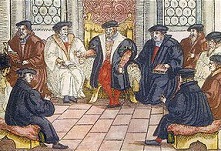
On Oct. 1-4, 1529 Roman Catholic Church dropouts Martin Luther and Ulrich Zwingli meet at the Marburg Colloquy in Marburg, Hesse, but don't quite see eye to eye over the thorny issue of consubstantiation vs. transubstantiation, i.e., whether the sacramental bread and wine are totally substantively converted into the body and blood of Christ, or whether the body and blood of Christ are substantively present with the unchanged eucharistic bread and wine; and let's not forget impanation, where the union is only mystical - this Christ he's quite a fellow?
In 1529 Hamburg goes Lutheran, receiving refugees from the Netherlands and France.
In 1529 Swinging Ulrich Zwingli converts six of 11 Swiss cantons to the Reformation, the remaining five Forest (Rural) Cantons form an alliance with Austria to move against them, causing them to form their army and civil war to loom, later known as the Milk Soup War (First War of Kappel) because they end up basically agreeing that fighting over religion isn't worth it?
In the 1530s the Spirituali movement in Rome arises to try to reform the Church from within without splitting like the Protestants; members later incl. English Cardinal Reginald Pole (1500-58), Italian Cardinal Ercole Gonzaga (1505-63), poet Vittoria Colonna (1490-1547), and her friend Michelangelo (1475-1564); Pope Paul IV (reigns 1555-9) later looses the Inquisition on them and destroys them by the 1560s, ending any hope for internal reform until the 20th cent. - the more the Church changes the more it remains the same?


1530 In June 1530 after being crowned as HRE by Pope Clement VII (last imperial coronation by a pope), Charles V, egged on by the pope to go to war tries to be diplomatic and asks the Lutherans to present their beliefs at the Diet of Augsburg, hoping to bring them back into the Roman Catholic fold; on June 25 Philip (Philippus) Melanchthon (1497-1560) prepares the Augsburg Confession, codifying Lutheran doctrines, and it is signed by the Protestant princes, while the Roman Catholics (Johann Eck et al.) prepare the Confutation of Augsburg (Confutatio Augustana), rejecting the doctrines as heretical; the Diet recesses on Sept. 2, and Charles V gives the Lutherans until Apr. 15 of next year to conform or face the dreaded Imperial Cameral (Chamber) Court (Reichskammergericht) (created by the Diet of Worms in 1495); in Dec. eight princes and 11 cities of the Holy Roman Empire agree to form the Schmalkaldic League against Charles V and his Roman Catholic allies to defend against any possible attacks, and tell the court to shove it, causing the Holy Roman Empire to institute criminal code and police regulations.

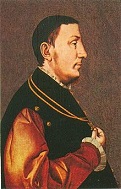
On Aug. 10, 1530 the combined troops of HRE Charles V and Pope Clement VII win their siege of Florence (begun Oct. 24), installing Alessandro de' Medici "il Moro" (1511-37) as the new ruler on May 1, 1532 (until Jan. 6, 1537); Philibet de Chalon (b. 1502) is KIA on Aug. 3, and is succeeded by his sister's son Rene (Renatus) of Nassau-Breda (Chalon) (1519-44).

In Nov. 1530 Cardinal Thomas Wolsey (b. 1475) is arrested on a charge of high treason, and dies on the way to the Tower in Leicester Abbey; Thomas Cromwell (1485-1540) is sworn into the King's Council, and is sent to Rome with the earl of Wiltshire by the king to present his position regarding his requested marriage annulment; Henry VIII confiscates Wolsey's home (York Place), hiring Anthony van Wyngaerde and enlarging it into Whitehall Place for his white ho, er, babe Anne Boleyn, becoming the largest (albeit ugly) residence in Europe (cap. 600) and the seat of royal power until it burns down in 1698.
In 1530 Duke Charles III of Savoy imprisons Swiss patriot Cluniac monk Francois Bonivard (1496-1570) in the dungeons of the Castle of Chillon on Lake Geneva near Montreux (until 1536), after which he goes Protestant, causing him to become the subject of Lord Byron's 1816 poem The Prisoner of Chillon; "Eternal Spirit of the chainless Mind!/ Brightest in dungeons, Liberty!"

In 1530 German Anabaptist Melchior Hoffman (Hofmann) (1495-1543) performs the first infant baptisms in Strasbourg, launching a struggle by the violent Anabaptist sect of German pastor martyr Thomas Muntzer (Müntzer) (1489-1525), leader of the German peasant uprising in 1525 in opposition to Martin Luther to take over the state of Munster (Münster); as Antinomians who believe that the "elect" can do no wrong, licentiousness reigns in their ranks.
On Oct. 11, 1531 the Roman Catholic Forest Cantons (Uri, Schwyz, Zug, Lucerne, and Unterwalden) (7K troops) march on Protestant Zurich (2-3.5K troops), and win the Second Battle (War) of Kappel, with 500 Protestant casualties, incl. chaplain and standard bearer Ulrich (Huldrych) Zwingli (b. 1484), who is KIA: Protestant reformer Johannes Oecolampadius (Heussgen) (b. 1482) dies on Nov. 24, causing Erasmus to write: "We are freed from great fear by the death of the two preachers, Zwingli and Oecolampadius, whose fate has wrought an incredible change in the mind of many. This is the wonderful hand of God on high"; a peace treaty is signed on Nov. 20.
In Dec. 1531 the Virgin of Guadalupe appears to Juan Diego on a hill in Tepeyac NW of Mexico City, giving him a bunch of fresh roses along with an image of herself on tilma (cactus cloth) which never decays, which convinces the local bishop to build a church and millions of Aztecs to convert to Roman Catholic Christianity, where they are groomed in the simple faith, with each church becoming their Disneyland of saints they can pray to - yes, she talks to dark-skinned cannibals too, Homes Esse?
In 1531 Henry VIII is recognized as the Supreme Head of the Church in England; Henry sends Thomas Cranmer to the court of HRE Charles V; meanwhile Thomas Cromwell becomes privy councillor.



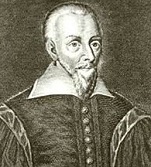
In 1531 freethinking Spanish physician Michael Servetus (1511-53) pub. On the Errors of the Trinity, containing the soundbytes: "In the Bible there is no mention of the Trinity... We get to know God, not through our proud philosophical concepts, but through Christ"; "How much this tradition of Trinity has alas, alas! been the laughing stock of Mohammedans only God knows. The Jews also shrink from giving adherence to this fancy of ours, and laugh at our foolishness about the Trinity, and on account of its blasphemies, they do not believe that this is the Messiah promised in their Law. And not only the Mohammedans and the Hebrews, but the very beasts of the field, would make fun of us, did they grasp our fantastic notion, for all the workers of the Lord bless the One God. This most burning plague, therefore, was added and superimposed, as it were, on the new gods which have recently come, which our fathers did not worship. And this plague of philosophy was brought upon us by the Greeks, for they above all men are most given to philosophy; and we, hanging upon their lips, have become philosophers, and they never understood the passages of the Scriptures which they adduced with regard to this matter"; too bad, he makes himself a target for the Catholic Inquisition and Protestants both. In 1540 after being forced to flee to Paris and change his name to Villanovus, Servetus discovers the Pulmonary Circulation of the Blood. On Oct. 27, 1553 Swiss Protestant leader John Calvin (1509-64) burns his theological enemy, Unitarian (non-Trinitarian) Catalan scholar Michael Servetus (b. 1511) (who was captured while fleeing to his protection after escaping a prison of the Spanish Inquisition) in Geneva, executioner Guillaume Farel warning the audience: "(Servetus) is a wise man who doubtless thought he was teaching the truth, but he fell into the hands of the Devil... Be careful the same thing doesn't happen to you"; liberals lose their illusions about Bible-thumpers ever lightening up anything but a faggot, and a corner is turned in the fight for freedom of conscience? at his trial Servetus is ridiculed for describing Palestine as a sparse, sterile land when the Bible says it's the land of milk and honey; noted noble Paris-educated French Protestant ex-humanist poet Theodore Beza (1519-1605) backs Calvin up, as does #1 learned scholar of the age Sebastian Castellion (Catellio) (Chateillon) (Chataillon) (Castello) (1515-63), who in May 1554 pub. the pamphlet "Should Heretics Be Persecuted?" under the alias Martinus Bellius, containing the soundbyte: "When Servetus fought with reasons and writings, he should have been repulsed by reasons and writings", and throws Calvin's words back at him when he was being persecuted by the Roman Catholic Church: ""It is unchristian to use arms against those who have been expelled from the Church, and to deny them rights common to all mankind", ending with an argument for separation of church and state, with the soundbyte: "We can live together peacefully only when we control our intolerance. Even though there will always be differences of opinion from time to time, we can at any rate come to general understandings, can love one another, and can enter the bonds of peace, pending the day when we shall attain unity of faith" - I look bad, feel bad, which is most important?


In 1531 Cahors-born French Renaissance poet Clement (Clément) Marot (1496-1544) pub. his first book of poetry L'Adolescence Clementine (Clémentine), which makes him a star. In 1541 he and John Calvin's Vezelay, Burgundy-born disciple Theodore Beza (1519-1605) pub. Trente Psaumes, a trans. of the Psalms, which becomes wildly popular and advances the cause of the Reformation after being adopted by John Calvin; condemned by the Sorbonne, making it more popular? After fleeing to Geneva then Piedmont, he dies in Turin on Sept. 12, 1544.
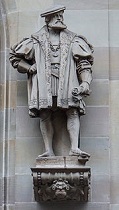
In 1531 Jacob Sturm von Sturmeck (1489-1553), one of the original Protestants who signed the petition presented to the Diet of Speyer in 1529 persuades his home city of Strasbourg to join the Schmalkaldic League.
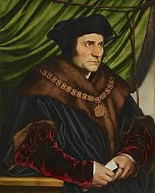
Breathe better, sleep better with Breathe Rite? The English Church formally breaks its ties with Rome? In Mar. 1532 the anticlerical Reformation Parliament, led by Henry VIII's chief minister Thomas Cromwell presents the Supplication Against the Ordinaries, a long list of grievances against the Roman Catholic Church by the ordinary people to the king, proposing that he be given the power to investigate and reform Church abuses; when clerical MPs oppose it, Henry VIII forces them to state whether their loyalty is with him or the pope, saying, "We thought that the clergy of our realm had been our subjects wholly, but now we have well perceived that they be but half our subjects, yea, and scarce our subjects"; on May 15 the Submission of the Clergy by the convocation of the English Church in Canterbury accepts Henry's claim that all ecclesiastical legislation is subject to royal approval, undoing the work of the 664 Synod of Whitby; an act is passed abolishing annates (fees newly-elected bishops pay to Rome), and setting up machinery to appoint new bishops without consulting the pope, pissing-off loyal papist, er, Roman Catholic (who lived under the Carthusian discipline in 1499-1503) Sir Thomas More (1478-1535), who resigns as lord chancellor on May 16 and retires from public life, pissing-off Henry VIII.

On May 26, 1532 the Treaty of Scheyern, negotiated and signed on behalf of Francis I of France by his humanist diplomat Guillaume (William) du Bellay, Seigneur of Langey (1491-1543) creates the League of Scheyern with the dukes of Bavaria, the elector of Saxony, and the landgrave of Hesse to unite the German princes against HRE Charles V and evict the Hapsburgs from the duchy of Wurttemberg.
In Dec. 1532 although it refuses to pay homage to Roman Catholic Poland, the ambitious Protestant Grand Duchy of Courland invades Prussia after striking a deal with Polish king Sigismund I to help return it to their control, defeating and annihilating a 5K-man Prussian army, then sieging Konigsberg, and capturing it in Dec.; meanwhile Prussia allies with the English, who land 22K troops to fight the First Battle of Memel, which is a D for the English, who lose 12K men vs. 3K for Courland, pissing-off Henry VIII and causing him to prepare another invasion force.
In 1532 the Third Diet of Nuremberg sees HRE Charles V offer the Peace of Nuremberg to the Protestant princes of the Schmalkaldic League, giving them immunity from the imperial court and the right to follow their religion until a gen. church council can meet.



On Jan. 25, 1533 after she maneuvers to wait until the last moment, Henry VIII and Anne Boleyn are secretly married in a turret in Whitehall Palace, and in Feb. she comes out of her chamber and admits to "a furious hankering to eat apples, such as she had never had in her life before", after which "she broke into a fit of hysterical laughter and rushed back into her room". On Mar. 30 twice-married obscure cleric Thomas Cranmer (1489-1556) is consecrated as archbishop of Canterbury after the papal bull Romanus Pontifex from Pope Clement VII arrives confirming his nomination by Henry VIII, thus ending clerical celibacy in the Anglican Church (Henry had blackmailed the pope by threatening to terminate the papacy's annates); not satisfied with that bone, Henry VIII, faced with the pregnancy of his royal baby factory Anne Boleyn takes the world-shaking step of breaking with the Roman Catholic Church (as to who is the boss, not the doctrines?), has the Act (Statue) in Restraint of Ecclesiastical Appeals passed on Apr. 7 to make it illegal to appeal his decision to any authority outside England, stating "This realm of England, is an empire... governed by one Supreme Head and King", then has Cranmer annul his 23-year marriage to Catherine of Aragon on May 23, and on May 28 pronounce his Jan. marriage legal, then on June 1 crown bun-in-the-oven Anne Boleyn (1507-36) as queen of England; in July the Act Concerning Ecclesiastical Appointments and Absolute Restraint of Annates (Appointment of Bishops Act) becomes effective, depriving the pope of his main source of income along with his last power in Tudor England; on July 11 Pope Clement VII excommunicates Henry VIII, which doesn't bother him one pert ducky little bit, and he sends his prelate Edmund Bonner (1500-69) (who argued Henry VIII's case a year earlier in defense of his divorce) with a notice of intent to appeal to a gen. council; meanwhile Archbishop Cranmer foreswears allegiance to the pope, directs the erasure of the pope's name from every prayer book, and pronounces himself the new head of the English Church, becoming the virtual pope of England, with most of the powers incl. the issuing of bulls (a seven deep-sixes an eight?); you-better-drop-kids-quick Queen Anne begins her Thousand Days; Catherine of Aragon, who had for some time been living under house arrest in the country has her rank reduced to princess dowager of Wales, and is forced to live in several dank and unhealthy castles for the rest of her life, starting with Ampthill in Bedfordshire, then Buckden, finally Kimbolton Castle in Huntingdonshire, while constantly being put under pressure to sign away her rights and those of her daughter Mary, which she endures religiously.

On Apr. 10, 1533 king (since 1523) Frederick I (b. 1471) dies after walking a tightrope between the Roman Catholic and Protestant camps and capturing Christian II last year as he tries for a comeback, and his strongly Lutheran son (who had been at the Diet of Worms in 1521, and was wowed by Martin Luther) Christian III (1503-59) is crowned king of Denmark and Norway next Aug. 12 (until Jan. 1, 1559) over the objection of Catholics, causing the Roman Catholic vs. Lutheran Count's Feud (Grevens Fejde) for succession in Denmark (ends 1536), with Christian III leading the Lutherans, and Count Christopher of Oldenburg (1504-66) leading the Lubecks in an effort to put Christian II on the throne; Christian II is backed by the nobles of Jutland, and Christopher by the Hanseatic League and peasants.
On May 25, 1533 19 men and six women Anabaptists are tried in St. Paul's Church in London, and 14 won't deny their faith and are condemned to be burned, with a man and a woman burned in Smithfield, and the rest sent to various towns for burning.

On Nov. 1, 1533 John Calvin (Jean Cauvin) (1509-64) delivers his first speech in Geneva attacking the Church and calling for reforms.




In 1533 Freethinking Spanish physician Michael Servetus (1511-53) pub. On the Errors of the Trinity; "In the Bible there is no mention of the Trinity... We get to know God, not through our proud philosophical concepts, but through Christ"; "How much this tradition of Trinity has alas, alas! been the laughing stock of Mohammedans only God knows. The Jews also shrink from giving adherence to this fancy of ours, and laugh at our foolishness about the Trinity, and on account of its blasphemies, they do not believe that this is the Messiah promised in their Law. And not only the Mohammedans and the Hebrews, but the very beasts of the field, would make fun of us, did they grasp our fantastic notion, for all the workers of the Lord bless the One God. This most burning plague, therefore, was added and superimposed, as it were, on the new gods which have recently come, which our fathers did not worship. And this plague of philosophy was brought upon us by the Greeks, for they above all men are most given to philosophy; and we, hanging upon their lips, have become philosophers, and they never understood the passages of the Scriptures which they adduced with regard to this matter"; makes himself a target for the Catholic Inquisition and Protestants both. In 1540 after being forced to flee to Paris and change his name to Villanovus, Servetus discovers the Pulmonary Circulation of the Blood. On Oct. 27, 1553 Swiss Protestant leader John Calvin (1509-64) burns his theological enemy, Unitarian (non-Trinitarian) Catalan scholar Michael Servetus (b. 1511) (who was captured while fleeing to his protection after escaping a prison of the Spanish Inquisition) in Geneva, executioner Guillaume Farel warning the audience: "(Servetus) is a wise man who doubtless thought he was teaching the truth, but he fell into the hands of the Devil... Be careful the same thing doesn't happen to you"; liberals lose their illusions about Bible-thumpers ever lightening up anything but a faggot, and a corner is turned in the fight for freedom of conscience? at his trial Servetus is ridiculed for describing Palestine as a sparse, sterile land when the Bible says it's the land of milk and honey; noted noble Paris-educated French Protestant ex-humanist poet Theodore Beza (1519-1605) backs Calvin up, as does #1 learned scholar of the age Sebastian Castellion (Catellio) (Chateillon) (Chataillon) (Castello) (1515-63), who in May 1554 pub. the pamphlet "Should Heretics Be Persecuted?" under the alias Martinus Bellius, containing the soundbyte: "When Servetus fought with reasons and writings, he should have been repulsed by reasons and writings", and throws Calvin's words back at him when he was being persecuted by the Roman Catholic Church: ""It is unchristian to use arms against those who have been expelled from the Church, and to deny them rights common to all mankind", ending with an argument for separation of church and state, with the soundbyte: "We can live together peacefully only when we control our intolerance. Even though there will always be differences of opinion from time to time, we can at any rate come to general understandings, can love one another, and can enter the bonds of peace, pending the day when we shall attain unity of faith" - I look bad, feel bad, which is most important?

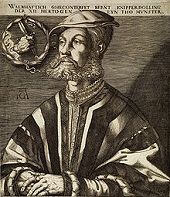
In Feb. 1534 after Melchior Hoffman prophesies the return of Christ in 1533, with Strasbourg becoming the New Jerusalem, preceded by a purging of the ungodly, the Munster (Münster) Rebellion, led by John of Leiden (1509-36) takes over Munster, Westphalia, Germany, proclaiming himself king of Munster and installing Bernhard Knipperdolling (1495-1536) as mayor until June 24, 1535, when the Lutherans retake it; Hoffman is imprisoned for life.
On Mar. 23, 1534 Pope Clement VII pronounces Catherine of Aragon's marriage valid; not to be outdone, on Mar. 23 the English Parliament passes the First Act of Succession, followed in Nov. by the Act Respecting the Oath to the Succession, vesting the English succession in the children of Henry VIII and Anne Boleyn (i.e. future Elizabeth I), and requiring everyone in England to swear allegiance to Henry VIII as the head of the English Church; Sir Thomas More is imprisoned in the Tower of London for refusing to take the oath, during which time he writes Treatise on the Passion, and Dialogue of Comfort Against Tribulation.
On Apr. 20, 1534 English Roman Catholic nun Sister Elizabeth Barton (b. 1506), "the Maid of Kent", "the Holy Maid of London", an English ecstatic (epileptic) opposed to Henry VIII's matrimonial policy is executed at Tyburn after she talks too much and claims a message from the Virgin Mary that if goes he through with his divorce of Catherine of Aragon he "should no longer be king of this realm... and should die a villain's death" within 6 mo. - thefore, doctor, take your own medicine?


On Aug. 15, 1534 as the Protestant Reformation rocks Paris, seven Roman Catholic friends incl. (St.) Ignatius of Loyola (1491-1556) and (St.) Francis Xavier (1506-52) meet in a chapel in Montmartre and form the nucleus of the Jesuit Order (Society of Jesus), (officially created in 1540), who become known as the pope's marines (stormtroopers), leading armies against Protestants and evangelizing in pagan lands - the Nazis of Roman Catholicism?
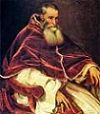
On Sept. 25, 1534 Pope (since Nov. 19, 1523) Clement VII (b. 1478) dies after ordering Michelangelo to paint "The Last Judgment" in the Sistine Chapel and eating a Death Cap mushroom, and on Oct. 13 Alessandro Farnese, "the Petticoat Cardinal" (brother of Pope Alexander VI's mistress Giulia Farnese, who had four known bastard children then allegedly was completely converted) is elected Pope (#220) Paul III (1468-1549) (until Nov. 10, 1549), becoming the last Renaissance pope (lover of nepotism, lavish banquets, arts, and all that jazz), and the first pope of the Counter-Reformation; Clement's death causes the huge dowry for Catherine de' Medici promised French king Francis I to remain unpaid, causing him to complain "The girl has come to me stark naked"; Pope Paul III has a long list of murders, incl. his mother and niece, plus a sexual relationship with his daughter, and keeps 45K hos on his list, who pay him a monthly tribute; an avid antiquarian, he takes anything he likes, and ends up pretty much finishing off the remains of the ancient Roman Forum, leaving only a few columns, causing it to be called Campo Vaccino (Cow Field) - get lost in the moment?
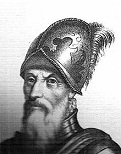
On Oct. 16, 1534 the Count's Feud in Denmark caused by the deposition and exile of Roman Catholic king Christian II in 1523 and his support by Protestant Count Christpher of Oldenburg that led to a peasant uprising in N Jutland in favor of Christian II sees Danish capt. Klemen Anderson "Skipper" Clement (1484-1536) defeat a Lutheran noble army in Svenstrup; too bad, Christian III makes a separate peace, then sends an army under his Protestant gen. Johan (Johann) Rantzau (1492-1565) to crush the peasants in Dec. in their HQ in Aalborg, massacring 2K-3K, breaking Clement on the wheel on Sept. 9, 1536 in Viborg then beheading him and placing his head on a spike with a lead crown; a statue is erected in his honor in 1931; meanwhile Christian III gets Gustav Vasa I of Sweden to send two armies to ravage C Scania and Halland, defeating the peasants at Loshult.
On Oct. 18, 1534 Parisians wake up to find Protestant placards posted around the city decrying the "insufferable abuses of the papal mass" and its "hocus-pocus" (Hoc est corpus meum) of transubstantiation; one of the placards is found on the door of Francis I's bedchamber in Amboise; the establishment launches a bitter counterattack, incl. weeks of persecution and executions.
In Nov. 1534 the First Act of Supremacy completes the breach of the Church of England with the Roman Catholic Church, with ambassador ? issuing the soundbyte: "This Act of Supremacy is no less than declaring the king to be the pope of England"; it is followed by the 1534 Treasons Act (repealed by the 1547 Treasons Act), which makes it treason to disavow the Act of Supremacy, punishable by death, which is soon used on Sir Thomas More; in practice, mere allegiance to the pope is considered treason.
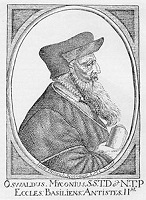
In 1534 the Confession of Basel is drafted by Swiss Protestant theologian Oswald Myconius (Molitoris = Lat. "miller") (1488-1552), who was given the name Myconius by Erasmus, alluding to the expression "bald-headed Myconian".
Hey, do us all a favor and kill yourselves? On June 10, 1535 HRE Charles V issues an Edict Against the Anabaptists; "And since it has come to our knowledge, that notwithstanding our aforesaid decrees, many and various sectarians, even some who call themselves Anabaptists, have proceeded, and still daily proceed, to spread, sow, and secretly preach their aforesaid abuses and errors, in order to allure a, great number of men and women to their' false doctrine and reprobate sect, to seduce them and to rebaptize some, to the great reproach and disregard of the sacrament of holy baptism,... and of our edicts, statutes and ordinances; therefore we, intending to guard against and remedy this, summon and command you, that, immediately upon receipt of this, you cause it to be proclaimed within every place and border of your dominions, that all those, or such as shall be found, polluted by the accursed sect of the Anabaptist, of whatever rank or condition they may be, their chief leaders, adherents, and abettors, shall incur the loss of life and property, and be brought to the most extreme punishment, without delay; namely, those who remain obstinate and,continue in their evil belief and purpose, or who have seduced to their sect and rebaptized any; also those who have been called prophets, apostles or bishops - these shall be punished with fire. All other persons who have been rebaptized, or who secretly and with premeditation have harbored any of the'aforesaid Anabaptists, and who renounce their evil purpose and belief, and are truly sorry and penitent for it, shall be executed with the sword, and the women be buried in a pit."


On June 22, 1535 after refusing to swear allegiance to Henry VIII, asserting that Parliament does not have the right to usurp papal authority in favor of a king, Roman Catholic cardinal-bishop John Fisher (b. 1469) of St. Vitalis is beheaded for treason; on July 6 Sir Thomas More (b. 1478) is ditto at Tower Hill after a trial on July 1; "I can shift for myself" on the way down, he says; another good one: "I die the king's good servant, but God's first"; parting shot: "Though you have warrant to cut off my head, you have none to cut off my beard"; Fisher and More are beatified on Dec. 29, 1886 by Pope Leo XIII, and canonized on May 19, 1935 by Pope Pius XI, and on Oct. 31, 2000 Pope John Paul II declares More the "heavenly Patron of Statesmen and Politicians"; first of the Forty Martyrs of England and Wales (1535-1679).


In June 1535 Munster capitulates to a Hessian army under Prince Bishop Count Franz von Waldeck (1491-1553) of Munster, and Roman Catholicism prevails again in Germania, er, Germany; Anabaptist leader John of Leiden (1509-36) is captured, then tortured and executed along with Bernhard Krechting (1499-1536) and Bernhard Knipperdolling (1495-1536) with red-hot tongs for an hour next Jan. 22, then killed with burning daggers to the hearts, after which their dismembered corpses are raised in three iron cages above St. Lambert's Church (Cathedral) (Lambertuskirche) in Munster, where the bones are not removed for 50 years, and the cages are left hanging to modern times.

On July 11, 1535 German Roman Catholic prince-elector of Brandenburg (1499) Joachim I Nestor (b. 1484) dies in exile in Saxony, and his eldest son Joachim II Hector (1505-71) becomes Hohenzollern prince-elector #6 of Brandenburg (until Jan. 3, 1571), reneging on his contract with his father to remain Roman Catholic and officially going Lutheran in 1555.

In autumn 1535 the first complete printed English Bibles translated by William Tyndale and Miles Coverdale appear in England; Thomas Cromwell (1485-1540) is appointed vicar-gen. (vice-regent) of England, and commissions Coverdale to prepare an official vers. for the Anglican Church (finished 1539).
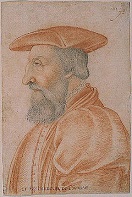
In 1535 in France the Chambre Ardente (Burning Chamber) is created for the trial of heretics by wealthy Jean de Lorraine, Cardinal of Lorraine (1498-1550); during the reign of Henri II (1547-59) it becomes infamous for its atrocities against Huguenots.
In 1535 John Calvin (1509-64) pub. Commentary on the Epistle to the Romans.

On Mar. 31, 1536 after Protestant Geneva revolts against the authority of the duchy of Savoy and repudiates the authority of its Roman Catholic bishop, Swiss forces from Bern under Hans Franz Nageli (Nägeli) (1497-1579) take Lausanne, followed by Vaud (N of Lake Geneva) and other territories from Savoy, who all join the Swiss Confederation; the Bernese who conquer Vaud release writer Francois Bonivard (1493-1570), "the Prisoner of Chillon", who goes Protestant after four years of captivity.
On May 29, 1536 after a meeting between Martin Luther and Protestant leaders from S Germany led by Martin Bucer (1491-1551), the Wittenberg Concord is signed; too bad, Bucer later disavows it on petty technicalities.
In July 1536 after sieging Malmo and Copenhagen, Christian III defeats Count Christopher of Oldenburg, then on Aug. 12 stages a coup on his Roman Catholic-dominated council of state, arresting three bishops, ending the Counts' Feud (begun 1634), officially establishing the Lutheran Church in Denmark and Norway on Oct. 30, and earning him a congratulatory letter from Martin Luther; he pays for the cost of the war by confiscating the property of the Roman Catholic bishops, who are imprisoned until they agree to marry and give up their privileges, although some die in prison in protest; too bad, he uses German mercenaries, who go on to spoil Roman Catholic churches, making the king and his nobles rich, but stinking up Lutheranism, and drawing condemnation from Luther himself; for the next six years German counselors dominate the king, causing a war over control of the kingdom (ends 1542); Iceland also goes Lutheran - it's hard to resist, very hard?

On Oct. 6, 1536 after being condemned in Brussels at the behest of Henry VIII, Lutheran sympathizer William Tyndale (b. 1494) is strangled and then burned at the stake by the Old Skool, who consider the Bible dangerous in the hands of the unlearned for making an "illegal" English trans. of the Bible; his last words: "Lord, open the king of England's eyes".
In 1536 the English Parliament declares the authority of the pope void in England; meanwhile in Oct. after Henry VIII orders the Dissolution (Suppression) of the Monasteries (ends 1541), causing 376 religious houses in England to be dissolved by royal decree, the Pilgrimage of Grace in Yorkshire sees 40K men led by lawyer Robert Aske (1500-37) of Doncaster march through N England protesting the looting of the churches and monasteries by Henry's iconoclastic govt., also seeking relief from tax collectors; pro-Roman Catholic Thomas Howard, 3rd duke of Norfolk negotiates their surrender; Don't Aske is executed for treason next July 12; meanwhile Thomas Cromwell rises to Baron Cromwell of Oakham and Lord Privy Seal, setting up a bureaucratic machine to administer all the income generated by selling Church land and closing monasteries; too bad his big schmuck arrogance and venality causes him to make a lot of enemies; Thomas Mildmay (1515-66) gets a lucrative job as royal admin. of the ecclesiastical revenues annexed to the crown, allowing him to later set up his son Walter Mildmay as privy chancellor and chancellor of the exchequer under Elizabeth I; next year Henry VIII introduces legislation in the Irish Parliament to close the monasteries, which faces considerable opposition, causing only 16 of 400 to be closed, but after regrouping he gets about half closed by the time of his death in 1547 - magic green, cleans like magic?
In 1536 French Protestant William (Guillaume) (Guilhem) Farel (1489-1565) persuades John Calvin to remain in Geneva; after their expulsion in 1538, he talks him into returning in 1541, turning Geneva into the Protestant Rome.
In 1536 Finnish Catholic Bishop Skytte sends Michael Agricola to Wittenberg, Germany to study theology and language, and he begins translating the Bible into Finnish with the approval of Swedish King Gustavus I.
In 1536 John Calvin pub. Institutes of the Christian Religion (Christianae Religionis Institutio) (definitive ed. 1559), the founding document of his Reformed Church, pub. in Geneva, making converts in Paris, Lyons, Grenoble, et al. and becoming a roadmap of Protestant thought.
In Feb. 1537 Martin Luther writes the Smalcald Articles questioning the primacy of the pope/pontiff/pontifex maximus, which are presented to a meeting of the Schmalkaldic League.
On Aug. 12, 1537 Lutheran Danish-Norwegian king (1534-59) Christian III is finally crowned in Copenhagen Cathedral - pope not invited?
In 1537 Martin Luther pub. Table Talk (Colloquia Mensalia, or Divine Discourses at His Table), which is full of golden nuggets of wisdom, e.g., "If a Jew, not converted at heart, were to ask baptism at my hands, I would take him to the bridge, tie a stone round his neck, and hurl him into the river; for those wretches are wont to make a jest of our religion."
In 1537 Martin Luther gives a sermon in which he becomes the first to attribute the authorship of the Epistle to the Hebrews in the New Testament not to Apostle Paul but to Apollos of Alexandria, who is mentioned in Acts 18:24-28.
In 1538 Henry VIII ensures the popularity of the Anglican Church by abolishing the Roman Catholic monasteries, relics, and shrines in S England and sharing the loot with his non-Catholic pop.; Thomas Cranmer carries out his orders for the desecration of the profitable shrine of St. Thomas Becket in Canterbury Cathedral (incl. burning his bones after he is summoned to face charges of treason and fails to appear in court and is found guilty in absentia, his shrine's treasures carried away in two coffers and 26 carts), and the abolition of many Roman Catholic church festivals; on Jan. 23, 1888 a skeleton is found in Becket's crypt of a 6'2" 50-y.-o. man with a fractured skull, but since it doesn't fit the eyewitness descriptions that the crown of his head was knocked off, the jury is still out; in Sept. informed that he needs his own non-Catholic Bible to prove his independence from the papacy, Henry is handed a copy of dead Tyndale's "illegal" Bible (printed in Paris) without knowing it, and approves it, and the English govt. directs every parish in England to purchase a Tyndale Bible of the largest size possible, to be set up in each church for easy reading by parishoners; Cranmer goes on to work to unite the new Church of England with the German Lutheran Church, and invites Protestant refugees to England, incl. Peter Martyr (Pietro Martire Vermigli), and Bernardino Ochino.
In 1538 John Calvin is expelled from Geneva and settles in Strasbourg, Germany; meanwhile the Lutheran U. of Strasbourg in Alsace, France is founded by Johannes (Jean) Sturm (1507-89) as the first humanistic Protestant Gymnasium, becoming a univ. in 1621 and a royal univ. in 1631, becoming the 2nd largest univ. in France in modern times after Aix-Marseille U.; students incl. Angelus Silesius and Johann Wolfgang von Goethe.

On Apr. 17, 1539 Roman Catholic Saxon duke (since 1500) George the Bearded (b. 1471) dies, and his Protestant brother Henry IV the Pious (1473-1541) becomes duke of Saxony (until Aug. 18, 1541), making Lutheranism the state religion.
In Apr. 1539 the Statute of Six Articles (against Lutheranism), engineered by Thomas Cromwell is passed; Hugh Latimer resigns as bishop of Worcester in July; Edmund Bonner is made bishop of London, supporting Henry VIII's doctrine of the supremacy of the king in both spiritual and temporal matters; Cromwell rises to Lord Great Chamberlain - meaning, one mistake and he loses his head?

In fall 1539 Myles (Miles) Coverdale (1488-1569) pub. The Great Bible, the first English Bible, commissioned by Thomas Cromwell and pub. by the English govt., becoming the official English version for the Anglican Church; the cover shows Henry VIII at the top, with Christ whispering into his ear as he passes on the word of God to Archbishop Cranmer and Cromwell, who passes it to the clery and laymen, who cry "Vivat Rex" (God save the king); Cromwell orders one to be housed in every church in England; "Go to now (most dear reader) and sit thee down at the Lord's feet and read his words, and, as Moses teacheth the Jews, take them into thine heart, and let thy talking and communication be of them when thou sittest in thine house, or goest by the way, when thou lyest down, and when thou riseth up. And above all things fashion thy life and conversation according to the doctrine of the holy ghost therein." (preface)
In 1539 the first Christmas Tree is displayed in Strasbourg Cathedral; meant to represent the Garden of Eden, it is hung with apples.
In 1539 Martin Bucer (1491-1551) pub. his Strasburg Liturgy for public confession of sins; "This is a faithful saying, and worthy of all acceptance: that Christ Jesus came into the world to save sinners." (1 Tim. 1:15)
In fall 1539 Miles Coverdale (1488-1569) pub. The Great Bible, the first English Bible, commissioned by Thomas Cromwell and pub. by the English govt., becoming the official English version for the Anglican Church; the cover shows Henry VIII at the top, with Christ whispering into his ear as he passes on the word of God to Archbishop Cranmer and Cromwell, who passes it to the clery and laymen, who cry "Vivat Rex" (God save the king); Cromwell orders one to be housed in every church in England; "Go to now (most dear reader) and sit thee down at the Lord's feet and read his words, and, as Moses teacheth the Jews, take them into thine heart, and let thy talking and communication be of them when thou sittest in thine house, or goest by the way, when thou lyest down, and when thou riseth up. And above all things fashion thy life and conversation according to the doctrine of the holy ghost therein." (preface)
In the 1540s the Protestant Reformation is introduced to Brandenburg, Germany, and its electors become leading champions of the Protestant cause.




I can't see me loving nobody but you, for all of, er, some of my life? Grand Canyon jokes here? On Jan. 1, 1540 Henry VIII has a comical meeting with Anne of Cleves (1515-57) in disguise in Rochester, and finds her portrait quite exaggerated and her person loathsome, then tries to back out of his marriage, but power politics prevents him, and on Jan. 6 he reluctantly marries his 4th wife to bring about an alliance with a German principality and counter the Treaty of Toledo; in Apr. Henry creates his chief minister Thomas Cromwell (b. 1485) the earl of Essex, then turns on him after having many impotent nights with his new wife (who has big floppy duckies instead of pert little ones like he likes?, blaming him for hooking him up with an ogre, letting Cromwell's enemies loose on him; on June 10 Cromwell's archenemy, lord treasurer Thomas Howard, 3rd Duke of Norfolk (1473-1554) arrests him for treason, and Parliament turns on him too; meanwhile on July 9 Henry divorces Anne at the convocation of Canterbury and York, giving her the title of "My Lady the Queen's Sister", then on July 30 secretly marries his real lover, the very tight and right Catherine Howard (1521-42) (his 5th wife), Anne Boleyn's cousin, and niece of Thomas Howard, 3rd duke of Norfolk; the same day Thomas Cromwell is executed after reconverting to Roman Catholicism, and Norfolk becomes his successor; the same day English Lutheran Robert Barnes (b. 1495) is burned at the stake; Bible translator Miles Coverdale flees to the Continent for the next eight years (until 1548); too bad, Catherine begins secretly hooking up with handsome young stud Thomas Culpeper (1514-41) with the aid of her lady-in-waiting Jane Boleyn, Viscountess Rochford (1505-42), widowed sister-in-law of Anne Boleyn - moral: please the head of your nation or you could lose yours?

In 1540 the Antinomian Controversy in Germany (how faith in Christ frees believers from all obligation to observe the moral laws of the Old Testament, therefore let's do it here now and not worry about it) ends when its backer Johann Agricola (Schnitter) (1494-1566) pub. a retraction (of course being no longer obligated doesn't mean that one shouldn't do it voluntarily, since Christ is in the heart now, therefore to go against his will would be a sin against the Holy Spirit and therefore unforgivable?) - crying out, Merry Christmas, my friend?

In 1541 religious conference is held in Ratisbon in Germany, where Johann Eck continues defending Roman Catholicism; meanwhile John Calvin (1509-64) returns to Geneva, which until his death in 1564 becomes his stronghold, and founds the Presbyterian Church, which spreads to Scotland in 1560 via his disciple John Knox, and becomes the state church of Scotland in 1592 - they were smart enough to abandon the corrupt Mother Church, but not smart enough to avoid becoming established churches that persecute enemies like it does?
In 1541 the Scottish Parliament passes laws to protect the honor of the Mass, prayer to the Virgin Mary, images of the saints, and the authority of the pope.


In 1541 Roman Catholic anti-Lutheran theologian Johann Maier (Mayer) von Eck (1486-1543) pub. Against the Defenses of the Jews, a virulent anti-Semitic pamphlet claiming that any attempt by "Jew protector" Andreas Osiander to claim that the "blasphemous race" doesn't kill Christian kids and desecrate the eucharistic host is full of scheisse; "Could they but drown all Christians in one spoon, they would eagerly do it"; a Roman Catholic equals or bests Martin Luther in anti-Semitic rhetoric? In 1543 one-upper Martin Luther (1483-1546) pub. On the Jews and Their Lies, which calls for their Nazi-like persecution incl. pogroms 400 years before the little-miss-sunshine Nazis, causing their persecution and expulsion from Prague, Worms, Vienna, Genoa, and the papal states over the next 130 years; "A base, whoring people, that is, no people of God, and their boast of lineage, circumcision, and law must be counted as filth"; "Full of the Devil's feces... which they wallow in like swine" (synagogues); "Incorrigible whore and an evil slut."
In summer 1542 after pissed-off Roman Catholic peasants in Smaland in S Sweden under the leadership of Nils Dacke (-1543) start the Dacke War, a revolt against Lutheran king Gustavus I; in Aug. 1543 Dacke is killed, and the revolt is quashed.
On July 21, 1542 Pope Paul III proclaims the apostolic consttution Liect ab initio, establishing the Holy Office (originally Supreme Sacred Congregation of the Roman and Universal Inquisition until 1908, then Holy Office until Dec. 7, 1965, then Sacred Congregation for the Doctrine of the Faith until 1983, then Congregation for the Doctrine of the Faith) in Rome "to maintain and defend the integrity of the faith and to examine and proscribe errors and false doctrines", in practice used to intercept appeals from defendants of the Inquisition and forward them directly to the Holy See, ending up being used to speed up the persecution of scientists promoting Copernicus' heliocentric system - I'm feeling really nonjudgmental today?

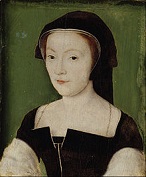
On Nov. 24, 1542 after a 15K-18K-man Scottish army under Robert Maxwell, 4th Lord Maxwell (1493-1546) (one of the ambassadors sent to France in 1537 to negotiate the marriage of James V to Mary of Guise) attempts to invade England, it is routed at the Battle of Solway Moss by a 3K-man English force led by Sir Thomas Wharton, 1st Baron Wharton (1495-1568) after James V unexpectedly places his favorite Sir Oliver Sinclair de Pitcairnis (St. Clair) (-1576) of Roslin (grandson of the Oliver Sinclair who completed Rosslyn Chapel in the 1480s) in charge of the Scottish army, who don't respect him and abandon the field, after which he is caught between a bog and a river, giving up after only a few are killed, Sinclair being captured along with 1.2K POWs, incl. Lord Maxwell and his eldest son Robert, who are kept as insurance for many years, the English rumoring that he preferred to be captured rather than face mean 30-y.-o. James V (b. 1511), who remains behind in Lochmaben, then hides in Falkland Palace in Fife, where he contracts a fever, then "turns his face to the wall and dies" (another untimely Stewart death) on Dec. 14 (same place where David Stewart was starved to death in 1402, then remodeled in the French style by James V), six days after the disappointing Dec. 8 birth in Linlithgow Palace (overlooking Loch Lothian) of Mary Stuart (Stewart), Queen of Scots (1542-87) to his French-born wife Mary of Guise (1515-60), who had borne sons James in 1540 and Arthur in 1541 only to see them both die in 1541, exactly like James IV's first two sons of the same names; on Dec. 14 Mary Stuart is declared queen, with James Hamilton, 2nd earl of Arran appointed gov. (regent); John Knox later claims that on his deathbed James V hears of the birth, then says, "It cam wi' a lass and it'l gang wi' a lass"; Sir Walter Scott later claims he used to visit his subjects incognito as "the guidman of Ballengreich".
In 1542 HRE Charles V offers a 100 guilders reward for the arrest of Mennonite founder Menno Simons; by the year 2000 there are 1.3M Mennonites (why not Simonites?) in 65 countries, opposing the taking of oaths, military and govt. service, and favoring plain dress and living - the original Jehovah's Witnesses without the door-knocking?


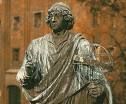

The original Coppertone Baby kept his ass out of the Sun on purpose? On May 24, 1543 (May 14 Old Style) (Mon.) Nicolaus Copernicus (Lat. "copper worker") (b. 1473) dies in Frombork, Poland after allegedly awakening from a stroke-induced coma long enough to view the first printed copy of his magnum opus Six Books on the Revolutions of the Celestial Orbits (De Revolutionibus Orbium Coelestium), advancing the Heliocentric Theory (which he had shelved, claiming it to be incomplete or even erroneous, but more likely afraid of Catholic reprisals?), which was pushed through the press by his one and only pupil Georg Joachim Rheticus (Rhaeticus) (von Lauchen) (1514-74) (a Lutheran math prof. whose father had been executed for heresy), and is pub. posth. in safe Protestant Nuremberg; it is (fawningly?) dedicated to Pope Paul III, and incl. a cautious (mendacious?) Preface by Andreas Osiander (1498-1552) of Konigsberg, stating that the revolution of the Earth is a mere mathematical convenience and not necessarily a physical fact (although Coppertone Baby had considered it otherwise?); "There have already been widespread reports about the novel hypotheses of this work, which declares that the Earth moves whereas the Sun is at rest in the center of the Universe. Hence certain scholars, I have no doubt, are deeply offended and believe that the liberal arts, which were established long ago on a sound basis, should not be thrown into confusion. But if these men are willing to examine the matter closely, they will find that the author of this work has done nothing blameworthy. For it is the duty of an astronomer to compose the history of the celestial motions through careful and expert study. Then he must conceive and devise the causes of these motions or hypotheses about them. Since he cannot in any way attain to the true causes, he will adopt whatever suppositions enable the motions to be computed correctly from the principles of geometry for the future as well as for the past. The present author has performed both these duties excellently. For these hypotheses need not be true nor even probable. On the contrary, if they provide a calculus consistent with the observations, that alone is enough. Perhaps there is someone who is so ignorant of geometry and optics that he regards the epicyclc of Venus as probable, or thinks that it is the reason why Venus sometimes precedes and sometimes follows the Sun by forty degrees and even more. Is there anyone who is not aware that from this assumption it necessarily follows that the diameter of the planet at perigee should appear more than four times, and the body of the planet more than sixteen times, as great as at apogee?";the kind of reception awaiting Copernicus' followers is shown right away, when the first Auto da Fe, AKA Act of Faith, or burning alive of heretics (Protestants) by the Spanish Inquisition dressed in weird sinister hoods takes place in the island of Goa in SW India (goa to Hell, you heretics?), and Pope Paul III issues his first Index Librorum Prohibitorum (Index of Prohibited Books); each lucky heretic gets to wear a black sanbenito painted with flames and devils to his own BBQ - toast them marshmallows on a stick, hooray for Christ?

On Sept. 9, 1543 Mary Stuart (1542-87) is crowned queen of Scotland in Stirling (until July 24, 1567), becoming known as Mary, Queen of Scots; too bad, within months her betrothal is cancelled by the Scottish Parliament under urging of her pro-Roman Catholic guardians; Henry VIII responds with plans to occupy S and E Scotland in the Rough Wooing, causing Mary to be kept in Stirling for safety, driving Scotland back into the arms of the French; the Scottish Parliament removes the prohibition against vernacular Bibles.

In 1543 Nimjegen, Netherlands-born (St.) Peter Canisius (1521-97) becomes the first German to join the Jesuits, going on to become a leader of the Counter-Reformation.
Speaking of Prohibited Books? In 1543 the Spirituali Movement in Rome, which hopes to reform the Church without splitting like the Protestants pub. the anon. The Benefit of Christ's Death (Beneficio di Cristo), their masterpiece proving that salvation comes through faith in Christ alone, not through works or the Church; after they pub. 40K copies, the Church declares it heretical and places it on the Prohibied Index and starts to come down on them, but Pope Julius III purposely slows down the Inquisition until his death, after which Pope Julius IV lets the dogs loose and exterminates them by the 1560s.
In 1543 the Scottish Parliament removes the prohibition against vernacular Bibles.
In 1544 the Succession Parliament meets in Vasteras, Sweden, and the estates agree on several Reformation principles, eliminating Masses, many holy days, holy water, incense, and adoration of the saints.
In 1544 Bishop George Martinuzzi of Grosswardein gets legislation passed in Siebenburgen, Hungary preventing the spread of Protestantism, but co-regent Peter Petrovich gets its enforcement stopped.
In 1544 Duke Albrecht of Hohenzollern decrees that the Polish people of his lands should receive a Polish trans. of the Bible, but takes until 1550 to find a translator.
In 1545 Francis I vows to invade England to force it to give up its lands in France, and authorizes the first official persecution of the Protestant Huguenots, ordering the Provence Parliament's Arret de Merindol of Nov. 18, 1541 executed in the Massacre of Merindol (Massacre of Mérindol) in Apr. to punish the pesky Waldensians for their religion, with Provencal and Papal soldiers killing hundreds (thousands?).


On Dec. 13, 1545 the Council of Trent (19th Ecumenical Council), called by Pope Pius III convenes in Trent in N Italy (until Dec. 4, 1563) to discuss the pesky Reformation started by almost-gone Martin Luther (d. 1546), launching the bloody Counter-Reformation (ends 1648), with Monktown Munich as one of the main bases; three papal legates are sent by Pope Paul III to preside, incl. Cardinal Reginald Pole (1500-58) of England, who is considered next in line for the papacy although he is a secret member of the Spirituali; one good thing, it authorizes Pope Paul III to take up the 1475 work of Pope Sixtus IV and reform the pokey Julian Calendar, and it only takes 37 more years to figure out and implement (1582) - these changes in attitude, changes in attitude, nothing remains the same?

In 1545 40-y.-o. U. of Glasgow grad John Knox (1505-72) comes under the influence of religious reformer George Wishart, who is preaching the Lutheran Reformation in Scotland, and becomes a Protestant minister preaching in the castle and parish church of St. Andrews.
In 1546 Roman bishops at the Council of Trent decide that the Church "venerates equally" the Bible and written and unwritten traditions, thus beginning the Tridentine Church, the modern Roman Catholic Church; the Apocrypha are decreed to be of "equal veneration" with the other books of the Bible, and an anathema is pronounced against all who do not receive them as sacred and canonical; failing to agree whether vernacular translations of the Bible are "the mother and origin of all heresies" or that prohibition would give Protestants ammunition in claiming that the Church is attempting to hide "fraud and deceit", the Latin Vulgate trans. is sanctioned as the standard text for the Church, stifling vernacular translations by default - if it makes you happy then why the hell are you so sad?

On Feb. 18, 1546 Martin Luther (b. 1483) dies in his birthplace of Eisleben; Pomeranian Protestant leader Johannes Bugenhagen (1485-1558), whom Luther calls "Doktor Pomeranus" takes care of his widow and children.


On Mar. 1, 1546 Scottish Calvinist George Wishart (b. 1513) is burned at the stake for heresy in front of St. Andrews; on May 29 St. Andrews is attacked by Wishart's supporters, and Cardinal David Beaton (b. 1494) is killed in revenge.

Break out those Spanish-English lexicons? On July 16, 1546 Protestant martyr Anne Askew (b. 1521), after becoming the first woman tortured (racked) in the Tower is burned at the stake in the last days of Henry VIII at Smithfield.
In 1546 the Schmalkaldic War (civil war) (ends 1547) begins in Germany between HRE Charles V and the Schmalkaldic League, headed by elector Frederick III the Pious, Johann Frederick the Magnanimous, and Philip of Hesse over the territories of Ernestine Saxony, and Albertine Saxony, which although Lutheran sides with Charles V, who rewards them by forcing the Ernestines to sign their rights to the electorship to them.
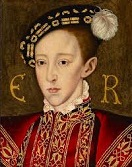

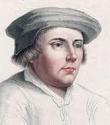
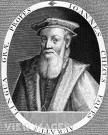
The Seymours see more ups and downs than a roller coaster, but how 'bout them Howards? On Jan. 28, 1547 bloated bloody tyrant (since Apr. 22, 1509) Henry VIII (b. 1491) of England (who saw it all, Columbus, Copernicus, Luther, etc.) dies in London (of syphilis?), with archbishop Thomas Cranmer at his side, after 72K are executed during his reign, incl. by burning at the stake, boiling alive, hanging and decapitation, leaving some memorable poetry (although no legitimate grandchildren, not that he didn't try?), and is succeeded by his sickly 9-y.-o. son (by Jane Seymour) (was it aged spermatozoa?) Edward VI (1537-53) (Britain's 41st monarch) (until July 6, 1553), with his uncle Edward Seymour, 1st Duke of Somerset (1506-52) appointed lord protector of the realm (until 1549) by the royal council and created 1st duke of Somerset on Feb. 15; Henry's will names Thomas Cranmer as one of the regents; Catherine Parr survives him by less than two years, and Anne of Cleves by 10; "King Henry VII, to six wives he was wedded, one died, one survived, two divorced, two beheaded" (CAJACC); Henry Howard, 1st earl of Surrey is executed for treason, and his father Thomas Howard, duke of Norfolk signs a confession of complicity and is scheduled for execution in Norfolk, but his neck is saved by the death of the king, causing him to be imprisoned in the Tower of London; Sir Richard Rich (1496-1560) becomes executor of Henry VIII's will, and next Feb. 26 is created baron Rich of Leez, then in Mar. becomes lord chancellor; Greek geek Sir John Cheke (Cheek) (1514-57) becomes Edward's tutor, although after his daddy's personal example nobody can stop him from believing that the king has a divine right to rule and to control the nat. church, writing at age 12 (1549) that the pope is the "true son of the devil, a bad man, and the Antichrist", and seeking to establish Protestantism.
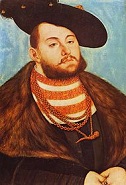
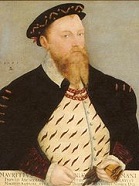

On Apr. 24, 1547 after Protestant elector John Frederick I the Magnanimous (1503-54) of Saxony marches his army S to fight the pesky Roman Catholics, and is invaded by his Catholic cousin Duke Maurice I (1521-53) (Catholic father and Protestant mother), then returns quickly to repel him, HRE Charles V's armies, commanded by up-and-coming Spanish noble gen. Fernando Alvarez de Toledo, Duke of Alva (Alba) (1508-82) rush N, surprise and brilliantly defeat him at the Battle of Muhlberg (Mühlberg), taking Magnum P.I. POW, becoming the final battle in Charles V's campaign to rid the HRE of pesky Lutheranism, ending the Schmalkaldic War (begun 1546); he then sieges Magnanimous' pretty and fecund wife Sybille of Cleves (1512-54) and her three sons in the town where it all started Wittenberg, forcing him to protect them (it?) (himself?) by signing the Capitulation of Wittenberg, resigning the town and his electorship as head of the Ernestine line of the house of Wettin to Maurice, head of the rival Albertine line (which lost it in 1485); after his death sentence is reduced to life in priz, Magnanimous earns his nickname by refusing to give up the Protestant faith or acknowledge the Augsburg Interim for a quick release, uttering the soundbyte that it would be "a sin against the Holy Ghost, because in many articles it was against the Word of God"; meanwhile the Albertine court in Dresden replaces Wittenberg as the capital of Saxony, causing it to decline; the big D causes many Lutheran princes and key reformers incl. Martin Bucer to flee to England, where they influence the English Reformation - the Saxons always did like to do things strong or not at all?

In Apr. 1547 brand-new Protestant John Knox (1513-72) has his first public debate with papists in St. Andrews; on July 30 St. Andrews is retaken by a French fleet, and Knox spends 19 mo. in French galleys (until 1549).
In 1547 after Francis I dies, a reaction against free thought begins in France, causing Francois Rabelais to flee to Metz then Rome, but Cardinal de Lorraine works his return, and gets him the living of Meudon, where he spends the rest of his life; French supersedes Latin as the official language of French authorities; meanwhile PC-challenged Nostradamus moves to Salon, likes it and decides to live there for the rest of his life, but first he is called to Lyons to cure another pestilence (whooping cough?), returning by Nov., and marrying rich widow Anne Ponsart Gemelle, then settling down on the Place de la Poisonniere, where he goes into regular trances, and in 1554 begins writing his Centuries (1st ed. 1555), consisting of 100 prophetic quatrains in several languages (French, Provencal, Italian, Greek, Latin) in each of ten vols. (vol. 7 is never completed, and vols. 11-12 are planned but left unfinished at his death); Beaune mayor Jean Aymes de Chavigny quits his job to study under Nostradamus (1503-66), later editing the first complete ed. of the Centuries. Jean Goujon (1515-60) collaborates with Pierre Lescot on the Louvre and the Church of St. Germain l'Auxerrois in Paris (until 1562).
Since I got in the loop I can see the future? On May 15, 1548 HRE Charles V decrees the Interim of Augsburg, an attempt to define a brand of Roman Catholicism acceptable to Lutherans without offending er, real Catholics too much, and the Augsburg Diet adopts it on June 30; Maurice of Saxony modifies it into the Interim of Leipzig.
In Mar. 1549 John Knox is released from the French galleys after 19 mo. at the intercession of Edward VI, and goes to England, where he is appointed to the reformed Church of England at Berwick; with his help, the first Book of Common Prayer is introduced by Archbishop of Canterbury Thomas Cranmer (1489-1556) on the Day of Pentecost, along with the First Act of Uniformity (2nd 1552) (backed by Edward Seymour, passed by a close 10-8 vote of the bishops), banning all Latin-language Roman Catholic missals and liturgical books, and requiring the use of the Book of Common Prayer starting on May 20, emphasizing the peoples' participation in the Eucharist, and requiring the Bible to be read in English from cover to cover, sparking the Prayer Book Rebellion in Cornwall and Devon by 7K, causing 8.6K English troops incl. German and Italian mercenaries to be brought in by Edward VI, massacring 2K+; the Prayer Book prints special holy days in red ink, causing the term "red letter day" to become popular, although the Roman Catholic Church was already doing it (they call it rubrics) - you better not mess with Major Tom?
In 1549 John Calvin and the Zwinglians reach the Consensus Tigurinus on Holy Communion in Zurich.

1550 On Feb. 8, 1550 after Cardinal Reginald Pole comes within one vote until he is exposed by his archenemy Cardinal Giovanni Carafa (future Pope Paul IV) as a Spirituali, Gianmaria (Giovanni) Ciocchi del Monte is elected Pope (#221) Julius III (1487-1555), who likes to sodomize young boys, appointing some of his favorite teenie bonks as cardinals, and going on to bonk his own illegitimate on Bertuccino, causing Cardinal Giovanni della Casa to dedicate his poem In Praise of Sodomy to him - sign me a copy with your brown holy finger?

On Mar. 7, 1550 Bavarian duke William IV (b. 1493) dies, and his son Albert (Albrecht) V (1528-79) becomes duke of Bavaria (until Oct. 24, 1579), going on to become a leader of the German Counter-Reformation.
So much for the Renaissance, let's start this half-century with blood and fire? Talk about mentally unstable sadists? In Apr. 1550 HRE Charles V issues the Eternal Edict Against Heresy of 1550, to be "published forever, once in every six months, in every city and village of the Netherlands", forbidding all meetings in homes for the purpose of religious worship, all reading of the Bible, and all discussion of controversial religious matters; punishment is burning alive, unless one repents, in which case if they are male they are to be beheaded, and if female to be buried alive; death can be escaped only by feeding others to the flames by betraying them; officials showing leniency or mercy are to be removed from office and punished likewise; during Charles V's 40-year rule 50K-100K Netherlanders perish in his cheery little Inquisition.
On Nov. 7, 1550 bishop of Holar, Iceland (since 1522) Jon Arason (b. 1484) is killed by Lutherans, becoming the last Roman Catholic bishop of Iceland, uttering the immortal Icelandic soundbyte: "That I know, little Sveinn" before being beheaded after being told "There is a life after this one, sir"; Denmark forces Iceland to disown Roman Catholicism and adopt Lutheranism - welcome back to dancing with the stars?
In 1550 the Formula of the Institute, the founding manifesto of the Jesuits changes "propagation of the faith" to "defense and propagation of the faith" as one of its goals, and the battle is on with those *!?*! Protestant heretics - too bad, the cat is out of the bag: only 440 years to the porno-saturated worldwide Internet?
In 1551 the second session of the Council of Trent opens; interrupted 18x, it doesn't finish its work of counter-reformation for 18 years.
In 1551 John Knox is appointed royal chaplain, going on to work to make the English church more strongly Protestant.

In 1551 French scholar Petrus Ramus (1515-72), who had already pissed-off the Catholic theologians with his criticism of Aristotle in 1543 gets the Cardinal of Lorraine to get him a chair of rhetoric and philosophy at the College de France; he then pisses-off the cardinal by adjuring Roman Catholicism and embracing Protestantism, ending up fleeing to Germany then Switzerland (until 1571).

In 1551 Paris printer Robert Estienne (Robertus Stephanus) (1503-59) (Roman Catholic-turned-Protestant) introduces the modern verse division of the Bible in his 4th ed. of the Greek New Testament; to give God his due the divisions are sometimes caused by his horse hitting a bump in the road as he works on horseback? - pesky Protestants can now cite chapter and verse in their arguments against Church authorities, who don't accept their paradigm that the Bible is all there is to God's Word?
On Aug. 31, 1552 the Collegium Germanicum et Hungaricum seminary for German-speaking priests is established in Rome by Pope Julius III via the bull Dum solicita; the official Jesuit doctrine is laid down as follows: "To search out the hidden venom of heretical doctrine and to refute it, and then to replant the uprooted trunk of the tree of faith" - hand me some holy fire and axes?
In Aug. 1552 Ferdinand I arranges the Peace (Treaty) of Passau to end the quarrel between his Roman Catholic brother HRE Charles V and elector Maurice I of Saxony, leader of the Protestants, guaranteeing free exercise of the Lutheran faith pending the full settlement of ecclesiastical differences by the 1555 Diet of Augsburg; in later years it is used as an excuse for Protestants to secularize Roman Catholic Church property - pass it out piece by piece?
In 1552 the Book of Common Prayer of Edward VI is revised by Canterbury Archbishop Thomas Cranmer to suit Protestants, complete with no real presence of the Eucharist, although the Black Rubric permits kneeling; no vestments, no signing of the cross at confirmation, no holy oil, no reserved sacraments, no prayers for the departed; Cranmer also writes the Forty-Two Articles of Faith (later reduced to 39) for the Church of England, representing the zenith of Calvinist thought; too bad, after Edward VI dies next year, Mary I makes sure they are never put into action - take out the stuff about adultery?
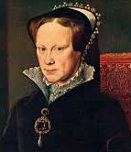

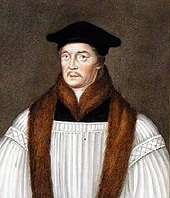


Nausea, heartburn, indigestion, upset stomach, diarrhea, Bloody Mary is maximum pink? Or, hit it, Mrs. Church? On May 25, 1553 as part of a Protestant plot by John Dudley, duke of Northumberland, 15-y.-o. Lady Jane Grey (1537-54) (cousin of Edward VI, great-niece of Henry VIII, and great-granddaughter of Henry VII) (who knows Latin, Greek, and Hebrew) marries his son Guilford (Guildford) Dudley (1536-54), brother of horsemaster Robert Dudley, earl of Leicester; on July 6 after the king's council signs the handwritten King's Device, English king (since 1547) Edward VI (b. 1537) dies of TB; in it he passes over his half-sisters Mary Tudor and Elizabeth for Protestant Lady Jane Grey (1537-54) ("the 9-day queen") (sometimes called the 13-day queen when July 6 is counted), and after Thomas Cranmer forgives his pledge to carry out Henry VIII's will giving it to Mary Tudor, she is proclaimed queen on July 10 in the Tower, and struts her royal stuff until July 19 (never leaving the Tower), with Edward's Greek tutor Sir John Cheke as secy. of state; John Dudley tries to capture Mary in Norfolk and is instead captured in July; meanwhile Mary gathers her forces in East Anglia, and on July 19 after being accompanied by a large force to London along with future Elizabeth I, militant Roman Catholic Mary I Tudor (1516-58), duchess of Suffolk (granddaughter of Ferdinand II and Isabella I the Catholics), later known as Bloody Mary is proclaimed queen (the 42nd British monarch) (until Nov. 17, 1558); the military show of support causes Lady Jane Grey's supporters to fold, and she and her husband are arrested on July 20; Mary I is crowned on Oct. 30 in Winchester Cathedral, immediately signalling a return to Roman Catholicism, and signing a marriage treaty with her cousin Philip II of Spain, promising him the title of King of England without the powers or the succession, triggering Wyatt's Rebellion, with a Protestant army headed by Sir Thomas Wyatt the Younger (1521-54) (son of poet Sir Thomas Wyatt, father of the English sonnet), which heads for London, where they are defeated and the leaders executed by next year, with Elizabeth locked up for almost a year, escaping being implicated in the plot by a hair; too bad, Lady Jane Grey (who has been spared so far and kept in the Tower) is implicated, so her head is on the chopping block with theirs; meanwhile Stephen Gardiner (1483-1555), bishop of Winchester becomes lord chancellor, and soon heads begin to roll; John Knox flees to Geneva to be with John Calvin; St. Paul's chaplain Edmund Grindal flees to Germany (until 1559); Sir John Cheke is imprisoned; Miles Coverdale is removed as bishop of Exeter and imprisoned for two years, then goes into exile for eight years in the Continent (Wesel, Bergzabern, Geneva) (until 1559); after returning to England from exile after the death of Henry VIII in 1547 and being received by Edward VI, who restores his lands, Gerald FitzGerald (1525-85) is restored as 11th Earl of Kildare for his help in suppressing the rebellion, and returns to Ireland, becoming known as "the Wizard Earl" for his interest in alchemy and magic; Thomas Cranmer is reprimanded and confined to his palace at Lambeth, and arrested on Sept. 14 then imprisoned in the Tower of London; Edmund Bonner is released, and goes completely Catholic, becoming known as "Bloody Bonner" for his zealous persecution of Protestants; Thomas Howard, 3rd duke of Norfolk is released from the Tower, and his lands and titles restored, keeping the resilient Howard name going, with his grandson Thomas Howard, 4th Duke of Norfolk (1536-72), son of his dead son Henry Howard inheriting the dukedom on his death next year; on Aug. 23 John Dudley is beheaded after feigning conversion to Roman Catholicism; his son Robert Dudley (b. 1533) (who became an MP this year) supports his father, and ends up in the Tower under sentence of death at the same time that Elizabeth is imprisoned there, sparking rumors that they begin a romance, despite him being married?
In Mar. 1554 after being condemned to death for treason by a secular court but the sentence not carried out, then held for trial for heresy after Parliament reestablishes papal jurisdiction, Thomas Cranmer is moved to a common prison in Oxford, where he is coerced into making seven recantations of his earlier beliefs, proclaiming faith in the articles of the Roman Catholic Church and repudiating his writings, which doesn't save him from being deposed from his archbishopric and excommunicated, and condemned by a secular court to burning at the stake; meanwhile the revolt against Mary peaks and fails, and several nobles are executed.


On Mar. 23, 1555 Pope (since 1550) Julius III (b. 1487) dies, and on Apr. 9 Marcello Cervini Degli Spannochi is elected Pope (#222) Marcellus II (1501-55); he dies after a reign of 22 days on Apr. 30-May 1, and on May 23 ardent Italian nationalist and narrow intolerant bigot Giovanna Pietro Carafa is elected Pope (#223) Paul IV (1476-1559) (until Aug. 18, 1559), going on to stink up the Roman Catholic Church as the Father of the Roman Inquistion, cutting off Michelangelo's pension and ordering the nudes in his Last Judgment in the Sistine Chapel to be clothed, then persecuting the Spirituali, which Michelangelo is a secret member of, who want to reform the Church without going Protestant; on July 14 he issues the anti-Semitic bull Cum Nimis Absurdum ("Since it is absurd and utterly inconvenient to be in a situation where the pesky Jews - who through their own fault were condemned by God to perpetual slavery - have access to us or even our society... and instead of the slavery they deserve, they dare to claim superiority over us..."), setting up the first-ever legally compulsory Jewish ghetto in Rome, surrounded by brick walls and locked at night, with punishments for being caught out at night, esp. without wearing the yellow star of David on their clothing, plus a yellow hat for males and yellow kerchief for females (the original yellow safety clothing?) (the Satan-worshipers might try to get some Christian infants for who knows what, I can't control myself, burn baby burn?); as self-chosen slaves who reject Our Dear Lord, Jews are prohibited from owning real estate or practicing medicine; by 1870 Rome has the last legally compulsory ghetto in Europe, which is abolished by King Victor Emmanuel - here comes the rooster?
On Apr. 30, 1555 crowds gather in London to await news of the birth of a baby to Queen Mary after she had proclaimed her pregnancy, only to figure out by June that it is imaginary, and her hubby Philip II didn't have the heart; meanwhile on May 4 Nostradamus pub. the first ed. of his Centuries, perhaps in a rush to predict the future of a new heir to the Tudors and Hapsburgs who will unite all of Europe incl. Britain under the Roman Catholic Holy Roman Empire - somehow I get it, I would sell my very soul and not regret it, for to live without your love is just impossible?
Ow? Ow? Augsburg? On Sept. 25, 1555 after HRE Ferdinand I attends the Diet of Augsburg to force the 225 German princes to agree, the Peace of Augsburg (Augsburg Settlement) is signed by HRE Charles V, giving imperial recognition to the 1530 Confession of Augsburg, granting Lutheran (not Calvinist) states equal rights with Roman Catholic states, and establishing the principle "cuius regio ejus religio" (the confession of the subject is dependent on that of the territorial prince), incl. the right to introduce the Lutheran faith (jus reformandi), although no provision is made for the Calvinist faith; by imperial decree Roman Catholic bishops and abbots who go Lutheran lose their offices and incomes; the Holy Roman Empire (and the idea of world imperialism?) begins to decay, leading to a bunch of personal one-valley monarchies, and eventually to the Thirty Years' War (1618-48). In 1555 John Knox returns to Scotland from exile in Geneva for a short visit, then high-tails it back, carrying on a correspondence with Protestant nobles in Scotland; by now John Calvin has completely defeated the "Libertines" and erected a society based on stern Biblical Mosaic Law, incl. the death penalty for incest, adultery, homosexuality, blasphemy, witchcraft, idolatry, apostasy, even striking one's parents; mid-teenies are hanged for disrespecting parents, but small children are only hung by the elbows?



On Oct. 16, 1555 English Protestant bishops Hugh Latimer (b. 1485) and Nicholas Ridley (b. 1500) are burned at the stake by Bloody Bonner under the orders of Bloody Mary, while Archbishop Thomas Cranmer is forced to watch from Bocardo Prison in Cornmarket; Latimer's last words: "Be of good cheer, Master Ridley, and play the man, for we shall this day light such a candle in England as I trust by God's grace shall never be put out."
On Jan. 22, 1556 Polish theology student Peter Gonesius (Piotr of Goniadz) (1525-73) gives a speech against the doctrine of the Trinity at a gen. synod of Calvinist (Reformed) churches in Secemin, Poland, causing him to be excommunicated by the Council of Pinczow in Apr. and banished from Lesser Poland, gaining protection in 1558 from Jan Kiszka (1552-92) and becoming head of the Protestant commune in Wegrow, causing a split in the Calvinist community, which Sigismund II Augustus attempts to heal with a debate called in 1565, which only hardens their division, causing the anti-Trinitarian Polish Brethren (Minor Reformed Church) to hold their own synod in Brzeziny on June 10, 1565; too bad, it is dissolved on July 20, 1658 with their expulsion from Poland, emigrating the Prussia, Transylvania, and the Netherlands.

In Jan. 1556 after his brother Ferdinand I's work at Augsburg restores good relations, which had grown icy after he designated the imperial crown for his Valladolid-born Hapsburg son Philip II (the Prudent) (1527-98) instead of him on Jan. 16, gout-suffering HRE Charles V (Charles I of Spain) gets religion and officially abdicates at Brussels, designating Ferdinand I as king of Germany (reserving his title of HRE until 1558) and Philip II as "Most Catholic King" of Spain (until Sept. 13, 1598), although his "advice" remains a command; the war with France continues; Charles V retires to a luxurious life in the monastery of Yuste N of the Tagus Valley as a private individual not a monk, with 150 attendants (who are forever busy digging up fishy delicacies for his table), giving official control of the Hapsburg lands to Ferdinand I, while Philip II gets Spain, its overseas colonies, the Spanish islands in the Mediterranean (incl. Sicily), the Italian possessions (incl. Naples, Milan), Franche-Comte, and the Netherlands, causing speculation that there will be a winner-take-all war later; daddy "advises" Philip II to be "cutting out the root of heresy with rigor and rude chastisement", causing him to order the duke of Alva to give up his attacks on the Papal States in the Italian campaign so he can go toast some Dutch butt; Philip II speaks only Spanish but now rules the Netherlands along with his 2nd wife Bloody Mary Tudor of England, and reenacts Charles V's Edict of 1550, beginning "the longest, the darkest, the bloodiest, the most important episode in the history of the religious reformation in Europe"; he appoints inquisitor-gens. who send out a dozen inquisition officers throughout the Netherlands (Peter Titelmann et al.) to arrest people and burn them at the stake for offenses incl. reading the Bible, joking as they writhe in the flames; meanwhile during his reign Spain enters its Golden Age, reaching the height of its gratewealth and powah, becoming known as "the empire on which the Sun never sets" - yes I've seen it before, just little bits of history repeating?


So be honest with yourself, don't try to fake romance, it's the good life to be free and explore the unknown? Maybe this is where all those jokes about women on the rag come from? On Mar. 21, 1556 despite publicly recanting Protestantism to save himself, giving her a propaganda coup, Bloody Mary goes overboard and orders Archbishop Thomas Cranmer (b. 1489) burned anyway, but he turns her propaganda coup on its ear by publicly repudiating his recantations, uttering the immortal soundbyte: "And as for the Pope, I refuse him, as Christ's enemy and Antichrist, with all his false doctrine", and then holding his right hand that had signed them exposed to the flames, letting it burn to a crisp before the flames reach his body, while repeating the words "this unworthy right hand" a holy bird flip?); on Mar. 22 Cardinal Reginald Pole (1500-58) becomes the last Roman Catholic archbishop of Canterbury and papal legate (until 1558), getting imprisoned next year by Pope Paul IV in Castel Sant'Angelo on suspicion of being a Lutheran; meanwhile the Protestant persecution in England reaches its peak in Mar., with 300+ burned at the pole.
On July 31, 1556 Jesuit Order (Society of Jesus) founder (St.) Ignatius of Loyola (b. 1491) dies in Rome; the order is established in Prague; by now it has about 1K members worldwide - bon appetit?
You're a carousel, you're a wishing well? In Mar. 1557 Philip II returns to England, gives Queen Mary a "second honeymoon", and persuades her to enter the war against pesky France; he also tries unsuccessfully to persuade Princess Elizabeth to marry his protege Duke Emmanuel Philibert of Savoy; in July Philip II leaves England and Queen Mary forever, hoping to return after his Spanish Armada kicks Protestant butt; meanwhile an English messenger is sent to France to deliver a declaration of war to Henry II.
Oh the games people play now, every night and every day now? In May 1557 Anne de Montmorency, constable of France orders the duke of Guise to leave Italy and return to France to face the Spanish buildup in the Netherlands, but he procrastinates in hopes of beating the duke of Alva.
On Aug. 10- (Feast of St. Lawrence)-Aug. 27, 1557 the Battle of St. Quentin (Saint-Quentin) sees Saint-Quentin in Picardy taken from the French by a 60K-80K-man Spanish Hapbsburg army under the duke of Alva supported by Mary I's English under Duke Emmanuel Philibert of Savoy, becoming a costly D for ambitious Valois king Charles V, who loses 3K KIA, 14K-15K injured, and 7K taken POW; Constable Anne of Montmorency is taken POW; "The sight of the battlefield gave Philip a permanent distaste for war", withdrawing to the Spanish Netherlands; both the Spanish and French crowns declare bankruptcy; too late, in Oct. the duke of Guise rushes back to France and is appointed lt-gen.

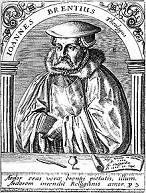

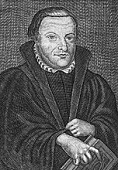
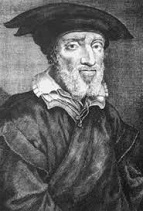

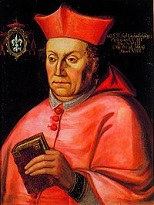
On Sept. 11-Oct. 8, 1557 the Colloquy of Worms between Protestant Lutheran theologians Philip Melanchthon (1497-1560), Johannes (Johann) Brenz (1499-1570), Theodore Beza (1519-1605), and Erhard Schnepf (1495-1558), and Roman Catholic theologians Michael Helding (1506-61) (AKA Sidonius), Jesuit (St.) Peter Canisius (1521-97), and Johannes (Johann) (John) Gropper (1503-59) (who started out as a follower of Erasmus then couldn't give up the security of the Church and the problem that if God meant Christians to be Protestants, why did he let the Church run things all this time), the last imperial conference of the cent. starts out with the Catholics questioning the Bible as the only source of authority, and ends when they bring up the Protestants' dirty laundry of disagreements among themselves about basic doctrines of original sin and justification based on Bible reading; Beza suggests that all Protestant sects unite, and is told to fork off by Zurich and Bern, causing him to settle in Geneva next year.
In Dec. 1557 the First Covenant (Congregation of the Lord) is signed in Scotland, creating the Protestant Lords of the Congregation (Faithful Congregtion of Christ Jesus in Scotland), pledged to maintain Presbyterian as Scotland's sole religion and later establishing the supremacy of Parliament over the crown in Scotland, becoming the "First Blast of the Trumpet".

In 1557-60 William Whittingham (1524-79), Myles (Miles) Coverdale (1488-1569) et al. pub. The Geneva Bible in London, an inexpensive portable English Bible with extensive Calvinist-slanted "annotations upon all the hard places" (marginal glosses), furnished with instructional aids, becoming the first study Bible, and the first using verse numbering by Robert Estienne (Stephanus) of Paris; dedicated to Queen Elizabeth I, it is often used and/or quoted by John Knox, John Bunyan, John Donne, Oliver Cromwell, and Shakespeare, and later preferred by Puritans over the King James Bible, dissing the divine right of kings and always translating the word king as tyrant, causing Charles I to ban it in 1644, leading to Puritan takeover of the govt. and his beheading, even though they later realize the superiority of the 1611 KJV.
On Feb. 2, 1558 the U. of Jena in Thuringia is chartered by HRE Ferdinand I after deceased Saxon elector John Frederick I the Magnanimous (who originally wanted to put it in Wittenberg) planned it out during his imprisonment and his three sons carry out his will; it goes on to produce German brain men Gottlieb Fichte, Georg Wilhelm Friedrich Hegel, Friedrich Schelling, and Friedrich Schiller; it is renamed for Schiller in 1934.

In Mar. 1558 HRE Charles V (b. 1500) formally abdicates at the Monastery of Yuste in Spain, then dies on Sept. 21; he recognizes his illegitimate son Don Juan of Austria (b. 1547) in his will, and entrusts him to the care of Philip II, who grants him the rank of a prince of the House of Austria with a residence in Madrid next year; on Mar. 14 handsome goateed Ferdinand I (1503-64) is crowned HRE in Frankfurt (until July 25, 1564), working to effect a Roman Catholic-Protestant reunion, which ultimately flops because of his insistence that bishops retain their secular authority.

One of the biggest turning points in history: The Red Queen is followed by a White Queen? On Nov. 17, 1558 (7:00 a.m.) after learning of the loss of Calais, English queen (since 1553) Bloody Mary I Tudor (b. 1516) dies childless (she had a tumor not a child) (but just in case she's got a bun in the 42-y.-o. oven she leaves her child the throne in her will?), and after holding out until 10 days before her death to name her as heir, is succeeded by her witch-lucky Protestant half-sister Elizabeth I (1533-1603), whom English Roman Catholics forever consider to be an illegitimate bastard, while English Protestants forever consider her to be their Virgin Mother, saving them from becoming toast; she becomes the 3rd child of Henry VIII who considers it their right to dictate the religion of the nat. church; she promptly swings it back to Protestant, but calls it the "Middle Path" of Protestant doctrines and Roman Catholic ceremonies, robes, and trappings to please the crowd (a Catholic Protestantism?); at her coronation a ring is placed on the 4th finger of her right hand to symbolize her mystical marriage with her people; the exhilarating golden Elizabethan Age (Era) is launched (ends 1603), marked by nat. cultural renaissance, internat. expansion, and naval triumph; her minister Sir William Cecil soon manipulates her to get extreme Protestantism back with a vengeance; after defending his Roman Catholic beliefs, cardinal (since Aug. 7, 1587) William Allen (1532-94) is forced into exile, founding a seminary in the Spanish Netherlands to provide priests for the English; on Nov. 17 (7:00 p.m.) Cardinal Reginald Pole (b. 1500), archbishop of Canterbury since 1556 dies in London - Anglicanism = Roman Catholic Protestantism?
On Dec. 25, 1558 Elizabeth I celebrates Christmas Mass in her chapel in Whitehall Palace; as no Roman Catholic bishop will help her, Bishop of Carlile (since 1557) Owen Oglethorpe (-1559) celebrates it, but when he begins elevating the host, Elizabeth orders him to desist, and when he refuses, walks out? On Dec. 27 Elizabeth I issues a proclamation declaring that parts of the Mass may be said in English rather than Latin, and forbidding all preaching until further notice. On Dec. 27 Elizabeth I issues a proclamation declaring that parts of the Mass may be said in English rather than Latin, and forbidding all preaching until further notice. After the accession of Elizabeth I, Puritanism, a movement inside the Anglican Church that disses all Roman Catholic trappings esp. ritual and ceremony has its beginnings in England.

On Jan. 1, 1559 Christian III (b. 1503) dies, and after Christian II (b. 1481) obligingly dies on Jan. 25, Christian III's son Frederick II (1534-88) succeeds him as king of Denmark and Norway (until Apr. 5, 1588), going on to become a typical Euro Renaissance monarch who likes to play soldier.




The original L.A. woman? On Jan. 15, 1559 to large cheering crowds "Virgin Queen" Elizabeth I (1533-1603) is crowned queen of England in Westminster Abbey (until Mar. 24, 1603) (the 43rd British monarch), the last of the Tudor Dynasty, immediately reverting to Protestantism; at the coronation a ring is placed on the 4th finger of her left (right?) hand to symbolize her mystical marriage with her people; her childhood friend Sir Robert Dudley (1533-88) becomes master of the horse (the original Italian Stallion?), riding immediately behind her in procession, and becomes her favorite, causing marriage rumors to spread; on Jan. 15 Henry II of France publicly declares her a bastard unfit to be queen of England, and proclaims his daughter-in-law Mary Stuart (the French spelling of Stewart), Queen of Scots (great-niece of Henry VIII) as the true queen; Miles Coverdale returns to England; the exhilarating Elizabethan Age (Era) is launched (ends 1603), marked by nat. cultural renaissance, internat. expansion, and naval triumph; her minister Sir William Cecil soon manipulates her to get extreme Protestantism back with a vengeance. In Jan. Elizabeth I's First Parliament (with a Protestant majority) meets, and on Feb. 9 it debates a Commons bill to restore royal supremacy over the Church of England, but throws it out, and on Mar. 18 an amended bill calling the queen the Supreme Governor (instead of Supreme Head, which St. Paul says no woman is "suffered" to be in 1 Tim. 2:12) passes the Commons, causing grumbling among clergy and laity that leads to the Elizabethan Puritan Movement, which starts out underground and begins agitating in Parliament, becoming a serious threat to the state.
On Feb. 15, 1559 Pope Paul IV issues the bull Cum ex Apostolatus Officio ("By virtue of the apostolic office"), proclaiming that only Roman Catholics can be elected pope, and that all rulers who maintain heretical doctrines may be deposed by the faithful - a clear signal to English Catholics?

On Aug. 18, 1559 Pope (since 1555) Paul IV (b. 1476), Father of the Roman Inquisition dies, and on Sept. 5 a papal conclave meets; on Dec. 25 Milan-born lawyer (cardinal since 1549) Giovanni Angelo d'Medici is elected Pope (#224) Pius IV (1499-1565), immediately reversing some of the policies of his unpopular predecessor, esp. papal hostility to Spain, and reaching out to Philip II of France and HRE Ferdinand I, whom he officially recognizes - come on, say pucker?


In Aug. 1559 HRE Philip II withdraws from the BBQ-basting Netherlands after appointing his able half-sister (Charles V's illegitimate daughter) Duchess Margaret of Parma (1522-86) as the Hapsburg gov. (regent) #3 of the Netherlands (until 1567), but gives her nominal authority so he can deal with the revolt himself; longtime imperial statesman (secy. of state since 1550) Antoine Perrenot de Granvelle (1517-86), bishop of Arras is appointed as her PM, going on to repress the pesky Dutch Protestants so cruelly over the next five years that he is elevated to archbishop and cardinal in 1561 before beating a hasty retreat in 1564.
In 1559 "The Church has always fulfilled its duty to keep books under surveillance, but until the invention of printing, it did not feel the need to compile a catalog of prohibited books because those writings considered dangerous were burned" (Enciclopedia Cattolica); now that the Devil's invention of the printing press is running amok, threatening the status quo, Pope Paul IV pub. the first Index Autorum et Librorum Prohibitorum AKA the infamous Index of Forbidden Books, used to retard any and every religious, scientific, social or political advance from here on out, going through 19 eds.; Roman Catholics are forbidden to read, sell, translate, or possess them under penalty of excommunication; the reading of vernacular translations of the Bible is prohibited; "In practice, Bible reading by laymen ceased completely for centuries. The Bible became virtually an unknown book, and millions of Italians lived their lives without ever reading a page of it" (Mario Cignoni); "All prohibited books contained in the brief shall be collected. Those by heretical authors shall be burned publicly in the auto da fe; the rest shall be placed in some well-secured room of the inquisition... As far as books in the humanities are concerned, which may contain glosses, arguments, letters, or annotations by Philipp Melanchthon or other heretics, they will be returned to their owners once the heretical annotations have been removed or crossed out... A book of medicine, entitled 'Paradoxas de Fusion', printed in Venice in 1547, is said to contain suspicious things even though it is not placed in the catalogue; it must be prohibited." (Decree of the Supreme on Books, 1558)


When you have a yeast infection, get treated immediately, cheese it? In 1559 Siena, Italy-born theologian Faustus Socinus (Faust Socyn) (Fausto Paolo Sozzini) (1539-1604) who picked up the crypto-Protestant Bible-based anti-Trinitarian views of his learned uncle Laelius Socinus (1525-62) (who picked them up from Michael Servetus?) is made a convenient example of by the Inquisition, causing him to flee from Italy for three years, returning to Florence in 1563 and keeping quiet, then getting brave and moving to Basel, where he develops his doctrinal system of Nontrinitarian (Arian) humanist Socinianism, an early form of Unitarianism, leaving for Poland in 1579, where he helps organize the Polish Brethren (Minor Reformed Church) (founded 1565), and later gets a movement going in Transylvania.
In 1559 the first French Protestant Nat. Huguenot Synod is held in Paris, attended by reps. of 15 churches, producing the Calvinistic French Confession; two years later 2K+ churches send reps.
In 1559 Jesuit theologian Peter Canisius, fresh from his claimed V in the 1557 Colloquy of Worms becomes the main pulpit spokesman in Augsburg Cathedral (until 1567), where he convinces hundreds of Protestants to come back to Mother Church, while helping pump up the Jesuits into a powerful tool for the Counter-Reformation, getting him sainted.


In 1559-74 several Lutheran scholars in Magdeburg, Germany known as the Centuriators, led by Croatian-born Matthias Flacius (1520-75) pub. The Magdeburg Centuries (Historia Ecclesiae Christi) (13 vols.) (1559-74); a history of the Roman Catholic Church to 1298 C.E. (different vol. for each cent.), attempting to prove that it is the Antichrist and enemy of the true church of Christ, which shows a "perpetual agreement in the teaching of each article of faith in all ages", becoming a model for modern church histories; "This very form of the teaching which we now have in our churches because of the great kindness of God is that very ancient one, not a new one; genuine, not adulterous; true, not fabricated." In 1586 Italian Roman Catholic cardinal Caesar Baronius (1538-1607) pub. Annales Ecclecsiastici a Christo nato ad Annum 1198 (12 vols.) (1588-1607), a history of the Roman Catholic Church to 1198 C.E., bolstering its claims to authority, produced to counter the anti-Catholic "Magdeburg Centuries" (1559-74); coins the term "Dark Ages" for the period from 500-1100 C.E.; in 1597 he becomes librarian of the Vatican, giving him access to the archives; "The greatest history of the Church ever written" (Lord Acton).

On Apr. 10, 1560 after Catherine de' Medici calls him from Nice to succeed Francois Olivier, Michel de l'Hopital (1507-73) becomes chancellor of France, leading the Averagers (humanists who believe that Protestants and Roman Catholics can reconcile via reciprocal concessions), immediately working to get all Inquisition proceedings against heretics (esp. Protestants) suspended pending a gen. or nat. church council, and registering the Edict of Romorantin with the French parliament in May, becoming the beginning of freedom of religious conscience in France; he then gets an estates-gen. convoked in Dec. sans consent of Pope Pius IV, almost causing a split.
On June 10, 1560 Mary of Guise (b. 1515) dies of dropsy after having been regent of Scotland for six years, and the Feb. 27 Treaty of Berwick along with the July 2 Treaty of Edinburgh formalize Elizabeth I's financial and military aid to the Protestant Lords of Scotland, who establish a council of regents for her daughter Mary, Queen of Scots, recognize Elizabeth, annul the now-pesky 1294 Auld Alliance, and expel the Catlicking French from Scotland; Elizabeth grumbles that William Cecil couldn't get the French to return Calais or reimburse her for the cost of the war, causing Cecil to blame Robert Dudley and begin plotting against him?; on Aug. 1 the Estates of Parliament meet, and order the ministers of the new Reformed Kirk (Church) of Scotland to draw up a Scots Confession of Faith (25 chapters), written in four days by the Six Johns, incl. John Knox (main writer), John Winram, John Spottiswoode, John Willock, John Douglas, and John Row, and approved by parliament on Aug. 27, which Mary, Queen of Scots refuses to approve, and has to wait for her overthrow in 1567; on Aug. 11 the Latin Mass is prohibited in Scotland, and on Aug. 17 Calvinistic Protestantism is officially established as the religion of Scotland; the Knox-backed Scottish Reformation, masterminded by the Lords of the Congregation is in like MacFlynn before Mary, Queen of Scots can do anything about it.

On Dec. 5, 1560 after the first fireworks display in France is given in Amboise to celebrate the the accession of Francis II, the Amboise Conspiracy (Tumult of Amboise) by the Bourbon and Montmorency clans (led by Louis I of Bourbon, Prince of Conde and supported by Queen Elizabeth I and John Calvin) to seize Francis II (husband of Mary Stuart, Queen of Scots) and exterminate the House of Guise in order to save France is exposed and foiled, resulting in a massacre of Huguenots; on Dec. 5 Francis II (b. 1544) dies from a brain abscess six weeks before reaching the age of 17, leaving his wrongly-educated (woman stuff instead of statecraft) widow to return to Scotland, at first bitching and bawling then coming to realize the power is hers as ambassadors flock to her chambers with offers of royal marriage; after the French reject her idea of marrying Spanish Prince Don Carlos, she decides to return to Scotland, and 10-y.-o. Charles IX (1550-74) is crowned Valois king #12 of France (until May 30, 1574), with his mother Catherine de' Medici as queen regent, making her virtual ruler, proving to be a treacherous Macchiavellian type with the goal of royal power at any cost, which ends up demoralizing France; like all her children, Charles IX is a sickly disgusting prick (mentally unstable sadist subject to mad rages) who is betrothed at age 11 to Elizabeth of Austria; courtiers now openly quote Nostradamus' Century X, Quatrain 39 ("First son, widow, unfortunate marrage, without any children, two isles in discord"), which they claim predicts Francis II's death; meanwhile English ambassador Sir Nicholas Throckmorton is imprisoned by Duke Francis of Guise for suspected involvement in the Amboise Conspiracy, but talks his way out of it.
In 1560 Maximilian II, son and heir apparent of HRE Ferdinand I abandons his Lutheran leanings, causing a sigh of relief about a Protestant Holy Roman Empire, which had caused Philip II to formulate plans to succeed Ferdinand instead of him.
In Jan. 1561 the Edict of Orleans grants toleration to French Huguenots, leading to the Edict of St. Germain next Jan.


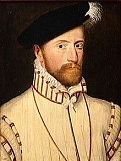
In Apr. 1561 Francois (Francis) de Lorraine, 2nd Duke of Guise (1519-63) (younger brother of Charles of Guise, Cardinal of Lorraine), Anne, Duc de Montmorency (1493-1567), constable of France, and marshal Jacques d'Albon de Saint-Andre (Saint-André) (1505-62) form a triumvirate to undermine Catherine de' Medici's attempts at reconciliation with French Huguenots, with a double-pronged approach of allying with Spain and the pope while keeping the Calvinists from helping them militarily.

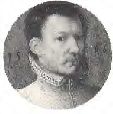
On Aug. 14, 1561 tall widowed (and probably virtually virgin) 19-y.-o. Mary Stuart, Queen of Scots, accompanied by French biographer Pierre de Brantome, Seigneur de Bourdeille (1540-1640) leaves Calais, France for Scotland, being denied safe passage through England by her rival Elizabeth I (who sends aggressive warships to play cat and mouse, then changes her mind too late?), and lands at Leith on Aug. 19, where there is no welcoming committee because they didn't expect her so soon, but after they organize one they are wowed by this 6-ft. twos-company-threes-an-audience finishing school model with the walk and the talk, plus royal Stewart, Tudor, and Guise blood flowing in her unmarried what's-up-everybody royal veins; John Knox and other Protestants stand her up, and soon get in a war over who controls Scotland, starting with making a fuss over her going to Mass in Holyrood Chapel a few days later, being stopped from rioting after her half-brother Lord James Stewart intervenes and she declares that Scots can worship as they please, she is granted noblesse oblige and allowed to hear Mass in her private chapel; she then meets with John Knox (1505-72), and tells him to obey or be considered a traitor, which he brushes off, trying to convert her to Protestantism, calling a Catholic queen a "monstrous regiment"; Sir William Maitland of Lethington continues as her secy. of state, directing Scottish foreign policy for the next six years; James Hepburn, 4th Earl of Bothwell (1536-78), lord high adm. of Scotland, who was in the deputation of lords which conveyed her to her kingdom is made a privy councilor, but ends up getting kicked out of Edinburgh; Mary then begins an extensive tour of her kingdom (until 1567); meanwhile Elizabeth fears that taller-prettier Mary might marry a powerful Catholic prince and threaten her throne; their rivalry becomes the focal point of Anglo-Scottish relations for the next quarter cent.



On Sept. 9, 1561 the Colloquy of Poissy, called by Catherine de' Medici at the convent of Poissy in France attempts to reconcile French Roman Catholics and Protestants, and after Theodore Beza gives a fine speech explaining Protestant beliefs, and debates Charles de Guise, Cardinal of Lorraine (1524-74), who chokes on the idea of giving up the Catholic Communion, the Catholics bring in their heavy gun, Jesuit gen. Diego Laynez (Lainez) (1512-65), and after he is through painting them as roasted wieners the colloquy breaks up on Oct. 7 with few if any minds changed; meanwhile the French Huguenots and major German theologians have no input, the latter arriving after it's over; French Huguenot potter Bernard de Palissy (1510-89), who ever seeks the secret of white enamel is set free, and appointed "inventor of rustic figurines" to Catherine de' Medici (until 1588); meanwhile the first Calvinist refugees from Flanders settle in England.
In Nov. 1561 Elizabeth I is seen leaving Whitehall by a back exit in disguise to watch her real beau Robert Dudley in a shooting match; on Dec. 22 Dudley is admitted to membership in the Inner Temple of the Inns of Court after he supports them in a land dispute; on Dec. 28 plays are performed there with the theme that the queen should marry him; on Dec. 26 Elizabeth I restores the earldom of Warwick to Robert Dudley's brother Ambrose along with Warwick Castle and large tracts of land in the Midlands; meanwhile Robert Dudley secretly proposes to Philip II to restore Roman Catholicism to England if he will endorse his marriage to her.
In 1561 the Poles take over Livonia; the Baltic states of the Order of the Teutonic Knights are secularized; the Livonian Knights are disbanded, and their grandmaster becomes the first Duke of Courland
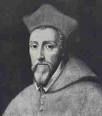
In 1561 after English Benedictines and Franciscans move in and establish seminaries, English College is founded in Douai (Douay) (Doway), N France under the patronage of Philip II and Pope Pius V, where exiled English priest (later cardinal) William Allen (1532-94) and other Assburger, er, Oxford U. alumni to train Jesuit missionaries for England, causing the word "seminarist" to become synonymous with traitor there - you big fat muscle-headed sack of rotten seminarist waste - you just called me a seminarist?



One of these crazy crazy crazy nights I'm gonna find you, or, Take it, take another little piece of my heart, baby? On Jan. 17, 1562 after French regent Catherine de' Medici's chancellor Michel de l'Hopital convenes another colloquy to stop the Roman Catholic-Protestant feud by reason, the Edict of Saint-Germain (January) (the most liberal given French Protestants until the 1598 Edict of Nantes) suspends persecution of French Huguenots, officially recognizing them, but only granting limited toleration, forbidding public worship in towns but allowing it in suburbs; there are 2,150 French Huguenot congregations by now; too bad, the Vatican works to undermine it, and its terms aren't carried out, and papal legate Ippolito d'Este gets l'Hopital dismissed (until 1563); on Mar. 1 the Massacre of Vassy (Wassy) in Wassy-sur-Blaise in Haute-Marne sees Francois (Francis) de Lorraine, 2nd Duke of Guise (1519-63) (younger brother of Charles of Guise, Cardinal of Lorraine) returning from a conference with the Duke of Wurttemberg at Saverne, Alsace, where he convinced him that the Colloquy of Poissy had failed and Calvin is full of merde, then get pissed-off at seeing Huguenots holding Satanic religious ceremonies without benefit of true Catholic clergy, and order the church fired to send the devil spawns back to their father in Hell, killing 23 and wounding hundreds, starting the dog-eat-dog French Wars of Religion (ends 1598), eight bloody civil wars between the Roman Catholics and Protestant Huguenots in France, ending as a struggle for control of France by the Roman Catholic House of Guise (Lorraine) (descended from Norman knight Sir William Gyse, who fought with William I the Conqueror in the 1066 Battle of Hastings) (goes extinct in 1688), and the Protestant Huguenot House of Bourbon; the initial Huguenot leaders are Louis I of Bourbon, Prince of Conde (Condé) (1530-69) and Adm. Gaspard de Coligny (1519-72); the initial Roman Catholic leaders are Duke Francis of Guise and Catherine de' Medici; later Henri IV (Henry of Navarre) is the Huguenot leader, and Henry III the Catholic leader; the Huguenots obtain aid from England, Germany, and Switzerland, and the Catholics from Spain, and go to it - kill-kill-killing for the God of Love and just knowing that they will be saved in yummy-yummy-heaven?
On Mar. 25, 1562 Theodore Beza sends a circular letter to all the Protestant congregations, and travels to Orleans with the prince of Conde and his troops, then is sent as emissary to England, Germany and Switzerland to raise funds, returning on Sept. 4, after only Strasbourg and Basel turn him down. In the spring the Countess of Lennox and her darned son Lord Darnley are released from house arrest in London and received back into the queen's favor; the countess begins scheming to marry him to Mary, Queen of Scots, but hints at deposing Elizabeth, landing her in the Tower.
In Apr. 1562 the prince of Conde takes over Newhaven (modern-day Le Havre), causing English ambassador Sir Nicholas Throckmorton to talk Elizabeth I into sending a military expedition to aid the Huguenots, and in Sept. she signs a treaty pledging assistance to the Huguenots in return for their placing of the port of Newhaven in English hands as surety for the future restoration of Calais to the English; in Oct. she orders 6K men under Ambrose Dudley, earl of Warwick to sail to Newhaven and Dieppe, but after arriving they quarrel with the Huguenots, who turn against them.
In Sept. 1562 Duke Francis of Guise sieges Huguenot-held Rouen, and takes it on Oct. 26 after 1 mo.

On Dec. 19, 1562 the Battle of Dreux sees the French Huguenots under Louis I of Bourbon, prince of Conde retreat after one of the bloodiest battles of the cent. with French Roman Catholics led by French constable-marshal Duke Anne de Montmorency (1493-1567), who is captured after his cavalry is routed early in the battle; but God is on the Catholics' side, as they not only win but capture Conde.
On Feb. 18, 1563 the Roman Catholics under Duke Francis of Guise are about to capture Orleans from the Huguenots when he is wounded by Jean de Poltrot de Mere (Méré) (1537-63), a fanatical Huguenot whose swarthy complexion earned him the nickname "Espagnolet" (allowing him to act as a spy in the wars with Spain), who snuck into the Catholic camp and fired at the duke from ambush as he passed on the road; the duke dies on Feb. 24, and on Mar. 18 the Holy Catholic French have their fun with the Spic, er, Espagnolet heretic, torturing, drawing and quartering him, then hacking him to pieces with cutlasses when the horses can't pull him apart - Jesus wept, the Roman Pope laughed, go figure?

On Mar. 19, 1563 the First French War of Religion (begun Mar. 1562) ends with the Edict of Pacification (Amboise), signed by Catherine de' Medici as regent for her son Charles IX, and Roman Catholics and Protestants unite to drive the English army in France from Le Havre (Newhaven), aided by a plague among the English invaders; after Elizabeth I sends ambassador Sir Nicholas Throckmorton to negotiate with Catherine de' Medici, she gets suspicious of the snake and places him under house arrest, and it takes until next year for Greek scholar Sir Thomas Smith (1513-77) (new French ambassador until 1566) to get him released, during which time the two become enemies; meanwhile pissed-off Theodore Beza heads back to Geneva after a 22-mo. absence, finding John Calvin ailing, alternating duties with him week-by-week until he croaks next May 27 and he takes over; in July Ambrose Dudley is shot in the leg by an enemy musket, and by the end of the month the English withdraw to England, bringing the plague with them, killing 20K by the end of summer; the English people blame the queen (a woman) for losing Calais, saying, "God help England and send it a king".

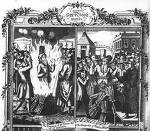
On Mar. 20, 1563 John Foxe (1516-87) pub. Foxe's Book of Martyrs (Acts and Monuments of these Latter and Perillous Days, Touching Matters of the Church) (2 vols.), which makes him "England's first literary celebrity", selling for 10 shillings (3 weeks' pay), even though he receives no royalties; Pt. 1 is about persecution, torture, and burning of early Christian martyrs, Pt. 2 is about the reign of Henry VII and Edward VI, and Pt. 3 is about the burning of Protestants by Roman Candle Catholics under Bloody Mary, all detailed with relish in a 2-vol. 2.3K-page superbook (largest pub. project in England to date), complete with gruesome woodcuts, convincingly portraying the Pope as the Antichrist, and England as the new Chosen Nation of Israel, which God has picked to save Da WQorld; becomes the #2 bestseller in England after the Bible, and starting with the 2nd ed. in 1570 every cathedral church in England is ordered to carry a copy; deeply influences William Bradford, founder of Plymouth Colony, and becomes the theme for all future U.S. Protestant-dominated govts.?
In Aug. 1563 13-y.-o. Charles IX of France is declared of age in Rouen in order to give queen mother Catherine de' Medici maneuver room in her war with the pesky Guise family, and her adviser Michel de l'Hopital is recalled.

Them Protestants got the devil's printing press, we Catholics got holy BBQ chefs? On Dec. 4, 1563 the Council of Trent (begun 1545) finally ends successfully with the aid of (St.) Carlo Borromeo (1538-1584), nephew of Pope Pius IV, who is known for his harsh ecclesiastical discipline; Pope Pius IV confirms the Council of Trent's Professio Fidei Tridentina, and issues it in his bull Injunctum Nobis on Nov. 13, 1565; the old problem brought up the pesky Arians is dealt with at the start: "I believe in one God, the Father Almighty, Maker of Heaven and Earth, and of all things visible and invisible. And in one Lord, Jesus Christ, the Only-begotten Son of God. Born of the Father before all ages. God of God, Light of Light, true God of true God. Begotten, not made, of one substance with the Father. By whom all things were made. Who for us men and for our salvation came down from heaven. And became incarnate by the Holy Spirit of the Virgin Mary: and was made man"; the One Truth Faith having been authoritatively laid out in black-and-white for everybody, and printed on the One True Printing Press of God, of course anybody publishing anything that doesn't fit in its cookie cutter must be a Satanic pawn, so Pope Pius IV also approves the Index Librorum Prohibitorum (Index of Prohibited Books) (Tridentine Index), which is pub. in Venice next year.
In 1563 the Convocation of 1563 (begun Jan. 1562) under Archbishop of Canterbury Matthew Parker reduces the English Articles of Religion of 1552 to the Thirty-Nine Articles, drafted as a doctrinal statement by a convocation of the Church of England; Parliament approves them in 1571; assent is still required by the Anglican clergy; they condemn several Roman Catholic beliefs and practices, incl. the power of the papacy, indulgences, reverence for saints and relics, transubstantiation, and the doctrine of Purgatory, affirming infant baptism and predestination and rejecting free will; all believers must obey the secular govt. and bear arms for it; Miles (Myles) Coverdale (1488-1569) becomes rector of St. Magnus (near London Bridge), but resigns in 1566 after refusing to conform with the Act of Uniformity.
In 1563 William Shakespeare's father John Shakespeare is appointed chamberlain for the Stratford Corp. (until 1564), authorizing a 2 shilling payment for "defasying ymages in ye chapel", as required by an English Reformation law passed by Edward VI in 1547.
On Apr. 11, 1564 England and France sign the Trojan Horse Second Treaty (Peace) of Troyes (first in 1420), ending English involvement in the First War of Religion (begun 1562) and renouncing English claims to Le Havre for 120K gold crowns, placing Calais beyond hopes of English recovery.
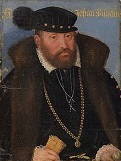
On Apr. 18, 1564 after elector Augustus I of Saxony invades Gotha, the pop. fails to resist, and a mutiny gives up the town, pesky gen. Wilhelm von Brumbach (b. 1503) is tortured and executed; meanwhile pesky duke John Frederick II (1529-95) is captured, and spends the rest of his life as an imperial prisoner, and in Nov. 1566 his younger brother Johann Wilhelm (1530-73) becomes sole ruler of the duchy of Saxony (until 1572), and duke of Saxe-Weimar in 1572 (until Mar. 2, 1573); too bad, he allies himself with Charles IX of France against the Huguenots, pissing-off the HRE, whose Hapsburg family are hereditary enemies of the French kings.
On May 27, 1564 John Calvin (b. 1509) dies in Geneva of TB, and Theodore Beza becomes Protestant leader in Geneva, concentrating on higher ed. of a new crop of Protestants - his dreams fulfilled?

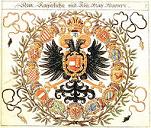
On July 25, 1564 HRE (since 1558) Ferdinand I (b. 1503) dies, and his eldest son (king of Bohemia since May 14, 1562, king of Germany since Nov. 24, 1562, and King of Hungary-Croatia since Sept. 8, 1563) Maximilian II (1527-76) becomes HRE (until Oct. 12, 1576).
In Aug. 1564 Elizabeth I makes a progress, staying in Cambridge on Aug. 5-10, where her subjects extol her virginity - she's now the Virgin Mary and Vicar and Bride of Christ, what next, Immaculate Conception?
On Dec. 25, 1564 the first Scottish Psalter is pub. in Edinburgh, and the Gen. Assembly of the Church of Scotland ordains its use throughout the church.
In 1564 Transylvania under John II adopts Calvinism as its state religion; meanwhile the polish-sausage-frying Counter Reformation begins in Poland - what's that smell?
In 1564 Elizabeth I offers her favorite pretty boy Robert Dudley's hand to Mary, Queen of Scots, and creates him Earl of Leicester for the purpose; by this year (age 31) Elizabeth has lost most of her hair.
In 1564 Elizabeth I is so irked by the relaxed dress of Puritan clergymen that she orders the Archbishop of Canterbury to hold them to a dress code, but the Puritans, fearing a return to the vestments of Roman Catholic priests refuse to obey.


On July 29, 1565 after Elizabeth I sends Sir Nicholas Throckmorton in vain in May to try to prevent it, Queen Mary Stuart of Scotland marries her 2nd hubby, handsome Catholic 2nd cousin Henry Stuart, Lord Darnley, Duke of Albany (1545-67), whom she had just met on Feb. 14 after Elizabeth I pitched him at her in a plot to get her to fall for him then forbid her from marrying an English subject, but falls in love with and refuses to send back (ah, the wrong night?); she holds the ceremony at Holyrood at 6 a.m. to prevent rioting over the Catholic rites; on June 30 she declares the arrogant prick king of Scotland to stony silence without approval by anybody, and is forced to quiet near revolts by Protestants who hoped she'd marry one of theirs; the "crown matrimonial" is not hers to give anyway; meanwhile James Stuart, earl of Moray (Murray) flip-flops, going back to supporting John Knox (1505-72), and on Aug. 26 stages the unsuccessful Chaseabout Raid against Mary with other Protestants, which Knox sits out, withdrawing to Kyle in Ayrshire in 1566; Mary takes personal control, and recalls the earl of Bothwell from exile in France to suppress Murray's revolt, getting him chased to England; Mary becomes preggers in the fall, and jealous prick Darnley targets Mary's Italian secy. David Rizzio (Riccio) (1533-66), while treasonably plotting with sympathetic nobles to gain the crown matrimonal and put himself in charge.
On Aug. 28, 1565 after Florida (Fla.) is settled by French Huguenots, troops sent by Spanish King Philip II, led by adelantado adm. Pedro Menendez de Aviles (Menéndez de Avilés) (1519-74) found the Spanish city of St. Augustine (San Augustin), with the parish church run by Padre Lopez, and build the massive coastal fort Castillo de San Marcos, designed by Ignacio Daza; on Sept. 20 they capture Huguenot-held Ft. Caroline, and in Oct. wipe out a Huguenot relief force under Jean Ribault in the Mantanzas Inlet, hanging their bodies with the legend "Not as Frenchmen but Lutherans"; the Spanish go on to build presidios and posts across the area and support the establishment of missions by Jesuits and Franciscans as far N as Va.

On Dec. 9, 1565 Pope (since 1559) Pius IV (b. 1499) dies, and on Jan. 7, 1566 Milan-born Dominican grand inquisitor (cardinal since 1557) Antonio Michele (Michaele) Ghisleri (Ghislieri) is elected Pope (#225) (St.) Pius V (1504-72) (until May 1, 1572), immediately showing his blood-red saintly colors by opposing all religious tolerance, enforcing the decrees of the Council of Trent, aiding French Huguenot persecution, and expelling Jews from the Papal States, mobilizing all his resources to punish those pesky heretics who don't recognize him as the one and only maximum bridgemaker to God.
In 1565 HRE Sigismund II introduces the Jesuits into Poland-Lithuania to stop the pesky Protestants, Calvinists, and Anti-Trinitarian Arians.
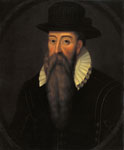
On Mar. 9, 1566 David Riccio (Rizzio) (b. 1533) is murdered by Lord Darney, Lord Ruthven, Lord Lindsay, Mary's Protestant stepbrother John Erskine, 1st Earl of Mar (-1572) et al. in Holyrood House in front of pregnant Mary, Queen of Scots, almost causing her to miscarry and turning her against Darnley, starting by pardoning the lords involved in the Chaseabout Raid but not if they were involved in Riccio's murder; on June 19 she bears Prince James (future James VI) in Edinburgh Castle, giving Scotland a male heir, weakening her grip on the throne rather than strengthening it (the Stewart disease?); too bad, for safety she sends the infant to Stirling Castle in the care of the Earl and Countess of Mar, where he is baptized a Roman Catholic in Dec. in a magnificent rite.
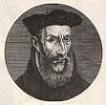
The closest thing Roman Catholicism has produced to an uncrowned pope sets up permanent shop in Salon? On June 17, 1566 after contracting dropsy, Nostradamus (b. 1503) writes his will, then dies on July 1 after being given the last rites by a local French priest; he is buried upright in a wall of the Church of the Cordeliers at Salon, and leaves his wife Anne 3,444 crowns; his grave is opened by superstitious soldiers during the French Rev., then reburied at the Church of St. Laurent in Salon.
In summer 1566 the Beeldenstorm (Ger. "iconoclastic outbreak"), a wave of image-breaking begins, spreading through the Low Countries, with Calvinists destroying statues of Catholic saints in hundreds of churches and monasteries, which causes Netherlands gov. Margaret of Parma to promise to give Dutch noblemen more power and abolish the Inquisition, only to be countermanded by her brother Philip II.
In 1566 Duke Albrecht I of Prussia, who since the 1552 death of his mentor Andreas Osiander has increasingly become an old fart under the control of Osiander's son-in-law, German Lutheran preacher Johann Funck (Funk) (Funccius) (1518-66) and Croatian adventurer and self-proclaimed know-it-all encyclopedic Croatian writer Stanislav Pavao (Paul) Skalic (1534-73) (who both used him to get rich), is finally reined-in by the estates, who get his cousin Sigismund II Augustus of Poland to send a commission to Konigsberg, which on Oct. 28 has Funck executed and Scalic condemned, saving himself by fleeing; Albrecht's only son Albrecht Frederick (b. 1553) is confirmed as his heir, with a regent appointed, Lutheranism is confirmed as Prussia's state church, and the old fart lives two more years stripped of power, living with his 2nd wife Anna Maria, daughter of Duke Eric I of Brunswick-Luneburg.
In 1566 Italian Latin and Greek prof. Antonius Palearius is burned in Rome as "Inquisitionis Detractator" for calling the Inquisition a dagger pointed at the throats of literary men; proof of his heresy is that he signs his name as Aonius, proving he hates the sign of the cross?
On Feb. 10, 1567 Mary, Queen of Scots' husband Darnley, who had refused to rule as consort of the Queen but wanted to rule as king is assassinated in Kirk-on-Field in Edinburgh, the house being blown up early in the morning and his body mysteriously found lying on the lawn of a nearby garden without a scratch on it, probably the work of her boyfriend James Hepburn, 4th earl of Bothwell and his agents in revenge for his killing of Riccio); Bothwell is put on trial for the murder, appears with 4K armed retainers and is quickly acquitted; on Apr. 24 he kidnaps Mary while she is returning to Edinburgh from Stirling, takes her to Dunbar, "ravishes" (with devilish charm) then marries her on May 15 in a Protestant ceremony, becoming her 3rd hubby after first divorcing his 1-year wife Jean Gordon, sister of the earl of Huntly, and being created duke of Orkney and Shetland; they enjoy a brief honeymoon at Borthwick Castle S of Edinburgh before they are separated forever, Mary climbing out a window dressed as a page boy after the pissed-off Catholic and Protestant Scottish nobles revolt, with the "King's Men" favoring young Prince James opposing the "Queen's Men" who want to keep Mary in power; on June 15 she surrenders at Carberry Hill near Musselburgh (E of Edinburgh) after Bothwell and her Queen's Men desert, and she is captured, paraded through Edinburgh in front of hostile crowds, and imprisoned at Lochleven Castle on an island in the middle of a lake in Kinross; on June 20 after Elizabeth I sends Sir Nicholas Throckmorton to Scotland with instructions to talk the barons into restoring Mary (which he personally disagrees with), Mary's Casket Letters to Bothwell are discovered by James Douglas, earl of Morton, incriminating her as an accessory to murder; on July 23 she miscarries twins while being pressured to abdicate, which she does on July 25, handing the throne over to 1-y.-o. "cradle king" James VI (1566-1625), who is crowned on July 29 at Stirling; Throckmorton pisses Elizabeth I off by revealing her instructions to the Scottish barons and is recalled in Aug.; Bothwell escapes to Orkney and Shetland, becomes a pirate leader, dodges the English, and reaches Norway, then ends up in Copenhagen, where he promises the Danes to restore the Orkneys and Shetlands to them for good treatment; only seven lords show up at James VI's coronation on July 29 (worst attendance at a Scottish coronation), where John Knox gives a sermon certifying the Scottish Protestant Kirk as PC in Scotland, which ends up being governed by a succession of regents during the king's minority, beginning with his half-uncle James Stewart, earl of Moray (until 1570); the earl and countess of Mar raise the king tough-love style without parental affection, and have him turned into a Protestant and serious scholar by humanist terrorist ("spare the rod and spoil the child") tutor George Buchanan (1506-82), who is fond of calling Queen Mary a whore, causing him to like to call himself "Without father or mother, brother or sister" - if I was a dog I'd like to sniff some of my friends at the park and chase an occasional tennis ball?
On Nov. 10, 1567 the Battle of Saint-Denis near Paris sees a 16K-man Catholic army led by Duke Anne de Montmorency (1493-1567) attack 3.5K Huguenots under the prince of Conde, who hold them off for several hours and mortally wound Montmorency before being driven off; Montmorency dies in Paris on Nov. 12.




Be nice to Dutch Protestants, yes, and or duh, my bad? In 1567 the Dutch Protestant revolt against Spain and its Roman Catholic inquisitors (ends 1648) heats up when oh-so-bloody Catholic Spanish "Iron Duke" Fernando Alvarez de Toledo y Pimentel, 3rd Duke of Alva (Alba) (1507-82) (whited sepulcher?) is dispatched from Spain with 24K soldiers (incl. 10K of Europe's best soldiers), 6K horses, and 2K hos with orders to stamp out the heretical rebels, causing Calvinists and Lutherans to flee, incl. Flemish prince William I the Silent of Orange (1533-84), who up till now had been a tolerant Catholic, HRE Charles V's favorite in his teens, who had been awarded governorship of three N Netherlands provinces, but is financially involved with several rebels; in Aug. Alva arrives, and on Sept. 9 founds the Council of Troubles (Blood Council), a kangaroo star chamber without legal status which often convicts people just for being wealthy so they can rob them, and goes on to become such a mean ass that he whips the Dutch into a full-scale war of independence after summoning 10K to the Blood Council, incl. William I the Silent, who fails to appear, is declared an outlaw and forfeited, turning him into the rebels' leader, financing the Watergeuzen (Sea Beggars) (coastal corsairs), and organizing an army of German Protestant mercenaries; meanwhile Alva arrests Flemish statesmen Count Lamoral of Egmont (1522-68) and Count Philip de Montmorency Hoorn (1518-68), condemns them and confiscates their property, becoming his biggest fish-kills; Margaret of Parma resigns her regency in his favor and returns to Italy; if you're caught with a Bible or Protestant lit. in the Low Countries your ass is grass and Alva's got the lawnmower; "Alva's six-year reign was to be an unforgettable reign of terror in which the Spanish government attemped forcibly to uproot the now firmly entrenched Protestantism of the Northern provinces" (New Catholic Encyclopedia); to help him Pope Pius V's Holy Office condemns all 3M Netherlanders to death as heretics, a decree confirmed by his boss Philip II of Spain.
In Feb. 1568 after Catherine de' Medici gets in over head in playing off one faction against the other in the religious wars of France, she dismisses Michel de l'Hopital, the last anchor stopping the big Protestant Weenie Roast of 1572?
On Mar. 23, 1568 the Treaty of Longjumeau in Longjumeau commune 11 mi. S of Paris ends the Second War of Religion in France.

I'm half going crazy in here? On Mar. 25, 1568 Mary Stuart, Queen of Scots escapes from Lochleven Castle in Kinross, Scotland and attempts to reclaim her throne, but is defeated at the Battle of Langside by her half-brother the Earl of Moray on May 13; Secy. Lethington, who might have been involved in Darnley's murder flops and fights with the queen's enemies out of dislike for James Hepburn; on Apr. 3 Sir William Drury (1527-79), hired to spy on her in Lochleven writes a letter to his boss Lord Burghley about her escape to warn him; on May 16 she flees to England, and seeks refuge in the English court, but is put under house arrest by her half-sister Queen Elizabeth I for 19 years until her death, plotting until the end to become queen of England; a conference opens in York to inquire into her conduct, with Thomas Howard, 4th duke of Norfolk as pres. of the investigating commission, keeping Mary in his custody; it later reopens at Westminster; Scotland is now firmly in the control of the Knox Protestants, Moray becomes regent for James VI, and the acts of 1560 in favor of the Reformed religion are ratified by the Estates of the Realm.
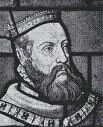
On May 23, 1568 the Battle of Heiligerlee in Groningen in N Netherlands sees the Protestants under William I of Orange's brothers Louis of Nassau and Adolf of Nassau score their first V against a Roman Catholic army led by Jean de Ligne, Duke of Arenberg (b. 1528), who is KIA (along with Adolf of Nassau), pissing-off the Duke of Alva, who has the Count of Egmont and the Count of Hoorn beheaded in Brussels on June 6, then leads an expedition to Groningen, annihilating Louis of Nassau's army on July 21 at the Battle of Jemmingen (Jemgum) in East Frisia (Louis escapes); the gauntlet having been thrown down, on Aug. 13 William I the Silent makes a loud formal declaration of war against the duke of Avarice, er, Alva, beginning the Dutch Eighty Years' War (Dutch Revolt) (ends 1648), during which the seven N Protestant provinces break with the 10 S Catholic provinces (modern-day Belgium) in a war of independence against the cruel Spanish Hapsburg rulers and their Roman Catholic Inquisition; "Father William" at first puts out propaganda that he's not fighting the Spanish monarchy but only foreign invaders and incompetent governors, but later converts to Protestantism and becomes a soldier of the Reformation, his Sea Beggars keeping them afloat despite defeats on land, starting next year when he leads a large army into Brabant, then watches it dissolve when he can't afford to pay them; on Oct. 20 the Battle of Jodoigne in the Spanish Netherlands (modern-day Belgium) sees 21.5K Spanish troops under the Duke of Alba destroy the rear guard of William I the Silent's 30K-man invading army, with 3K Dutch soldiers KIA vs. only 20 Spanish soldiers, forcing him to retreat into Germany; in Nov. Spanish ships carrying Ł85K loaned to Philip II by Genoan bankers to pay the wages of the Duke of Alva's soldiers founders off Southampton, and the English govt. confiscates the money, Elizabeth I declaring next Jan. that she would assume the loan herself, which pisses-off Philip, who orders his troops in the Netherlands to seize English ships and property; on Dec. 22 Alva makes a triumphal entry into Brussels, then sets up a statue of himself in Antwerp after demolishing two statues representing the nobles and people of the Netherlands - now I'm doing something I enjoy and making a good living?
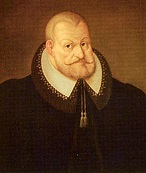
On June 11, 1568 Welf prince (since 1514) Henry V the Younger (b. 1489) dies, and his youngest son Julius, Duke of Brunswick-Luneburg (Brunswick-Lüneburg) (1528-89) becomes prince of Brunswick-Wolfenbuttel (until May 3, 1589), going on to embrace the Protestant Reformation, reform the court system, reform the tax system in favor of farmers, and found a citizen militia. On Oct. 15, 1576 he inaugurates the U. of Helmstedt (Academia Julia) in Brunswick-Wolfenbuttel, Germany, becoming the first Protestant univ. of the N Holy Roman Empire, training Lutheran preachers along with law, medicine, and liberal arts.



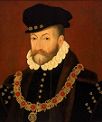
On Feb. 2, 1569 Mary Stuart is moved to grim old Tutbury Castle in Staffordshire in the Midlands under the care of George Talbot, 6th Earl of Shrewsbury (1528-90) and his 2nd wife Elizabeth Cavendish (Elizabeth Talbot, Countess of Shrewbury) (Bess of Hardwick) (1527-1608), and the English council warns that: "She is able, by her great wit and sugared eloquence, to win even such as before they shall come to her company shall have a great misliking" to "gain rule over him, or practise for her escape", Elizabeth I commenting that there must be something "divine about the speech and appearance of the Queen of the Scots, in that one or the other obliges her very enemies to speak for her"; meanwhile Thomas Howard, 4th Duke of Norfolk (1538-72), aided by his sister Jane Neville (nee Howard), Countess of Westmorland (Westmoreland) (1533-93), wife and 1st cousin of Charles Neville, 6th Earl of Westmorland (Westmoreland) (1542-1601) (grandson of Ralph Neville, 4th Baron Neville, whose daughter Cicely Neville was the mother of Edward IV and Richard III) begin the Ridolfi Plot to marry Mary Upstart, er, Stuart to become king of a Protestant Scotland or a Catholic England (whatever), sending Florentine banker Roberto di Ridolfi (Ridolfo) (1531-1612) to Philip II; too bad, in June the Duke of Alva tells Norfolk's Spanish connection that Philip II won't go to war with England right now, and in Aug. the earl of Moray informs Elizabeth that Mary is not welcome back to Scotland; Sir Nicholas Throckmorton is imprisoned at Windsor for suspected involvement in the plot, and his diplomatic career is over although he is never put on trial; the only hope remaining is to overthrow Queen Liz?
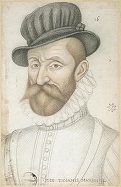

On Mar. 13, 1569 the Battle of Jarnac on the right bank of the Charente River between Angouleme and Cognac sees the Huguenots defeated by the Roman Catholic army led by marshal Gaspard de Saulx, Sieur de Tavannes (1509-75); Huguenot leader Louis I of Bourbon, prince of Conde (b. 1530) is KIA; after Adm. Gaspard de Coligny saves most of the Huguenot army and regroups in the Limousin region, they meet again on June 25 at the Battle of La Roche-l'Abeille, and this time 11K Huguenots led by Coligny accompanied by 14K troops led by Wolfgang, Count Palatinate of Zweibrucken (b. 1526) (who is KIA in Nexon, Burgundy June 11) and financed by Elizabeth I score a V over a 29.5K-man Catholic army led by the duke of Anjou; the Huguenot army heads toward Perigord, massacring 350 infantry and 250 peasants in retribution for the death of Conde.
On Oct. 3, 1569 the Battle of Moncontour near Poitiers in Vienne between the Roman Catholic forces of Charles IX led by Duke Henry of Anjou and the French Huguenot forces led by Adm. Gaspard de Coligny is another D for the Huguenots, after which the Catholics take their turn at the massacre baby love game; Walter Raleigh is a minor Protestant contributor to the D.

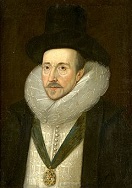

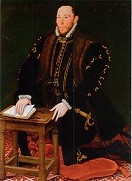


On Oct. 3, 1569 Elizabeth I has ailing Ridolfi Plot leader Thomas Howard, 4th Duke of Norfolk (1536-72) arrested and thrown in the Tower (until 1570) along with his crypto-Catholic younger brother Henry Howard, 1st Earl of Northampton (1540-1614) after she suspects him of planning to join the Northern Rising (Rebellion) (Revolt of the Northern Earls), which sees the Roman Catholic nobles of N England, led by Charles Neville, 6th Earl of Westmoreland (Westmorland) (1542-1601) and Thomas Percy, 7th Earl of Northumberland (1528-72), backed by Charles IX France and a promise of Spanish aid, and financed by Roberto Ridolfi form an army of 2.5K men (with Neville's wife Jane Howard doing much of the recruiting) to attempt Mary Stuart's liberation at Tutbury, capturing and sacking Durham, and celebrating Mass at Durham Cathedral, then marching S to Bramham Moor, planning on sieging York; too bad, on Nov. 25 Elizabeth I has Mary moved to Coventry (Lady Godiva's town) in the Protestant Midlands, foiling them; on Dec. 20 after capturing Barnard Castle on the N side of the Tees River, then marching to Clifford Moor hoping to raise support in vain (their total army only reaching 4.6K men), the rising collapses as a 7K-man army under Walter Devereux, 1st Earl of Essex (1541-76) and a 12K-man army under Edward Clinton, 1st Earl of Lincoln (1512-85) puts them on the run back to Scotland; 600-750 commoners are hanged by next Feb. 4, and 200 gentry are deprived of their estates; Neville flees to Flanders, is attained, and dies broke in Spain, and Raby Castle confiscated; Percy is captured in Scotland, deprived in 1571 in absentia of his hereditary titles and estates, shipped back to York and beheaded in 1572; his wife Jane Howard flees to the Continent, where she spends the rest of her life under house arrest; Thomas Howard is imprisoned and later pardoned; meanwhile Roman Catholic clergy are executed or flee into exile while calling on Big Papa in Rome for help.

In 1569 Thomas Cartwright (1535-1603) is appointed Lady Margaret prof. of divinity at Cambridge U., where he first formally outlines the wonderful Puritan program in black and white; too bad, next Dec. John Whitgift becomes vice-chancellor, and fires him.

In 1569 Flemish-Dutch writer-statesman Philip (Philips) van Marnix, Lord of Sainte-Aldegonde (Marnix van St. Aldegonde) (1540-98) pub. Biencorf der Heiligher Roomscher Kercke (The Roman Beehive) during his exile in Friesland, becoming one of the bitterest satires ever directed against the Roman Catholic Church, getting translated and distributed throughout Europe; he goes on to compose the Dutch nat. anthem Wilhelmus.


On Jan. 23, 1570 uppity Scottish regent James Stewart, earl of Moray (b. 1531) is assassinated in Linlithgow by James Hamilton of Bothwellhaugh and Woodhouselee (-1581) at the house of his uncle Archbishop John Hamilton to get even for confiscating his lands for supporting Mary Stuart, Queen of Scots, and on July 12 pro-Elizabeth Matthew Stuart (Stewart), 4th Earl of Lennox (1516-71) (James VI's grandfather) (whose wife Laddy Lennox is kept in the English court as a hostage) is named regent of Scotland (until 1571), hanging Roman Catholic Archbishop Hamilton for complicity in Darnley's murder; meanwhile Scottish secy. of state Sir William Maitland of Lethington (1525-73) et al. begin a plot to restore Queen Mary Stuart, while the French threaten Elizabeth with war if she doesn't restore her, causing her to make Mary an offer contingent upon ratification of the Treaty of Edinburgh and sending her son James to England as a hostage first, which Mary agrees to in Oct.
Speaking of giving no quarter to prostitutes? On Feb. 25, 1570 Pope Pitiless Five-O, er, Pius V pub. the fatwah, er, bull Regnans in Excelsis (Reigning on High) (claiming he's above all earthly princes so he has jurisdiction to step in?), excommunicating that bastard Elizabeth I, "the pretended queen of England, the serpent of wickedness", inciting her pius, er, pious Catholic subjects to rebel and kill her if they want to get a special place in heaven next to his holy ghisler, and urging foreign princes to rise against her in a holy crusade; too bad, he issues it before learning of the collapse of the Northern Rising, causing it to backfire when the English begin clamping down on all Roman Catholics, considering them not just heretics but traitors, with Elizabeth I making it a crime to become a Roman Catholic priest in England, while Philip II and Charles IX, who are not ready to invade England get pissed off for not being consulted first.
On Aug. 5, 1570 Charles IX of France and the Queen Mother Catherine de' Medici sign the Peace (Treaty) of St. Germain-en-Laye, ending the 3rd French War of Religion and granting Huguenots amnesty and freedom of worship - very little amnesty or freedom?
In Aug. 1570 Ridolfo Plot suspect Thomas Howard, 4th Duke of Norfolk (1536-72) is released from the Tower and placed under house arrest in Charterhouse near Smithfield on condition of good behavior, but (liking Stuart poon and/or remaining a loyal Catholic?) he resumes his Ridolfi Plot with Mary Stuart - I just might turn into smoke but I feel fine?

In Sept. 1570 Elizabeth receives an out-of-the-blue marriage proposal from 19-y.-o. Duke Henry of Valois (1551-89) (later Henry III), brother and heir of French king Charles IX (whose portrait bears a striking resemblance to Hollywood actor David Faustino (1974-)?) in an effort to unite France and England against Spain, causing her to send her swarthy Puritan "Moor" Sir Francis Walsingham to Paris as an envoy, where he finds out that Anjou is not only priest-ridden but a bisexual, wearing a double row of rings, and pendants in his ears (in later life he becomes a transvestite); not that that would stop her if it would save England? - viva Viagra?

On Nov. 17, 1570 Queen Elizabeth's Accession (Golden) Day is first celebrated publicly in England as an Anglican holy day in an attempt to supplant Virgin Mary worship by Roman Catholics, hailing Liz as Judith and Deborah, and holding costumed jousts at the Horse Guards Parade at Whitehall, with Sir Henry Lee of Ditchley (1533-1611) as the queen's champion (until 1590), the queen changing costumes each year, top hits incl. Astraea (virgin goddess of justice), Cynthia (lady of the sea), Diana (the huntress), and Gloriana (the Faerie Queen); meanwhile special services, feasts, and fireworks are held all over England; the day is celebrated until the late 1600s, becoming the last flowering of chivalry in England.
In 1570 the Calvinists, Lutherans, and Moravian Brothers of Poland form the Consensus of Sendomir against the Jesuits.
In 1570 London Anglican bishop Edmund Grindal is transferred to the archbishopric of York after his laxity in punishing Bible-thumping Puritans gets him in trouble; most of the non-conformists in York are Roman Catholics.

In Mar. 1571 Elizabeth I tells her council that she intends to marry Duke Henry of Valois (1551-89), causing Lord Burghley to declare that this will make "the Pope's malice vanish away in smoke"; by Sept. despite Catherine de' Medici sending two special envoys, the marriage negotiations fail because Henry won't give up his Roman Catholic faith and/or everybody thinks Elizabeth is too old for him.
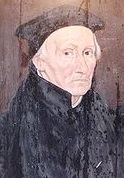
On June 27, 1571 after lobbying by Welsh lawyer-clergyman Hugh Price (1495-1574), Elizabeth I founds Jesus College at Oxford U. for the education of Protestant clergymen.




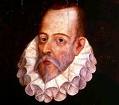
On Aug. 3, 1571 after an 11-mo. siege, 70K Turks capture Famagusta, capital and chief city of Cyprus, and massacre its pop.; on Oct. 7 after Pope (1566-72) Pius V (Antonio Michele Ghislieri) (1504-72) signs the Holy League Alliance with Spain and Venice, 200 Spanish and Venetian galleys under 24-y.-o. Don John (Juan) of Austria (1547-78) (half-brother of Philip II of Spain, and illegitimate son of HRE Charles V) defeat the 230-galley Turkish fleet at the 6-hour Battle of Lepanto (Naupactos) in a bay at the mouth of the Gulf of Patras (entrance to the Gulf of Corinth) off Lepanto in W Greece (biggest naval battle in Mediterranean history?) (last major naval battle fought exclusively by rowing vessels?) just before 5 p.m., with 12K Christian casualties vs. 6K Muslim POWs taken and 30K of 56K KIA, incl. Turkish fleet grand adm. Muezzinzade Ali Pasha aboard his ship, becoming the first defeat of Muslims by Christians on the sea, a big V for Western military technology, and the beginning of the end of the Ottoman naval threat in the C Mediterranean, destroying the myth of their invicibility, although both fleets are heavily damaged and the Ottomans speedily rebuild their fleet and restore their supremacy on the W and E sides; Spanish writer Miguel de Cervantes Saavedra (1547-1616) is wounded in the battle, calling it "the most noble and memorable event that past centuries have seen or future generations can ever hope to witness"; Italian-born Muslim convert Ottoman adm. Uluj Ali Reis (Giovanni Diongini Galeni) (1519-87) captures the flagship of the Maltese Knights along with its great banner before gathering the fleet's remaining 87 ships and returning to Constantinople, getting promoted on Oct. 29 to grand adm.; since most of the Ottoman sailors had been sent home for winter and the rest were involved in political squabbles, and the Christians outnumbered them, it was an overrated V for Christ?; the failures of war galleys cause their use to decline as better designs are sought and bigger vessels built; many Muslim POWs are taken and used to man Christian oars; bald, white-bearded future saint Pope Pius V allegedly sees the V in a vision in Rome at the exact moment it happens, ascribing it to intercession by Our Lady the Virgin Mary, even though he isn't informed of it officially until Oct. 21? - Playtex, who knows you like we do?

On Sept. 3, 1571 after he is discovered sending money and ciphered letters to Mary Stuart, Thomas Howard, 4th duke of Norfolk is arrested, and put in the Tower on Sept. 7, then confesses on Oct. 11 to avoid torture; on Oct. 24 Mary's envoy the Bishop of Ross is put in the Tower and tortured, giving up Mary, Norfolk, the Earl of Southampton, the Earl of Arundel, Lord Cobham and Lord Lumley; Arundel lives but never clears his name; Southampton spends a year in the Tower; the Spanish ambassador is expelled; Ridolfi safely flees; from now on Elizabeth will never free Mary or restore her to the Scottish throne, and recognizes James VI as Scottish king; the affair drives her to revive the match with Duke Henry of Anjou, but he is having an affair with Mademoiselle de Chateauneuf and trying to be crowned king of Poland, so Catherine de' Medici suggests her puny 17-y.-o. pockmarked (with a funny nose and slightly deformed spine) son Hercules Francois, Duke of Alencon (Alençon) and Anjou (1555-84), who is sympathetic toward the Huguenots, has ambitions of leading the Protestants against the Spanish in the Netherlands, and can grow a beard to help hide the pockmarks, but despite he being a young stud and she a Cougar, he is such an immature twerp that she rejects him?
In 1571 after coming under the influence of Adm. Gaspard de Coligny, Charles IX of France and the Huguenots reconcile, and a marriage is arranged between Charles IX's sister Margaret of Valois and Huguenot leader Henry of Navarre (future king Henry IV), setting the wedding for next Aug. 18.
The Low Countries are a sea of blood and flames because of their love of Christ? On Apr. 1, 1572 the Dutch Watergeuzen (Sea Buggers, er, Beggars) of William I the Silent of Orange capture Brielle in S Holland, and for the first time stay and occupy it, and the idea catches on, with most of the cities in Holland and Zeeland soon falling into their hands, with the exception of the capitals Amsterdam and Middelburg (capital of Zeeland); the captured cities then convene an estates-gen. in Dordrecht, which confirms William I as stadtholder (gov.), who goes on to score several land Vs at Deventer, Mons, Roermond, and Leuven; the silver Geuzen medal is struck celebrating the capture of Brielle; virulent anti-Catholic polemicist Philip van Marnix, author of the Dutch nat. anthem Wilhelmus van Nassouwe (in which the first letters of the couplets form the name "Willem van Nassov") is sent by William I as his rep. to the estates-gen.
In May 1572 a French nat. Protestant synod is held in Nimes in S France.

On June 2, 1572 (7 a.m.) (after her cousin the queen delayed the execution, originally set for Jan. 21, and visited the night before to make sure he was comfy?) Thomas Howard, 4th duke of Norfolk (b. 1536) is beheaded on Tower Hill after declaring that he had never been a papist, and that "Since the beginning of our most gracious Queen's reign I am the first, and God grant I may be the last"; he refuses a blindfold, and is buried before the altar of the Chapel of St. Peter ad Vincula in the Tower between his cousins Anne Boleyn and Catherine Howard; his son Philip Howard, 20th Earl of Arundel (1557-95) is prevented from inheriting his dukedom, but he makes out okay as his maternal grandfather croaks in 1580, and becomes the 1st, 13th or 20th earl of Arundel, depending on whom you talk to.
On July 7, 1572 king (since Apr. 1, 1548) Sigmund II Augustus (b. 1520) of Poland dies childless, and the Jagiellon line comes to an end; the Estates of Poland declare the monarchy elective, and next May 16 Duke Henry of Valois becomes king Henry III (1551-89) of the Polish-Lithuanian commonwealth (until May 12, 1575), becoming shocked at Polish culture incl. taking shit outside castle walls, taking baths with regulated hot and cold water, and eating with forks, which he takes back to France - and deep down in your heart, you know it ain't right?


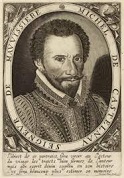

On Aug. 18, 1572 Protestant Henry of Navarre (b. 1553) (future Henri IV of France) marries Charles IX's sister Marguerite (Margaret) de Valois (1553-1615) (until 1599) at Notre Dame Cathedral in Paris, and becomes King Henry III of Navarre, the first member of the House of Bourbon to achieve royal rank, pissing-off the Roman Catholic Guise party, backed by Catherine de'Medici, and causing them to attempt to assassinate Huguenot leader Adm. Gaspard de Coligny (1519-72)) on Aug. 22 for his influence over Charles IX, which fails, only shattering his left elbow and tearing a finger from his right hand and causing riots in Paris; on Aug. 23/24 (Aug. 13/14 Old Style) (Thur.) (night) the Fourth French War of Religion (ends Aug. 25, 1573) begins with the St. Bartholomew's Day Massacre, approved by Charles IX of France and Queen Mother Catherine de' Medici; it starts out as a surgical assassination of Adm. Gaspard de Coligny and other Huguenot leaders in Paris, with Coligny killed in his house by Duke of Guise henchman Charles Danowitz AKA Karel Janovic and hung from a gibbet by one foot before being beheaded, after which the king orders all Huguenots cleared from Paris, but it gets out of hand, and 2K-4K Protestants are murdered, exploding into a nat. killing spree as over 100K French Protestants are murdered like maggots by French Catholic mobs on a mission from God to exterminate the "Lutheran scum" (Henri II); Henry of Navarre saves himself by abjuring Calvinism, and becomes a virtual prisoner until 1576, after which he returns to practicing it; the news cause Philip II to dance for joy, Mary Stuart to stay up all night celebrating, and Pope Gregory XIII to express satisfaction at the killing of heretics; Sir Francis Walsingham hides in Paris during the massacre and barely escapes, sending a message to Elizabeth I which arrives on Sept. 3 and causes her to go into mourning and postpone plans for marrying the duke of Alencon, who had nothing to do with the massacre and speaks out against it; Catherine's internat. rep. plummets and never recovers; Walsingham is put in charge of England's security, and immediately identifies Mary Stuart, Queen of Scots as public enemy #1; a mass exodus begins of Huguenots from France to London, Geneva, Amsterdam et al., all telling horror stories; on Sept. 5 French ambassador Fenelon tells Elizabeth that the massacre as an "accident", and makes up a story about a Protestant plot to overthrow Charles IX; in Oct. Charles sends Michel de Castelnau, Sigeurde la Mauvissiere (Mauvissičre) (1520-92) to London to ask Elizabeth to be godmother to his infant daughter as a gesture, even though Liz is excommunicated and the daughter is a Catholic; Liz responds by sending the Earl of Worcester with a gift of a gold salver, which is stolen by pirates on the Channel; after the massacre causes cries for Mary Stuart's head, on Sept. 10 Elizabeth secretly proposes to the Earl of Mar to take her back and try her for Darnley's murder in the hopes she will be executed, but the plan falls through when Mar demands the English admit to wanting her dead; on Nov. 24 Mar dies of natural causes, and Mary's enemy James Douglas, 4th Earl of Morton (151-81) is named regent (until 1580); the countess of Mar gains custody of James VI.

In Oct. 1572 the Dutch Protestant rebel army of William I the Silent of Orange gets pushed by the Spanish into the harbor town of Enkhuizen in N Holland after promised French Huguenot support evaporates, allowing the Spanish army under the Duke of Alva's super-cruel 2nd son Don Fadrique (Don Frederick) Alvarez (Álvarez) de Toledo, 4th Duke of Alva (Alba) (1537-83) to sack several rebel cities, massacring the pops. of Mechelen (Mechlin), Zutphen (Nov. 17), and Naarden (Dec. 1); meanwhile on July 4 the formerly pro-Spanish city of Haarlem has seen enough and declares for the rebels, and on Dec. 11 the Spanish Siege of Haarlem (ends July 13, 1573) begins, continuing through the winter; on Dec. 19 the Spanish fire 625 artillery shots at its weak defensive wall, causing them to have to build a new one fast; Sir Humphrey Gilbert is sent with an English force; Dutch pigeons carry letters during the siege of Haarlem; Kenau Simonsdochter Hasselaer (1526-88), daughter of the mayor leads her own troop of 300 women, causing the Dutch word "kenau" to come to mean a bossy bitch. On Nov. 9 the Siege of Sancerre in C France begins with a surprise attack by the Roman Catholics, with the Huguenot pop. holding out in the fortified hilltop stronghold for almost 8 mo. and losing 500 (incl. most of the children) to famine plus 600 when a wall collapses until the siege is abandoned next Aug. 25, becoming celebrated as the Protestant version of the 70 C.E. Siege of Jerusalem; "We light here, we fight here, go assassinate elsewhere."
Rock 'em, rack 'em and shellac 'em? On Mar. 29, 1573 after sieging Haarlem since Nov., the pro-Spanish Amsterdam army cuts off the Haarlemmermeer Lake, causing it to begin to starve, which causes the mad pop. to murder several pro-Spanish POWs on May 27; on July 13 Haarlem surrenders to the Duke of Alva after 7 mo., and the pop. saves itself with a 240K guilder ransom, while the defending army is slaughtered and the city has to host a Spanish garrison; the Spanish lose a total of 12K men; although it is a V for the Spanish it convinces the Dutch rebels that the Spanish can be beat; Alva finally sneaks out of the Netherlands (Brussels) to elude his creditors, after pillaging the towns of Mons, Malines, Zutphen, and Maarden, boasting that he had executed 18.6K heretics during his six years there, incl. 800 in one "holy week" - the original holy no-fault insurance?
On May 11-15, 1573 Duke Henry of Valois is elected king of Poland, and in July the Edict of Boulogne (Peace of La Rochelle) is signed by Charles IX in Chateau de Madrid in Bois de Boulogue, ending the Fourth French War of Religion (begun 1572), with the Huguenots (what's left of them) granted an amnesty but with severely curtailed rights, with freedom to worship only in La Rochelle, Montauban, and Nimes, and only in their homes; assemblies for the purpose of marriage and baptism can be presided over certain Protestant nobles, with a max of 10 attendees outside the family - is chateauneuf for him?
In Feb. 1574 a failed coup in Saint-Germain with the aim of releasing Henry I de Bourbon, prince of Conde and Henry of Navarre (future Henry IV) from imprisonment at the royal court, along with successful Huguenot uprisings in Lower Normandy, Poitou, and the Rhine Valley lead to the Fifth War of Religion in France (ends May 6, 1576).

On May 30, 1574 (St. Bartholomew's Day) Bad Boy French king (since 1560) Charles IX (b. 1550) dies, and his sickly disgusting prick of a brother Henry of Valois, elected king of Poland in 1572 secretly rushes back to France 3 mo. after his coronation to become Henri (Henry) III (1551-89) (until Aug. 2, 1589), the lucky 13th (and last) Valois king of France, leaving Poland and its elective kingship for the much more cushy hereditary French throne; to stifle criticism he prohibits the age-old tradition of inserting political prophecies in almanacs - how does it feel when you're on your own with no direction home?

In May 1574 after the Dutch city of Leiden joins the anti-Spanish revolt, the Spanish siege it, but it is saved when the dikes are cut, flooding the meadows and allowing William I's navy to sail in and relieve it on Oct. 3.
In Jan. 1575 the Protestant states of the Netherlands ask Elizabeth I to accept the crown of Holland and Zeeland, but she waffles because of her disapproval of republicanism and ends up offending them.

On May 17, 1575 archbishop of Canterbury (since 1559) Matthew Parker (b. 1504) dies, and Lord Burghley nominates Edmund Grindal (1519-83), who opposes Elizabeth I's demand that he suppress discussion meetings of the Puritans, pissing her off; Parker leaves his collection of historical mss. to his alma mater Corpus Christi College in Cambridge.
On Oct. 10, 1575 the Battle of Dormans sees French Roman Catholic hero Henry I, 2nd duke of Guise wounded, causing him to become known as Le Belafre (the Scarred), just like his daddy the 1st duke.
In 1575 at the Conference of Breda Philip II refuses to grant concessions to the Dutch rebels; meanwhile Diederik Sonoy, (a Protestant) becomes gov. of the Northern Quarter, and soon begins surpassing the Catholic Inquisitors in his cruel torture of Roman Catholics, despite warnings to desist by "Father William" of Orange - freedom is just a word for nothing left to what?

In 1575 French Huguenot leader Philippe de Mornay, Seigneur du Plessis-Marly (1549-1623) is captured then ransomed, taking refuge with Henri de la Tour d'Auvergne, duc de Bouillon at Sedan, where he marries Charlotte Arbaleste.
On Feb. 8, 1576 radical Protestant MP Sir Peter Wentworth (1529-96) (brother of Radical Protestant MP Paul Wentworth) delivers his Famous Wentworth Parliamentary Address, arguing that MPs have the right to discuss any subject they wish, incl. Elizabeth I's succession, causing the other MPs to cut him off and send him to the Tower; when he gets out he is unrepentant, getting sent there again next Feb., becoming the first famous English MP?
In Feb. 1576 Philip II sends Sieur de Champigny to ask Elizabeth I if she intends to aid Protestant rebels in the future, but she keeps him waiting for two weeks and sends the envoy back with an enigmatic answer.
On Apr. 9-June 7, 1576 the Lutheran League of Torgau meets in Torgau, Saxony, drawing up the Formula of Concord, eliminating Calvinism from Lutheranism, which is presented to elector August of Saxony next May 28, and signed by three electors, 20 dukes and princes, 35 free imperial cities, 24 counts, four barons, and 8K pastors, representing two-thirds of the Lutherans in Germany, but rejected by the Lutherans of Hesse, Zweibrucken, Anhalt, Pommeranian (land), Holstein, Denmark, Sweden, Nuremberg, Strasburg, and Magdeburg, and lobbied against by Elizabeth I of England.
On Apr. 25, 1576 Holland and Zeeland, the two strongly Calvinist provinces (out of 17 provinces) of the Low Countries sign an Act of Federation in Delft, and since Muslim-killer Don John of Austria doesn't have a drop of toleration in him, war is inevitable. In the spring Elizabeth I drops all plans for marrying the twerpy duke of Alencon.
Set the boil to low? On May 6, 1576 after his brother the duke of Alencon supports the Protestant army sieging Paris, the Fifth French War of Religion (begun 1574) ends with the Edict of Beaulieu (Peace of Monsieur), promulgated by Henry III from Beaulieu-les-Loches, officially tolerating the "so-called reformed religion" in France again, except in Paris and the court, with special chambers created in eight parliaments with equal numbers of Huguenots and Catholics, and the Massacre of St. Bartholomew disclaimed, with the families who suffered from it reinstated; Alencon is created duke of Anjou; Henry of Navarre is released from house arrest and returns to the Protestant faith, causing the Duke of Guise and his brothers to form the Catholic (Holy) League of France to unite all French Catholics against Protestants; the "War of the Three Henries", a 3-way power struggle between Henry III, the Guise family, and the Huguenots begins, while the king's brother duke Francois of Alencon is used by the Guises.
In Nov. 1576 Philip II's army of Flanders mutinies over an arrears in pay and sacks Antwerp in the "Spanish Fury", burning 600 houses and killing thousands, causing Dutch Roman Catholics and Protestants to unite against them under William of Orange, agreeing on Nov. 8 in Ghent to the Pacification of Ghent, granting limited tolerance to Protestants while authorizing a new army to take care of the mutinous troops; when Don John arrives in Luxembourg he is informed that he must accept the Pacification of Ghent to become gov.-gen.; Elizabeth I gives the Protestants gold in secret while putting on an act to fool Philip II.
In Dec. 1576 the Sixth French War of Religion (ends 1577) begins when the Catholic League led by Duke Henry I of Guise and the Estates-Gen. of Blois fail to honor the Edict of Beaulieu, with Huguenots rebelling in Poitou and Guyenne.
In Jan. 1577 the Dutch reject an offer from Elizabeth I to mediate the dispute between the Dutch and Don John of Austria, who first tries to keep his mutinous troops then requests that they be given ships, then settles for them marching S loaded with their plunder, finally issuing the Perpetual Edict of 1577 to settle the civil war in the Netherlands, not exactly accepting the Pacification of Ghent, but requring a panel of theologians to hammer the toleration thingie out, which is rejected by William of Orange; meanwhile Walsingham's spies uncover a plot by Don John (assisted by the Duke of Guise) to invade England with 10K troops, depose Elizabeth, and marry Mary Stuart, which causes Elizabeth to knight Walsingham; Don John's plan never comes off because that's why he wanted them ships, but in May he makes his Joyous Entry into Brussels, promising to defend its historic privileges, along with that of the 17 Dutch provinces.
In May 1577 Elizabeth I places archbishop of Canterbury Edmund Grindal under house arrest at Lambeth Palace, deprives him of his jurisdictional powers, and orders the bishops to suppress all forms of Puritan worship; after the earl of Leicester intercedes, she lets him remain in office, but bans him from carrying out his official duties, leaving the Church of England without a spiritual leader for five years (until 1582).
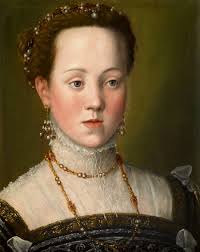
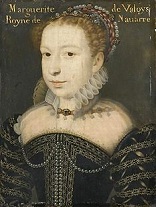

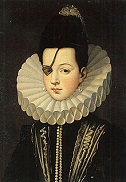
In July 1577 after taking care of his scandalously loose low-class widowed mother Barbara Blomberg (1527-97) (former mistress of HRE Charles V) by promising to send her to Italy to meet Margaret of Parma but actually shipping her off to Spain, Don John of Austria meets Margaret (Marguerite) of Valois, Queen of Navarre (1553-1615), by promising to send her to Italy to meet Margaret of Parma but actually shipping her off to Spain, Don John meets Margaret (Marguerite) of Valois, Queen of Navarre (1553-1615), daughter of Henry II and Catherine de' Medici, and sister of Frances II, Charles IX, Henry III, and Elizabeth of Valois, and after she leaves he seizes Namur, after which rumors spread of a love tryst; meanwhile he sends his secy. Juan de Escobedo (1530-78) to plead with Philip II to send his so-called mutinous troops back so he can finish the Protestants off, and the states-gen. figure him out and declare war on him; meanwhile when Escobedo gets to Spain, he ends up blabbing about a love affair between Philip II's chief secy. (since 1543) Antonio Perez (1540-1611) of Aragon (former friend and now mortal enemy, who had got Escobedo his job to spy on Don Juan, only to find him become loyal) and the widowed (since 1573) eyepatched Ana Mendoza de la Cerda (1540-92), princess of Eboli, which, combined with a bunch of lies concocted by Perez, causes pissed-off Philip II to order his assassination, which takes three attempts, and is finally done on Easter Monday night, Mar. 31, 1578 in an alley outside the Church of St. Maria in Madrid (demolished 1868); too bad for Perez, Philip II finally becomes suspicious of him and gets him in legal and criminal hot water for years, getting the princess put under house arrest for life, while he escapes one jail after another until fleeing to France on Nov. 23, 1591 disguised as a shepherd in a snowstorm, s pending the last 20 years of his life selling all his state secrets and painting Philip II as a cruel, intolerant, fanatical, er, never mind.
In Sept. 1577 after Henry of Navarre is recognized as the head of the Huguenot party, the Sixth French War of Religion (begun 1576) ends with the Peace (Treaty) of Bergerac, with Henry III rescinding most of the concessions to the Protestants made in the Edict of Beaulieu, confirming it six days later in the Edict of Poitiers.

On Jan. 31, 1578 the Battle of Gembloux in Gembloux, Brabant in modern-day Belgium sees a 1.2K-man Spanish advance force spook a 20K-man retreating Dutch Protestant army, allowing the rest of the 17K-man Spanish force to crush them; Alessandro Farnese (1545-92), son of duke Ottatvio Farnese of Parma-Pacienza gets the credit, and replaces Don John of Austria, who claims ill health, and after receiving news of the Mar. 31 assassination of his personal secy. Antonio Perez, he continues campaigning although ill, dying on Oct. 1; no loss, as Farnese proves as able as William I the Silent, and uses every trick in Machiavelli's book to sow discord in the S Netherlands?



In spring 1578 Elizabeth I's longtime lover Robert Dudley, 1st earl of Leicester secretly weds her tighter, er, nicer cousin Lettice Knollys, Countess of Essex (Viscountess Hereford) (1543-1634), daughter of Sir Francis Knollys (1514-96) and Catherine Carey (1524-69), daughter of Anne Boleyn's sister Mary Boleyn (1499-1543); on Apr. 28 Elizabeth finds out, and in May she sends a marriage proposal to the duke of Alencon with the secret goal of getting the French king (his brother) to commit France to the Dutch cause against Philip II; she offers to mediate between the Dutch and Don John of Austria, but finds him dead and Alessandro Farnese in charge; luckily for Elizabeth, Lettice has a young son, Robert (b. 1567), by her first marriage to Walter Devereux, 1st earl of Essex, who will grow up to comfort her old age.
On July 31, 1578 the Battle of Rijmenam (Rijmenam-Mispeldonck) in Rijmenam in modern-day Belgium is a D for the Protestants under ailing Don John of Austria (b. 1547), who regroups in Namur in Sept., and dies of typhus on Oct. 1, leaving Alessandro Farnese in sole charge.
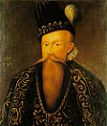
In 1578 Swedish king (since Sept. 30, 1568) John (Johan) III Vasa (1537-92) secretly converts to Roman Catholicism, and tries unsuccessfully to make Sweden a Roman Catholic country (until 1584), entering the anti-Russian league with Stephen Bathory of Poland.
On Jan. 23, 1579 the Union of Utrecht, engineered by Prince William I the Silent of Orange's younger brother Count John (Johann) VI of Nassau-Dillenburg (1536-1606) unites the seven Protestant N provinces of the Netherlands into the Repub. of the United Netherlands, which signs a military alliance with the English. On Mar. 12-July 1 after it falls into the hands of the rebels, the Siege of Maastricht in the Netherlands sees the Spanish under Gen. Alexander Farnese siege it with 20K men, with the 1.2K brave defenders fighting them underground in tunnels, killing 2.5K Spanish while losing 1K soldiers along with 800-4K civilians killed during a 3-day looting spree. On May 17 the Treaty of Arras sees the 10 "Malcontent" Roman Catholic (mainly Walloon) provinces of S Netherlands agree to form a union and support Philip II's cause under Gen. Alessandro Farnese, who sets up his base in Hainaut and Artois; Farnese goes on to take Tournai, Maastricht, Breda, Bruges, and Ghent, aiming to reconquer all of Brabant and Flanders, and the northern cause seems hopeless unless Queen Elizabeth I can get the French to aid them, causing her to flirt more openly with Mr. Pockmarks Francis of Valois, duke of Anjou, who makes a secret visit to her on Aug. 17-29, quiets rumors that he is not a hunk, and ardently woos her, but withdraws, er, shoots, er, leaves abruptly before marriage is agreed to.
In 1579 a papal nuncio is sent to Switzerland, and he chooses Lucerne as his seat - that'll churn things up?


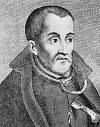
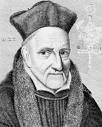
On Jan. 31, 1580 King-Cardinal Henry (Henrique) I (b. 1512) dies, leaving no heir (he wants to admit to?), and the Avis (Avi) Dynasty in Portugal (founded 1385) ends (in with a Henrique, out with a Henrique?), causing the Portuguese secession crisis of 1580; in June the Duke of Alva and a 40K-man army of Spanish troops along with German and Italian mercenaries land in Portugal, meeting a ragtag 8.5K-man Portuguese army along with 3K African slaves at the Aug. 25 Battle of Alcantara near Lisbon, which is captured on Aug. 27, after which Henry I is succeeded by Philip II (the Prudent) of Spain (1527-98) after six other less rich claimants are dealt with, esp. Duke John of Braganza (1543-83) (grandfather of Joao IV), and crowned next Mar. 25, while the Spanish under the cruel-is-cool pain-no-problemo Duke of Alva crush all opposition; Philip II now rules the original empire in which the Sun never sets, taking the title of richest ruler in history (there's a crime in every fortune, to the nth power?); Ceuta reverts from Portugal to Spain; the annexation of Portugal vastly increases Spain's already formidable naval fleet (and now England's ass is grass and he's got the lawnmower?); Pope Gregory XIII reissues his predecessor's bull against the excommunicated heretic bastard Queen Elizabeth I, and Philip II begins planning the Enterprise of England (Roman Catholic invasion); meanwhile the pope sends English Jesuits (St.) Edmund Campion (1540-81) (who had once been a top Protestant cleric in line for archbishop of Canterbury, then "took a remorse of conscience and detestation of mind" in 1569 and ended up fleeing to Douai, France in 1571 and converting) and Robert Parsons (Persons) (1546-1610) (an Oxford don who had fled in 1574) to England to aid in undermining Elizabeth, and on June 24 Campion arrives in London pretending to be a jewel merchant, but when he finds they know his identity he begins openly preaching to Catholics while eluding capture, causing Queen Liz to become antsy while he plays the Jesus-in-Jerusalem part; meanwhile Parsons flees to Spain and plots with Philip II to invade the stankin' infidel English and finish them off; by this year there are 100 Roman Catholic seminary priests in England, who are usually hidden in "priest holes" in Catholic homes, causing experienced priest hole finders to case them in order to make them say prayers from the Anglican Book of Common Prayers to expose them to heresy prosecution when they refuse, causing the nursery rhyme Goosie Goosie Gander to be created; "Goosie goosie gander,/ Whither shall I wander?/ Upstairs and downstairs/ And in my lady's chamber./ There I met an old man/ Who wouldn't say his prayers;/ I took him by the left leg/ And threw him down the stairs" - don't just look smart, play smart?

On Mar. 5, 1580 James VI raises recently-returned (from France) Esme (Esmé) Stewart (Stuart) (1542-83) (cousin of his father Lord Darnley) to 1st earl of Lennox, followed next Aug. 5 to 1st duke of Lennox, and he converts from Roman Catholic to Protestant to please the king and silence rumors that he is an agent for the Counter-Reformation; meanwhile rumors spread about their suspected love affair - after all, my mommy is about to give head at Fotheringay?
On Sept. 19, 1580 Francis of Valois, duke of Anjou is proclaimed Prince and Lord of the Netherlands, finally getting France to commit to the Protestant Dutch cause against Philip II, although it proves of little worth, as he proceeds to regain control of Antwerp and ends up alienating them instead; the Seventh French War of Religion begins, ending with the Treaty (Peace) (Edict) of Fleix of Nov. 26., which recognizes all previous treaties giving religious privileges to the Huguenots.

On Dec. 30, 1580 after being plotted against by the duke of Lennox and his companion James Stewart, earl of Arran, Scottish regent James Douglas, 4th Earl of Morton (1516-81) is deposed for his part in the murder of Lord Darnley, and he is executed next June 2 on the Scottish Maiden, which he introduced to Scotland; the regency now belongs to whomever has custody of the king, who is warmly in the hands of Esme Stewart.
In 1580 St. Peter Canisius leaves Germany and founds the Jesuit Seminary of St. Michel in Fribourg, Switzerland, which evolves into the U. of Fribourg.
On Mar. 18, 1581 Parliament passes a Revised Statute of Recusancy, making conversion to the Roman Catholic faith tantanount to treason in England; over the next 20 years 250 Catholics are executed or die in prison.

On June 27, 1581 400 copies of the pamphlet Decem Rationes (Ten Reasons) by pesky English Jesuit (St.) Edmund Campion (1540-81) are found in the pews of St. Mary's in Oxford, causing a sensation, and on July 14 he is arrested in Lyford, Berkshire and taken to London with a sign on his hat reading "Campion, the Seditious Jesuit"; after the queen personally offers him wealth and titles if he gives up that Catlick stuff, he refuses and is hanged, drawn, and quartered on Dec. 1 for treason, but not before new official censor (a learned poet) Thomas Norton (1532-84) (known by English Catholics as the "Rackmaster General") uses his favorite toy on him three different times; too bad, rabid Calvinist Norton later slips into Puritanism and is thrown in the Tower, released, then dies of ill health in 1584.
On Oct. 31, 1581 the Duke of Anjou returns to England to woo Elizabeth again; she promises to marry him formally on Nov. 22, then waffles and finally rejects him, using him as a tool to hold off Spain from attacking.
In Dec. 1581 Walter Raleigh (1552-1618) is sent to England with dispatches, and attracts the queen's favor, allegedly by placing his embroidered cloak on a puddle of water so she can pass over it dry-shod, and becomes her favorite, receiving large estates and becoming one of the wealthiest men in England, getting knighted in 1584; meanwhile Elizabeth I knights Sir Francis Drake (1543-96) in Deptford - watch the ear?
In 1581 the Dutch provinces within the Union of Utrecht proclaim their independence from Spain.
In 1581 fear of restoration of Roman Catholicism in Scotland causes the Gen. Assembly of Scotland to denounce the pope and Roman Catholicism in emphatic language, ratify the Nat. Covenant (King's Confession), drafted by John Craig (Gael. "rock") (1512-1600), and force James VI to sign it; its signatories and adherents become known as Supplicants. James VI raises the earl of Lennox to duke (the only duke in Scotland); rumors that they are lovers and that he has too much influence with the king stink up the court?


On Feb. 7, 1582 frustrated in his marriage hopes by cagey Elizabeth I, Huguenot-friendly pockmarked French Duke Hercules Francois, Duke of Alencon (Alençon) and Anjou (1555-84) accepts an invitation from Lutheran leader William I the Silent, Prince of Orange (1533-84) (father of Maurice of Nassau) to become protector of the Netherlands; too bad, his attempts to secure absolute power piss-off everybody and get him expelled, and both die in 1584, letting everybody off the hook.
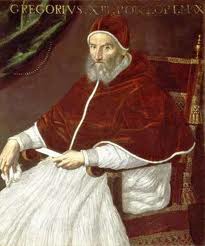
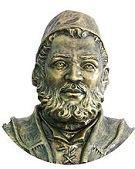

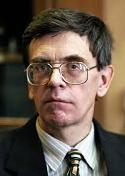

On Feb. 24, 1582 upon the recommendation of German Jesuit astronomer Christopher Clavius (1538-1612), Pope (since May 13, 1572) Gregory XIII (1502-85) issues the bull Inter Gravissimas, decreeing a changeover from the Julian Calendar to the Gregorian Calendar; 10 days (lost since Jan. 1, -46, when the Julian Calendar began) are to be dropped, so that Oct. 15 (Fri.) immediately follows Oct. 4, or Dec. 20 (Mon.) follows Dec. 9; the Papal States, Spain, Portugal, and Poland change in Oct., France, Holland, Belgium, and Scandinavia in Dec.; the Roman Catholic states of Germany and Switzerland adopt it in 1584, followed by Hungary in 1587; too bad, Protestant countries suspect a rat and refuse to change, and the Continental Protestant states hold out until 1700, and England and its colonies till 1752; Russia holds out until 1918, Greece until 1924, and non-Euro states don't adopt it until the 19th and 20th cents., Japan in 1873, Egypt in 1875, Turkey in 1926, and China in 1949; the figure for the length of the year from Copernicus' De Revolutionibus Orbium Coelestium is proposed but not used as the basis of the reform calendar; after a suggestion by Vatican librarian Topo Gigio, er, Aloysius Lilius (Luigi Lilio or Giglio) (1510-76), only century years (1600, 1700, etc.) with the century part itself evenly divisible by four (1600 but not 1700) are leap years, which causes three leap years to be taken out of each 400, trimming the avg. calendar year down quite fortunately to only about 26 sec. longer than the Earth's real orbital period, which will take 3,323 years to become 1 day out of synch; too bad, there should have been a 13-day discrepancy, not a 10-day one, causing the Phantom Time Hypothesis to be developed by Herbert Illig (1947-), Anatoly Fomenko (1945-), Uwe Topper (1940-) et al., that phony phantom centuries were manufactured during the Renaissance to create a nonexistent Dark Ages; Pope Gregory's new calendar for the Christian world changes the date of the new year from Apr. 1 to Jan. 1, and those who still celebrate New Year's Day on Apr. 1 begin to be known as April Fools.
On May 15, 1582 the Scottish ministry is informed that "the Duke [of Lennox] goes about to draw the king to carnal lust"; in July King James VI issues a proclamation ordering people to desist in spreading "such false bruits and manifest lies"; in Aug. a band of anti-Lennox Protestant nobles led by William Ruthven, 4th Lord Ruthven, 1st Earl of Gowrie (1541-84) stages the Ruthven Raid, kidnapping James VI and imprisoning him in the House of Ruthven for 10 mo. (until June, 1583), making him sign a document banishing his cousin Esme Stuart, duke of Lennox from Scotland as a suspected batter for the other team, er, agent for the Counter-Reformation; Lennox leaves for France on Dec. 21 - only time for the one chic mesh bag with the cordura on the sides?
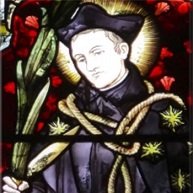
In May 1582 a Roman Catholic plot to overthrow Elizabeth I and put Mary Stuart on the English throne is hatched in Paris by the Guises, Pope Gregory XIII, Philip II of Spain, and the Jesuits; on May 30 after being tortured on the Scavenger's Daughter, English Roman Catholic priest Thomas Cottam (b. 1549) is hanged in Tyburn for high treason, and his mutilated corpse boiled in water to prevent Roman Catholics from using it for relics; the Jesuits in England gain one of their top martyrs.
In 1582 the English College of Douai (founded 1561) in N France on the Scarpe River pub. The Douay (Douai) New Testament, an English Roman Catholic trans. of the 5th cent. Latin Vulgate Bible, pub. in Reims, France; the Old Testament follows in 1609-10.
In Jan. 1583 the Duke of Anjou turns on the Dutch rebels and attacks several of their cities, sacking Antwerp, but is forced to flee to France in disgrace; William of Orange accepts the sovereignty of the northern Netherlands.


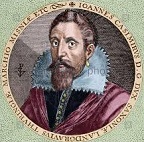
In Feb. 1583 the Cologne (Seneschal) (Sewer) War (ends 1588) begins when drunken horndog Gebhard Truchsess von Waldburg (1547-1601), archbishop-elector of Cologne, who was caught living with concubine Agnes and decided to become a Protestant to make an honest woman of her, announcing his conversion last Dec., but refusing to resign, finally goes through with the marriage, and is excommunicated and deposed in Apr. by Pope Gregory XIII, who appoints genuine Catholic throwback Ernest of Bavaria (1554-1612), bishop of Liege (brother of Duke William V of Bavaria) as his successor (after which the position becomes a Bavarian thing until 1761); meanwhile Gebhard, who had already built up an army doesn't just hand the bishopric over, and after asking for help from elector Augustus I of Saxony, who doesn't like his Calvinist friends, and Henry of Navarre, who tries in vain to form a coalition to aid him, Calvinist John Casimir, Count Palatinate of Simmern (1543-92) (who sent his portrait to Elizabeth I of England in 1564 hoping to wow her, in vain), the new regent of the Rhine Palatinate (until 1592) comes to his aid in Oct., but is defeated, and Gebhard is driven from Bonn to refuge in Strasbourg, where he later moves to the Netherlands and becomes friends with Robert Dudley, 1st earl of Leicester, but fails to talk Elizabeth I into helping him make a comeback. On May 23 the exiled Duke of Lennox dies in Paris; on June 27 James VI escapes from imprisonment at the House of Ruthven after 10 mo. (Aug. 1582), and James Stewart, earl of Arran begins regent (until 1585).

On July 6, 1583 Edmund Grindal (b. 1519) dies, and John Whitgift (1530-1604), bishop of Worcester becomes archbishop of Canterbury, going on to persecute Puritans without any mental qualms and become known as a "narrow, mean, tyrannical priest, who gained power by servility and adulation" (Thomas Babington Macaulay), sometimes being attended by a retinue of 800 horsemen.
In July 1583 after Elizabeth's secy. Francis Walsingham arrests several of the conspirators in an alleged plot by Philip II, the Spanish ambassador, and the Guises to invade England and overthrow her, Sir Francis Throckmorton (b. 1554) is arrested and executed.
In Oct. 1583 after announcing that he's going to shoot Elizabeth I and setting out for London, secret Roman Catholic John Somerville of Warwickshire (b. 1560) of Castle Bromwich, Park Hall, Warwickshire is arrested, and after being racked and confessing hangs himself in his cell in the Tower of London after implicating his priest named Hall and his father-in-law Edward Arden (b. 1542), son of William Arden, 2nd cousin of Shakespeare's mother Mary Arden, who is hanged, drawn, and quartered on Dec. 20 in the Smithfield for plotting against Elizabeth I and being a secret Roman Catholic.

On June 19, 1584 Henry II's and Catherine de' Medici's son Duke Francois of Alencon (b. 1555) dies of a fever in France at Chateau-Thierry, becoming the last direct Valois heir to the French throne; Henry III having no sons, the French succession passes to Huguenot Henry of Navarre (1553-1610) (future Henry IV), freaking out the Guise family and their Catholic Holy League and causing them to step up their popular movement and secure control of most French cities.
On June 19/20, 1584 after being smuggled into Dublin in fall 1583 and getting arrested in Sept. while staying with Lord treasurer of Ireland Thomas Butler, 10th Earl of Ormond without his consent, followed by torture and a kangaroo trial after refusing to convert to Protestantism, Roman Catholic archbishop of Cashel, Ireland (since 1583) Dermot O'Hurley (b. 1530) is hanged in Hoggen Green, Dublin, joining the Irish Catholic Martyrs; on Sept. 27, 1992 he is beatified by Pope John Paul II.

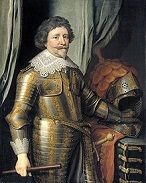

If you can't win by the front door, try the back door? On July 10, 1584 after Philip II puts a price on his head in 1581, 51-y.-o. "Soldier of the Reformation" Lutheran prince of Orange (since July 15, 1544) William I the Silent (b. 1533) is assassinated in Delft by insane Balthazar Gerard (Gérard) (1557-84); next Nov. 1 after being elected as statholder, his son Maurice of Nassau, Prince of Orange (1567-1625) carries on for the next 40 years (until Apr. 23, 1625), followed by his other son Frederick Henry (Frederik Hendrik), Prince of Orange (1584-1647) for 22 years (until Mar. 14, 1647), followed by Frederick Henry's son William II, Prince of Orange (1626-50) (until Nov. 6, 1650), who finally gains the Dutch a guarantee of freedom.


In July 1584 the Spanish army under Spanish Netherlands gov. (1578-92) Alessandro Farnese, Duke of Parma and Piacenza (1545-92) begins the Siege of Antwerp (ends Aug. 1585), defended by Philip (Philips) van Marnix, Lord of St. Aldegonde (1540-98); Farnese cuts off sea access with a boat bridge across the Scheldt from Calloo to Oordam; the siege becomes the first time a bomb is used; too bad, the porous lines of the siege allow smugglers to bring in grain, until the city decides to set a maximum price on it, making them not want to bother, causing starvation.

On Aug. 9, 1584 Philip II of Spain appoints the most Catholic Alvaro de Bazan (Álvaro de Bazán), 1st Marquis of Santa Cruz (1526-88) as Capt.-Gen. of the Ocean Sea to kick pesky Protestant British naval butt; known for never having lost a battle and for his personal galley La Loba (the She-Wolf) (named after its golden figurhead), he is given orders to plan an invasion of England after assembling a Spanish Armada, but the ineptness of the king and his administrators keeps him from getting very far before his premature death in Lisbon on Feb. 9, 1588.
In autumn 1584 the Protestant League of Gentlemen is formed in England to protect Queen Elizabeth and kill Mary, Queen of Scots in the event of a Roman Catholic invasion; it is legalized by parliament in 1586.
In Oct. 1584 the pamphlet Leicester's Commonwealth: The Copy of a Letter Written by a Master of Arts of Cambridge is pub., attacking Queen Elizabeth's favorite Robert Dudley, 1st earl of Leicester as a traitor like his father the Lord Protector Northumberland, accusing him of Puritan sympathies, calling him an amoral opportunist of "almost satanic malevolence", detailing stories of his scandalous deds and dangerous plots; she has it suppressed as Roman Catholic propaganda, which doesn't stop it from hurting his rep for cents.
In 1584 the Roman Catholic states of Germany and Switzerland adopt the Gregorian Calendar.

On Apr. 10, 1585 Calendar Pinup Pope (since 1572) Gregory XIII (b. 1502) dies, and on Apr. 24 former swineherd Felice Peretti is elected Pope (#227) Sixtus (Sextus) V (1521-90), becoming known as "the Iron Pope"; Nostradamus had allegedly long before (c. 1540) passed the young monk on the street, knelt down, and addressed him as "Your Holiness"; on Sept. 9 he excommunicates Huguenot Henry of Navarre (Bourbon) (future Henri IV), who raises taxes to pay for a huge construction program.
In May 1585 Philip II orders the seizure of all English ships in Spanish ports, to be added to his Lisbon fleet; meanwhile Elizabeth I shocks Roman Catholic Europe by corresponding with Sultan Murad III in hopes of a miltiary alliance against Spain, writing that Islam and Protestantism have "much more in common than either did with Roman Catholicism, as both rejected the worship of idols" - which doesn't mean that Islam doesn't want to exterminate both?

On Jan. 15, 1586 the Dutch give Robert Dudley, 1st Earl of Leicester (1533-88) the office of supreme gov. of the Netherlands, which throws Elizabeth I into a jealous tizzy until he steps down?



On Feb. 11, 1586 Augustus I (b. 1526) dies, and his 6th (eldest surviving) son Christian I (1560-91) becomes elector of sexy Lutheran Saxony (until Sept. 25, 1591), going on to appoint Calvinist councillor Nikolaus Krell (1551-1601), who introduces the Second Reformation, prohibiting the practice of exorcism in 1591 and promoting reconciliation with the Calvinists, promoting them into govt. and church offices and bringing out a German trans. of the Bible with Calvinist annotations. On Mar. 14-27 the Colloquy of Montbeliard ( Montbéliard) attempts a union of the Lutherans and Calvinists, but they can't agree on the universalism or particularism of grace, and after a debate on Sept. 2, 1587, followed by another on Apr. 15-8, 1588 in which Theodore Beza (1519-1605) participates, particularism wins, but they still never unite.

On Sept. 18, 1586 Ottavio Farnese (b. 1521) dies, and his son Alessandro Farnese (1545-92) (a talented field cmdr., known for his successful campaign against the Dutch Revolt in 1578-92) becomes duke #3 of Parma and Piacenza (until Dec. 3, 1592), requesting leave to visit his new dukedom, and being refused by Philip II, who needs him in the Netherlands; Farnese then proposes an invasion of England with 30K troops in hopes of sparking a Roman Catholic uprising, but Philip II nixes him, instead beginning the planning for the 1588 Spanish Armada.
In 1586 Mary Stuart, Queen of Scots nominates Philip II as her successor to the English throne; in Mar. Philip II writes to Pope Sixtus V asking for and receiving the Church's blessing on his planned Enterprise of England, the invasion of England and overthrow of Elizabeth I; Pope Sixtus V promises financial aid to the Spanish Armada.
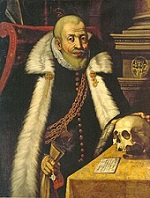
In 1586 Swiss Roman Catholic military leader Ludwig Pfyffer (1524-94), known as "the king of the Swiss" forms the League of the Seven Swiss Roman Catholic Cantons (Golden League) (Borromean League), which pledges to expel Protestant heretics, nearly destroying the Swiss Confederation and dividing the canton of Appenzell along religious lines.



On Feb. 8, 1587 after years of cat-and-mouse games trying to position herself to take over and re-Catholicize Elizabeth I's England, 45-y.-o. Mary Stuart (Stewart), Queen of Scots (b. 1542) is executed for treason at Fotheringhay Castle in Northamptonshire after 18 years of house arrest by order of her half-sister Elizabeth I; she dies in grand style, clutching a crucifix and wearing a scarlet petticoat, the Roman Catholic symbol of martyrdom; it takes 3 (15?) strokes of the axe to sever her head, on which the lips keep moving, and the bungling axeman has to finish with a knife; when her head is picked up her red wig falls off, revealing an old woman, partially bald with white hair; her dog runs from out of her cloak, and lays down between her head and body; her clothes are burned and the castle is ordered torn down to discourage pilgrimages by Catholics who consider her a martyr; Elizabeth I, who has never met her makes a show of blaming Mary's execution on errant councillors, admitting that she signed the execution warrant but claiming that she didn't authorize it to be delivered to the executioners, and that they had held a secret meeting to transmit it without authorization, fixing the blame on secy. of state William Davison (1541-1608), whom she dismisses and imprisons as the fall guy, causing his asst. William Brewster (1567-1644) to return to his home town of Scrooby, becoming postmaster and later founding the Puritan Separatists that end up founding Plymouth Colony; Elizabeth's favorite "mouton" Sir Christopher Hatton (1540-91) becomes lord chancellor of England (until 1591); James VI of Scotland stifles his urges to avenge his mother because of the large annuity he receives from Elizabeth, and also because he wants to succeed her to the English throne and has to be nice; too bad, Mary had bequeathed her claims to the English throne to Philip II of Spain, providing him with an excuse for an invasion, and the execution of a Roman Catholic martyr by the hated English bastard heretic queen whips up Catholics everywhere; too bad also, the example of a sacred cow royal being executed when their religion stands in the way of the English regime ends up backfiring bigtime with the Stuarts, and forever putting English monarchs on notice?
In Apr.-June 1587 the English under Sir Francis Drake attack the Spanish Armada at Cadiz and Lisbon, delaying it for more than a year; at Cape St. Vincent he destroys their food and water barrels, and captures a huge haul of Spanish treasure in the Azores.
On June 25, 1587 Robert Dudley, 1st earl of Leicester sails to the Netherlands with a new English army of 3K men, causing the Duke of Parma to sue for peace, which drags on until Nov. 10, when Leicester returns to England.
On July 20, 1587 the pope signs a treaty with Spain, calling for a Roman Catholic crusade for the invasion of England, and consenting to Philip II nominating whomever he pleases to rule England, as long as the Roman Catholic faith is restored; Philip choses his daughter the Infanta Isabella Clara Eugenia.
In Aug. 1587 after taking Otend, Alessandro Farnese takes Sluis in Zeeland, the planned staging point for the invasion of England, and waits a year for the Armada to come - what's going through your head?
In Aug. 1587 after taking Otend, Alessandro Farnese takes Sluis in Zeeland, the planned staging point for the invasion of England, and waits a year for the Armada to come - what's going through your head?

In Sept. 1587 the die having been cast when Mary's head fell, Philip II orders the Duke of Parma to assemble an invasion force of barges in the Netherlands to finish English Protestantism off; on Dec. 21 Charles Howard, 2nd Baron Howard of Effingham, 1st Earl of Nottingham (1536-1624) is appointed lord high adm. and cmdr. of the English fleet, which is mobilized effinghamly at jet speed; his flagship is the galleon Ark Royal, built this year in Deptford on the Thames River.

On Oct. 19, 1587 Francesco I de' Medici (b. 1541) dies, and his younger brother cardinal Ferdinando I de' Medici (1549-1609) becomes grand duke of Tuscany (until Feb. 7, 1609), going on to give up the office of cardinal to marry in 1589 and become a just and mild ruler (the opposite of his brother), even enacting an edict of tolerance for Jews and heretics that causes Livorno to become a haven for Jews expelled from Spain in 1492.
On Oct. 20, 1587 the French Huguenots led by Henry of Navarre crush the French Roman Catholics at the Battle of Coutras.
In 1587 Hungary Nov. 1 follows Oct. 21 as the Gregorian Calendar is adopted.
In 1587 after his younger brother Duke Francis of Anjou dies in 1584, and it becomes apparent that he won't produce an heir, Henry III of France fights in the War of the Three Henrys with the Holy League, headed by Henry of Lorraine, Duke of Guise (1550-88) and the Guise Family against Huguenot leader Henry of Navarre (Henry III's distant cousin), started by Philip II of Spain to keep France from interfeing with his Spanish army in the Netherlands and the planned invasion of England; it ends in 1589 when Henry of Navarre outlives the other two and becomes king Henry IV of France.
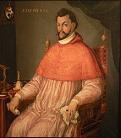
In 1587 Wolf Dietrich Raitenau (1559-1617), son of a niece of Pope Pius IV is elected prince-bishop of Salzburg (until 1612), continuing the harsh measures of the Counter-Reformation, expelling all Protestants from Salzburg next year, going on to promote Baroque architecture N of the Alps while battling his neighbor Duke Maximilian I of Bavaria until he is captured, deposed, and imprisoned for life in 1612.
On Feb. 11, 1588 Pope Sixtus V issues a bull creating 15 permanent congregations to lessen his work, incl. the Congregation of the Holy Roman and Universal Inquisition or Holy Office - he was expecting an English defeat and a glut of work for the new hires?





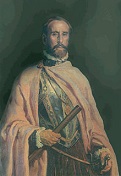

It's getting to be a habit with me? Another big V for Protestantism? The future of the English is so bright they need to wear shades? In Feb. 1588 the Marquis of Santa Cruz dies, and is replaced by Don Juan Alonso Perez de Guzman el Bueno, Duke of Medina-Sidonia (1502-58) as cmdr. of the Invincible Spanish Armada (130 galleon ships carrying 19K-27K men), whose plan is to land in Sandwich-Deal and support an invasion of England through Kent by the Duke of Parma's professional soldiers coming from Flanders (reinforced through the Spanish Road from N Italy), capturing it for the Roman Catholic faith, with exiled English Cardinal William Allen (1522-94) waiting in the wings; it sets sail from Lisbon on May 30, the very day that peace commissioners sent by both sides meet in Parma; after stopping at Corunna for supplies, it sets sail again, then is scattered by a storm from the Bay of Biscay; in early July it leaves La Coruna; on July 19 it is sighted off the The Lizard (Peninsula) by the 197-ship English navy (34 royal warships, 163 armed merchant vessels); on July 21 there is a skirmish off Eddystone, Plymouth, and another on July 23 off Portland, Dorset; on July 27 the Armada anchors off Gravelines between France and Spanish Netherlands to await for communications from Parma's army, the stench from its filthy galleys rowed by slaves chained to their benches carrying for miles on the wind; on Aug. 7-8 (July 28-29 Old Style) (Sun.-Mon.) English "hell-burners" (fire ships) are sent into the 130-ship (22 galleon and 108 armed merchant vessels) Spanish Armada (known for its powerful crescent formation) at the Battle of Gravelines, causing it to break ranks, after which it is defeated by the English guns at close quarters, losing five ships, with the rest badly damaged, and 600 KIA, 800 wounded, and 397 POWs taken; it then makes for Scotland without Parma's army, where it is broken up by a great "Protestant wind" off the coast on July 30, then forced onto the N and W Irish coasts, where 24+ ships are wrecked; the Spanish warship La Girona fires a broadside at the Chimney Tops in the Giant's Causeway on the N coast of Ireland (60 mi. NW of Belfast) after believing them to be an enemy fortress, ending up wrecked on Oct. 26, losing all but nine of 1.3K aboard; on Aug. 19 (Aug. 9 Old Style) glammed and glowing queen (since Nov. 17, 1558) Elizabeth I (1533-1603) rides down to Ft. Tilbury in Essex to cheer up the troops and see the Armada, and rides out with a 6-man bodyguard, giving her big Tilbury Speech while mounted on a grey gelding and dressed in white with a silver cuirass (metal breastplate), with the immortal soundbyte: "I have the body but of a weak and feeble woman, but I have the heart and stomach of a king"; after waiting two more days for a possible invasion by Parma's army from Dunkirk, the English troops disperse and party hearty; meanwhile the remaining 53 intact Spanish ships, having lost two-thirds of their men (15K-20K of the 11K sailors and 19K soldiers) straggle back to Spain by Oct. 14; the English lose eight ships, 50-100 killed, and 400 wounded, although 6K-8K later die of disease; Drake's co-admirals Martin Frobisher and John Hawkins are knighted for their role in the big British V; Elizabeth I hands out medals with the inscription "God breathed and they were scattered"; on Sept. 29 Spanish warship San Esteban is wrecked on the W coast of Ireland, with all survivors killed or taken POW and hanged after reaching shore; 10K English troops were equipped with firearms as an experiment, while the Spanish relied on archers, and the English success convinces military experts to give up on archery; the Armada Portrait of Elizabeth I, by an unknown artist shows her resting her hand on a globe over America; English Roman Catholic Charles Neville, 6th Earl of Westmorland (1542-1601), who commanded a 700-man army of English fugitives from Flanders flees to the Continent, and is attainted by Parliament, living on a small pension from the Spanish king until he dies broke on Nov. 16, 1601; after getting separated from the fleet in July and forced to battle some of England's most powerful ships until putting into port in Ireland, Spanish 2nd in command Adm. Don Juan Martinez de Recalde (1540-88) returns to A Coruna, dying of his wounds on Oct. 23 a few days after docking; British sea supremacy begins, along with increasing nationalism in England, helping secure Protestantism as England's state religion, and being white and not olive-skinned or some other shade of red, brown or black as the metareligion; Spain's officer class is wiped out, the Duke of Medina-Sidonia never recovers from the humiliation, the Duke of Parma's rep. remains under a cloud, but the Spanish keep hoping for a miracle from God to defeat the infidels, sending four more armadas until 1601; the Dutch are greatly helped in their battle for independence from the Spanish, going on to clear them from the territories of the Seven United Provinces by the end of the cent.


Big day for the Huguenots and anybody named Lorraine, and a blois year for French Catholics named Guise? In May 1588 Henri I de Lorraine, 3rd Duke of Guise (b. 1550) (leader of the Holy League) turns against Henry III, and on May 12 leads the Parisians in revolt on the Day of the Barricades (timed to distract Protestant Huguenots from helping the English fight the Spanish Armada), placing excommunicated Henri IV on the throne; Henry III is allowed to escape to Blois after he makes Lorraine the lt.-gen. of France, but after summoning the Estates-Gen. the pissed-off king engineers the assassination of the Duc de Guise along with his brother Cardinal de Guise on Dec. 23 at Blois; Queen Mother Catherine de' Medici is mad at her son's actions, along with the Estates-Gen. at Blois, who remonstrate strongly about the murders; too bad, Henry III leaves the House of Guise viable, and fails to kill the real troublemaker, the third brother Charles of Lorraine, Duke of Mayenne (Charles de Guise) (1554-1611), who leads a revolt against him, causing him to belatedly try to exterminate the whole house; Philippe de Mornay becomes the sole leader of the French Huguenots, becoming known as the "Huguenot Pope"; in the shuffle, all plans for revenging Mary, Queen of Scot's death are dropped?
In Sept. 1588 having seen the defeat of the Spanish Armada, Alessandro Farnese breaks his camp in Dunkirk, and finds that the pesky Dutch Protestant heretics have regrouped.



The French House of Valois lasts a year of years, less a hundred and four, because its value wa' gone? On Aug. 1, 1589 after French king (since May 30, 1574) Henry III (b. 1551) flees to the camp of Calvinist Huguenot Henry of Navarre in Saint-Cloud (St. Cloud) outside Paris for protection, he is murdered while in council by fanatical Dominican monk Jacques Clement (Clément) (b. 1567), who claims to be delivering a secret letter, then stabs him in the stomach, after which the king's attendants immediately kill him (Jesuit intrigue is alleged), and he dies on Aug. 2; three days earlier the king told his attendants that he dreamed of the royal regalia, his blue cloak, two crowns, scepter, sword, and spurs all trodden underfoot by monks and the mob; on his deathbed he names his distant cousin Henry of Navarre as his successor, and on Aug. 4 he is crowned Henri (Henry) IV (1533-1610) of France (until May 14, 1610), ending the Valois Dynasty (founded 1328) after 261 years, and founding the Bourbon Dynasty in France (ends 1830), becoming known as "Father and Friend of the People"; meanwhile on Aug. 2 the Catholic League refuses to recognize him and proclaims old fart Cardinal Charles de Bourbon (imprisoned by Henry since last Dec. 23) as French king Charles X (1523-90) (until May 9, 1590), striking coins in his name in 15 mints inc. Paris, after which parliament recognizes him on Nov. 21, causing Henri IV's enemies to split into two camps, the more patriotic and the more Catholic; Alessandro Farnese is ordered to leave the Low Countries for France to fight against Henri IV; on Sept. 15-18 Henri IV, supported by marshal Armand Louis de Gontaut, Baron de Biron (1524-92) defeats his arch-enemy, the fat Charles of Lorraine, Duke of Mayenne (1554-1611) at the Battle of Arques - now all Henri IV has to do to end 37 years of religious civil war is become a Catholic (1593) and issue the Edict of Nantes (1598)?
On Mar. 14, 1590 Henri IV of France defeats Charles of Lorraine, duke of Mayenne at the decisive Battle of Ivry, then seiges Paris in Sept., causing a famine, driving some to cannibalism until it is relieved by Mayenne and Duke Alessandro Farnese of Parma.



On Aug. 27, 1590 (since 1585) Pope Sixtus V (b. 1521) dies, ending his plan to convert the Roman Colosseum into a wool factory for ex-hos, and on Sept. 15 Rome-born cardinal (since 1583) and Inquisitor-gen. (since 1586) Giambattista Castagna is elected Pope (#228) Urban VII (1521-90), but he dies 12 days later on Sept. 27 before he can be crowned, and on Dec. 5 Niccolo Spondrati (Sfondrati) (Sfondrato) is elected Pope (#229) Gregory XIV (1535-91), plotting to depose Henri IV; relics (organs removed during embalming) of all popes from Sixtus V to Leo XIII (d. 1903) begin to be kept in Rome's St. Vincent and Anastasio Church near the Trevi Fountain.
In Aug. 1590 heedless of his little 1576-7 Tower stays, English radical Protestant MP Peter Wentworth (1524-96) pub. a tract titled A Pithie Exhortation to Her Majesty for Establishing her Successor to the Crown, suggesting James V of Scotland as the likeliest candidate, which pisses-off the queen, causing him to end up in the Tower again, this time permanently, leaving son Thomas Wentworth (1559-1628), who continues his daddy's program of opposing royal absolutism in Parliament.
In Oct. 1590 Spanish forces allied with the French land in Brittany; Drake, Hawkins, and Frobisher return to England from their unsuccessful expedition to the Spanish coast; the war between England and Spain reaches an uneasy stalemate which lasts several years.
In 1590 James VI of Scotland reendorses the Nat. Covenant; meanwhile in this decade his Lutheran-raised wife Anne of Denmark converts to Roman Catholicism, adding to the friction between James and the Scottish churchmen, who criticize them for drinking, feasting, and dancing and being lenient to the Roman Catholic nobles of Scotland, esp. after the Spanish Blanks Plot of late 1592, where cipher letters from Catholic earls of N Scotland to the king of Spain are intercepted.

In 1590 Lutheran pastor Johann Arndt (Arnd) (1555-1621) of Badeborn, Anhalt, Germany is deposed for refusing to remove religious pictures from his church and cease using exorcism during baptism, and he goes on to found the Pietism movement, which uses both the Bible and the writings of Christian mystics.
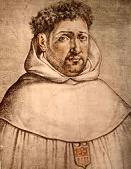
In 1590 Spanish Jesuit priest Francisco Ribera (1537-91) pub. In Sacrum Beati Ioannis Apostoli, & Evangelistiae Apocalypsin Commentarii, which uses Daniel 9:27 and its week #69 of 70 to interpret the Bible Book of Revelation as predicting a coming Antichrist who will lead the Roman Catholic Church away from the pope into apostasy, reign for 3-1/2 years (1260 days), rebuild the Temple of Jerusalem, deny Christ, claim to be God, and conquer the world; Cardinal Robert Bellarmine adds that he will be a Jew; written to oppose Martin Luther (1483-1546), who has been claiming that the papacy is the Antichrist and that it has already been 1260 years and is already happening, starting an eternal war between the two Antichrist camps - when opportunity comes knocking, the whole neighborhood starts walking?

On Mar. 1, 1591 Pope Gregory XIV writes to the Council of Paris, renewing Henri IV's excommunication, supporting Philip II of Spain and the French League, calling on the French to renounce him, and sending papal troops to France to depose him; Gregory dies on Oct. 16, his election being declared illegal, and on Oct. 29 Giovanni Antonio Facchinetti (Achinetti) is elected Pope (#230) Innocent IX (1519-91) on Oct 29, but he dies on Dec. 30.

On Sept. 25, 1591 Christian I (b. 1560) dies, and his eldest son Christian II (1583-1611) becomes elector of Saxony (until 1611); too bad, he's a boy, and this allows the many Lutheran enemies of Calvinist councillor (since 1586) Nikolaus Krell to get him thrown out of office and imprisoned, then finally tried and executed in 1601 before he attains the age of majority.





The pope who burns Bruno ain't so clement after all? On Jan. 30, 1592 Ippolito Aldobrandini is elected Pope (#231) Clement VIII (1536-1605), and the papacy settles down for a good decade of Texas BBQing as this deeply pious dude pushes the Tridentine measures for the reform of the clergy, builds up Rome's charitable institutions, and appoints (St.) Philip Neri (1515-95) (founder of the Congregation of the Oratory) as cardinal, along with church historian Caesar Baronius (Cesare Baronio) (1538-1607); too bad, on May 22 after having made the mistake of returning to Italy (which he left in 1576 as they were about to prosecute him for heresy, spending most of his time in Paris and London, then ending up at the Frankfurt Book Fair in Germany last year, where Venetian patrician Giovanni Mocenigo talked him into it in hopes of becoming prof. of math. at the U. of Padua, which job is given to Galileo Galilei instead, after which Mocenigo gets into an argument with him and turns him into the Inquisition), Italian philosopher Giordano Bruno (1548-1600) is arrested by the Vatican for his scientific beliefs in the existence of multiple worlds, his belief in the transmigration of the human soul into animals, along with his heretical denial of the Trinity, the virginity of Mary et al., and after arriving in Rome next Feb. he spends seven years imprisoned in the Tower of Nona while defending himself from inquisitor Cardinal Robert Bellarmine (1542-1621), who keeps throwing mud at him until it sticks - the first Trekkie?

On Apr. 16, 1592 Rouen, France is captured after a mini-siege by Duke Alessandro Farnese of Parma, who is wounded in the hand, which, combined with failing health causes him to put his son Ranuccio I Farnese (1569-1622) in charge of his troops, after which he returns to Flanders, gets removed as gov. of the Spanish Netherlands by a jealous Spanish court, and dies in Arras on Dec. 3, leaving his son the dukedom of Parma and Pacienza.

On Nov. 17, 1592 king (since Sept. 30, 1568) Johan III Vasa (b. 1537) dies, and Jesuit-educated Counter-Reformation Polish-Lithuanian king (1587-1632) Sigismund III Vasa (Zygmunt III Waza) (1566-1632) of Poland becomes king of Sweden (until July 24, 1559), going on to desperately try to unite the two countries under Roman Catholicism; HRE Rudolf II makes peace with Poland. - no matter how many have to die?
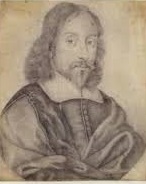
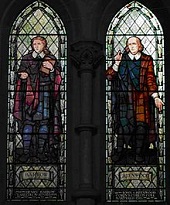
In 1592 the English Parliament passes the Religion Act of 1592, providing "for the punishment of persons obstinately refusing to come to [an Anglican] church", giving them 3 mo. to comply or be exiled from England forever; it is targeted at the Congregationalist Church (originally known as Separatists, Independents, or Brownists), founded after a "Theory of Union" pub. in 1582 by Robert Browne (1550-1633), and led by Henry Barrow (Barrowe) (1550-93) and Separatist leader John Greenwood (-1593), who are later hanged at Tyburn after Browne chickens out and becomes an Anglican priest to save his hide; the basic principle is that each congregation is indendent and autonomous, and in particular isn't headed by a *!?*! monarch; the 1620 Mayflower passengers are Brownists, causing the Pilgrims to be originally known as the Brownist Emigrants; in 1661 John Bunyan is convicted of violating it.

In 1592 Spanish Jesuit priest-historian Juan de Mariana (1536-1624) pub. Historiae de Rebus Hispaniae (20 vols) (Toledo); the history of the Iberian Peninsula since 1243, becoming a std. work; 10 more vols. pub. in 1605; it incl. De Rege et Regis Institutione (3 vols.) (1598), written at the request of Philip II and dedicated to his son Philip III, concluding that it is lawful for an individual or group to overthrow and kill a monarch who is a tyrant, the definition incl. violating the laws of religion, imposing taxes without consent, or preventing a dem. parliament from meeting, which makes it easier to point the finger at all Jesuits after the 1610 assassination of Henri IV of France?; some of his vols. get him imprisoned by the Inquisition, during which time they find another of his writings criticising the Jesuits themselves, later used by Charles III to ban them all from Spain.

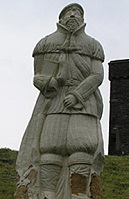
On Feb. 6, 1593 French Jesuit (St.) James Sales (b. 1556) is shot in the back in the city of Aubenas in the Cevennes region of France by Calvinists after an inquisition the previous day, where he refuses to denounce the real presence in the Eucharist and allegedly beats them in a theology debate; on Feb. 6 lay brother (St.) William Saultemouche (b. 1555) volunteers to die with him, and is stabbed to death; the Protestants are back atcha, when on May 29 Welsh Puritan John Penry (b. 1559) of Breconshire, who pissed-off the Anglican bishops by preaching against their lack of education and their living off church lands they don't live on is hanged in St. Thomas-a-Watering for sedition for writing a rough draft of an unpub. petition to Elizabeth I, becoming a Puritan martyr (Wales' most famous), leaving The Notebook of John Penry.
On July 18, 1593 Sir Francis Stewart, 5th Earl of Bothwell (1562-1612) (nephew of the earl who caused trouble for Mary, Queen of Scots) is smuggled into the bedroom of James VI at Holyrood by a conspiracy of popish nobles in an attempt to reconcile with him after challenging his authority; too bad, paranoid James believes he intended to assassinate him, and on Aug. 10 Bothwell is tried for witchcraft and acquitted after 24 days in prison; on Oct. 29 the Trial of the Popish Nobles begins in Scotland, and they are banished and forfeited, although they later return to Scotland with James looking the other way; the main Roman Catholic earls are Crawford, Errol, Huntly, and Maxwell, who control large areas in the Highlands and west; meanwhile Elizabeth I promulgates an Act Against Papists (Popish Recusants), outlawing Puritan assemblies and activities in England.

On July 25, 1593 after hearing a Mass at St. Denis, French king (since 1589) Henri IV (1533-1610) (who temporarily abjured Calvinism in 1572 to save himself after the St. Bartholomew's Day Massacre) announces his reconversion from Calvinism to Catholicism as part of an attempt to secure his crown, allegedly announcing "Paris is well worth a Mass" after ignoring the urgent exhortations of Protestant leader Theodore Beza; Elizabeth I is horrified, writing to him: "Ah, what griefs, what regret, what groanings I feel in my soul at the sound of such news"; when he reissues his edicts of religious tolerance she continues to support him against Spain; meanwhile Jean de Beaumanoir, Marquis de Lavardin (1551-1614), who switched from Protestant to Catholic way back in 1572 after the St. Bartholomew's Day Massacre of 1572 (in which his daddy was killed), then fought against Henri III, switches sides again, and is made a marshal of France and gov. of Maine.
In 1593 the Uppsala Synod forces Sigismund IIII Vasa to recognize that Sweden is a Protestant state.

Basically I find your screensaver offensive? On Jan. 1, 1594 Elizabeth's chief physician Roderigo (Ruy) (Roger) Lopez (Lopes) (b. 1517) (a Portuguese Jew who fled to England in 1559 to escape the Inquisition and converted to Christianity under the name Christian but can't fix his hook nose?) (inspiration for Shylock in Shakespeare's "The Merchant of Venice"?) is arrested for treason, railroaded to conviction by Essex and executed (hanged, drawn and quartered) on June 7 at Tyburn along with alleged accomplices Esteban Ferreira et al. after being accused of a plot to poison Portuguese pretender Don Antonio (living in London) and/or the queen; he protests his innocence to the end, with the soundbyte that "He loved the queen as he loved Jesus Christ", giving the crowd a big laugh because to them he's forever a Jew; he was probably innocent, and Essex just wanted to score one on a Christ-killer to please da queen, although it backfires when she keeps a ring that Philip II had given Lopez in 1587 which he had offered her but she had refused, wearing it until she dies?
On Jan. 13, 1594 Elizabeth rebukes James VI for his leniency towards the popish nobles; on Apr. 24 popish noble Alexander Home, 6th Lord Home (Hume) (-1691) subscribes to the Confession of Faith to escape punishment and become a good homeboy, and after his buddy James I becomes king he is created duke, duke duke, duke of earl in 1605.
On Feb. 27, 1594 after buying off the opposition and triumphantly entering Paris, the French House of Bourbon (branch of the House of Capet) (founded in 1268) is established with the coronation of Henri IV in Chartres, who goes on to become the most popular king in French history (until May 14 1610), while the Bourbons go on to hold thrones in Spain, Naples, Sicily, and Parma - love, love me do?
On Apr. 2, 1594 the British privy council issues a proclamation for a muster at Stirling to pursue Bad Ole' Bothwell, and on Apr. 3 he is attacked at Nidday and escapes to England, causing James VI to rebuke Elizabeth I for harboring him.
In July 1594 Elizabeth I gives her favorite Essex Ł4K to defray his debts, then dismisses as a Roman Catholic plot an inflammatory book from Antwerp by Jesuit Robert Parsons titled A Conference about the Next Succession to the Crown of England, which claims he should play the part of kingmaker on her death?
On Dec. 27, 1594 Henri IV of France is knifed at the Hotel de Schomberg while visiting his mistress Gabrielle d'Estrees by 21-y.-o. Jesuit-educated Jean Chatel (1575-94), who tries to slit his throat but botches it; he is put under pressure to implicate the Jesuits, but doesn't, and is executed by dismemberment on Dec. 29 in the Place de Greve after his offending hand is burned with molten sulfur, lead, and wax.
In 1594 Henry IV relieves the town of Le Crotoy in NW France from taxes for supporting him in the wars of religion.

On Feb. 21, 1595 after being imprisoned in 1592 and interrogated by grand inquisitor Richard Topcliffe (1531-1604) until he is convicted of high treason, English Jesuit priest-poet (St.) Robert Southwell (b. 1561) is hanged in Tyburn, his body quartered and displayed on London's four city gates; in 1970 Pope Paul VI canonizes him as one of the Forty Martyrs of England and Wales.

On June 5, 1595 the Battle of Fontaine-Francaise is a strategic V for 3K French Protestant peasants under Henry IV over the 12K-man Spanish Catholic League under Don Juan Fernandez de Velasco, gov. of Milan and constable of Castile; Henry IV's life is saved by his sister Catherine de Bourbon's former chef Guillaume Fouquet de la Varenne (1560-1616), who is promoted to war commissioner followed by comptroller-gen. of posts, replacing Guise family member Hugues Du Mas, going on to reorganize the royal postal network and opening it to the public in 1598, with Catherine de Bourbon uttering the soundbyte: "It seems, la Varenne, that you have earned more by carrying my brother's chickens than by skewering mine."
In Sept. 1595 Pope Clement VIII absolves Henri IV and recognizes him as king of France, thereby making it possible to end the Thirty Years' War in France.
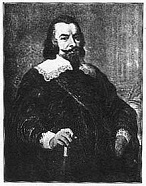
In 1595 after govt. efforts to push the Counter-Reformation, a peasant revolt begins in Upper Austria.

In 1595 Polish king Sigismund (Zygmunt) III Vasa is forced by the Swedish Diet to accept Protestant Duke Charles of Sodermanland (future Charles IX), youngest son of Gustav I Vasa as regent; too bad, Charles tries to force Baron Klaus (Clas) Eriksson Fleming (1535-97), gov. of Finland to submit to his authority instead of the king's, causing a civil war (ends 1597), with Protestant and Catholic nobles fighting the peasants.

In 1596 James VI of Scotland endorses the Nat. Covenant again; too bad, he sticks with the divine right of kings theory, arguing with leading Presbyterian churchman Andrew Melville (1545-1622), who calls him "God's sillie vassal" to his face, meaning that God is head of the Scottish kirk ahead of all people incl. him.

On Oct. 15, 1597 Bavarian Wittelsbach duke-elector (since Oct. 24, 1579) William V the Pious (1548-1626) abdicates in favor of his son Maximilian I (the Great) (1573-1651), who becomes duke of Bavaria (until Feb. 25, 1623), followed by elector Palatine (until Oct. 24, 1648) and elector of Bavaria (until Sept. 27, 1650), then retires to a monastery, leaving his son to become great trying to handle the 30 Years' War (1618-48) and prevent Germany from becoming the battleground of Europe?

In 1597 Hugh O'Neill, 2nd Earl of Tyrone (1550-1616) leads the Irish chieftains in an unsuccessful attack against the English, but the Second Spanish Armada, trying to support the Gaelic Confederation in Ireland is prevented from landing by bad weather; the Earl of Essex sends Capt. Lea as his messenger to present the severed head of an Irish rebel to Elizabeth I, which disgusts her.
In 1597 Upper Austria is re-Catholicized by force - drop that Bible and kiss this crucifix?
On Apr. 13, 1598 Henri IV of France endorses the Edict of Nantes, granting Protestant Huguenots the right to have their own fortified towns and to pray in selected locations, ending the Huguenot-Catholic civil wars in France (begun 1562); too bad, the French parliament resents it and doesn't recognize it until 1600, and after they get in the way of the absolutists Louis XIII and Louis XIV it is revoked in 1685, and Huguenot ass is grass in France?
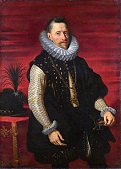
On May 2, 1598 the Treaty (Peace) of Vervins (Aisne) ends the 8th and last French War of Religion with Spain (begun 1592), with withdrawal of Spanish troops from France; Philip II resigns his claim to the French crown before croaking on Sept. 13 in Madrid, and France is united under Henri IV; on May 6 Roman Catholic archbishop Albert VII of Austria (1559-1621) (son of HRE Maximilian II) becomes Hapsburg gov. of the Netherlands (until July 13, 1621).


On Sept. 13, 1598 to the great relief of the English and the Huguenots, after 50 days of intense pain Spanish king (since 1556) Philip II (b. 1527) dies, covered with stinking, putrefying sores and with a lead coffin placed by his orders at his bedside, and his 20-y.-o. son Philip III (1578-1621) becomes king of Spain, plus (as Philip II) king of Portugal, Naples, Sicily, and the Netherlands (until Mar. 31, 1621); a weak pious whimp, he entrusts the conduct of public affairs to Francisco Gomez de Sandoval y Rojas, 1st Duke of Lerma (1553-1625) while he has fun with religious observances and court festivities and stays away from realities; meanwhile his ministers try to get Spain out of the European wars while it licks its stinking, putrefying wounds; the glory of Spain is never again what it once was, but the Spanish do a good job of hiding it for some time because it's only been a cent. since Columbus?


In 1598 French "Huguenot pope" Philippe de Mornay, Seigneur du Plessis Marly (1549-1623) gets in a dogma dispute with Jacques Davy Duperron (1556-1618), Roman Catholic bishop of Evreux (since 1591) (who was raised a Calvinist then converted to Roman Catholicism after studying St. Augustine and St. Thomas Aquinas), culminating in a big public debate in 1600 in Fontainebleau, which he wins, getting created cardinal on June 9, 1604 by Pope Clement VII and becoming their poster boy.
In 1599 Sigismund III lands in Sweden to try to drum-up support for his Roman Catholic reign; too bad, the Swedes don't buy it, and next year the Riksdag formally deposes him.
In 1599 the Confederation of Vilna is formed in Poland-Lithuania as an alliance between the Eastern Orthodox and Protestants against the pesky Roman Catholic Church, esp. the Jesuits.
1600 In 1600 world pop: 500M (doubles in the next two cents.); Am. colonies: 50K; Delhi: 500K; Lahore: 500K; Agra: 500K; Rome: 100K; France: 16M; Germany: 14.5M; Poland: 11M; Spain: 8M; Hapsburg dominions: 5.5M; England-Ireland: 2.5M; Holland: 3M; Lisbon: 100K, Madrid: 60K, Goa: 60K; the English Era of Expansion begins (ends 2050?) as surplus agriculture begins in England, causing it to climb out of famine and launch frontier settlement throughout the world. In 1600 Scotland adopts the Gregorian Calendar, and changes the date of the start of the year from Mar. 25 to Jan. 1; England stays with the Julian Calendar until 1752, causing a difference of 10 days until 1700, and 11 days thereafter. In 1600 the Age of Reason (Rationalism) in W Europe begins with Rene Descartes, transitioning into the Age of Enlightenment in the 1650s.
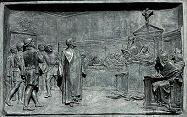


There's nothing wrong with this? In the year 1600, Star Trek doesn't go over well in Rome? On Feb. 17, 1600 after Cardinal Robert Bellarmine (1542-1621) demands a full recantation of his philosophy, and he appeals to Pope Clement VIII hoping only for a partial recantation, and the pope responds by telling them to burn the bum, Italian philosopher Giordano Roddenberry, er, Giordano Bruno (b. 1548) tells them: "Perhaps you, my judges, pronounce this sentence against me with greater fear than I receive it", then is led naked to the Campo de' Fiori in Rome, "his tongue imprisoned because of his wicked words", and burned at the stake for his heretical opinions, esp. the infinity of inhabited worlds; "He insisted till the end always in his damned refractoriness and twisted brain and his mind with a thousand errors. Yes, he didn't give up his stubbornness, not even when the court ushers took him away to the Campo de' Fiori. There his clothes were taken off, he was bound to a stake and burned alive. In all this time he was accompanied by our fraternity, who sang constant litanies, while the comforters tried till the last moment to break his stubborn resistance, till he gave up his miserable and pitiable life" (Fraternity of St. John the Beheaded, 1889); his works are placed on the Vatican's Prohibited Index in 1603, and he becomes a martyr to Trekkies, er, scientists, who claim he was burned just for his Copernican views, causing the Church to claim it was only because of his heretical religious beliefs, incl. that Jesus Christ was merely a magician, the Holy Ghost is the soul of the world, and the Devil can be saved, although the Church gives it away at the time by using the same rooms where he is questioned to persecute Galileo Galilei; in 1889 a monument to him backed by Victor Hugo, Herbert Spencer, Ernest Renan, Ernst Haeckel, Henrik Ibsen et al. is erected on the site of his execution, and another is erected in Berlin on Mar. 2, 2008; in 2000 Pope John Paul II expresses "profound sorrow" for what his church did - Burn Bruno Burn is how many years from Live Long and Prosper?
On May 4, 1600 after Roman Catholic bishop Jacques Davy du Perron accuses French "Huguenot pope" Philippe de Mornay of 500 misquotes in his 1598 tome De l'Institution, Usage et Doctrine du Saint Sacrement de L'Eucharistie en l'Eglise Ancienne (out of 5K total), they hold the Conference of Fontainebleau, and a panel awards the V to du Perron on nine points, after which Mornay bugs out due to illness, after which du Perron becomes a Roman Catholic star and is created cardinal in 1604.


On July 2, 1600 the English and French under Maurice of Nassau (1567-1625) combine to defeat the Spanish Habsburgs under Netherlands gov. (since May 6, 1598) archduke Albert VII (1559-1621) at the Battle of Nieuwpoort (Nieuport), securing the independence of the Netherlands; peace is declared in Nov.
On Jan. 17, 1601 the Peace of Lyon between France and Savoy recognizes Savoyard control of Saluzzo in exchange for Bresse and other territories beyond the Alps, with Savoy permitted to please the Spanish by persecuting Protestants.

In Feb. 1601 Henri IV's most trusted counselor Maximilien de Bethune, 1st Duke of Sully (1560-1641), who had been with his master since the 1572 St. Bartholomew Massacre becomes French master of artillery (created duke of Sully in Mar. 1606).
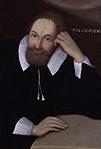
In 1602 while traveling abroad to prepare for a diplomatic career, Sir Henry Wotton (1568-1639) discovers a plot to murder James VI of Scotland while living in Florence, and he sails back to Scotland via Norway under the alias Ottavio Baldi to warn him, receiving a warm welcome at court and receiving a knighthood when James VI becomes king James I of England; in 1604 he begins a career as a diplomat (ends 1621), spending most of his time in Venice; in Augsburg, Germany in 1604 he utters the soundbyte: "An ambassador is an honest gentleman sent to lie abroad for the good of his country" (Legatus est vir bonus peregre missus ad mentiendum rei publicae causa); too bad, in 1611 his enemy Caspar Schoppe (1576-1649), a virulent anti-Protestant pub. "Ecclesiasticus Auctoritati Jacobi Regis Oppositus", which twists the meaning of "lie abroad" to cast aspersions on James I's morals, but he patches things up and his career goes on.

Say hello to G6, one of the fastest growing brands in America? In 1602 12-y.-o. William Bradford (1590-1657) of Austerfield, Nottinghamshire, England (50 mi. S of York), who had lost his family and was living with two uncles, and suffering with a "long sickness" which kept him from farm work and turned him into a Bible-thumper, causing him to become dissatisfied with the Anglican Church starts attending services in Scrooby a few mi. to the S in N Nottinghamshire (on the Ryton River) at the home of postmaster William Brewster (1566-1644), with sermons given by young minister John Robinson (1576-1625); they call themselves Separatists, based on the Bible text "Come out among them and be separate".

In 1602 Savoy-born Jesuit (St.) Francis de Sales (1567-1622), the champion of the Counter-Reformation, known for his numerous "Controversies" or leaflets claiming to prove the truth of the Roman Catholic faith becomes bishop of Geneva, becoming the leading Catholic supermodel for the next 20 years.
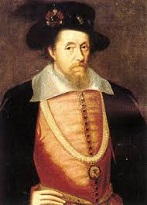

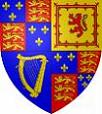




On Mar. 24, 1603 (Thur.) (before 3 a.m.) English queen (since 1558) "Gloriana", "the Virgin Queen" Elizabeth I (b. 1533), stricken with grief over the execution of Essex and/or her close friend the countess of Nottingham dies peacefully in bed at Richmond after a bunch of woo woo woo stuff and giving her soul to Jesus, lying on her back with her face to the wall "mildly like a lamb, easily, like a ripe apple from a tree, as the most resplendent sun setteth at last in a western cloud" (her chaplain Dr. Parry); she dies after viewing William Shakespeare's Hamlet, which debuted earlier in the year; at her death there is not a single known English colonist in the New World (except possibly the lost colonists of Roanoke, who went injun); she leaves after 45 years on the throne (118 total for the Tudors), causing Scottish king (since 1567) James VI, only son of Elizabeth I's murdered rival Mary Stuart, Queen of Scots to be proclaimed king; after Sir Robert Carey, 1st Earl of Monmouth (1560-1639) (the man who broke the Border Reivers) makes a record-breaking ride N, he reaches Holyrood on the evening of Mar. 26 to carry the news to him, and after hastily preparing a magnificent progress (sparing no expense), and attending a service in the Church of St. Giles where he tells the sad crowd that he isn't abandoning them but will return every three years (actually he only returns for a short time in 1617), on Apr. 5 James VI leaves Holyrood with cannons blazing accompanied by a merrymaking procession, heads to Lord Hume's house in Dunglass, crosses the border to Berwick, putting on a great show as he is greated by crowds in every village and hamlet along the way, then arriving in London on May 7 to a great warm reception a few days after a plague arrives, being presented with the Millenary Petition signed by 1K Puritan ministers asking for the reform of abuses and elimination of all Roman Catholic ceremony from the Anglican Church, incl. the signing of the cross during baptism, confirmation, administration of baptism by lay persons, bowing at the name of Jesus, use of the surplice and cap, use of the pagan ring (Saturn?) in marriage, and the practice of giving men multiple paid ecclesiastical positions; on July 25 he is crowned James I (1566-1625) of (at his insistence) "Greater Britain" (until Mar. 27, 1625) (the 44th British monarch), causing the Union of the Crowns, ending the Tudor Dynasty, and beginning the Stuart Dynasty (ends 1714); Scotland has now had 63 kings and one queen (Mary Stuart, Queen of Scots) in an unbroken line, all being titled king or queen of Scots, not Scotland; Liz leaves him a Ł400K debt, having sold off many of her lands to avoid increasing taxes; a lifelong believer in the Divine Right of Kings who wants to be known as "Rex Pacificus" (peacemaker king), he seeks to end the Roman Catholic-Protestant feud along with all wars with Spain and France, and effect a "stealth union" of England and Scotland, saying that the lack of a visible natural border proves that God intended it, then fills his inner circle with Scots while granting an amnesty in Ireland, going on to rule Scotland with "government by pen", sending written orders to his privy councillors in Edinburgh (setting up the first mail service between London and Edinburgh) while making his Scottish nobles visit him by traveling the Great North Road (after too many visits piss-off the English, he limits the visits by issuing passports); in 1606 the Union Jack (Lat. "Jack" = James) (originally just called the British flag) is designed, consisting of a red English cross on a blue-white Scottish background, bringing the British lion and the Scottish unicorn together (which is considered a bad omen as the two beasts are supposed to be mortal enemies, and the unicorn is untameable except by a virgin, and he's no Virgin Queen); Scots believe that he's just turning Scotland into a 2nd class appendage of England, something they fought for cents. to avoid, and begin grumbling about being run from distant London, while James I surrounds himself with Scots on the make, causing upper class English on the make to grumble; the Jacobean Age (Era) begins (ends 1625); James I orders Fotheringhay Castle (where his mommy was beheaded) demolished, and in 1612 moves her remains from Peterborough Castle to Westminster Abbey, where she is reinterred in a far more splendid tomb than her cousin Elizabeth I, with the two queens, who never laid eyes on each other, so situated that they cannot see each other even in death; James' Lutheran-raised wife Anne of Denmark (1574-1619), who converted to Roman Catholicism in the 1590s causes embarrassment at the coronation by refusing Anglican communion; after being temporarily parted for the Union of the Crowns he tells her, "I ever preferred you to all my bairns [rugrats]"; now that he's king of a real country, he begins elevating local Scottish lairds to the peerage to control the pesky nobles he doesn't trust, devaluing all Scottish titles; thinking the Gaelic segment of his pop. to be backward savages, in 1609 he gets the Statutes of Iona passed, forcing the Highland chiefs to send their heirs to Lowland Scotland to get an English Protestant education, and puts out a hit on the MacGregor clan, ordering them outlawed by "fire and sword", hunted and executed like animals (luckily, some survive after being harbored by Highland sympathizers); having decided to call the amalgamated kingdom Greater Britain, he renames the Scottish borders "Middle Shires" and pacifies them by exiling captured rebels to Ireland, pissing-off the Irish; he never pacifies the Highlands, which remain pesky for the next two cents.; he attempts to anglicize the Scottish elite, causing poet William Drummond to switch from writing in Scots to English, the ascendancy of English dramatists being a powerful convincer?; shortly before his coronation Lord Henry Howard and Robert Cecil, 1st Earl of Salisbury warn the king about the Diabolical Triplicity of Henry Percy, 9th Earl of Northumberland (1564-1632) (an apparent Protestant, despite the Percy family's Roman Catholic roots, known as Wizard Percy for his great wealth and scientific learning), Sir Walter Raleigh (1554-1618), and Henry Brooke, 11th Baron Cobham (1564-1618), suggesting that they dabble in the occult and that Percy plans to marry pesky Arbella Stuart, which doesn't stop Percy from being appointed to the Privy Council, until the 1605 Gunpowder Plot causes him to be accused of complicity with his Roman Catholic relative Thomas Percy and imprisoned in the Tower of London for 17 years.
On Mar. 31, 1603 after offering to end his rebellion if Elizabeth I will spare his life and return his earldom, Hugh O'Neill signs the Treaty (Articles) of Mellifont with the stankin' English at the Cistercian Mellifont Abbeyin, surrendering his tribal authority; the Tyrone Revolt (Nine Years' War) in Ireland (begun Aug. 1594) ends, along with the old Gaelic Law and Order, insuring English occupation for the next 320 years; the Census of the Fews, the earliest Irish census is pub. after the Fews clan is pardoned; the Anglican Church attempts to extend its sway over all of Ireland, fighting the ancient Celtic church, which clings to the Roman Catholic Church, and which is backed by the Celtic pop. of the island and the majority of the pop. of the Pale, resulting in the Anglican Church being used by the English rulers in Dublin Castle as their political tool.
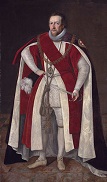

On July 19, 1603 after the Main Plot (dethronement of James I and replacement by cousin Arbella Stuart) is uncovered, naughty Henry Brooke, 11th Baron Cobham (1564-1618) and Sir Walter Raleigh (1552-1618) are arrested on charges of treason against James I and canned in the Tower, tried under commissioner Henry Howard, 1st earl of Northampton, found guilty and sentenced to death, then reprieved 24 hours before the scheduled execution, spending the next 13 years there (until 1616) (1618 for Cobham), where Raleigh proceeds to research in alchemy and write The History of the World (1614) - that kind of drudgery is for those with no life such as prisoners or failed fiction writers?

In Jan. 1604 after deciding to order all Roman Catholic clergy to leave England for the Bye Bye Birdie Plot of 1603, James I declares Separatists (Independents) (Puritans) (some of whom want to leave England and create their own Bible-thumping state) to be troublemakers, with the soundbyte "I shall harry them out of the land"; too bad, he knows what they'll do if they leave, so he doesn't give them any help in leaving, refusing official permission for them to emigrate (Nunc Dimittis); changes are recommended in the English Book of Common Prayer, which James I approves in a proclamation on Feb. 9; meanwhile on Feb. 29 John Whitgift (b. 1530) dies, and in Nov. Richard Bancroft (1544-1610), arch-persecutor of Puritans and other dissenters (whom he treats as heretics and/or traitors) becomes archbishop of Canterbury (until Nov. 2, 1610).

On Mar. 6, 1604 Sigismund III Vasa is officially deposed (de facto in 1599), and Gustav I's son Charles (Karl) IX (1550-1611) officially becomes king of Sweden (until Oct. 30, 1611), although he has been in control since 1599, officially making it Protestant; he is crowned on Mar. 15, 1607; his royal motto is "In Jehovah I Trust".
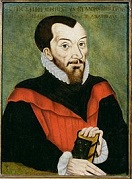

On Mar. 19, 1604 (starts at 9:00 a.m., but kingy doesn't show up until 11:00 a.m.) the Hampton Court Conference (First Parliament) of James I convenes (ends Mar. 22), attended by 12 Anglican and four Puritan prelates takes up the Puritan complaints, only to see James I stick with the establishment of the Anglican Church; Puritan Corpus Christi College pres. (the "Most Educated Man in England") John Rainolds (Reynolds) (1549-1607) personally asks the king to commission a new Bible trans., and despite opposing it for personal enmity's sake, new Canterbury archbishop Richard Bancroft becomes the chief boogie-woogie bugle boy overseer of the King James Bible trans. project, which is launched in a few mo.; esoteric philosopher-physician Robert Fludd (1574-1637), who had been called to Marseilles in 1602 as personal tutor to the sons of Henry of Lorraine incl. Duke Charles of Guise is one of the translators; James I restores Elizabeth I's Recussancy Acts, with more persecution of English Roman Catholics, incl. expulsion of Spanish Armada-loving Jesuits and seminary priests; the Witchcraft Act of 1604 gives 'em 'ell, making witchcraft a felony to remove defendants from the jurisdication of the ecclesiastical courts, with burning at the stake replaced in most cases by hanging; James I issues a writ for the ecclesiastical convocation, which adopts new canons that are so anti-Puritan that 300 clergymen leave their livings rather than conform; James I (known for his thick Scottish brogue) proposes a union between and England and Scotland, which is shrugged off, and on Aug. 28 (Aug. 18 Old Style) signs the Treaty of London (Somerset House Treaty) with Roman Catholic Spain, causing Henri IV of France to utter the soundbyte that he's "the wisest fool in Christendom"; meanwhile Henri IV sends the Duke of Sully to England to compliment James I on his new crown, but when he raises the flag of France in his boat in the Channel, British adm. Robert Mansell shoots it down, pissing-off the duke and causing him to raise a stink in James I's court, which gets nowhere as the English pop. think the act was cool since it shows who owns the four seas.


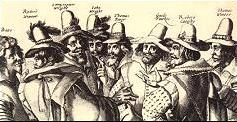
Too many cooks spoils the broth? In May 1604 after English Roman Catholics turn against James I and his Scottish retainers in London for false promises of tolerance, soldier of fortune (who participated in the 1596 capture of Calais by the Spanish) Guy Fawkes (1570-1606) meets with Robert Catesby (1573-1605) (the orginator) and Thomas Percy (1558-1605) (ancestor of Barbara Bush nee Percy?) at the Duck and Drake Inn in the fashionable Strand district of London to hatch a most e xplosive Roman Catholic plot to blow up Parliament during James I's state opening of it on Nov. 5, 1605 using 2.5 tons of gunpowder and a cool white mask, then assassinate James I and put his daughter Elizabeth Stuart (1596-1662) (later Queen Elizbeth of Bohemia) on the English and Scottish thrones as a Roman Catholic monarch after kidnapping her from Coombe Abbey in Warwickshire; other conspirators incl. Catesby's cousin Robert Wintour (1565-1606) and his brother Thomas Wintour (1572-1606), Thomas Bates (1570-1606), John Wright (1568-1605) and his brother Christopher Wright (1570-1605), Robert Keyes (1565-1606), Francis Tresham (1567-1605), John Grant (1570-1606) (lord of the manor of Norbrook near Stratford-upon-Avon), Ambrose Rokewood (1578-1606); meanwhile (as a cover story?), Pope Clement VIII officially requests that English Catholics refrain from rebellion.
On Sept. 27, 1605 (Sept. 10 Old Style) the Battle of Kircholm is a decisive V for Polish-Lithuanian forces under Lithuanian hetman Jan Karol Chodkiewicz over Swedish forces under Charles IX, lasting only 20 min. after a charge by the Polish Winged Hussars, with 7.6-8K Swedish KIA vs. only 100 Lithuanians KIA and 200 wounded.
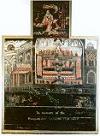
On Oct. 26, 1605 Gunpowder Plotter Francis Tresham blows the whistle on it after worrying about his brother-in-law (husband of his sister Elizabeth) William Parker, Lord Mounteagle (Monteagle) (1575-1622) being killed; on Nov. 4 (Tues. Old Style) (Fri. New Style) at 11 p.m. after James I is tipped-off about a plot to blow up Parliament and destroy the nobility and royal family in a 9/11 on 11/5/5, masked soldier of fortune Guy Fawkes is arrested as he leaves a rented cellar beneath the House of Lords filled with 36 barrels of gunpowder (which he is supposed to ignite the next day then flee to Flanders), and they find fuses on his person and a lighted lantern below, blowing the Gunpowder Plot sky high; after James I issues the soundbyte "The gentler tortures are to be first used... and so proceed by steps to the worst", he begins singing, and on Nov. 12 Tresham is arrested, and fully confesses, but dies in the Tower of London on Dec. 22, the official cause of death is blockage of the urinary tract (poisoned?); in Nov. Elizabeth Stuart is moved from Warwickshire to Coventry after it is discovered that the conspirators want to seize her person and proclaim her queen; after Fawkes is severely tortured, he gives up the names of his accomplices; on Nov. 8 Robert Catesby and his men are surrounded in Holbeche House in Staffordshire, and Catesby is killed, along with Thomas Percy, John Wright, and Christopher Wright; the rest of the conspirators are executed next year; guess-who (Henry Howard) is commissioner at the trials; Nov. 5 becomes Guy Fawkes Day in England, where he is burned in effigy amid bonfires and fireworks (starting in 1660); the whole incident forever sours the English public against Roman Catholics, whom they suspect of being a fifth column for the pope.
In Dec. 1605 people in Strasbourg, France are the first to bring a Christmas Tree indoors and adorn it (with sweets).
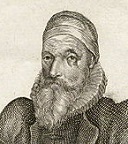
In 1605 Puritan divine "Roaring" John Rogers (1572-1636) becomes a lecturer in Dedham, Essex, turning on the crowds with his roaring speeches, exhorting them to read their Bibles more; he would "do more good with his wild notes than we with our set music" (Cotton Mather).
In 1606 Mannheim in W Germany at the confluence of the Rhine and Neckar Rivers (10 mi. W of Heidelberg) is turned from a village (first mentioned in 764) to a major town by Frederick IV, elector palatine of the Rhine, becoming a mecca for Protestant refugees from Holland.
In 1606 16-y.-o. William Bradford (1590-1657) of Yorkshire joins the Brownists, and goes with them to Holland in 1609 in search of freedom of worship, geting apprenticed to a silk manufacturer.
In Dec. 1607 after the Lutheran majority barred the Roman Catholic pop. from holding their annual Markus procession last year, Duke Maximilian I of Bavaria finally steps into the Thirty Years' War and occupies the Protestant stronghold of Donauworth (Donauwörth) in Swabia at the confluence of the Danube and Worniz Rivers, then reestablishes Roman Catholicism, causing the Protestant princes to rush to hold a Reichstag.
In winter 1607/8 after the English High Court of Ecclesiastical Commission clamps down on religious dissenters, the Scrooby congregation meeting in Scrooby Manor, led by Congregational Church co-founder John Robinson (1576-1625), and the Gainsborough congregation in Lincolnshire meeting in Old Hall, incl. Thomas Helwys (1575-1616) and John Smyth (1570-1612) flee to Amsterdam to avoid being burned at the stake for heresy; in 1609 Helwys and Smyth begin to believe in adult baptism, founding the Baptist church.
On May 25, 1608 Pope Paul V approves Duke Vincenzo I Gonzaga of Mantua's Military Order of Our Redeemer and the Most Precious Blood of Jesus Christ (AKA Blood of Our Savior) of 20 knights on the occasion of the marriage of his son to a daughter of the duke of Savoy; allegedly some drops of Christ's blood are preserved in St. Andrew's Church in Mantua - it runs in gaggles?
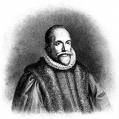
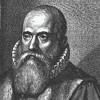

In 1608 Dutch anti-predestinarian free-will theologian Jacobus Arminius (Jakob Hermanszoon) (1560-1609) of the U. of Leiden debates with his colleague, Dutch Calvinist theologian Franciscus Gomarus (1563-1641) before the assembly of the estates of Holland, holding that grace is universal and not confined to the elect, and that election is conditioned upon faith and good works, and that therefore Calvin's doctrines of particular election and limited atonement suck; after stirring up a hornet's nest, he dies before he can be put on trial before the Synod of Dort, which goes on to expel the Arminians (they refuse to be called that, calling themselves the Reformed Church) from the Dutch Calvinist Church; his pupil Simon Episcopius (Bisschop) (1583-1643) goes on to win complete religious toleration, and by the the end of the cent. their views are assimilated by the other Protestant churches, incl. the Anglicans and Methodists, and their members get assimilated except for a few holdouts in Amsterdam and Rotterdam - who had the greater will, er, was predestined to win?

On Apr. 9, 1609 Spain signs the Twelve Years' Truce (ends 1620) with the Protestant United Provinces of the Netherlands in Amsterdam, which have been fighting to throw off their Roman Catholic yoke, and Philip III grudgingly acknowledges their independence, allowing him and his minister the duke of Lerma to concentrate on internal problems, while Hapsburg archdukes Albert and Isabella use the truce to consolidate their rule and push the Counter-Reformation - want some loose Jews? On Apr. 9 having to save face over the pesky Protestants, Spanish king (1598-1621) Philip III (1578-1621) takes care of some unfinished business and orders the expulsion of the Moriscos (Jews and Muslims of Moorish ancestry who faked Christian conversion since the days of Cardinal Francisco Jimenez in 1492-1501); by 1614 over 275K are expelled; the Roman Catholic Spanish go on to erase all traces of Muslim occupation of Spain, and burn 1M Arabic books - what was that ruckus in 711?
On July 10, 1609 the German Catholic League, modeled on the 1576 French Catholic League is founded in Munich by Maximilian I of Bavaria "for the defense of the Catholic religion and peace within the Empire", i.e., to oppose the new German Protestant Union; members incl. Augsburg, Constance, Passau, Ratisbon, and Wurzburg; Salzburg and Ecichstadt pass; on Aug. 30 Mainz, Cologne, and Trier join, providing that the elector of Mainz becomes co-pres.

In 1610 The Five Articles of the Remonstrants, written by Jacobus Arminius (Jakob Hermanszoon) (1560-1609), a statement of Arminianist free will beliefs against Calvinist predestination is presented to the states of Holland Friesland; major Remonstrants incl. Simon Episcopius and Jan Uytenbogaert; too bad, in 1618-9 the Synod of Dordrecht gets them expelled, desposed, and/or banished, and they set up an exile community in Antwerp in 1619, followed in 1621 in Schleswig, where they build the town of Friedrichstadt.

On Mar. 4, 1611 London bishop (since 1609) George Abbott (1562-1633) becomes archbishop of Canterbury (until Aug. 5, 1633), and soon gets into a struggle with William Laud, who is elected pres. of St. John's College, Oxford.

On June 23, 1611 Christian II (b. 1583) dies, and his younger brother Johann Georg (John George) I (1585-1656) succeeds as elector of Protestant Saxony (until Oct. 8, 1656), going on to at first flirt with the Hapsburgs and the Catholic League in order to counter the growing strength of Brandenburg and the Palatinate, and end up seeing Saxony's role as a great power in Europe become kaput by the end of his long reign.

On Nov. 11, 1611 after the family of reclusive oddball HRE (since 1576) Rudolf II (1552-1612) fears that his insanity and incapacity to rule are making the empire vulnerable to Protestant takeover, and names his brother and heir Archduke Matthias as head of the House of Hapsburg, regent, and king of Bohemia, and Matthias takes an army to Prague to force him, Rudolf resigns the Bohemian crown on Nov. 11.

In 1611 Cambridge, England-born theologiian Alexander Whitaker (1585-1616), son of an ardent Calvinist founds the first Reformed Church in Am. in Va., tracing its origin to the 16th cent. Swiss Reformation, and sticking to the Trinity as well as belief in the justification of grace through faith; in 1613 he baptizes Pocahontas in Henricus under the name Rebecca, going on to become known as "the Apostle of Virginia".

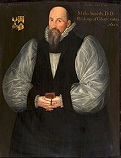
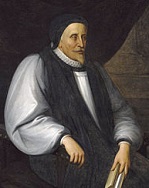
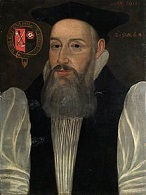
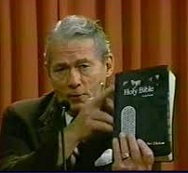
In 1611 English King (1603-25) James I (1566-1625) (ed.) pub. the King James (Authorized) Version of the Holy Bible (66 books), commissioned in 1604 (lucky that the 1605 Guy Fawkes Plot to replace the govt. with Roman Catholics didn't succeed), with the work divided between 47 translators (47 Anglicans, 0 Puritans, 0 Roman Catholics, 0 Separatists) in six committees with 15 rules to follow, using ancient mss. for reliability, and deliberately preserving ambiguities, e.g. Romans 5:12: "Wherefore, as by one man sin entered into the world, and death by sin; and so death passed upon all men, for that all have sinned" (can mean that all men die because of sin, and/or that all men sin because they are under God's judgment of death); most of the language is William Tyndale's, but without the pesky marginal notes challenging the divine right of kings; James I's planned royal authorization of the final work never happens?; the intent is to make "of many good translations one principal good one", according to translator Miles Smith (1554-1624) in Preface to the Translation; it takes its place beside the Bishops' Bible (official vers. for use in Anglican churches, original ed. 1568, revised ed. 1602) (basic source for the King James Bible?), the Geneva Bible (1575) (known for Calvinist-slanted footnotes dissing the divine right of kings, always translating the word king as tyrant), and the 1582 Rheims trans. of the 5th cent. Roman Catholic Vulgate; too bad, the King James Bible is initially universally panned, and the Puritans continue to use the Geneva Bible, causing Charles I to ban it in 1644, leading to the Puritans taking over the govt. and beheading him in 1649, later realizing the superiority of the KJV; translator Lancelot Andrewes (1555-1626), master of Pembroke College, Cambridge U. is appointed bishop of Winchester in 1619, becoming the mentor of Reformed Roman Catholicism in the post-Reformation Anglican Church, and the translator of the 23rd Psalm; Thomas Bilson (1547-1616), bishop of Winchester oversees the final edit and printing; the notes on the trans. process are stored in Whitehall, and are destroyed in the 1598 Whitehall Fire; in modern times the Ruckmanists (Ruckmanites), founded by Am. Baptist pastor Peter Sturges Ruckman (1921-2016) claim special divine inspiration for the translators, even though they were govt. employees told what to do by the hardly saintly king, and explicitly deny special inspiration; a case of disguised Am. WASP racism?; Psalm 46 features word 46 from the beginning "shake" and word 46 from the end "spear", and of course William Shakespeare (b. 1564) is 46 the first part of this year; a tribute, or did he translate it? - it's a pajama people special?

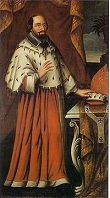
On Jan. 19, 1612 deposed HRE (1576-1611) Rudolf II (b. 1552) dies of "despondency", and on June 13 after a failed lobbying effort on behalf of elector Maximilian I of Bavaria by his brother Ferdinand of Bavaria (1577-1650), only to have him reject the crown, Bohemian king Matthias (1557-1619) becomes HRE (until Mar. 20, 1619); meanwhile on Feb. 17 Ernest of Bavaria (b. 1554) dies, and Ferdinand of Bavaria is appointed elector-archbishop of Cologne (until Sept. 13, 1650), going on to persecute Protestants and sponsor several fun witch hunts, ramping up the Cologne Witch Persecution, with 37 executed in 1435-1655, most during his reign - it takes a different kind of person to become a firefighter?
In July-Aug. 1612 the Trial of the Lancashire (Pendle) Witches of 12 witches in Pendle Hill, Lancashire, England charged with the murders of 10 people by witchcraft stinks England up some more; one dies in priz, 11 (9 women, 2 men) go to trial, 10 are found guilty and hung, and one is found not guilty; the last recorded witch burning in England until ?.
In 1612 after returning to England from Amsterdam and founding the first General_Baptist congregation in England in Spitalfields, East London, Thomas Helwys (1575-1616) pub. "A Short Declaration of the Mistery of Iniquity", criticizing the Mennonites and Puritans, arguing for Arminianism, and appealing to James I to separate church and state to insure freedom of religious conscience, pissing him off and causing him to have Helwys thrown into Newgate Prison, where he dies in 1616; "If the Kings people be obedient and true subjects, obeying all humane lawes made by the King, our Lord the King can require no more: for men's religion to God is betwixt God and themselves; the King shall not answer for it, neither may the King be judge between God and man"; "If our lord the King by his discerning judgment see that as Queen Mary by her sword of justice had no power over her subjects consciences (for then had she power to make them all Papists, and all that resisted her therein suffered justly as evil doers) neither hath our lord the King by that sword of justice power over his subjects consciences: for all earthly powers are one and the same in their several dominions"; meanwhile Baptist co-founder John Smyth (1570-1612) is excommunicated by Helwys from the Baptist Church and joins the Mennonites before dying on Aug. 28.



On Feb. 14, 1613 Frederick (Friedrich) V (1596-1632), elector palatine of the Rhine marries royal It Girl Elizabeth Stuart (Stewart) (1596-1662), eldest daughter of King James I of England and Anne of Denmark (whose enthronement in England-Scotland was the goal of the 1605 Gunpowder Plot), and becomes known as Elizabeth of Bohemia, residing in the court in Heidelberg and becoming known as the Queen of Hearts for her popularity; Frederick is then recognized as the head of the Protestant (Evangelical) Union of Germany, which signs a treaty of alliance with Holland; in May 14 plays in honor of the marriage are given in London by the King's Men, incl. 6-7 of Shakespeare's troupe; Elizabeth later bears 13 children, incl. Sophia (Sophie) of Hanover (1630-1714), who founds the Hanoverian Dynasty of England via her son George I.

In Feb. 1614 after he converts from Lutheranism to Calvinism, and has his officials draw up plans for mass conversion of his people, which are stopped by his Lutheran wife, the Confession of Brandenburg, prepared by order of Brandenburg elector John Sigismund Hohenzollern (1572-1619) attempts to reconcile the tenets of Lutheranism and Calvinism and ends the disputes caused by the Augsburg Confession; the people are permitted to remain either Lutheran or Calvinist as they wish, turning Brandenburg-Prussia into a bi-confessional state.
On May 15, 1614 Marie de' Medici arranges the betrothal of her son Louis XIII to Anne of Austria, daughter of Philip III of Spain, the Huguenots get pissed-off and take up arms, but finally give up and accept the Peace (Treaty) of St. Menehould; Louis confirms the Edict of Nantes, and summons the Etats Generaux (Estates Gen.) for the last time until Louis XVI in 1789.
In 1615 beleaguered Italian scientist Galileo Galilei (1564-1642) writes an Open Letter to Madame Cristina of Lorraine, Grand Duchess of Tuscany on his Copernican views, trying to clear himself of the appearance of being an unbeliever, claiming that the Book of Nature is to be read in the language of mathematical science, while the Scriptures when referring to physical fact are not to be taken literally, "nor does God reveal himself less admirably in the effects of Nature than in the sacred words of Scripture"; the purpose of the Scriptures is to teach us "how to go to heaven, not how the heavens go"; the priestly authorities are not amused, and in Dec. Galileo is summoned before the Inquisition in Rome and put on trial for his scientific views in a super-rigged trial; "To assert that the Earth revolves around the Sun is as erroneous as to claim that Jesus was not born of a virgin" (Cardinal Robert Bellarmine (1542-1621), head of the Congregation of the Holy Office, who personally framed the decision to burn Giordano Bruno in 1600, and is not a student of astronomy); Galileo's observations with the telescope actually backed the Tychonic view that the Earth doesn't move, but he stuck with the Copernican system anyway, and was just lucky?
On Feb. 16, 1616 Galileo writes a letter to Monsignor Dini, trying to clear himself of charges of heresy and blasphemy, but failing to convince the Church of the truth of Copernicanism; on Feb. 24 the Qualifiers of the Holy Office pub. a Report on the Bad Boy Galileo condemning the proposition that "the Sun is the center of the world and entirely devoid of local motion" as "foolish and absurd philosophically, and formally heretical", while the proposition that "the Earth is not the center of the world nor immovable, but moves as a whole, and also with a daily motion" is "to receive the same censure in philosophy and, as regards theological truth, to be at least erroneous in faith"; on Feb. 26 Galileo is ordered by Holy Office Commissioner Gen. Vincenzo Maculano da Firenzuola "to relinquish altogether the said opinion that the Sun is the center of the world and immovable and that the Earth moves, nor further to hold, teach or defend it in any way whatsoever, verbally or in writing"; on Mar. 3 the Congregation of the Index, headed by Cardinal Robert Bellarmine (1542-1621), without mentioning Galileo by name bans all writings which treat Copernicanism as anything but an unproven hypothesis, and prohibits Copernicus' 1543 De Revolutionibus from pub. until it is "corrected" to state that it is only presenting a hypothesis (done in 1620); the anti-Copernican decree, which is never officially ratified by the pope is not annulled until 1757; as chastened Galileo mumbles, "epur si muove" (nevertheless, it moves).
In 1616 Bavarian elector Maximilian I resigns from the 1609 Catholic League; too bad, I will follow my love wherever he will go, and he ends up rejoining in 1618.
In 1616 Roman Catholic oppression in Bohemia is cranked up.

In 1616 the Earl of Worcester (a Catholic) is made Lord Privy Seal of England, and Sir Thomas Lake becomes secy. of state. Marco Antonio de Dominis (1560-1640), learned fatass former archbishop of Split (Spalato) in Dalmatia, whose researches have led him to break with the corrupt Roman Catholic Church flees to England, where James I gives him a big reception and puts him in the 3rd spot after the archbishops of Canterbury and York, then dean of Windsor in 1617, and he goes on to crank out anti-papal sermons and books for the British govt.
In 1616 the word "Puritan" is first used in England - I love you just because you're pure?
In 1616 King James I pub. his Religious Credo.
On May 27, 1617 Bavaria breaks from the Catholic League and forms its own league with Bamberg, Eichstadt, Wurzburg, and Ellwangen (until 1626).
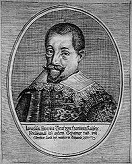
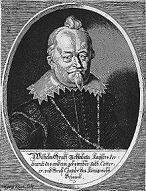
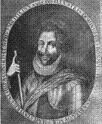
On May 23, 1618 after they can't stand the thought of fiercely Roman Catholic Ferdinand of Styria (future HRE Ferdinand II) ruling Bohemia, the Ultraquist Bohemian Revolt against the Hapsburgs, led by Count Matthias von Thurn begins with the Second Defenestration of Prague, when some Protestant rebels throw Roman Catholic regents Jaroslav Borzita (Borita) (Borsita) of Martinice (Martinic) (Martinitz) (1582-1649) and William Slawata (Schlabata) (Vilem Slavata) of Chlum (1572-1652) (members of the Bohemian royal council) from a window in Hradcany Castle in Prague into a manure pile, precipitating the cannon and gunpowder filled cool-to-be-cruel Thirty (30) Years' War (ends May 15, 1648); the Imperial Army under CIC field marshal Baron Charles Bonaventure (Karl Bonaventura) de Longueval, Count of Bucquoy (1571-1621) enters Bohemia to suppress the rebels.
Oh come let us adore him, Christ the White Man's Lord? On Sept. 6-25, 1618 the Great Comet of 1618 appears in the skies over Europe, causing Millennium Fever to whip up, esp. with the Puritans of Leiden, Holland, who use it as their excuse to throw caution to the wind and travel to survival-of-the-fittest North Am. to plant a godly English civilization, while the rest of the Euro Christians begin the apocalyptic super-cruel Thirty Years' War (ends 1648); in England the comet is used to diss the king's proposed marriage alliance with Spain; you had to be there, but the intoxicating power of the new King James Bible over all English Bible-thumpers actually makes them think they are the Chosen People, with a language not tracing back to Rome and Roman popery, with the butchery of the greedy Roman Catholics in South Am. proving that their brand of white is right; in 1662 Phineas Pratt writes "In the year 1618 there appeared a blazing star over Germany that made the wise men of Europe astonished there."
On Nov. 13, 1618 the Synod of Dort (Dordrecht) convenes in Dordrecht to settle the differences between the Calvinists and Arminians (free-will believers), followers of Jacobus Arminius (Jako Hermanszoon) (1560-1609), and next May 9 after 154 meetings ends up expelling the Arminians from the Dutch Reformed Church.


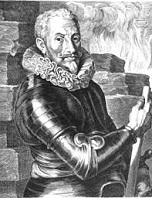
On Mar. 20, 1619 HRE Matthias (b. 1557) dies in Vienna, and on Aug. 28 after Maximilian I of Bavaria turns it down, and Johann Georg I of Saxony is talked into voting for him to nullify opposition from the other Protestant electors in return for letting him occupy Silesia and Lusatia, Roman Catholic, Jesuit-educated (strongly anti-Protestant) Austrian Hapsburg Archduke Ferdinand of Styria (king of Bohemia since 1617) is elected HRE Ferdinand II (1578-1637) (until Feb. 15, 1637); freaking at the thought of a Jesuit marshmallow-toaster running Bohemia, the Bohemian Diet (nobles) declares him deposed on Aug. 26, and elects Protestant League head Frederick (Friedrich) V (1596-1632) (elector of the Rhenish Palatinate of Bavaria since Sept. 19, 1610 and son-in-law of James I of England) as king of Bohemia in his place, and he is crowned in Prague on Nov. 4, going to war with HRE Ferdinand II and Maximilian I of Bavaria (who strikes a deal with Ferdinand in Oct. in exchange for large concessions) and the Catholic League, beginning the Bohemian Revolt of the Czech Estates (ends 1620), the first phase of the Thirty Years' War (ends May 15, 1648), the first "modern" war, and the first heavily influenced by merchants and trade; too bad, Frederick doesn't last long, becoming known as the Winter King, and his Scottish wife Elizabeth Stuart "the Queen of Hearts" as the Winter Queen; meanwhile cagey Maximilian I of Bavaria signs a neutrality treaty with the Protestant Union and occupies Upper Austria as security for his expenses; in Dec. Bavaria agrees to supply its own 7K men to the Catholic army of 21K infantry and 4K cavalry, commanded by frilly collar lover Johann Tserclaes, Count of Tilly (1559-1632), a descendant of the Roman Catholic Brabantine family; meanwhile the Protestant Union army only totals 10K men.
On June 10, 1619 the Battle of Sablat (Zablati) near Prachatice sees the Roman Catholic army of Charles Bonaventure (Karel Bonaventura) de Longueval, Count of Buquoy (1571-1621) defeat the Protestant army of Count Ernst von Mansfeld, who loses 1.5K infantry plus his baggage train, causing the Bohemians under Count Georg Friedrich of Hohenloe-Neuenstein-Weikersheim (1569-1645) to lift their siege of Budejovice (Budweis), becoming a turning point for the Catholics - Budweiser joke here?
In June 1619 the Puritan Separatists of Scrooby in Nottinghamshire, England secure a patent from the Virginia Co., and William Bradford sells his house to help pay for the voyage; meanwhile news arrives from Robert Cushman of London that another group of 180 English Separatists from Emden, Holland led by Mr. Blackwell had tried to reach North Am. during the winter, and all but 50 died of the "the flux, and also want of fresh water"; the Dutch get wind of their plans and offer to help them set up a Dutch settlement, and when they refuse secretly work to block them from leapfrogging into an area they want for themselves?
On Sept. 7, 1619 Transylvanian Jesuit (St.) Melchior Grodziechi (b. 1582) and Silesian Jesuit (St.) Istvan Pongracz (b. 1584) are tortured, murdered, and mutilated and left unburied for 6 mo. by Calvinist troops of Prince George I Rakoczi in Kosice in modern-day Slovakie after they fail to renounce their faith and are framed on treason by being accused of inviting the Polish army into Kassa - they were proud of their career and excited about their future?

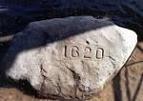









1620 In summer 1620 Thomas Dermer returns from Va. to Cape Cod, and finds the Pokanokets full of "inveterate malice to the English" after an English ship had arrived in Narragansett Bay in the spring and massacred a large number of Indians after first inviting them into their ship; after Squanto saves him at Nemasket (Plymouth), they go to Martha's Vineyard, where Epenow's men mortally wound him and take Squanto prisoner (his name comes from their god of death Tisquantum, pissing them off, because they are good Indians, worshipping the creator Kietan and familiar spirit Hobbamock, invoked by the shamans called powwows), then giving him to Massasoit at Pokanoket, just in time for the arrival of the you know what; Dermer dies a few weeks later in Va. - shall we say 7:30 at the old oak? White English America starts as a church relocation project to a hostile land where they aren't invited or wanted? On Sept. 16, 1620 (Sept. 6 Old Style) the Mayflower sails from Plymouth, England, captained by dwarfish (less than 5 ft.?) red-haired soldier Myles (Miles) "Capt. Shrimp" Standish (1584-1656) (who takes his wife Rose along) (selected after the Pilgrims reject John Smith as too bossy and expensive) and mastered since 1609 by 50-y.-o. Christopher Jones (1570-1622) of Rotherhithe on the Thames River in C SE London, with 102 passengers and a crew of 27 incl. Capt. John Smith (1580-1631) (who had been captured by the Pacha of Nalbrits when fighting the Turks - first American encounter with a Muslim tyrant?), pilot and first mate John Clark (1575-1623), Robert Coppin (1590-?) (pilot and first mate?), barber-surgeon Giles Heale (-1653), and 21-y.-o. cooper (prime candidate for conversion and marriage?) John Alden (1599-1687); the True Blue Puritans from Leiden are led by elder and spiritual leader William Brewster (1568-1644) (returned from hiding), fustian (corduroy worker) William Bradford (1590-1657) (who coins the term Pilgrims, because they had been toughened up by their tribulations in England and weaned from England by their stay in Holland, hence can't be discouraged into going home again?), wealthy Pilgrim deacon (voyage organizer) John Carver (1576-1621) (along with his wife Katherine and five servants), Stephen Hopkins (1581-1644) (the only Mayflower passenger with prior New World experience, incl. bein shipwrecked in Bermuda in 1609 and serving several years in Jamestown Colony under Capt. John Smith) and his indentured servants Edward Leister (Liester) and Edward Doty (Doten) (1598-1655) (who get in Plymouth's first duel on June 18, 1621), the Winslow Family (direct ancestors of TLW?), brothers Gilbert Winslow (1600-1631) and Edward Winslow (1595-1655) (one of the 15 Pilgrims who brought servants or children, and one of eight who had the honorable distinction of Mister), and Edward's wife (since 1618) Elizabeth Barker Winslow (1595-1621), plus two dogs (a male spaniel and a mastiff bitch) seeking religious liberty yada yada yada; the ship carries three copies of the Geneva Bible, which they prefer to the state-backed King James Bible; during the voyage a sailor (who had been mocking them for seasickness and God gave him what's coming to him?) and young servant die, while everybody suffers from scurvy; three women are preggers, Elizabeth Hopkins (1585-1644) (who bears son Oceanus on the voyage), Susanna White (-1675) (who on Nov. 25 bears son Peregrine White (1620-1704) aboard the Mayflower in Provincetown Harbor, becoming the first English child born in New England, and after William White dies on Feb. 21, 1621 and Elizabeth Winslow dies on Mar. 24, 1621 she marries Edward Winslow on May 12, 1621, becoming the first bride in Plymouth), and Mary Allerton (1616-99), who has a stillborn son aboard the anchored Mayflower on Dec. 22, and dies in Plymouth on Nov. 28, 1699, becoming the last surviving Mayflower passenger; Edward Winslow's brother John Winslow (1597-1674) (TLW's ancestor?) arrives on Nov. 9, 1621 on the Fortune, and on Oct. 12, 1624 marries Mayflower passenger Mary Chilton; after ignorantly bucking the Gulf Stream the whole way, averaging 2 mph, and straying off course in a storm, they head S then encounter rough waters, and after "We could not now take time to further search or consideration, our victuals being much spent, especially our beer" (William Bradford) (they run out of beer after daily rations of 1 gal. each?) they head back N, and finally on Thur. Nov. 19 (Nov. 9 Old Style) after 65 days at sea arrive at the "back side" of fishhook-shaped Cape Cod (James), 220 mi. N of their intended destination at the mouth of the Hudson River, and set out S to reach it, but after attempting the treacherous Pollack Rip between the S end of the fishook and Nantucket Island they give up and return to Cape Cod in "the northern parts of Virginia".
On July 3, 1620 the German Catholic League (founded 1609) and the German Protestant Union (founded 1608) kiss and make up and sign the Treaty of Ulm, under the terms of which the Protestant Union declares neutrality and drops its support of Frederick V of Bohemia, stabbing him in the back and allowing the Catholic League to throw all its forces at him, starting by relocating to Upper Austria; meanwhile the truce between the Netherlands and Catholic Spain ends (making the English Separatists in Holland who had not gone with the Pilgrims itchy?), and Spain sends troops to the Rhenish Palatinate, which is devastated by Count Tilly despite Maximilian I's treaty with the Protestant Union; England fails to help the Protestant League, although English volunteers join Frederick's army; Lower Austria submits to HRE Ferdinand II, and Bohemia is next on the list.
The reason that Bohemians are Catholic? On Nov. 8, 1620 the Battle of White Mountain (Weissenberg) near Prague sees the Holy Roman Imperial army under Duke Tilly of Bavaria crush the Bohemian Revolt of the Czech Estates (begun 1619); Frederick V is deposed and flees to The Hague with his wife Elizabeth the Winter Queen, the leading rebels are executed, the Protestant clergy expelled, and Protestantism mercilessly extirpated; the lands of the native nobility are confiscated, and Bohemian independence ended, although Bohemia is saved from being absorbed by Germany; the twelve largest Roman Catholic cannons in Tully's army are named the Twelve Apostles; as Prague is liberated by the Roman Catholics, citizens who want to reveal their true colors kiss the soutanes of Jesuit chaplains; defeated Frederick V of Bohemia earns the epithet "Winter King" since he only lasted one year and four days and was gone with the melting snow, as the Hapsburgs had predicted, and is placed under the imperial ban; in the Thirty Years' War that follows, Catholics attain supremacy at the expense of the devastation of Bohemia; eventually all Bohemia
The original one small step for a man, one giant leap for mankind? On Nov. 21, 1620 (Sat.) (Nov. 11 Old Style) the Pilgrims drop anchor on Long Point in sheltered Provincetown Harbor on the underside of the tip of the fishook (across Cape Cod Bay from Plymouth), where they stop because of the presence of freshwater streams even though Bradford calls it a "hideous and desolate wilderness" filled with sandhills; on Nov. 21 before disembarking (which they won't do on a Sun.), after the strangers begin grumbling that the religious kooks are getting them in trouble for settling outside the area of their patent, and the Puritans are worried that they need a civil covenant for governing the motley bunch that is not bound by their spiritual covenant, 41 Pilgrim Fathers (all male) (the rest are too sick?) sign the Bible-drenched Mayflower Compact, agreeing that "for the glory of God and advancement of the Christian faith and honor of our King and country... do these present solemnly and mutually in the presence of God and one of another, covenant and combine ourselves together into a civil body politick, for our better ordering and preservation... and by virtue hereof to enact, constitute and frame such just and equal laws... as shall be thought most meet and convenient for the general good of the colony, unto which we promise all due submission and obedience"; thus is layed the foundation for constitutional democracy in America with the first covenant-compact form of govt. since ancient Israel? (a mini-Declaration of Independence?); it is only meant to be temporary; John Carver is chosen as the first (1-year term) gov. of the colony; the first boat with 16 well-armed men lands and collects cedar wood, then returns to the ship to make their first fire in weeks; on Nov. 23 they disembark, and the men fix up their shallop (small boat), which had been disassembled for the voyage, while the women wash clothes in a pond, founding the tradition of Monday as Wash Day in New England; on Nov. 25-27 they make a land expedition of the tip of the fishhook, discovering Pilgrim Spring and Corn Hill (where they steal 36 ears of buried Indian Nauset seed corn, "Some yellow, and some red, and others mixed with blue"), and see their first Indians, 5-6 with a dog, who run), followed on Dec. 6-9 by a shallop expedition in Cold Harbor, discovering Pilgrim Lake, getting frozen feet (hence the name Cold Harbor), stumbling on the Indian grave of a blonde-haired Frenchman and child, then some Indian wigwams, which they loot, and on Dec. 7 finally getting attacked in Eastham by 30 Wampanoag in the First Encounter, who shoot yard-long arrows at them but retreat after being fired on without injuring anybody; on Dec. 16-22 they make a 3rd expedition W (clockwise) across the 65-mi. length of Cape Cod peninsula to the NW end, discovering Clark Island, named for pilot John Clark, and the site of Plymouth, where they don't mention any rock?
On Dec. 25, 1620 (Dec. 15 Old Style), after 1 mo. of searching for a livable location, 99 mainly sick and scurvy-ridden Old (First) Comers leave Provincetown Harbor, and on Dec. 26 enter Plymouth Harbor, anchoring at Goose Point at the end of Long Beach 1.5 mi. from the 200-ton granite Plymouth Rock at the end of Town Brook, then on Dec. 30 after more exploring found Plimoth (Plymouth) Plantation, the first permanent colony settled by WASP families, protected by 165-ft. Fort Hill, and all conveniently cleared of the 1K-2K Indian pop. by the plague, whose bleached skulls and bones are scattered around, along with who-knows-how-old "memory holes" on roads commemorating historical events; Chief Epenow of Martha's Vineyard assumes that the whites were sent from Virginia to avenge the attack on Thomas Dermer; William Bradford's wife Dorothy May Bradford and 3-y.-o. son John Bradford fall overboard on the moored Mayflower and drown (Puritan suicide?); Mary Chilton (1607-79) allegedly becomes the first female passenger to step ashore at Plymouth, jumping out of the boat and wading ashore onto Plymouth Rock in Thievish Harbor, and on Oct. 12, 1624 she marries Edward Winslow's 3rd brother John Winslow (1597-1674), who was on the ill-fated Speedwell and arrives on Nov. 3, 1621 on the Fortune; on Mon. Dec. 25 (Old Style) (Jan. 4, 1621) they erect the first house frame on Cole's Hill, the hill where they buried their dead the first winter; the Mayflower remains anchored in Plymouth Harbor until next Apr.; the more juicy Massachusetts Bay to the N (future home of Boston) waits for future Puritan squatters; only 72 years to the Salem Witch Trials.

In 1620 the Roman Catholics of the Valtellina (Valtelline Pass) in N Italy (most important link between Hapsburg Austria and Spanish Hapsburg possessions in Italy), led by Rudolf von Planta rebel and massacre the Protestants of the Grisons League, allowing the Spanish to seize the pass, causing Bern and Zurich to send pastor Georg (Jurg) Jenatsch (1596-1639) with a Protestant force, and they score initial Vs in the Valtelline War (ends 1639), killing Rudolf's father Pompejus, which creates a grudge situation and later backfires.

On Jan. 28, 1621 Pope (since 1605) Paul V (b. 1550) dies, and on Feb. 9 Alessandro (Alexander) Ludivisi is elected Pope (#234) Gregory XV (1554-1623) (until July 8, 1623); Jesuit Cardinal Robert Bellarmine (b. 1542) (who coulda been pope?) dies on Sept. 17.


On Mar. 31, 1621 Spanish king (since 1598) Philip III (b. 1578) dies in Madrid, and his son Philip (Felipe) IV (1605-65) succeeds him as king of Spain, Naples, Sicily, and Netherlands (until Sept. 17, 1665), becoming as weak a king as his daddy, soon appointing Gaspar de Guzman y Pimentel, Count of Olivares and Duke of Sanlucar (1587-1645) as Spain's first PM, relinquishing rule to him; Olivar goes on to reform the court and reverse the no-war policy of Spain, which is too late to stop Spain's decline; meanwhile carefree Philip becomes a patron of the arts, backing painter Diego Velazquez (1599-1660), dramatist Lope de Vega (1562-1635), poet Pedro Calderon de la Barca (1600-81) et al. in a desperate attempt to keep up with the heretic English?
On Apr. 21, 1621 Elizabeth Sawyer, "the Witch of Edmonton" is executed in England, her guilt proved by having a "thing like a teat the bigness of the little finger, which was branched at the top like a teat, and seemed as though one had sucked it."
In 1621 the Austrians expel the Swiss Protestants from the Valtellina; meanwhile the Swiss Confederation is paralyzed by the division between the Catholic and Protestant cantons, and sits it out all the way until 1639.
In 1621 the 12-year truce between Holland and Spain ends, and war resumes.
In 1621 Elector Palatine Frederick V is placed under the ban of the Holy Roman Empire, and the war moves from Bohemia to the Palatinate; German soldier Count Ernst von Mansfeld (b. 1580), who helped the revolting Bohemians in 1618 then had his butt kicked in Zablat in summer of 1619, causing him to offer his services to HRE Ferdinand II is appointed cmdr. of his army in Bohemia, and takes on Count Tilly in the Upper and Rhenish Palatinate, relieving Frankenthal and capturing Hagenau.
On Mar. 20, 1623 Pope Gregory XV issues Omnipotentis Dei, the last papal ordinance against witchcraft, which prohibits the death penalty except when a compact with the Devil is proved and homicide is committed with his assistance - get a lawyer or forget it?
By 1627 HRE Ferdinand II has outlawed all religions but Roman Catholicism in his empire, and banished the Protestants from Bohemia.
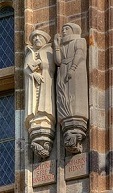
On May 19, 1627 German postmaster (first woman) Katharina Henot (Henoth) (b. 1570) is burned at the stake for sorcery in Cologne, Germany; on June 28, 2012 the city council exonerates her along with other victims of witch persecution.
On July 12, 1627 the Anglo-French War of 1627-9 begins with the Siege of Saint-Martin-de-Re (Saint-Martin-de-Ré) in France, with the duke of Buckingham leading a force 100 ships and 6K-7K soldiers land on the beach at Sablanceau with the objective of capturing Ft. La Pree and the fortified city of Saint-Martin-de-Re; after a French relief fleet arrives on Oct. 7 (night), the English end the siege after losing 5K; meanwhile the Third Huguenot Revolt (ends 1628) against the French crown begins, causing Cardinal Richelieu in Sept. to begin sieging the Huguenot stronghold of La Rochelle (ends Oct. 1628); the 1st duke of Buckingham leads a fleet from Portsmouth to aid the Huguenots, but fails to relieve them and returns after losing 4K of his 7K men.
In 1627 Charles I attempts to find holy spin doctors, ordering the pub. of sermons by bishop Roger Maynwaring (1590-1653) and Robert Sibthorpe (-1662) under the title "Religion and Allegiance", justifying his actions with the divine right of twerps, er, kings, bypassing Canterbury archbishop George Abbot when he refuses to license them with a commission of bishops led by William Laud, who begins his rise; next year John Pym gets the House of Commons to impeach Maynwaring and Sibthorpe for subverting the Commonwealth, pissing-off Charles I, who pardons them.
On Apr. 29, 1628 the Swedes and Danes sign a treaty for the defense of Stralsund, and Gustavus Adolphus enters the Thirty Years' War; in May after Wallenstein obtains the duchy of Mecklenburg and assumes the title of Adm. of the Baltic, he begins the Siege of Stralsund, which ends in failure on Aug. 4, turning Ferdinand's old princes of the empire against him.

In 1629 the first of four mass migrations from distinct regions of Britain begins as 20K Puritans from the East Anglian counties E of London settle Massachusetts ("near the great hill") over the next dozen years (ends 1641) after Charles I issues a charter to the Mass. Bay Co.; well-to-do 40-y.-o. East Anglian lawyer John Winthrop (1588-1649) saying that "the eyes of all people are on us", decides to make the colony a "wilderness Zion", a "city upon a hill", where persecuted Puritans can find refuge and build the New Jerusalem (a little commercial activity, short of moneychanging in the Temple will be overlooked as well?), and soon discovers a loophole in the charter, a failure to require that the home office be kept in England; on Aug. 29 he gets 12 shareholders to sign the Cambridge Agreement, pledging to take the charter and hence the home office with them to Am., and the co.'s governing body agrees to it; be overlooked as well?), and soon discovers a loophole in the charter, a failure to require that the home office be kept in England; on Aug. 26 he gets twelve leaders to sign the Cambridge Agreement pledging to take the charter and hence the home office with them to Am., and the co.'s governing body agrees to it; Winthrop is chosen as first gov. of the planned Massachusetts Bay Colony, and ends up serving 12x.


On Mar. 22 (Apr. 7?), 1630 700-odd (400-odd?) Massachusetts Bay Colonists seeking to escape the Thirty Years' War and its economic slump sail in seven ships from Southampton, England for North Am.; Arabella carries John Winthrop (1588-1649) and the charter; en route John Winthrop delivers the sermon Model of Christian Charity, exhorting good Puritans to be like a "City Upon a Hill" and work to construct a Bible-thumping theocratic society in America that will "shame the faces of many of God's worthy servants", else face God's wrath, shaping American politics seemingly forever (until ?); after landing at Salem, Mass. on June 25, on Sept. 17 (Sat. Old Style) (Tues. New Style) they found the town of Boston (formerly Shawmut) on an 800-acre peninsula surrounded by tidal marshes, deeply indented by coves, creeks and inlets, and dominated by three hills, with a narrow 1-mi.-long frequently-submerged neck joining it with the mainland; John Endicott (Endecott) (1588-1665) becomes gov. #1 of the Mass. Bay Colony, with capital at Charlestown, Mass. (originally Mishawum) on the Mystic River; the first law against gambling in Britsh North Am. is enacted; over the next few cents. the area is gradually filled in, increasing it to 1.8K acres; Medford, Mass. (originally Mistik) is founded as part of Charlestown; John Winthrop (gov. #1 of Mass. Bay Colony) begins keeping a Journal; on Nov. 9 the Boston-Charleston Ferry opens, starting at Noddle's Island, where English Anglican settler Samuel Maverick (1602-70) buys black slaves in 1638, becoming one of the earliest slave owners in Mass.; by the end of the year 17 more ships with another 1K colonists arrive, and by 1642 16K more follow; over 80K colonists leave England for greener pastures (New World, Ireland, Netherlands, Rhineland) in the Great Puritan Migration in this decade (1620-40), mostly Puritans fleeing Charles I for the Mass. Bay Colony, many of them as indentured servants; by 1640 20K settle in Mass. Bay Colony, and 55K total go to the New World, half settling in New England; the total pop. of the Am. colonies this year is only 4.6K; 35 mi. x 1 mi. Newtown (Newe Towne) (New City) is founded in Mass. on the N side of the Charles River opposite Boston 10 years after the Pilgrims land at Plymouth Rock; in 1638 it changes its name to Cambridge, Mass., becoming a univ. town.; it is later subdivided to form the additional towns of Newton (1691), Lexington (1713), Brighton (1837), and Arlington (1846).



In June 1630 Swedish king Gustavus II Adolphus (1594-1632), the new protector of Protestantism invades N Germany and lands in Peenemunde in Pomerania with 4K men, then captures Stettin and the Neumark area in Brandenburg; on Aug. 13 at the Diet of Regensburg HRE Ferdinand II accedes to the demands and dismisses Wallenstein, and makes Johann Tserklaes (Tserclais) of Tilly, Duke of Bavaria (1559-1632) the new imperial cmdr., while Wallflower-stein retires to Gitschin; the speed of the Swedish blitzkrieg is later studied by Napoleon and Patton, and launches Sweden as a world power; too bad, the love of Swedish army officers for flashy fur hats causes the demand for North Am. fur to boom, dooming the Am. beaver?
On Mar. 20, 1631 after the Catholic League under CIC Flemish field marshal Count Johann Tserklaes Tilly, along with Pappenheim destroys the Swedish garrison in Neu Brandenburg, they siege the Protestant town of Magdeburg on the Elbe River (which promised to support Sweden) for 2 mo. with 40K men, then after fence-sitter Johann Georg I of Saxony refuses to allow Gustavus II Adolphus to cross the Elbe River at Wittenberg to relieve it, Tilly captures it on May 20, and massacres 25K of its 30K inhabitants, gruesomely torturing them to boot and burning the city, then burns Halls and invades Saxony, ravaging the countryside and finally causing Johann Georg I to see the light; never fear, Protestant champion Adolphus II Gustavus of Sweden and his 16K-man army sacks Frankfurt-on-Oder, repulses a 23K-man imperial army under Count Tilly on Aug. 1 (July 22 Old Style) at the Battle of Werben in Germany, then on Sept. 15-17 (Sept. 5-7 Old Style) after concluding an alliance with Johann Georg I defeats Silly Tilly at the "world-changing" First Battle of Breitenfeld in Saxony N of Leipzig (23.5K Swedish and 18K Saxon Protestant troops vs. 31.3K Catholic troops) (the Saxon troops turn tail and flee at the start of the battle, making the Protestant V all the more cool), becoming the first major Protestant V of the Thirty Years' War and making Gustavus the master of Germany, gaining him the title of Gustavus the Great, all causing freaked-out HRE Ferdinand II to reappoint Wallenstein as CIC in place of Tilly; Magedeburg becomes a permanent symbol of the horrors of war, unmatchable until WWI?
On May 30, 1631 Cardinal Richelieu of France and Maximilian I of Bavaria sign the secret Treaty of Fontainebleu, whereby Maximilian promises not to attack the enemies of France; Maria de' Medici is exiled to Brussels, and joins forces with her son Duke Gaston of Orleans against Richelieu.
On Oct. 10, 1631 after regrouping and marching into Bohemia, the Saxons under Johann Georg I capture Prague, despoiling the Infant Jesus of Prague statue (1555), after which they decide to negotiate peace terms and allow Wallenstein to drive them back to Saxony.
In 1631 the Housewives of Lowenburg stand up to the Roman Catholic priests trying to convert them out of Protestantism.
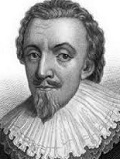
In 1631 English Roman Catholic George Calvert, 1st Baron Baltimore (1579-1632) petitions for a charter for Maryland (Md.) from Charles I, while London merchants and William Claiborne from Jamestown Colony try to stop it; meanwhile Claiborne has own little project, Kent Island in Md., which just happens to fall within the land later granted to Calvert - bring on the baksheesh?

Speaking of mean Roman Catholics? In Feb. 1632 Pisa-born Italian super-brain scientist ("Father of Science") Galileo Galilei (1564-1642) pub. his "fictional" masterpiece Dialogue Concerning the Two Chief World Systems (Dialogho Sopra i Due Massimi Sistemi del Mondo), which becomes an immediate bestseller in Italy; in Sept. Pope Urban VIII finally gets a copy, shits bricks and orders its distribution stopped, and in Oct. Galileo receives a summons to appear before the friendly Roman Inquisition for reneging on his 1616 promise and only playing games with them, pretending to treat Copernicanism as a theory but anything but; the Medici family waffles but finally drops protection for him, and he has to go to Rome, where the outcome is unstoppable. Speaking of mean Catholics? On Feb. 13, 1633 Galileo arrives in Rome, is interrogated (tortured) by the Big I in Apr., pleads guilty to a lesser charge in exchange for a more lenient sentence (please, I don't want to squat to pee?), is found guilty (3 of 10 Cardinal judges withholding their signatures), and on June 22 in the Dominican Convent of Santa Maria Sopra Minerve he is forced to abjure his belief in the *!?! Copernican hypotheses; after prostrating himself in the white nightshirt of a penitent and kissing their holy feet for saving his soul he is sentenced to an indefinite prison term; in Dec. he is allowed to return to Florence under permanent house arrest at his villa in Arcetri, becoming the end of any remaining claim the Church could make to having any direct pipeline to God; the chilling effect is instant, with French brain man Rene Descartes withholding pub. of Le Monde (The World) (Treatise on the Light) next Apr. because it agrees with the Copernican theory, "and I confess that if it is false, then so are the whole foundations of my philosophy, because it is demonstrated from them beyond doubt" (he turns into the "philosophe au masque"); as late as 1739-42 an ed. of Newton's Principia is pub. with a cover letter by Minim Fathers Le Seur and Jacquier pointing out to good Roman Catholics that the Newtonian system of the world is also "hypothetical". In Jan. 1638 Galileo, now totally blind from retina damage caused by peering at the Sun petitions the Holy Inquisition to be freed, but is denied; he smuggles his Dialogue Concerning Two New Sciences (Statics and Dynamics) to a publisher in Holland (the first popular science bestseller in history); John Milton makes a pilgrimage to Rome to "commune with enlightened men", and visits Galileo - enlightened, get it?
On Apr. 21, 1632 the Dordrecht Confession of Faith is adopted by the Mennonites in Dodrecht, South Holland, with 18 articles incl. belief in salvation through Jesus Christ, baptism, non-resistance, excommunication and shunning, feet washing, and avoidance of oaths.

On June 20, 1632 Charles I issues a royal proclamation ordering the country gentlemen to leave London, and grants loyal Catholic George Calvert, 1st Lord Baltimore a Royal Charter to Maryland (named in honor of Queen Henrietta Maria), N of the Potomac River (Algonquin "where goods are brought in"), with unprecedented powers, although all exports are required to be sent to or through England; too bad, he dies on Apr. 15, and his son Cecilius Calvert, 2nd Lord Baltimore (1605-75) takes over. In 1655 after many years of plotting to take back Kent Island from Catholic Maryland, Jamestown Puritan leader William Claiborne defeats a force led by Md. gov. Stone in Providence (Annapolis), kills him, then takes control of Md., and travels to England to get official control, but they don't go for it and Sir George Calvert regains control; after the Puritan govt. in England is ousted in 1660, he finally gives up and contents himself with his little ole 5K-acre Romancoke estate on the York River in Va.
In Jan. 1633 Axel Oxenstierna is designated legate plenipotentiary in Germany by the king, with absolute power over all territories conquered by the Swedish armies, making him the most powerful statesman in Swedish history (until ?); he organizes the Protestant leaders of Sweden and Germany into the Evangelical League for mutual assistance against mean Roman Catholics; in Jan. German soldier Dodo von Knyphausen is rewarded for his bravery at Lutzen last year with a promotion to field marshal in the Swedish army in charge of Lower Saxony.
On Apr. 23, 1633 the lull in the Thirty Years' War caused by the death of Gustavus II Adolphus of Sweden is broken by the Heilbronn League, in which France and the Protestant countries of W Germany agree to stand together against the Catholic League behind Sweden under the leadership of chancellor Axel Oxenstierna of Sweden, Gustavus' right-hand man; unfortunately the peasantry can't support the large armies in their lands, so there is not much fighting this year.

On Sept. 3, 1633 Rev. Thomas Hooker (1586-1647), a Cambridge-educated Puritan pastor from Essex, England arrives in the Mass. Bay Colony in the ship Griffin from Holland, where he had been chased in 1630 by Archbishop Laud under threat of arrest, and on Oct. 11 becomes pastor of the church at Newtown (Cambridge), soon getting in a mutually-respectful spat with Gov. Winthrop over restriction of voting rights, with Winthrop uttering the soundbyte: "The best part is always the least, and of that best part the wiser part is always the lesser", to which Hooker upstages him with the immortal soundbyte: "In matters which concern the common good, a general council, chosen by all, to transact businesses which concern all, I conceive most suitable to rule and most safe for relief of the whole" - did you have any bad dreams, did you break any glass?
On Sept. 27, 1633 after invading Silesia, Wallenstein defeats the Swedish army under Duke Bernhard of Saxe-Weimar at the Battle of Steinau, then goes into winter HQ in Bohemia, making the mistake of trying to negotiate a deal between the Protestants, Roman Catholics and the HRE, which causes certain Catholic princes (Maximilian of Bavaria et al.) to want him done away with, and HRE Ferdinand II to suspect him of treachery.


In Oct. 1633 William Laud (1573-1645), bishop of London (since July 1628) and chancellor of Oxford U. (since 1630), a friend of the Duke of Buckingham becomes archbishop of Canterbury (until Jan. 10, 1645), introducing Laudianism, which rejects Calvinist predestination and emphasizes Roman Catholic-style clerical hierarchy and liturgical ceremony, bringing in new censors Samuel Baker (chaplain to William Juxon), William Bray, William Haywood, and Matthew Weeks, targeting not only the Calvinists but the Puritans, causing an exodus of religious dissidents incl. Anne Hutchinson, John Lothropp, and Zechariah Symmes; William Juxon (1582-1663) takes his old job of bishop of London (until 1649), becoming next in line for the top job; meanwhile in May the 30-40 member Privy Council being too large, Charles I entrusts colonial affairs to an 11-man Lords Commissioners for Plantations in General, which becomes known as the Laud Commission, headed by Archbishop William Laud, who schemes to impose political and religious conformity on New England.
In 1634 a plague oubreak in Munich this year and next kills 15K of 40K; after it bypasses them, causing villagers to attribute their luck to a vow made to Mary and Jesus, the first passion play is performed in Oberammergau in Bavaria (42 mi. SSW of Munich), and every 10 years thereafter; after it becomes a tourist cash cow, it is held in 1900, 1910, 1922, 1930, 1934 (300th anniv.), 1950, 1960, etc.

On Mar. 25, 1634 the Roman Catholic Colony of Maryland (Md.) (named after Queen Henrietta Maria, although they must have snickered about sneaking the Virgin Mary in the back door) is founded on the N shores of Chesapeake Bay by English Catholic settlers led by Lord Baltimore's son Leonard Calvert (1606-47), arriving in the ships Ark and Dove; they buy a native settlement (renamed St. Mary's) from friendly Indians near the mouth of the Potomac River at St. Clement's (now Blakistone) Island; the charter granted by Charles I makes this the first English proprietary colony (owned by an individual, not a joint stock co.); the proprietor is granted powers similar to those of an independent monarch, although the laws must be in accordance with those of England.

On Aug. 18, 1634 French priest Urbain Grandier (b. 1590) is burned at the stake in Loudun for allegedly seducing an entire convent of Ursuline nuns with the help of the Devil; he had been tried once and acquitted, then publicly insulted Cardinal Richelieu, who got him a more urbane grander trial, where he is tortured into confessing.
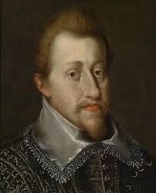


On Aug. 27, 1634 after the Swedes capture Brandenburg, HRE (since Aug. 28, 1619) Ferdinand II (1578-1637), champion of Roman Catholicism and hater of Protestantism names Austrian gen. Matthias Gallas (Matteo Gallasso), Count of Campo, Duke of Lucera Gallas (1584-1647) as his new CIC; on Sept. 5 HRE Ferdinand II (whose portrait bears a striking resemblance to a cross-dressing woman with fake facial hair?), with the help of his son Ferdinand of Hungary (later Ferdinand III) wins the Battle of Nordlingen against the Protestant mercenary army of marshal Gustav Horn, Count of Pori (1592-1657), and reconquers Wurttemberg and Franconia, reaching the height of his imperial power, but still unable to quash Protestantism throughout his emptying empire; the Heilbronn Union collapses, and the Protestants of SW Germany turn to Richelieu's France for help; in Oct. the HRE, king of Spain, and the Roman Catholic princes of Germany agree to a joint attack on France.

On Sept. 18, 1634 Anne Hutchinson (1591-1643) arrives in the Mass. Bay Colony with her merchant hubby and 13 children, and soon begins hosting home meetings where she preaches Antinomianism, the doctrine that salvation is by faith and grace alone, not by observance of moral laws incl. the Law of Moses, and that some Puritan ministers are wrong to preach salvation by works, causing the latter to begin working, er, conspiring against her.
On May 30, 1635 the Peace of Prague, negotiated by HRE Ferdinand II and elector Johann George I of Saxony is signed by most of the German Protestant states, who are satisfied with the terms of the 1555 Peace of Augsburg being reestablished as on Nov. 12, 1627 in return for agreeing that states of the HRE can no longer make formal alliances, that their armies are to be unified under the HRE, and all princes are to be granted amnesty except pesky Frederick V; the Thirty Years' War is now reduced to France and Sweden vs. the Hapsburgs; Johann George I is given Lusatia, and his son Augustus is allowed to keep the archbishopric of Magdeburg, after which he flops and declares war on Sweden.

In Oct. 1635 after questioning the right of the king to grant land to the colony without first buying it from the natives, pissing them off, London-born Puritan immigrant (since Feb. 5, 1631) Roger Williams (1603-83) is banished from the Mass. Colony by the gen. court in Boston for his "new and dangerous ideas" incl. separation from the Church of England, complete separation of church and state, and freedom from coercion in matters of faith; "When they have opened a gap in the hedge or wall of separation between the garden of the church and the wilderness of the world, God hath ever broke down the wall itself, removed the candlestick, and made His garden a wilderness, as at this day."
Take me to the river, drop me in the water? By 1636 the following offenses are capital crimes in the Mass. Bay Colony, the Puritan paradise: adultery, assault, blasphemy, idolatry, man-stealing, murder, perjury in a capital trial, rape (incl. statutory), rebellion, sodomy, witchcraft; other colonies later add arson, counterfeiting, horse theft, piracy, robbery, and slave rebellion.
In June 1636 after elitist Gov. Winthrop fails to mellow out and broaden the voter base, and English-born Puritan minister Thomas Hooker (1586-1647) tells him, "I must confess, I ever looked at it as a way which leads to tyranny and so to confusion, and must plainly profess, if it was in my liberty, I should choose neither to live, nor leave my posterity, under such a government", he leads his 100-person Newtown (Cambridge) congregation along with congregations from Watertown and Dorchester (800 total) on a trek W along the Great Road, moving into the Connecticut River towns of Wethersfield, Conn., Windsor, Conn., and Hartford, Conn. by next May; a 4th group from Roxbury led by William Pynchon founds Springfield, Conn. on the N side of Enfield Falls at a point which forces all N river trade through the new town, which becomes the first settlement in Mass. for non-religious reasons; the original name is Agawam Plantation; they found it on land purchased on both sides of the Connecticut River from 18 aborigines living in a palisade fort on modern-day Longhill St., paying 18 fathoms of wampum, 18 hoes, 18 coats, 18 hatches, and 18 knives.


On July 4, 1636 after being granted Rhode Island by Narragansett chief Canonicus (1565-1647), London-born Puritan Roger Williams (1603-83) and his Narragansett Indian followers found the town of Providence, R.I. at the head of Narragansett Bay as a refuge for religious dissidents, and proclaim complete religious freedom - as long as you aren't an atheist?


On Sept. 24, 1636 (Oct. 4 Old Style) the Swedes under field marshal Johan Baner (Banér) (1596-1641) stunningly outwit and defeat the combined imperial-Saxon army at the Battle of Wittstock, and turn the tide of the war, after which poor Saxony is ravaged by Protestants instead of Roman Catholics, leaving little worth looting; on Dec. 22 ailing HRE Ferdinand II has his son Archduke Ferdinand elected HRE Ferdinand III (1608-57) (until 1657).
On Oct. 28, 1636 Cambridge (later Harvard) College is established by vote of the Great and General Court of the Mass. Bay Colony on the banks of the Charles River, with Nathaniel Eaton as pres. #1, becoming the first Protestant (Christian) higher ed. institution in the U.S.; a tall stockade keeps out wolves and Indians.
In May 1637 the English settlers of Connecticut meet to organize a self-governing colony and deal with the pesky local tribe (which has shrunk from 8K in 1621 to 1.5K from whitey's diseases) of the Pequots after they attack Wethersfield; on May 26 with help from Mass. troops commanded by Israel Stoughton they burn the chief Pequot town-fort on the Mystic River near Stonington, Conn., and massacre 400, selling the rest into slavery and ending the tribe's existence (the first major New World English-Indian clash?); they then declare a Day of Thanksgiving - the first English act of genocide?



On June 30, 1637 English king Charles I's Star Chamber cruelly punishes (pillories and mutilates) pesky Puritan parliamentarian William Prynne (1600-69), along with Puritans Henry Burton (1578-1648) and physician John Bastwick (1593-1654) for pub. seditious lit. against Archbishop Laud, and decrees that there shall be just four typefaces used by pure Anglican printers.
On Nov. 6-7, 1637 pregnant Anne Hutchinson is hauled before the Gen. Court chaired by Gov. John Winthrop, and quizzed on her beliefs; when she finally claims direct divine inspiration, the "woman of haughty and fierce carriage" convicts herself in their eyes of blasphemy? - I've read that before in the Gospels?


This is our country, this is our truck, the all-new Covenantorado? On Feb. 28, 1638 the Nat. Covenant (a revival of the Nat. Covenant of 1581), written by Alexander Henderson (1583-1646) and Archibald Johnston, Lord Warriston (Wariston) (1611-63) is signed in Greyfriars Kirk in Edinburgh, with a vow added to establish Presbyterianism (church rule by elders instead of bishops) as the state religion, and denouncing all measures of the crown since 1581 to restore the episcopacy; in Nov. Charles I (their first absentee king) convenes a Gen. Assembly of the Church of Scotland in Glasgow (first in 20 years) in an effort to forestall a rev., but his attempted reforms of the Scottish Kirk, particularly the Scottish Prayer Book are rejected after he makes them decide between religion and the divine-right king (him); the assembly, packed with Supplicants ticked off by his high taxes and restraints on trade is in no mood to obey him, defies royal authority, abolishes the episcopacy, and foments a revolt, causing both sides to arm.
On Mar. 7, 1638 after Rhode Island, the first Baptist colony is settled at Portsmouth, a compact for the govt. of the colony is signed; on Mar. 22 Anne Hutchinson is expelled from the Mass. Bay Colony, with gov. John Winthrop calling her an "American Jezebel", and her family and a few followers move to Aquidneck (later Rhode) Island near Portsmouth, but the arduous foot journey causes her to miscarry, letting her Mass. critics gloat about the "monstrous birth" as a punishment from God; meanwhile Sergeant Bauleton becomes mgr. of a brewhouse in Providence, R.I.
American democracy is born from the Bible and signed off on by God with an earthquake? On May 31, 1638 after being governed by a board of commissioners from Mass. for one year, the Conn. colonists hold a gen. court in Hartford and elect their own reps. after Rev. Thomas Hooker gives a big sermon, quoting Deut. 1:13, "Take you wise men and understanding... and I will make them rulers over you", concluding that "The foundation of authority is laid... in the free consent of the people", and that "the choice of public magistrates belongs unto the people by God's own allowance", and that they have the right "to set the bounds and limitations of the power and place unto which they call them" - thus is American-style democracy born of a Bible-thumping Puritan with a ho's name?

In May 1638 long-tressed Scottish nobleman James Hamilton, 3rd Marquess of Hamilton (1606-49), who is related to James II's daughter Princess Mary and became the heir presumptive to the Scottish throne between the death of James I and the birth of Charles II, and who had proved an inept general in an expedition to Germany in 1631, where his 6K-man was wiped out, after which in 1634 Charles I appointed him I'm-a-fool-to-do-your-dirty-work-oh-yeah adviser on Scottish affairs, is appointed commissioner for Scotland to appease the Prayer Book discontents, soon coming back and claiming that they're "possessed by the devil"; on Sept. 17 he is sent back again with concessions, and fails again after a Nov. 21-28 assembly in Glasgow Cathedral won't budge, causing Charles I to decide on using force.
In 1638 the Laud Commission orders Mass. to return its charter and answer charges that its officials have violated its provisions; plans by New England Gov.-Gen. Ferdinando Gorges to use force to subdue the Puritans are stopped by the English Civil War.

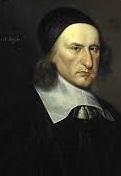
If you think it's flu see a physician fast? In early Jan. 1639 the Gen. Assembly of Scotland vows to resist Charles I's attempted changes in the Scottish Kirk to the death, and votes to abolish the episcopacy and excommunicate and depose every Anglican (king-appointed) bishop in Scotland, and enforce their Puritan doctrines on their own people by force, starting the First Anglo-Scottish Bishops' War; Earl Marischal and the Marquess of Montrose lead a 9K-man Covenanter army through The Mounth in NE Scotland in the first battle of the and the Wars of the Three Kingdoms (Nations) (British Civil War) (ends 1651); after Scottish soldier Alexander Leslie, 1st Earl of Leven (1582-1661) returns from service in Sweden, where he was promoted to field marshal in 1636, the Covenanters (former Supplicants) take Edinburgh, Dumbarton, and Stirling; on May 1 an English force led by James Hamilton lands on the Firth of Forth, but after they get nowhere he is recalled in June, and is sent back to Edinburgh on July 8 by Charles I, only to be given a hostile reception and resign as Scottish commissioner; Charles I joins the army at York, but backs down before attacking, and on June 18 signs the Pacification (Treaty) of Berwick-upon-Tweed to end the war, agreeing to let a new gen. assembly and new Scottish Parliament meet in Edinburgh, agreeing to be bound by their decision; too bad, they affirm the prior assembly's decision, and go on to decree limitations on Charles' royal authority, causing him to renege, leading to a second war next year; Scottish privy councilor (since 1628) Archibald Campbell, 8th Earl of and 1st Marquess of Argyll (1607-61), the head of Clan Campbell and most powerful man in Scotland (20K retainers), whose father turned Catholic and fought for Philip II but stayed Protestant himself becomes the leader of the Covenanters, getting a motion passed withdrawing the management of public affairs from the control of the crown in favor of the estates.
On Jan. 15, 1639 the Fundamental Orders of Conn., the first written constitution in history and precursor of the U.S. Constitution (based on a sermon by Thomas Hooker) are adopted by reps. of three Connecticut towns; it provides for voting by English adult males whether church members or not, except the gov., who has to be a member "of some approved congregation"; Puritan theocracy is abandoned.
On Jan. 24, 1639 George Jenatsch (b. 1596) is assassinated by Rudolf Planta in revenge for killing his daddy Pompejus in 1621; on Sept. 3 the Peace of Milan ends the 20-year Valtelline War (begun 1620), giving it back to the Grisons (until 1797), with save passage guaranteed to Spanish troops.
In 1639 6he Roman Catholic monasteries in Ireland are dissolved, causing the Book of Kells to be surrendered to the English crown, after which the English govt. of Dublin gains possession of it by 1653.
In 1640 The Bay Psalm Book is pub. by Stephen Day in Cambridge, Mass., becoming the first book pub. in British North Am.; in Nov. 2013 one of 11 surviving copies is auctioned for $14.2M.
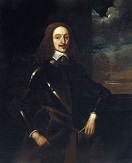



In early 1641 taking advantage of the Scottish occupation army on English soil, starving Irish Roman Catholics, led by Col. Rory (Roger) O'Moore (1600-55) begin the Irish Revolt (Rebellion) of 1641 against domination by Protestant England (ends May 1649), seizing Dublin and expelling the English, causing the Roman Catholic lords of the Pale to join and elect a supreme council to govern Ireland; on May 12 Thomas Wentworth, 1st Earl of Strafford (b. 1593) is executed for treason over the Irish affair in London in front of a crowd of 200K; on Oct. 21 the Irish revolt spreads to Ulster, and up to 30K Protestants are massacred in Belfast (the Scottish Protestants are spared?), and the remaining English settlers are driven out of Ulster; Charles I sends Edward Somerset, Earl of Glamorgan (1602-67) to deal with them, and he goes so far as to promise them the predominancy of the Roman Catholic Church in Ireland if they'll give up and back the king against the pesky Puritans; Philip Sidney, 3rd Earl of Leicester (1619-98) and his brother Algernon Sidney (1623-83) serve on the English side in the Irish Revolt, along with James Butler, 12th Earl (later 1st Duke) of Ormonde (1610-88), who ended the pesky Butler-Fitzgerald Feud (begun in the 13th cent.) in 1629, and who has relatives on the rebel side, forcing him to try harder?



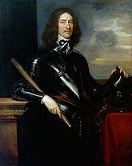
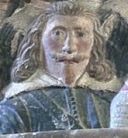
The boner that causes a king to lose his crown to the cool device called the Buddy Box? On Jan. 4, 1642 pissed-off newly arriving (from Scotland) Charles I marches to Westminster Hall with soldiers to attempt to arrest the Five Members of the Long Parliament for treason (aiding the Scottish army camped in England), incl. John Pym (1584-1643), John Hampden (1594-1643), Sir Denzil Holles, 1st Baron Holles (1599-1680), Sir Arthur Haselrig, 2nd Baronet (1601-61) (cmdr. of the Parliamentary army cavalry, known as lobsters for their full armor), and William Strode (1598-1645), plus Robert Montagu, Lord Mandeville (who skedaddles to Europe, inventing the Grand Tour?), sitting down in the speaker's chair and crying out their names, but they are spirited away before he arrives in boats out back of the hall, and the proof that he's both a mean autocrat and impotent against his enemies backfires, causing Charles I to flee hostile London with his family to the north, attempting to muster men and arms before ending holed-up in Hampton Court, which becomes his palace and his prison; meanwhile in Apr. Charles I attempts to obtain arms at the large arsenal in Kingston upon Hull, but is refused by John Hotham, son of Sir John Hotham, causing Charles I to go insted to the smaller armory in Beverley and muster more soldiers before returning.


On July 10 1642 the English Civil War (ends Sept. 3, 1651) begins with the unsuccessful Siege of Hull in East Riding, Yorkshire, with Charles I trying to capture the royal arsenal (Parliament already has a large arsenal in London), declaring John Hotham a traitor, followed on Aug. 13-Sept. 2 by the Battle of Lostwithiel in Cornwall, which is a royalist V; meanwhile on Aug. 12 Charles I puts out a call, and on Aug. 12 at 6:00 p.m. raises the royal standard at Nottingham Castle, declaring war on his own Parliament, with only 800 horse and 300 foot, and since the castle is in ruins he er, heads for Thurland Hall, owned by the earls of Clare, where his princely German nephews Maurice and Rupert join him, along with his two eldest sons Charles and James; too bad, Notthinghamshire is divided in its loyalties, and after poor results in recruiting he er, heads for Shrewsbury, assembling 6K infantry and 1.5K dragoons; during the war nearly 40% of the 504 members of Parliament leave or are expelled to fight for the king; the parliamentary troops are led by incompetent (suffering from male hormone deficiency?) Robert Devereux, 3rd Earl of Essex (1591-1646) (until 1645); N and W England (incl. Cornwall) are mainly on Charles I's side, and E and S England on Parliament's; like in the old Wars of the Roses, the majority of the country is neutral, and each side has about 13K troops; royalist poet Richard Lovelace (1618-57) presents Parliament with a pro-Charles petition, is imprisoned, released on bail, then serves in the French army until 1648, when he returns to England and is imprisoned again until after Charles I's execution in 1649; Charles I's son Prince Charles, who travels with a retinue of 300 is sent to Wales to gather support for the royalist cause; Roman Catholic French-born Queen Henrietta Maria raises funds for her hubby Charles I in the Netherlands; the Earl of Montrose, who signed the Nat. Covenant in 1638 and fought with the Covenenters until the 1639 Treaty of Berwick, then changed sides twice, finally sides with the royalists permanently; the House of Commons excludes royals, and introduces income and property taxes to fight the war.
In Sept. 1642 the Puritan Parliament wastes no time 'getting' Shakespeare, forbidding all stage plays and closing all theaters; Christmas is banned in England by the mirthless Puritans, incl. taking the day off from work, decorating with greens, and mince pies (first brought back from the Middle East by 13th cent. Crusaders) begins to be banned by Puritans for its associations with Roman Catholic idolatry; the theaters don't reopen until 1660 - so I quit the police department and got myself a steady job?

In 1642 English Dominican friar Thomas Gage (1597-1656), who traveled for years in Mexico and South Am. and lived with the natives converts to Anglicanism in 1642, becoming an enemy of the Roman Catholic Church, ratting out his fellow Catholics to get them executed for treason.

In Mar. 1644 Suffolk-born Matthew Hopkins (1620-47) overhears witches discussing their meetings with the Devil in Manningtree (near Colchester), Essex, and appoints himself (or gets Parliament to appoint him) "witchfinder-general", getting around the prohibition of torture with sleep deprivation and making them hop around until they confess, also pricking them looking for the Devil's mark that will not bleed, launching his 14-mo. career (ends 1647) in East Anglia along with asst. John Stearne (1610-70), going on to hang more people for witchcraft than in the previous cent., incl. 300 women.
In July 1645 witch-pricker (hunter) John Stearne (1610-70) tries 29 people for witchcraft in Chelmsford, getting 15-16 hanged; nine convicted of conjuring are reprieved.
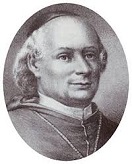
On Mar. 28, 1646 James Butler, 1st duke of Ormonde signs a treaty with the Irish Confederates granting religious concessions et al., but their gen. assembly rejects it after archbishop Giovanni Battista Rinuccini (1592-1653), nuncio of Pope Innocent X talks them out of it, after which those who signed it are arrested and the truce with Ormonde is called off, moving in on his stronghold in Dublin.
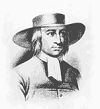
In 1647 after leaving his hometown of Drayton-in-the-Clay in Sept. 1643 to travel through civil war-filled England, learning to listen to his "inner light" and reject rituals, church buildings, and age-sex qualifications for the religious ministry (giving the right to women and children), Leicestershire, England-born Puritan George Fox (1624-91) begins to speak publicly, founding the Religious Society of Friends (Quakers), making fans of William Penn and Oliver Cromwell.
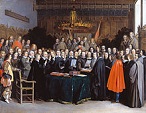

On Jan. 30, 1648 the Spanish and Dutch officially recognize their tacit peace with the Treaty (Peace) of Munster (Münster), recognizing Dutch independence and ending their 80-year war; it is signed on May 15; the Dutch ignore their 1644 alliance with France that pledged to make no separate peace with Spain. On May 15, 1648 the wonderfully unholy Thirty Years' War (begun May 23, 1618) ends after 29 years, 11 months, 3 weeks, and 1 day, causing the pop. of Germany to drop from 17M in 1618 to 8M, and the pop. of the Holy Roman Empire from 21M to 13M, caused by holy war, holy famine, and holy plague?; meanwhile the pops. of other European countries have all grown (since 1500): Britain by 5M-7.5M; France by 12M-15M; Italy by 10M-12M; Low Countries by 2.5M-3.5M; Scandinavia by 2M-2.5M; Spain: by 6.5M-7.5M (not counting its Am. colonies).


On Oct. 24, 1648 (Sat.) the Thirty Years' War (begun May 23, 1618) between the Holy Roman (Catholic) Imperial Crown and the Protestant Princes of Europe ends with the compromise Peace of Westphalia (AKA Two Treaties of Munster and Osnabruck); Cardinal Mazarin's envoy Abel Servien, Marquis de Sable (Sablé) et de Boisdauphin (1593-1659) signs for France, becoming minister of state on his return to France next Apr., then becoming de facto gov. of France during Mazarin's exile during the Fronde; the map of Europe is redrawn; the Holy Roman Empire (HRE) is pretty much kaput, along with its dream of reestablishing the Roman Catholic Church in N Germany; "Spain yielded everything for which the Dutch contended"; France receives Metz, Toul, Verdun, Dreisach, and Pinerolo; Holland (except for the Spanish Netherlands) and, thanks to the diplomacy of Basel burgomaster Johann Rudolf Wettstein (1594-1666), the Swiss Confederation (despite being officially neutral during the war) are recognized as free repubs., and the Dutch Repub. of the United Provinces becomes one of the great continental powers, enjoying a golden age of art and lit., with Amsterdam becoming the financial thicker-than-a-soup-thinner-than-a-stew center of Europe; Prussia arrives as a power; the once-mighty Holy Roman Empire is reduced to about 300 independent principalities and 1.5K semi-sovereign bodies or individuals, and the diet is reduced to an assembly of ambassadors of the princely states; France and Spain remain at war until 1659, but peace is brought to most of distracted Europe, the religious warfare ushered in by the Reformation closes, and the modern principle of European nationality is established; the Early Modern Period in Europe begins, shifting the emphasis to the activities of nat. monarchies and their wars as well as to the rise of Serpent, er, Science; on Nov. 26 Pope Innocent X condemns it all in his bull Zelo Domus Dei; the territorial settlements remain practically undisturbed almost to the French Rev.; France gains the bishoprics of Meta, Toul, and Verdun, and a large part of Alsace in NE France (until 1790), beginning its land grab on the NE at the expense of the HRE for more than a cent.; the electorate of Brandenburg acquires Eastern Pomerania, the archbishopric of Magdeburg, the Cleves-Julich lands near the Rhine, and the duchy of East Prussia (formerly owned by the Teutonic Knights), and now it is free to expand both E and W over N Germany, making it the 900 lb. gorilla of the German empire, and causing a rivalry with Austria (which controls S Germany) which dominates European politics in the 18th cent.; Bavaria receives the Upper Palatinate (Nordgau) together with the Palatinate of the Rhine's electoral vote, and Charles I Louis (1617-80), son of Winter Queen Elizabeth of Bohemia (daughter of James I of England) regains his daddy Frederick V's Palatine electorship; Saxony acquires most of Lusatia from Austria; Sweden gains Western Pomerania and the bishoprics of Bremen and Verden at the mouth of the Elbe River, as well as Ingria from Russia, and Estonia and Livonia from Poland, giving her command of both shores of the Baltic, shutting Russia off from it, and vaulting Poland to the rank of a great European power; the town hall (built 1486-1512) of the city of Osnabruck (Osnabrück) in Lower Saxony (27 mi. NE of Munster) where the Peace of Westphalia is signed later becomes home to portraits of all the plenipotentiaries involved; the Alsatian town of Hagenau becomes more liberal towards its Jews under French control.
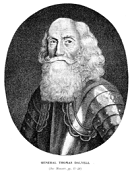
A Pentacle rising plus 666 = ? On Nov. 15, 1666 the Pentland Rising in the Pentland Hills of Lothian, N Scotland led by 900 die-hard Scottish Presbyterian Covenanters begins; on Nov. 2.6K die-hard Charles II supporters of the Scottish Royal Army led by Gen. Sir Thoms "Bloody Tam" Dalyell of the Binns, 1st Baronet (1615-85), "the Muscovite Devil" responds with a massacre at Rullion Green, killing 50+; Presbyterians are ruthlessly suppressed by court order beginning in Dec., and all legislation favoring Presbyterianism is repealed and the episcopacy restored (until 1689).
In 1671 the Kuruc Rebellion of Magyar nobles in Hungary and N Transylvania along with Hungarian Protestant peasants and Slavs against the Hapsburgs begins (ends 1711); they actually call themselves "bujdosok" (fugitives), and call the Austrians and their supporters "labancs".
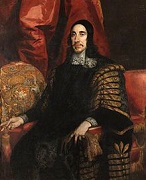
On Mar. 15, 1672 Charles II issues a Royal Declaration of Religious Indulgence; lord keeper of the great seal (since 1667) Sir Orlando Bridgeman, 1st Baronet of Great Lever (1606-74) resigns rather than apply the Great Seal to it; next year the Cavalier Parliament forces Charles II to withdraw it; Congregationalist minister John Bunyan is released from County Gaol, and becomes pastor of the independent congregation in Bedford.
Yes I'm the wanderer, yeah the wanderer? In Aug. 1672 the First Kuruc Uprising (Hung. "kuruc" = rebel or partisan not crusader) sees Protestant Hungarian Kuruc nobles led by Pal (Pál) Szepesi and Matyas (Mátyás) Szuhay stage a revolt against Hapsburg and Roman Catholic rule, invading Upper Hungary and taking several castles, incl. Tokaj, then defeating a Hapsburg army led by Paris von Spankau near Kosice (Kassa) in E Slovakia, after which the towns of Upper Hungary surrender and many disaffected Slovaks and Ruthenians join the revolt; too bad, they fall into looting and pillaging, allowing the Hapsburgs to regroup and defeat them on Oct. 26 at the Battle of Gyorke (Györke) and turn them into fugitives beyond the Tisza River, after which the Hapsburgs under HRE Leopold I eagerly begin persecuting Protestants.
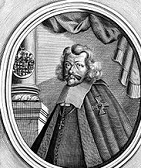
On Feb. 27, 1673 HRE Leopold I decides to deal with the pesky Kuruc Rebellion by suspending the Hungarian constitution and appointing Hungarian Teutonic Knights grandmaster #48 (1664-84) Baron Johan Caspar Ampringen (1619-84) as dictator (until 1684), who next year sentences 300 pastors to death, sells 67 more as galley slaves in Naples, and deprives 450 more of their livings, causing an outcry all over whackadoodle Protestant Europe, and making the rebels get more serious, seeking aid from Louis XIV of France, who decides to help them since he's in a war with the Hapsburgs anyway; too bad, he's a fair weather friend?
In 1675 the Hungarian Kurucs under Count Pal Wesselenyi (-1667) occupy Debrecen, after which the town is sacked 3x more before the end of the year by three more armies; meanwhile the Kurucs try to gain recognition as an independent country, sending envoys to Poland and France.
In May 1677 a treaty is signed in Warsaw between France, Poland, Transylvania, and the new Kuruc Community (Universitas); Louis XIV guarantees 100K tallers if they attack the Hapsburgs with a min. 15K-man army; in the fall a 2K-man French, Polish and Tartar army arrives in Upper Hungary to assist them, but never gets anywhere; meanwhile Hapsburg gen. Raimondo Montecuccoli draws up a plan to quash any remnants of Hungarian independence and move in German colonists, uttering the soundbyte "All Hungarians are traitors".
On Nov. 4, 1677 Protestant William II of Orange (b. 1650) (later William III of the U.K.) marries Protestant Princess Mary Stuart (b. 1662) (later Mary II), daughter of Catholic prince James Stuart, duke of York; she isn't too happy since he's 12 years older and 4 in. shorter, but both her daddy and king Charles II like the idea of an Anglo-Dutch alliance, and plans for her betrothal to the French dauphin fall through; too bad, Prince James just set himself up for an early retirement in 1688?

On Apr. 5, 1678 after the Hungarian Kurucs accept Transylvanian chancellor Count Mihaly Teleki (1634-90) as their leader and the Ottoman sultan gives Transylvanian prince Michael I Apafi leave on the condition that Hungary become part of the Ottoman Empire, Transylvania declares war on the Hapsburgs, with Polish and French backing, telling the people of Hungary to submit to the sultan "with a reasonable mind and sharp eye" (attempt to play both ends against the middle?); too bad, Teleki's army flees at the first sight of Hapsburg troops in Upper Hungary, although an 8K-man Kuruc army occupies Lower Hungary, while the Hungarians look for a new William Wallace, er, leader to emerge and help them throw off the Hapsburg yoke. In Aug. after Louis XIV promises aid, the Great Kuruc Rebellion (ends 1686) in Hungary against the Hapsburgs by Magyars, Slovaks, Ruthenians, and a few Romanians begins, led by Count Imre (Emeric) Thokoly (Tokolyi) (Tekely) (Turk. "goaty") (1657-1705), who occupies all E and C Slovakia, followed by all of Hungary, and kicks out the Haspsburg govt., getting all of the Kuruc troops to join him and declare him their leader.


On Sept. 6, 1678 the Popish Plot by Roman Catholics to massacre Protestants, burn London, and kill the king is alleged by rabid anti-Roman Catholic Anglican priest Titus Oates (1649-1705) (accused the year before of capital buggery as chaplain of the English naval ship Adventurer) (whose portrait bears a striking resemblance to comedian Jay Leno (1950-)?), who swears before who-killed-judge Sir Edmund Berry Godfrey (b. 1621) that he learned it by posing as a Jesuit; after the judge mysteriously disappears on Oct. 12 then is found strangled and run through with a sword on Oct. 17 on Primrose Hill, the crazies come out, and the Catholic Terror begins, with many leading Catholics put on trial, dozens executed, five Catholic lords sent to the Tower, and all Catholics excluded from both houses of Parliament by the Dec. Papists' Disabling Act (until 1829); on Nov. 5 mobs burn effigies of the pope instead of the usual Guy Fawkes; Charles II's childless wife Catherine of Braganza is accused of plotting to poison him and place her son James on the throne, but the king stands by her and gets her cleared; when James II gets on the throne, he gets Oates convicted of perjury in 1685, imprisoned, and sentenced to an annual pillory at Westminster Hall and other places, where he is whipped while the crowd pelts him with eggs; when William of Orange gets on the throne, he pardons and pensions him in 1689; meanwhile James Butler, 1st duke of Ormonde clamps down on Irish Roman Catholics, but his mildness and moderation causes his old enemies in England to raise a cry against him again.



On Feb. 2, 1685 "Merry Monarch" English king (since May 29, 1660) Charles II (b. 1630) (rumored to be a secret Roman Catholic despite running a debauched and immoral court and fathering 14 illegitimate children but no legitimate heir by his wife Catherine of Braganza) enters his last illness, asking for distilled human skull ("the King's Drops") as medicine; on Feb. 6 he dies a well-laid Roman Catholic after suffering a massive stroke while shaving, and his militant Roman Catholic brother James Stuart, duke of Albany and York succeeds (until 1688) to the throne of England and Wales as James II (1633-1701) (47th monarch and last Roman Catholic monarch of England), and the throne of Scotland as James VII (until Dec. 11, 1688); his followers are known as Tories; he soon passes laws to grant rights to Roman Catholics, and abolishes many anti-Irish laws, causing a simultaneous revolt in Scotland and England; Charles II's eldest illegitimate son (a true blue Protestant) (might have been legitimate via a secret marriage?) James Scott, 1st Duke of Monmouth (1649-85) lands at Lyme Regis in Dorsetshire, W England to raise a rebellion, proclaiming himself king, and is defeated on July 6 at the Battle of Sedgemoor in Somerset, captured and beheaded; the exiled duke of Argyll (Argyle) returns to Scotland to lead another rebellion, assisted by James II's son-in-law Prince William II of Orange, but is defeated and executed on June 30; James II tries to get his subjects to convert to Catholicism in vain, throwing the sop of toleration to Protestants, incl. Presbyterians in Scotland, ending the Killing Times (begun 1679); too bad, treason is treason, so he sends "Hanging Judge" Lord Chief Justice George Jeffreys, 1st Baron Jeffreys of Wem (1645-89) to conduct the Bloody Assizes against Monmouth's followers in S and W England starting on Aug. 25, 1685, which he does with ruthless disregard of the defendants' rights, sentencing 300+ to die and 800+ to penal transportation to the Am. colonies; one young man accused of uttering seditious words is sentenced to be "flogged through every market town in Dorsetshire every year" for seven years, and when the clerk of the arraigns objects, "My Lord, the prisoner is very young. There are many market towns in our county. The sentence amounts to whipping once a fortnight for seven years", Jeffreys replies, "If he is a young man, he is an old rogue" - the origin of the 20th cent. U.S. mandatory sentencing guidelines?

There is no such thing as a French Protestant, and that's that? On Oct. 22, 1685 the Edict of Fontainebleu by French Sun King Louis XIV revokes the 1598 Edict of Nantes, with the soundbyte: "His Majesty wishes the worst harshness on those who do not partake of his religion", instituting the idea of war secy. (1666-91) Francois-Michel le Tellier of the Dragonnades, obnoxious soldiers (dragoons) who are billeted to Huguenot households with a 007 license to harass and intimidate them, spurring a mass exodus from France, while 58K are forcibly converted to Roman Catholicism, causing 500K Huguenots to ignore prohibitions against emigration and emigrate to England (Spitalfields), Prussia (Brandenburg), the Netherlands, Switzerland, South Africa, and the English colonies in North Am. (N.Y., Mass., S.C.) to get away from the Sun King and his mandatory Roman Catholic faith; next Jan. 17 Louis XIV brags that only 1K-1.5K of 800K-900K Huguenots still remain in Sunny France; meanwhile on Oct. 29 the elector of Brandenburg sees his chance and issues the Potsdam Edict, offering Protestants refuge, causing French Huguenots to flock to Brandenburg, as well as others from the Netherlands, Bohemia, and Russia, pumping up the economy; the new Huguenots also boost the Dutch economy, pumping up William II of Orange; thousands settle in the Cevennes Mts. of S France and become known as the Camisards; the Protestants of Alsace obtain an exemption permitting freedom of worship; French Roman Catholic priest (since 1675) Francois de Salignac de Mothe-Fenelon (Mothe-Fénelon) (1651-1715), head (since 1678) of the Nouvelles Catholiques in Paris for female prospective converts to Roman Catholicism (since 1679

In 1686 French Jesuit orator Louis Bourdaloue (1632-1704) is sent by Louis XIV to Montpellier to convert the pesky Huguenots - just a Midas touch?
In 1686 Roman Catholics are readmitted to the English army - all four of them, as long as they don't speak French?
In 1686 James II appoints Roman Catholic Sir Edward Hales, 2nd Baronet (1626-84) as lt. of the Tower of London, who then prosecutes a collusionary test suit challenging the anti-papal laws, and wins, causing the king's popularity to 'ead to 'ades.
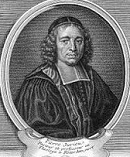
In 1686 French Huguenot pastor Pierre Jurieu (1637-1713), AKA "the Goliath of the Protestants" pub. The Fulfillment of the Prophets (L'Accomplissement des Propheties), which responds to the 1685 revocation of the Edict of Nantes by predicting the fall of the Antichrist (Pope) in 1689, stirring things up when the 1688 Glorious Rev. in England seems to be proving him right?;
On Feb. 12, 1687 (Scotland) and Apr. 4 (England), 1687 James II of England issues his Declaration of Indulgence (Declaration for Liberty of Conscience), granting liberty to all denominations in England and Scotland, esp. his own Roman Catholicism, suspending penal laws enforcing conformity to the Church of England, and permitting persons to worship in homes or chapels as they see fit, ending the requiring for religious oaths for govt. office, permitting non-Anglicans a little breathing room in merry Britain.


In 1687 James II receives the papal nuncio, pissing-off the Protestant pop.; he creates his French-born illegitimate son (by Arabella Churchill, sister of the 1st Duke of Marlborough) James FitzJames (1670-1734) as duke of Berwick, and he goes on to become one of the top military strategists of his day; he appoints his brother-in-law Richard Talbot, 1st Earl of Tyrconnell (1630-91) as viceroy of Ireland, reversing Charles II's pro-Protestant policy and advancing Roman Catholics to state positions and giving them control of the militia, causing the Roman Catholic pop. to fall in love with him; when Tyrconnell tries to garrison some Catholic troops in Protestant-dominated Derry, the Young Apprentice Boys shut the gates to them.

Help us choose a family pet, a python, a beagle, or a goat, where's the goat? On June 10, 1688 James II and his 2nd wife Mary Beatrice of Modena surprise everybody by bearing son and heir James Francis Edward Stuart (1688-1766), pissing-off the Protestants since they know he's going to be brought up Roman Catholic, causing them to plot the king's abdication in favor of his Protestant daughter Princess Mary and her Protestant hubby Prince William of Orange, claiming the baby was smuggled into tho the nursery in a warming pan after the real one is stillborn; meanwhile on June 29-30 the Trial of the Seven Bishops ends in their acquittal on the morning of June 30, beginning England's bloodless Glorious (Bloodless) Rev., when in the afternoon of June 30 (Wed.) after viewing scenes of public celebration, the "Immortal Seven" (eminent English leaders both Tory and Whig, representing a broad cross-section to convince them it's for real) send the Letter of Invitation (their names signed in two-digit codes as 24, 25, 27, 29, 31, 33, 35) to the king's son-in-law, the very PC (Protestant Continually) William III of Orange (1650-1702) (stadholder of the Netherlands since 1672) (son of Duke William II and Princess Mary Stewart, daughter of Charles I) and his equally PC wife Mary Stuart (1662-94) (James II's daughter by first wife Anne Hyde, and sister of Princess Anne) (4 in. taller than him and 12 years younger, who has gone from a young, slim, sweet-16 bitchin' babe on their honeymoon to a big-boned manly woman with a double chin by now?) to save England from Roman Catholic tyranny, which they accept on Sept. 30; on Oct. 22 James II summons the privy council to hear witnesses present at the birth attesting to its legitimacy, which doesn't satisfy his enemies, but gves William of Orange an excuse for invastion to insure a proper investigation; on Nov. 5 William lands in the health resort of Brixham in Torbay (Tor Bay) in South Devon, 23 mi. S of Exeter and 220 mi. SW of London, then travel to London, reaching it in Dec., causing James II to send the queen and infant prince James to France on Dec. 10 then flee on Dec. 11 before William arrives, taking a rowboat down the Thames River and throwing the Great Seal of England into the river to ensure that his enemies can't use it to forge an abdication document; meanwhile on Dec. 11 anti-Catholic mobs romp in London, burning chapels and attacking the homes of ambassadors from Catholic states; on Dec. 12 a provisional govt. is set up in London, and James is caught and brought back to London, but he escapes and makes it to France on Dec. 22; on Dec. 19 William triumphantly enters London, ending the Glorious Rev.; Princess Anne of Denmark (future Queen Anne), a devout Anglican deserts her father James' cause, fleeing to Nottingham, causing James to blame her and her Protestant sister Mary for losing his throne, and leaving her with guilt feelings for life; meanwhile the Nonjuring Schism sees the Anglican churches split over accepting William as regent or king, with the latitudinarian clergy going for king, and the nonjuring clergy going with regent, ending up as nominal Jacobites after the latitudinarian Anglicans gain control of the Church of England, and the Presbyterians gain control of the Church (Kirk) of Scotland.

On July 19, 1702 (July 8 Old Style) the Battle of Kliszow (Klissow) (Klezow) is a V for Charles II of Sweden against Saxon field marshal Adam Heinrich von Steinau (-1712), sparking the popular romantic Camisard Rebellion (ends 1704) against Louis XIV by anti-papal Huguenot peasants in Languedoc pissed-off by the 1685 revocation of the Edict of Nantes, led by able military leader Jean Cavalier (1681-1740) in the mountainous Cevennes (Cévennes) region of S France (home of the descendants of the Visigoths), wearing black camisards (Fr. "chemise") smocks over their armor that give them their name, engaging in guerrilla (mainly night) warfare against royal troops, burning Roman Catholic churches and killing priests, causing the Catholics to fight back a little too eagerly, razing over 450 villages and exterminating the pop., while Pope Clement XI eggs them on with a papal bull, calling them the "execrable race of the ancient Albigenses", and promising remission of sins to the newly-formed Roman Catholic Cadets of the Cross (White Camisards) (Florentines). On Apr. 16, 1704 1K Huguenot Camisards under Jean Cavalier are defeated by 5K French troops under Marshal Montrevel at the Battle of Nages Bridge, after which a peace conference is held on May 11-16 at Pont d'Avne near Alais, and the Camisards surrender under honorable terms, with Louis XIV agreeing to give them amnesty and restore their property and partially restore their civil rights (right of assembly outside walled towns) in return for swearing allegiance to the French crown; too bad he will not let them build their own churches or restore the Edict of Nantes, causing most of them to continue the struggle another year, although leader Jean Cavalier caves in and is made a French col. with a pension, with his Camisards organized into a regiment under his command for service in Spain; too bad, the Huguenots think he sold them out and turn on him, causing him to flee from Nimes to Neu-Brisach, Alsace with his last 100 followers, then to Paris, where he tries in vain to get Louis XIV to budge, then flees to Lausanne, Switzerland, where he forms a Camisard refugee regiment, fighting for any enemy of the Frogs that will have them.
In 1703 the Popery (Gavelkind) Act is passed by the British Parliament, modifying the Irish practice of Gavelkind (equal division of land among a dead landholder's sons, also used by the Jutes in Kent), giving all the land to the eldest son if he converts to Protestantism; land holdings by Irish Catholics shrink from 25% in 1688 to 14% in 1704 to 5% in 1776.
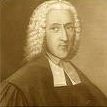
In 1721 Norwegian Lutheran missionary Hans Egede (1686-1758) sails in the ship The Hope from Norway to Greenland to convert Norse farmers, becoming the first new European in Greenland in 200 years; too bad, the Inuits tell him that there are no Norse there anymore, showing him crumling stone church walls, causing the mystery of their disappearance to arise, which isn't solved until ? (the Little Ice Age?); he goes on to found Godthab (Nuuk) on the W coast, establishing trade with Denmark and beginning missionary work among the Skraelings, er, Inuit, becoming known as "the Apostle of Greenland".

In 1721 Breslau, Silesian-born German mathematician-philosopher Christian Wolff (1679-1754) of the U. of Halle, a disciple of Gottfried Leibnitz known for ditching Latin for German gives the lecture "On the Practical Philosophy of the Chinese", citing the moral axioms of Confucius as proof that human reason can attain moral truth by its own efforts without Biblical revelation, pissing-off the religious (mainly Pietist) faculty; on July 12, 1723 Wolff gives another lecture comparing Moses, Christ, Mohammad, and Confucius, which attracts 1K students, pissing-off the Pietists, who convince Frederick William I that Wolff's determinism would ruin military discipline, causing him to be banished to Prussia for atheism and fatalism, where he teaches at the U. of Marburg in Hesse-Cassel until 1740, when Frederick II the Great recalls him and makes him a celeb, getting him promoted to chancellor of the U. of Halle in 1743.
In 1724 France issues a decree against the Reformed (Protestant) Church, prohibiting it from holding secret exercises; a price is put on the head of reformer Antoine Court (d. 1760), causing him to flee to Lausanne in 1730 and found a seminary, which he runs for life. Gin drinking becomes popular in Great Britain.

In 1725 Am. Enlightenment brain man Benjamin Franklin (1706-90) pub. A Dissertation on Liberty and Necessity, Pleasure and Pain, a critique of William Wollaston's "The Religion of Nature Delineated", claiming to disprove free will, immortality, and Calvinist salvation-damnation by starting with the theorem: "What He [God] consents to must be good, because He is good; therefore evil does not exist"; he is later embarrassed by it.

Some things you just can't copy, except your own birth? Born once, die twice, born twice, die once? In spring 1738 George Whitefield visits British Am., starting in Ga., where he converts Anglican priests John Wesley and Charles Wesley, both of whom have religious experiences on May 24; in Dec. Whitefield launches the First Great Awakening in Mass. (ends 1755); his disciple Jonathan Edwards (1703-58) stages a mini spiritual awakening in Northampton, Mass. this year and next; Whitefield becomes the first speaker to speak in all 13 Am. colonies.


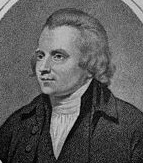


On Feb. 28, 1784 John Wesley (1703-91) (picking a good time for it, since what American would want to continue with the church headed by King George III?) issues the Deed of Declaration in Baltimore, Md., establishing Methodism as a separate denomination from the Anglicans under the name Methodist Episcopal Church (until 1939), with leaders designated by Wesley, incl. bishop Francis Asbury (1745-1816) and itinerant evangelist Charles Atmore (1759-1826); freed slave Richard Allen (1760-1831) is ordained at the first conference of the church, but after experiencing racial prejudice he decides to form a separate Methodist Free African Society in Apr. 1787, followed in 1792 by the African Episcopal Church of St. Thomas in Philly, the first black Episcopal church in the U.S., which in 1816 becomes the African Methodist Episcopal Church; on Nov. 24 Samuel Seabury (1729-96) of Conn. becomes the first Am. Anglican (Episcopal) bishop consecrated by Scottish bishops; meanwhile Britain appoints the first Anglican bishop for the British colonies.
About 1790 the Second Great Awakening begins in the U.S., ramping up about 1800 and peaking in the 1820s, increasing membership in Baptist and Methodist congregations by millions before fizzling by 1840; in 1817-25 the burned-over district of W. N.Y. between the Erie Canal and the Finger Lakes incl. Palmyra, N.Y. area hosts several camp revival meetings, and 12-y.-o. Joseph Smith Jr. (1805-44) gets religion, attending church classes and reading the Bible, getting interested in Methodism and engaging in religious folk magic with family members incl. parents and maternal grandfather, who report visions and dreams from God; Smith's education never incl. history, philosophy, lit., or science, just the Bible and popular historical moose hockey?; the burned-over district goes on to spawn religious nonconformist sects. incl. Latter Day Saints, Millerites, Adventists, Internat. Bible Students (Jehovah's Witnesses), the table-rapping Fox Sisters, Shakers, and Oneida Society, and social radicals incl. Elizabeth Cady Stanton, the Fourierist utopian Socialist movement, the Skaneateles Community, and Walter Rauschenbusch, leader of the Social Gospel.
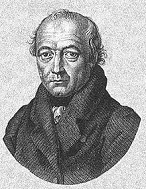
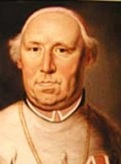
In 1799 after being driven from Bavaria, German Roman Catholic theologian Martin Boos (1762-1825), whose pietistic beliefs border on Lutheranism settles in Linz, Austria, where he is protected by Bishop Gall until his 1812 death, after which new bishop of Linz (1809-25) Sigismund Ernst Hohenwart (1745-1825) begins persecuting him and his followers.
On Apr. 8, 1802 the Organic Articles for Protestants, written by French religion minister Jean-Etienne Marie Portalis (1746-1807) at Napoleon's direction divides the French Calvinist community into 6K-person congregations led by a pastor and elders chosen from the taxpayers; Lutheran churches are governed by directories, the majority of which are selected by the consul, which has the power to veto clerical appointments and changes in church doctrine; by 1804 Protestant pastors get govt. salaries; a Calvinist revival begins in Napoleonic France; meanwhile "Jews should participate as equals, like all other religions as permitted by our laws" (Portalis).
On Mar. 21, 1804 the French civil Code Napoleon (Napoleonic Code) (Code Civil des Francais) is proclaimed by Napoleon I, giving religious freedom to the 480K Calvinists and 200K Lutherans in France, with the state paying the salaries of the pastors.
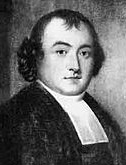
In 1811 the Great Schism of Welsh Protestants, led by Rev. Thomas Charles (1755-1814) sees two-thirds leave the Anglican Church, leading to the founding of the Presbyterian (Calvinistic Methodist) Church of Wales in 1823 - God's been good to me?
About 1850 the Third Great Awakening allegedly begins in the U.S. (ends 1900), based on the postmillennial belief in the Second Coming of Christ and fueled by the Social Gospel Movement, spawning the Holiness Movement, the Nazarene Movement, and Christian Science.

In 1853 Scottish Free Church minister Alexander Hislop (1807-65) pub. The Two Babylons, Or The Papal Worship Proved to Be the Worship of Nimrod and His Wife in Edinburgh, rocking the house with his apparently well-documented thesis that Roman Catholicism is based on Babylonian Paganism ultimately tracing back to the worship of Nimrod, that the Roman Catholic Church is the Whore of Babylon in the Bible Book of Revelation 17:5, and "the Pope himself is truly and properly the lineal representative of Belshazzar"; the Christogram IHS = Isis, Horus, Seth?; becomes a hit with Protestants, who want to discard the pagan baggage, and with New Agers, who want to discard the Christianity and embrace the pagan baggage; too bad, the scholarship is full of holes, although the thesis as a whole seems on the right track?
In this decade the Fourth Great Awakening allegedly begins in the U.S. (ends 1980), seeing mainline Protestant denominations weakening sharply, while the most conservative denominations incl. the Southern Baptists and Missouri Synod Lutherans and evangelical and fundamentalists expand; meanwhile all battle a rise in secularism incl. abortion and gay rights, fighting back with Creationism et al., led by the Southern Baptist Conservative Resurgence.
On Oct. 30, 1961 the Recruitment Agreement Between the Federal Republic of Germany and Turkey is signed, permitting unmarried male Muslim Turks to work in West Germany for two years, a limitation that is removed in 1964, causing 750K Turks to emigrate to Germany, half of which never return; after the oil crisis of 1973-4 the program is closed, but the men import their wives and start having children, causing the Turkish pop. in Germany to rise to 2.5M by 2011, 3.8M-4.3M by 2010, and 4M-5M by 2016 (5% of the pop.).

1966 is the biggest Millennium Fever (MF) year in the 20th cent., featuring the hit film Rosemary's Baby (which actually debuts on June 12, 1968), proving that Hollyweird can make money on anything; a new Death of God Theology rocks Protestant churches even more than the Secular Theology of the early 1960s. On Mar. 23, 1966 English Canterbury archbishop (1961-74) Arthur Michael Ramsey (1904-88) visits Pope Paul VI as a first step in reconciling their churches - are Catherine of Aragon's descendants still mad at us?
In 1966 the Am. Bible Society pub. the bestseller Good News for Modern Man: The New Testament in Today's English, which sells 30M copies by 1971, spawning the Jesus Freaks mass movement in the U.S. (ends mid-1970s); the Old Testament pub. in 1976.

In 1972 New York City-born Calvinish theologian Rousas John Rushdoony (1916-2001) (son of Armenian immigrants fleeing the 1915 Armenian Genocide) pub. The Institutes of Biblical Law (3 vols.) (title is a takeoff on Calvin's "Insitutes of the Christian Religion"), his magnus opus, founding Christian Reconstructionism, arguing for a new society (theonomy) built on retro Christian principles of Calvin and the Bible that restore grim Mosaic Law incl. the death penalty for incest, adultery, homosexuality, blasphemy, witchcraft, idolatry, apostasy, even striking one's parents; "The heresy of democracy has since then worked havoc in church and state... Christianity and democracy are inevitably enemies"; "Christianity is completely and radically anti-democratic; it is committed to spiritual aristocracy"; [Democracy is "the great love of the failures and cowards of life"; in 1965 he founded the Chalcedon Foundation think tank that spawns and supports the political aspirations of the New Christian Right incl. Jerry Falwell, Pat Robertson et al.
On Nov. 10, 2013 the Brave German Woman Heidi Mund confronts a Muslim imam invited to give the Islamic call to prayer inside the Memorial Church of the Reformation in Speyer, Germany, uttering Martin Luther's famous 1521 statement: "Here I stand. I can do no other", along with "Save the church of Martin Luther", proclaiming that Jesus Christ is Lord over Germany; she is thrown out of the church to allow him to continue.
On Oct. 31, 2016 (499th anniv. of Martin Luther's Nailing of the 95 Theses to the Church Door in Wittenberg) Pope Francis and Lutheran World Federation pres. Mounib Younan sign a concordat calling for a dialogue to pursue full unity - reunion, or sell-out to Satan?
On Apr. 9, 2018 prominent Dutch Roman Catholics pub. a petition to their bishops to warn Pope Francis about his "serious errors" against the faith and his "destructive polities", incl. adulterous couples to receive Communion, support for female deacons, married priests, and contraception, praise for Martin Luther, and deals with the Red Chinese to recognize their atheist Catholic Patriotic Assoc.